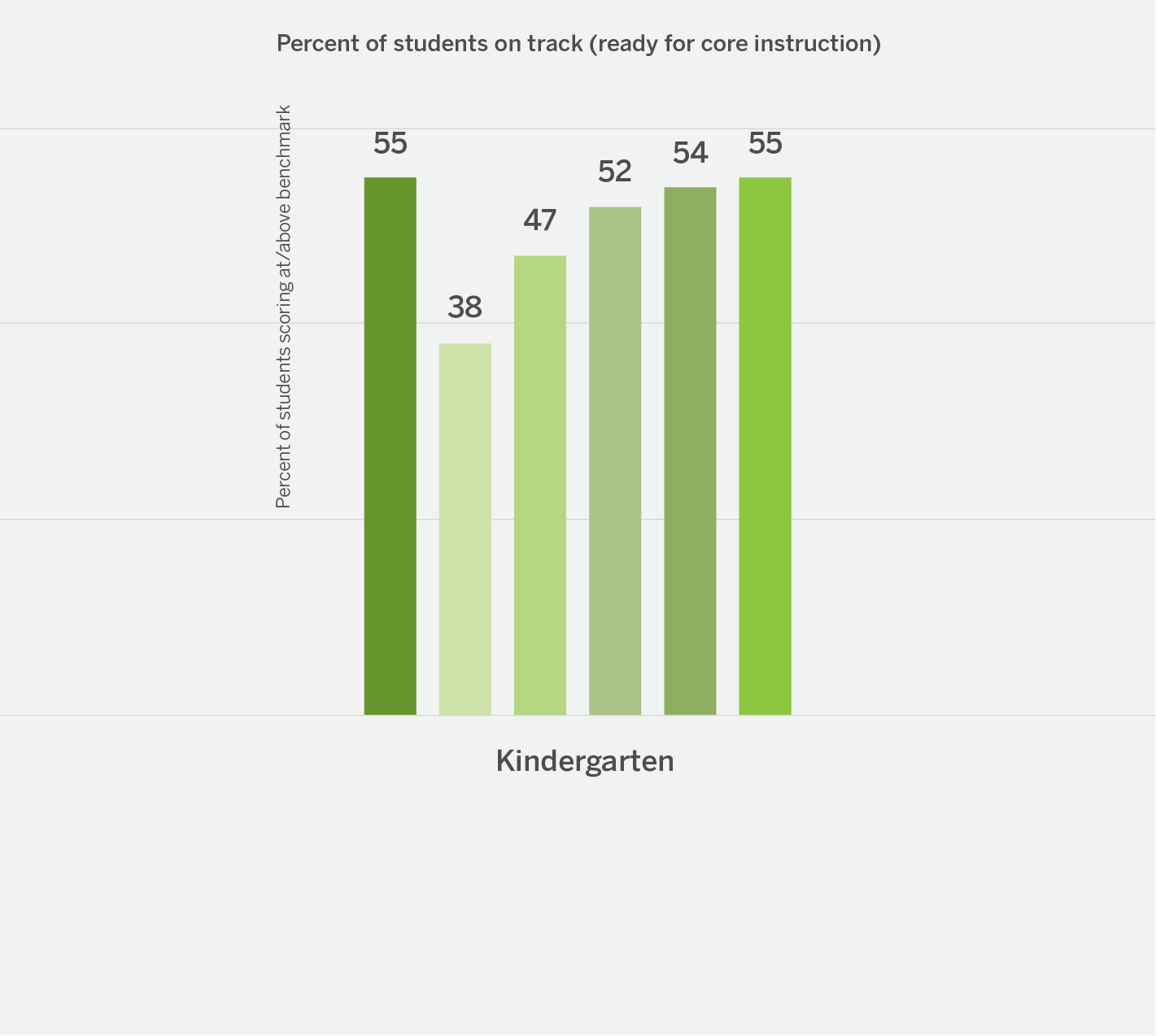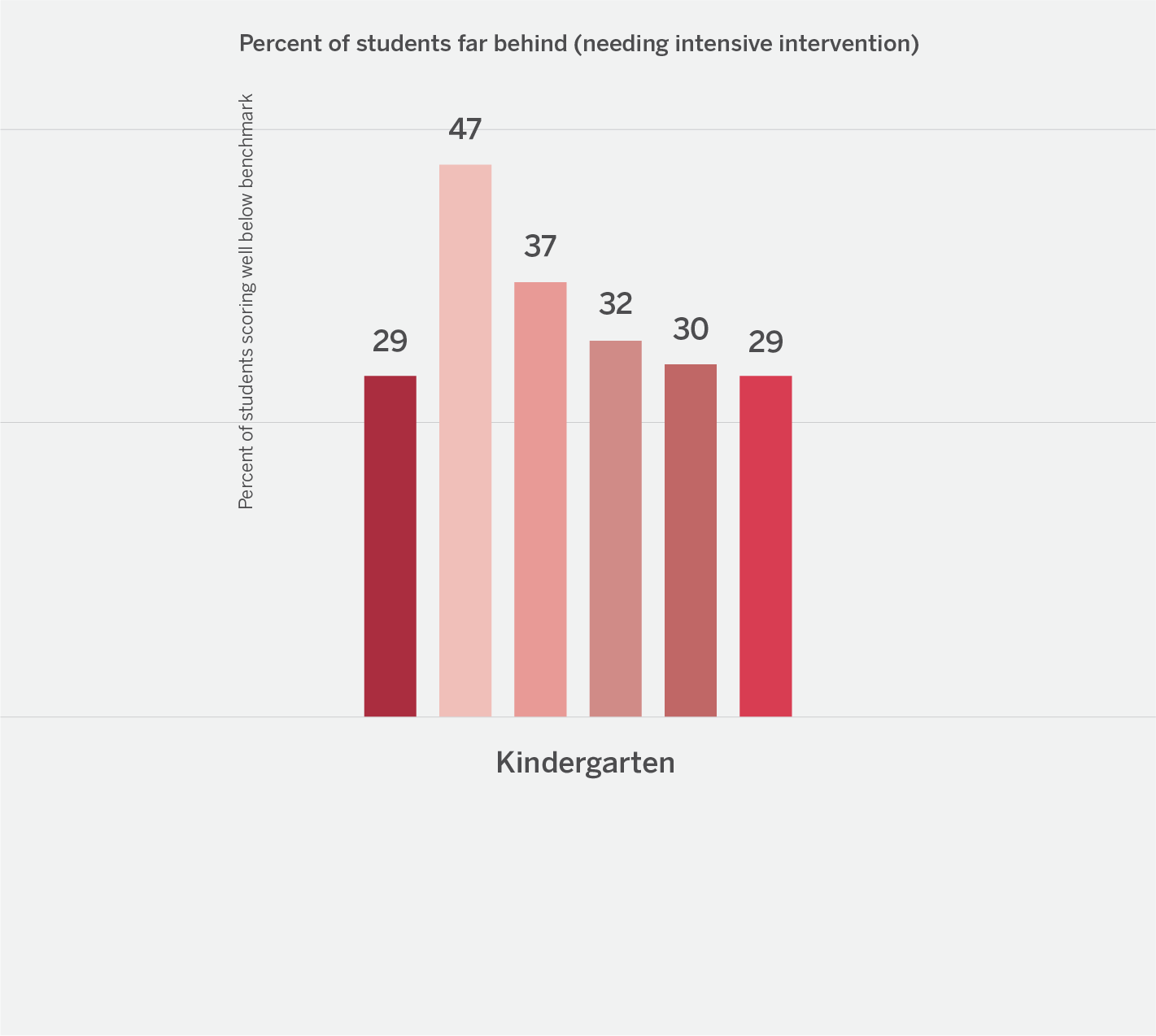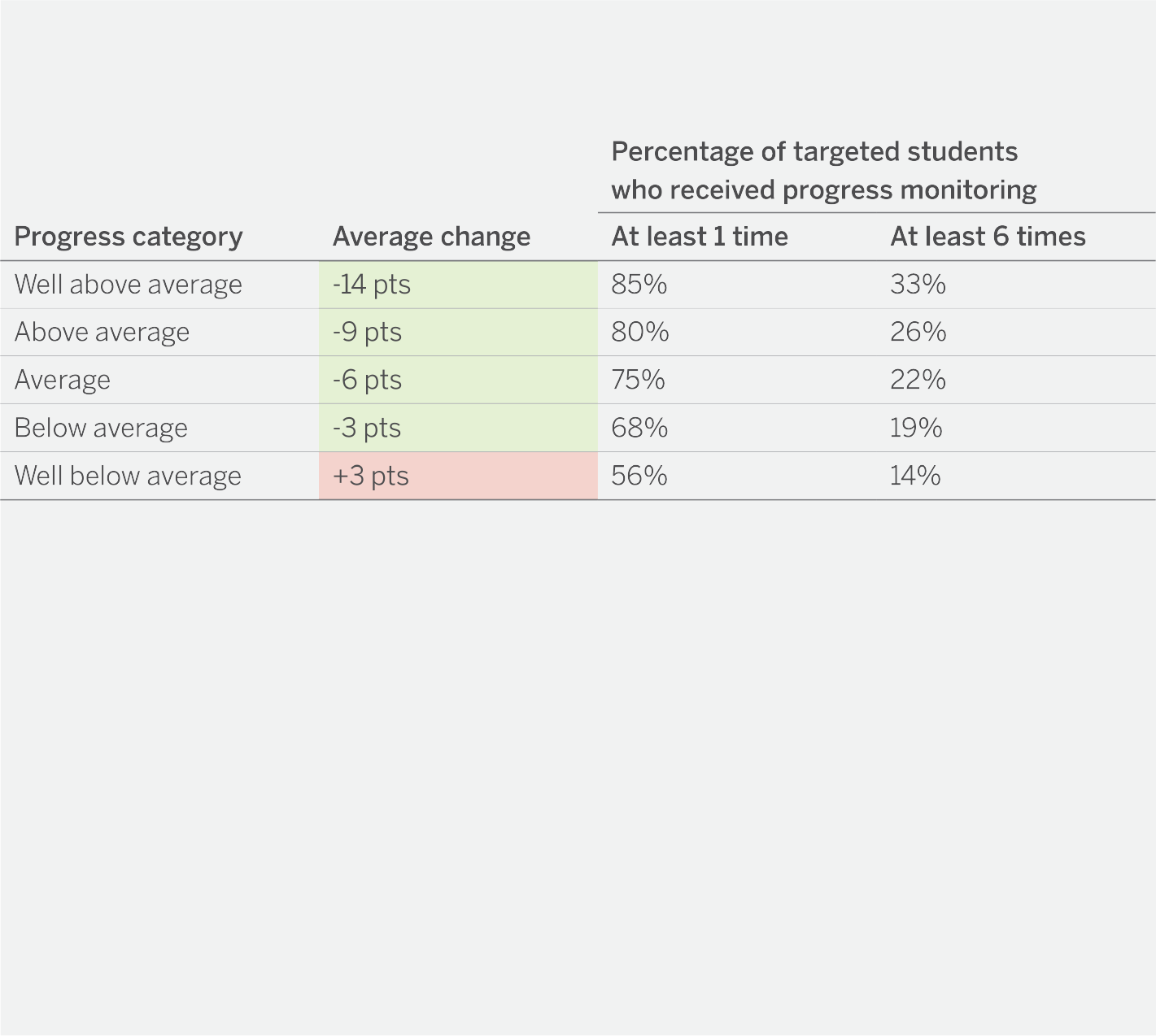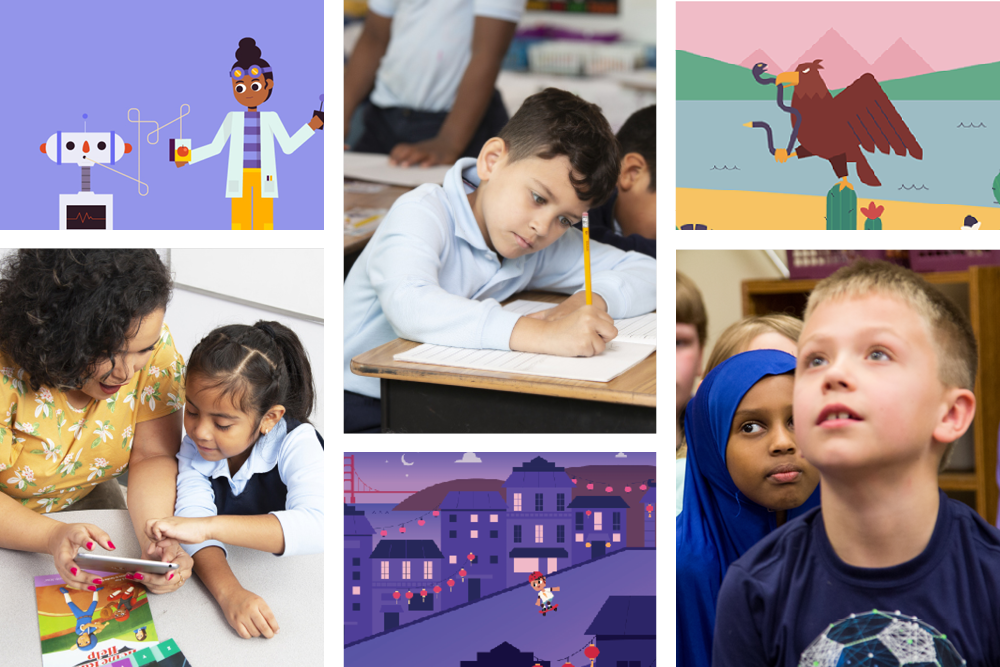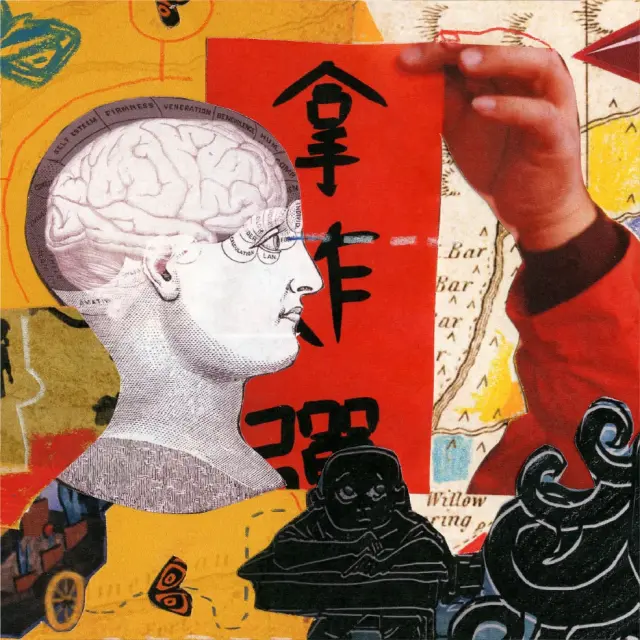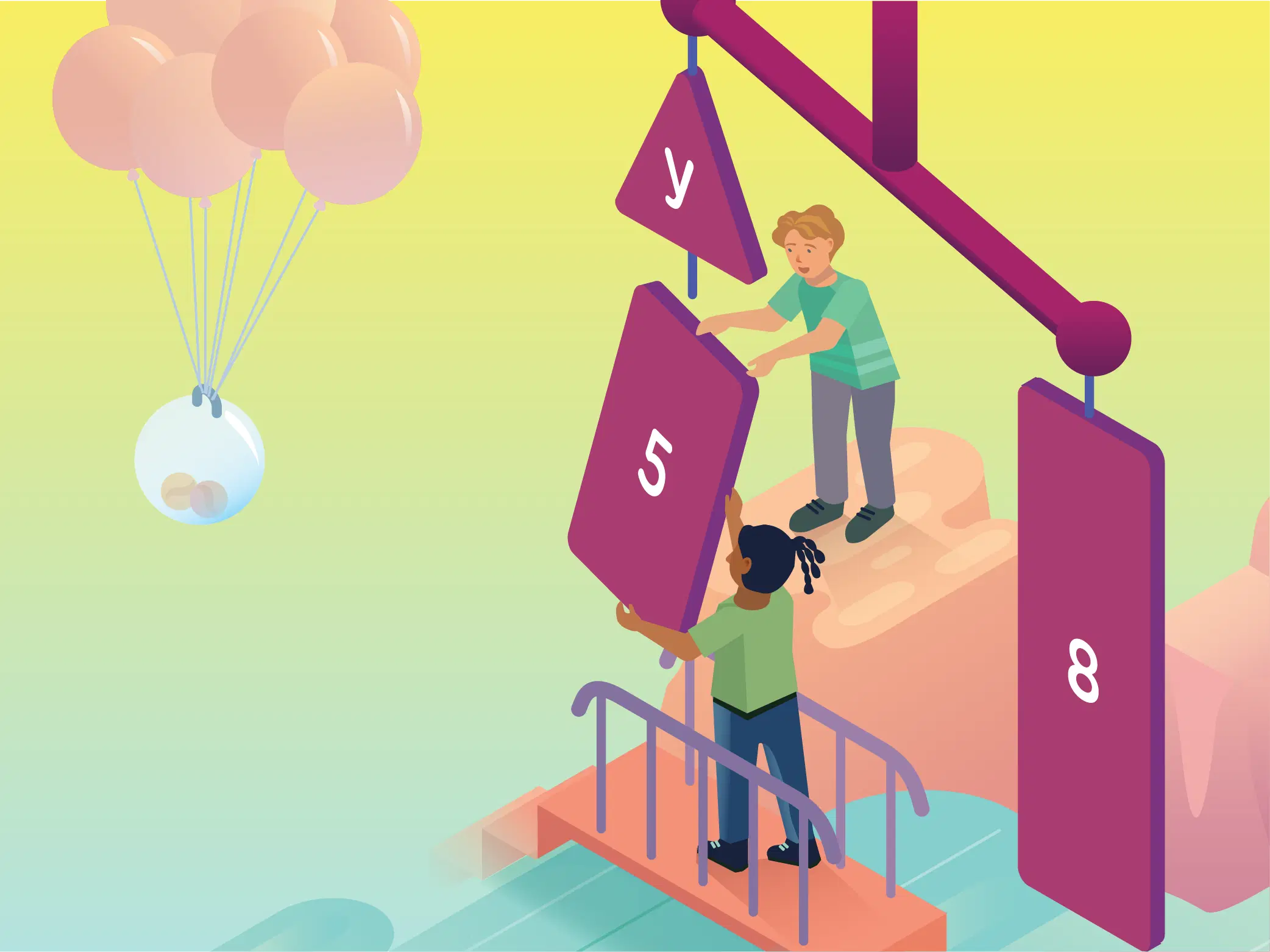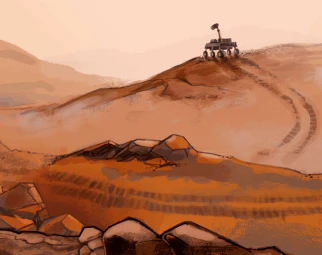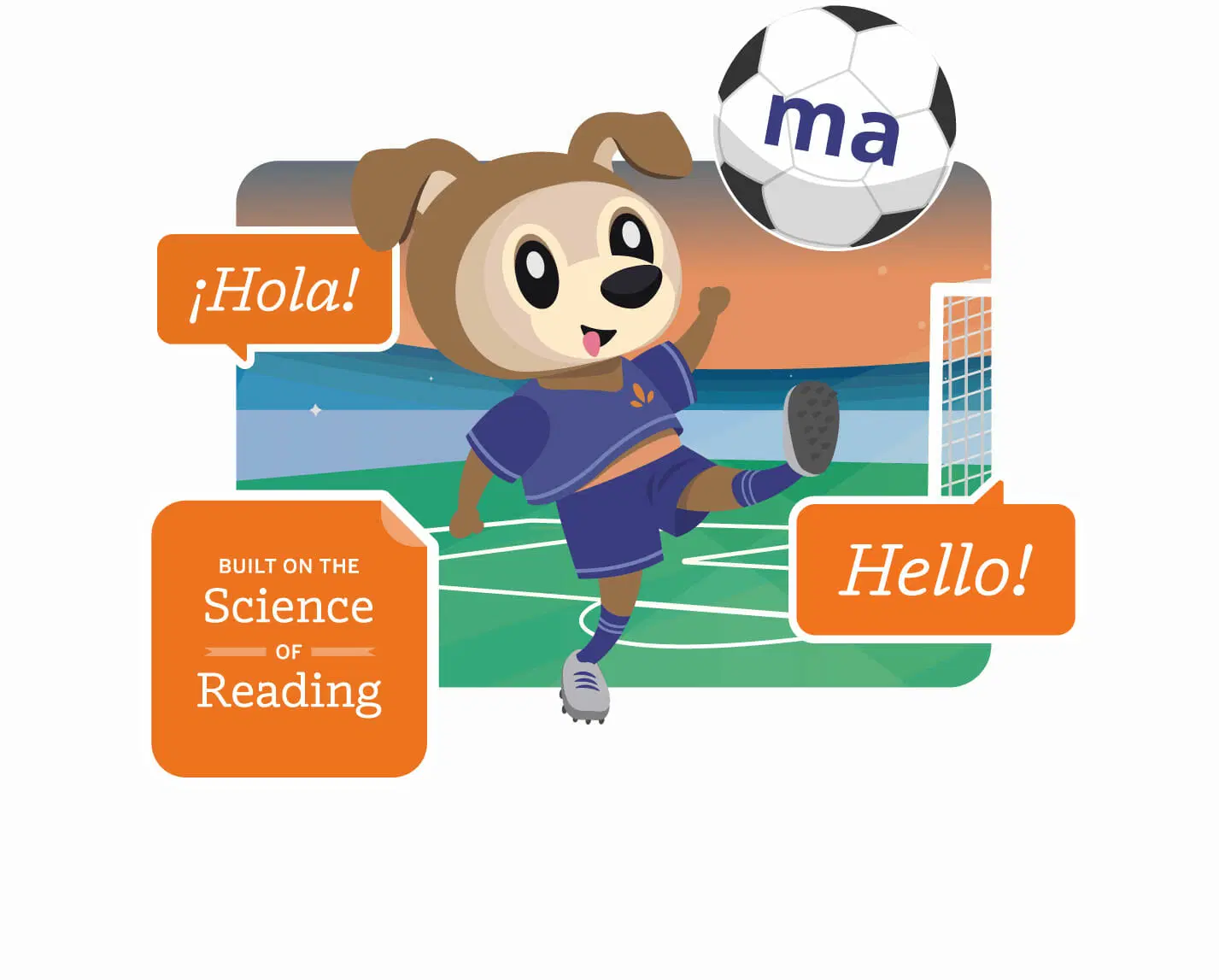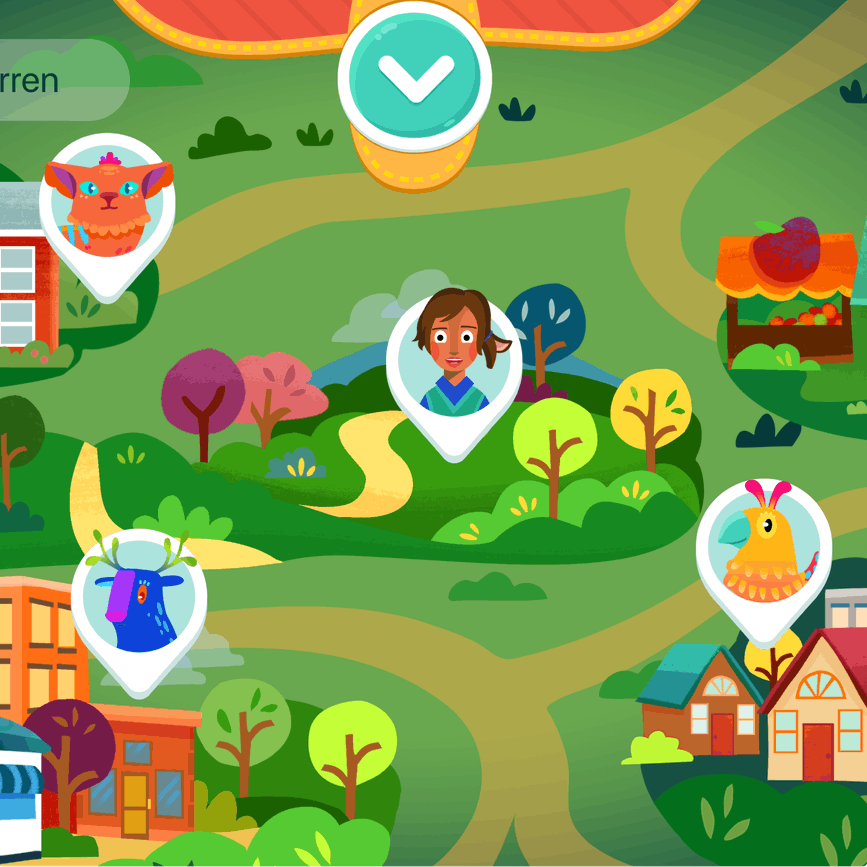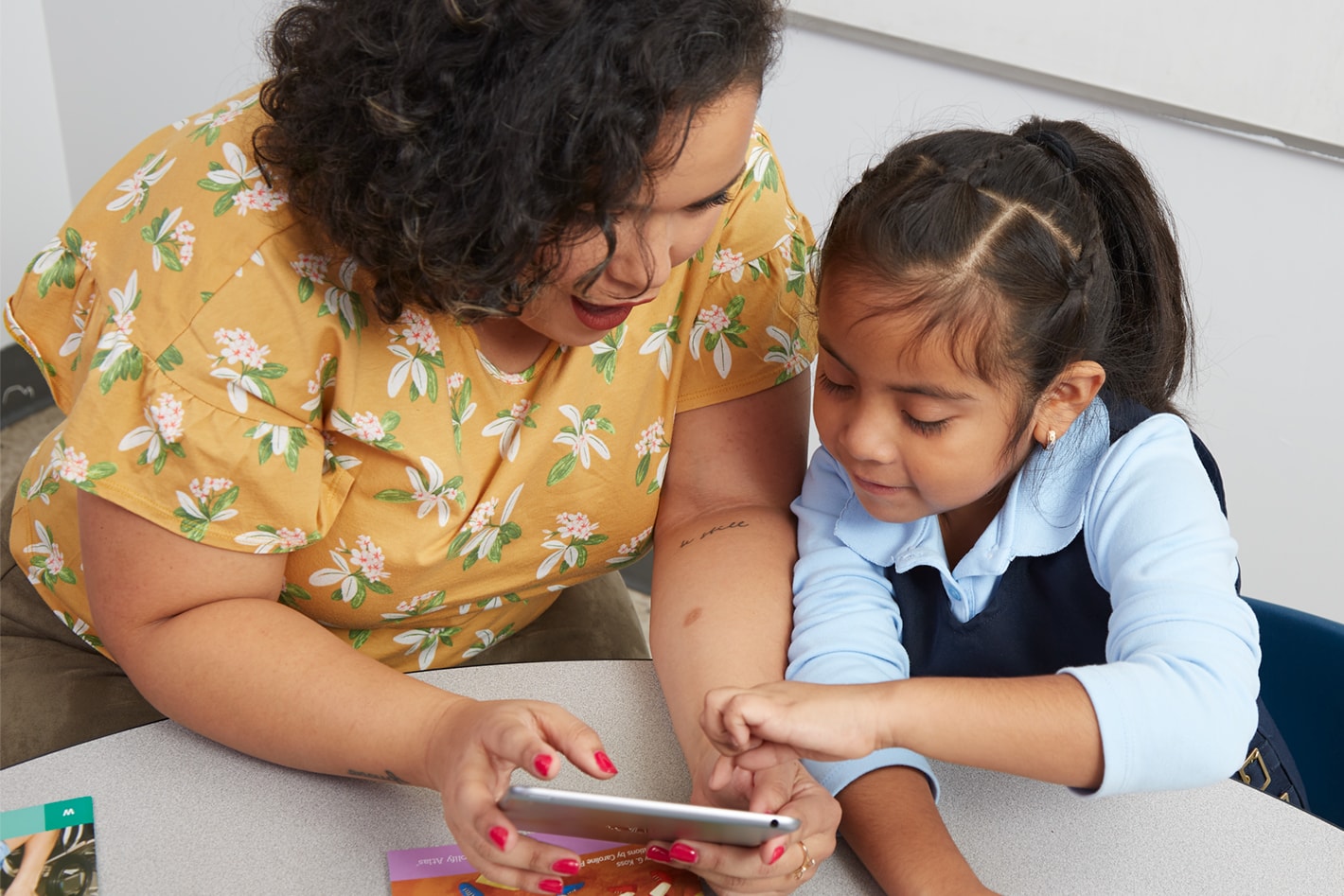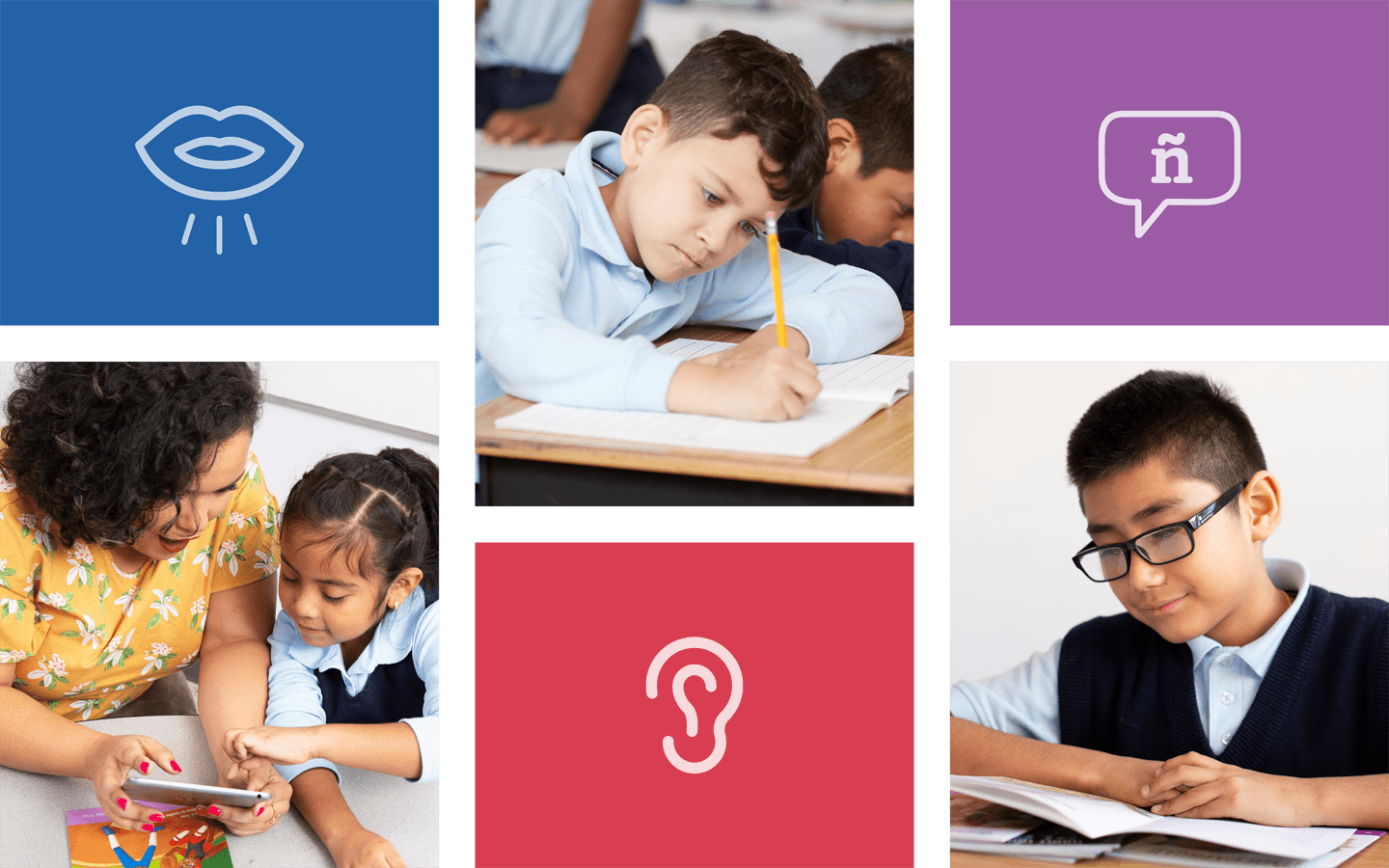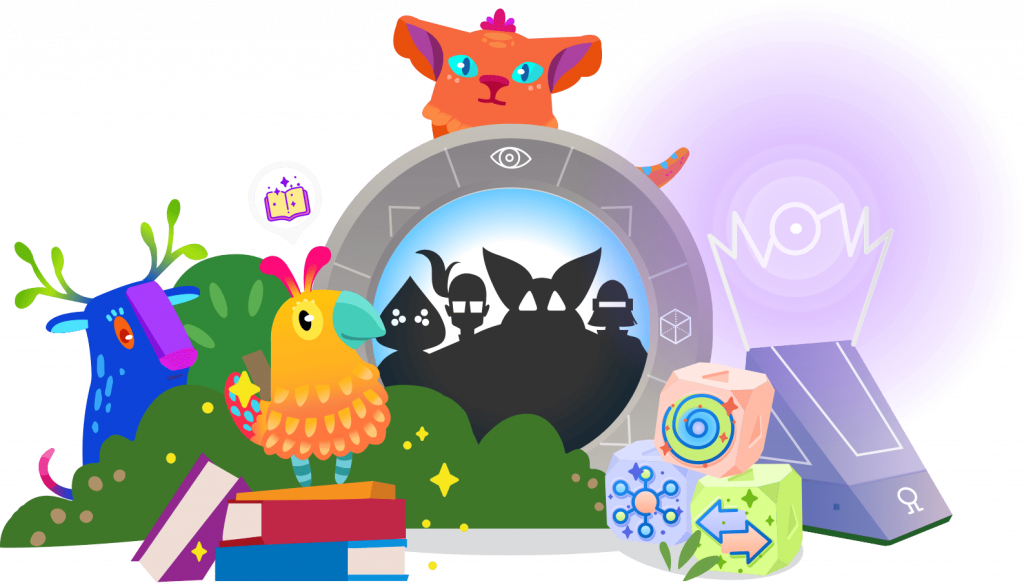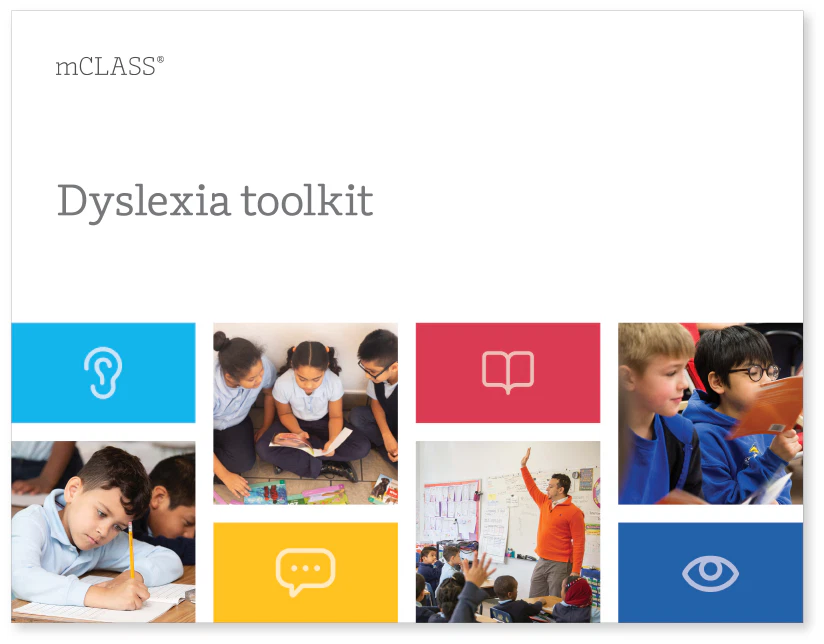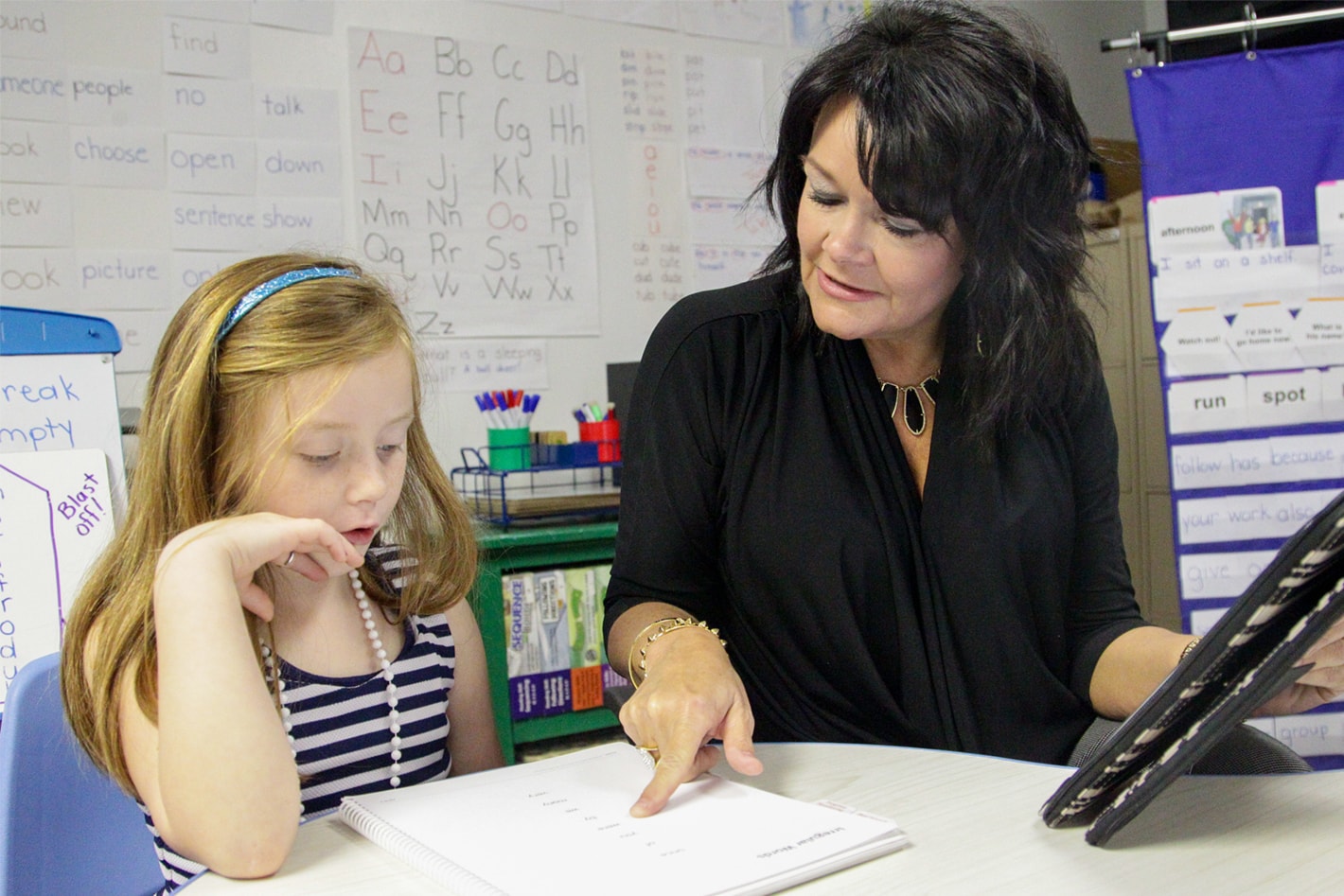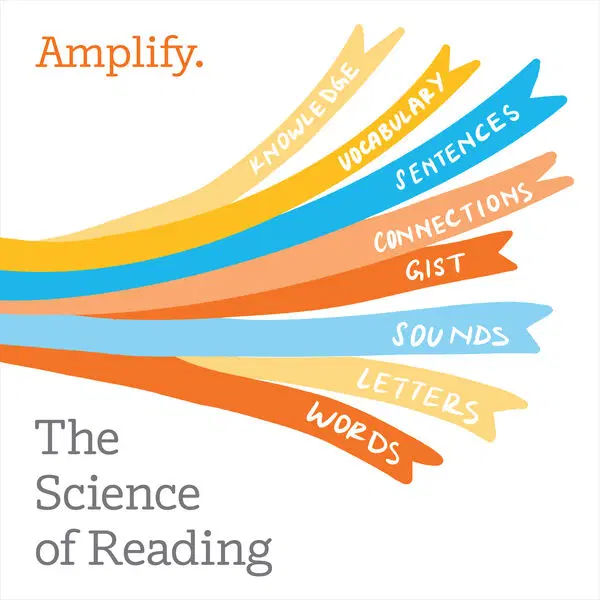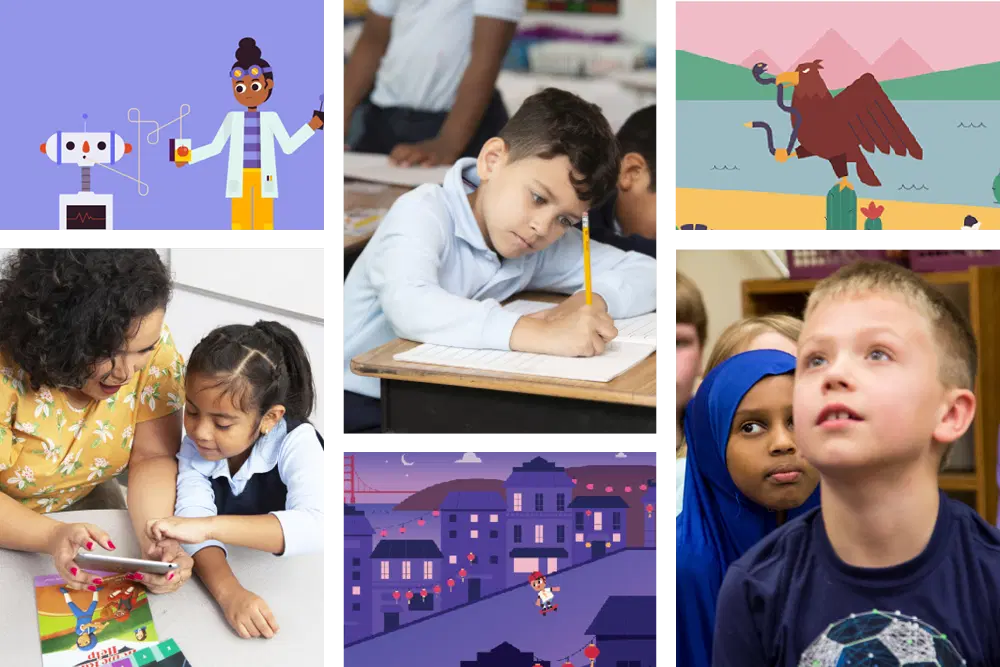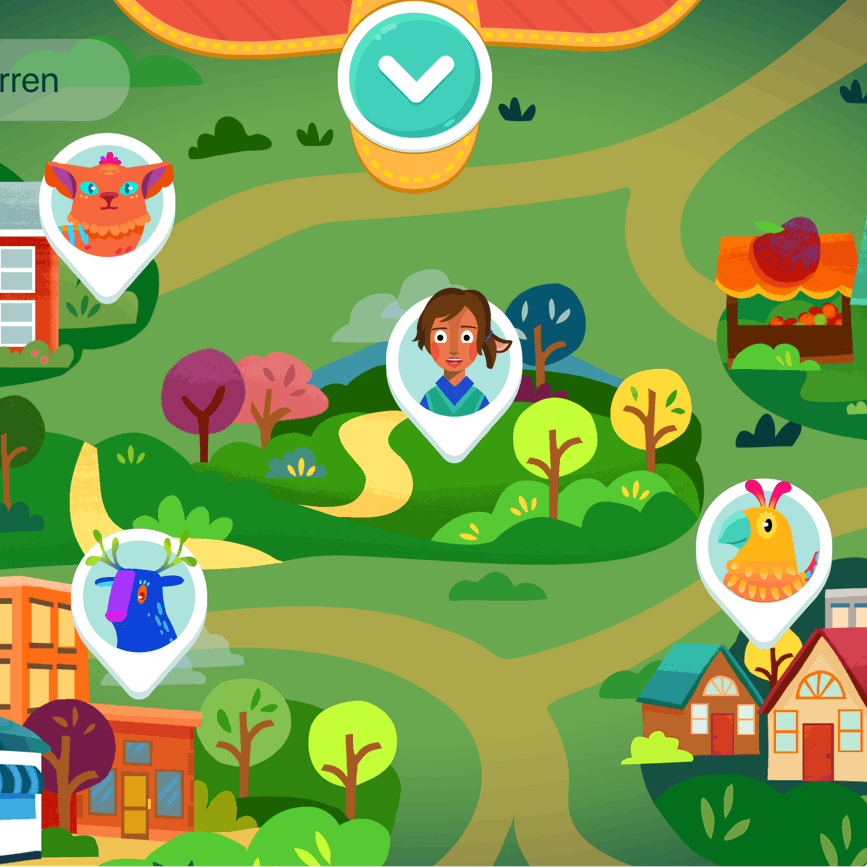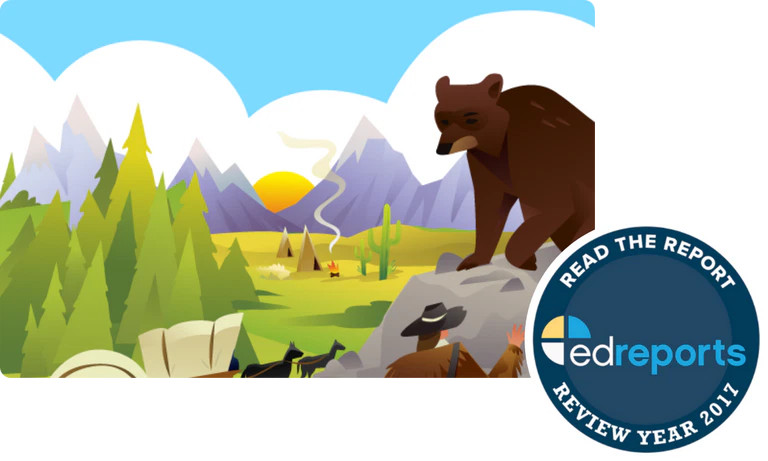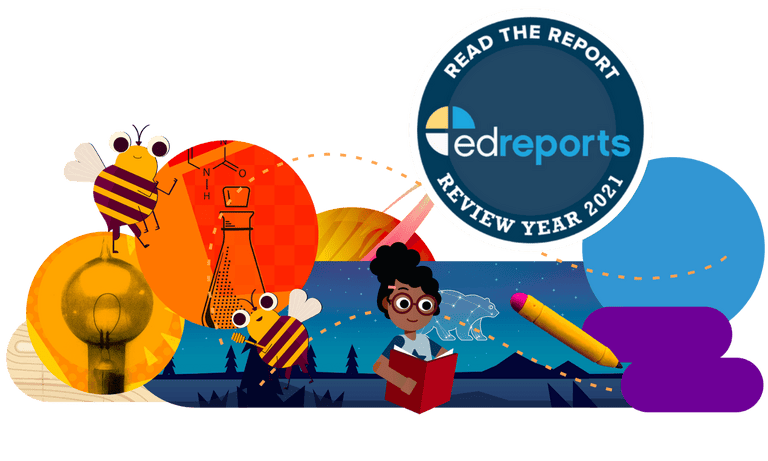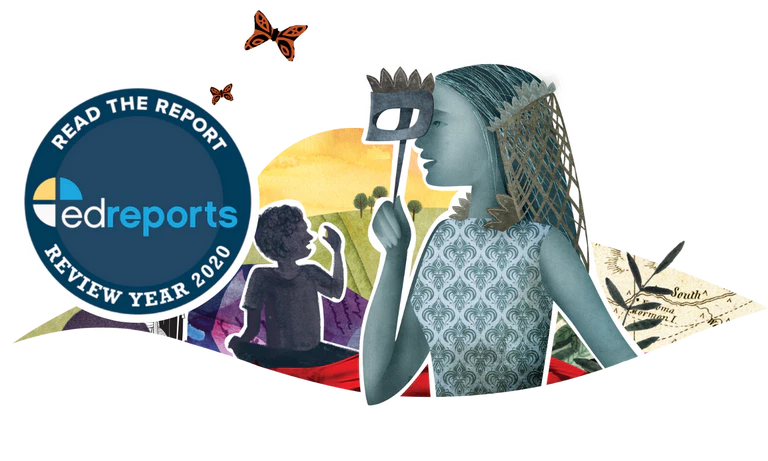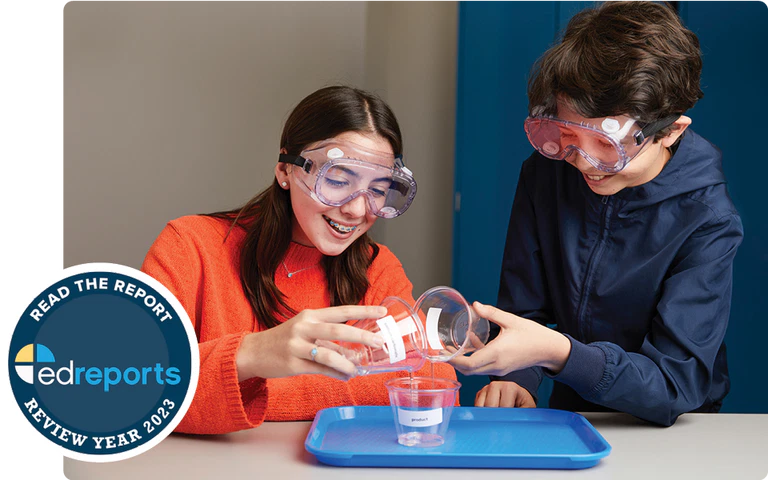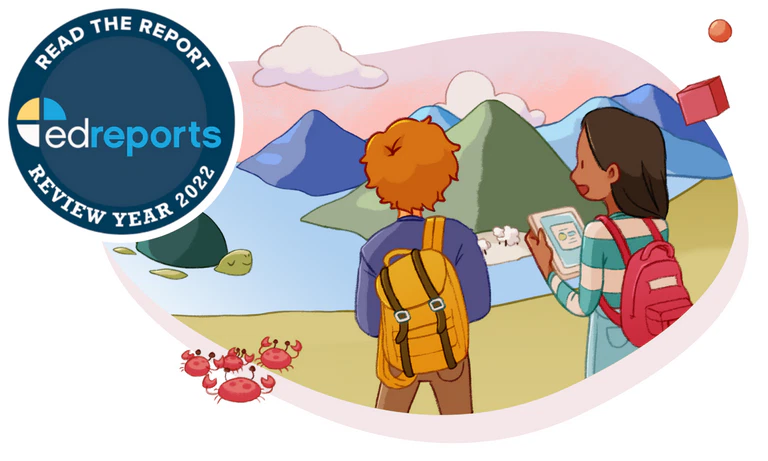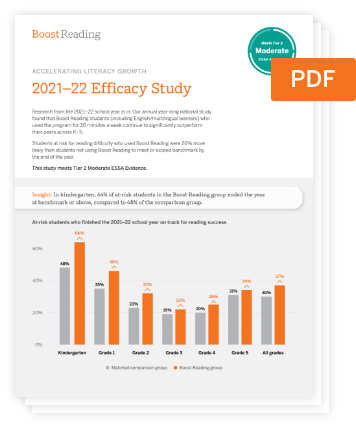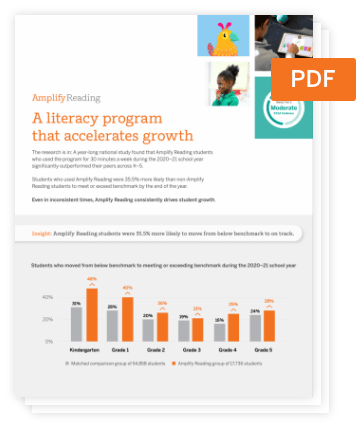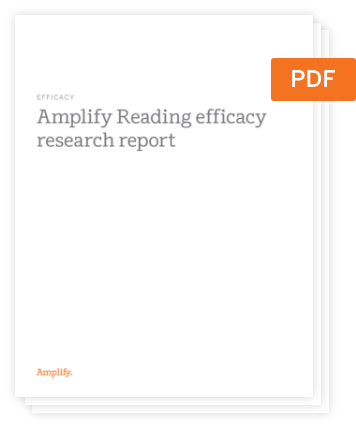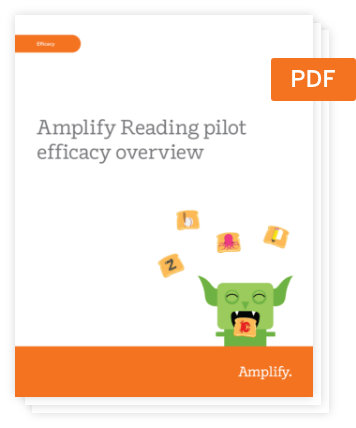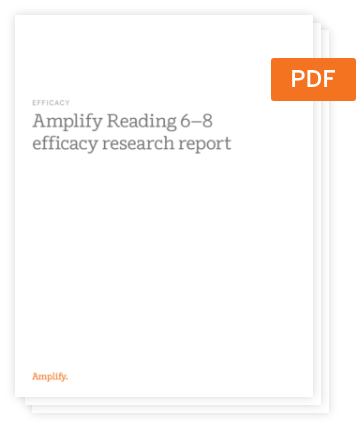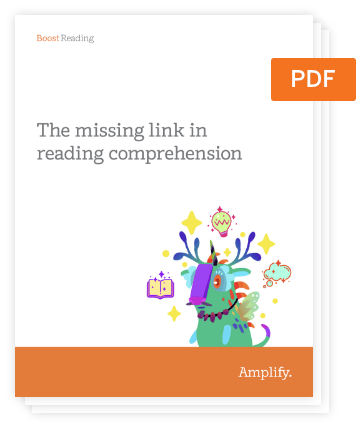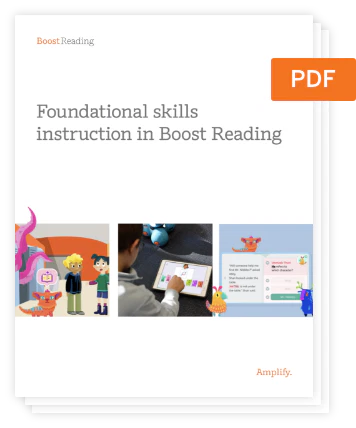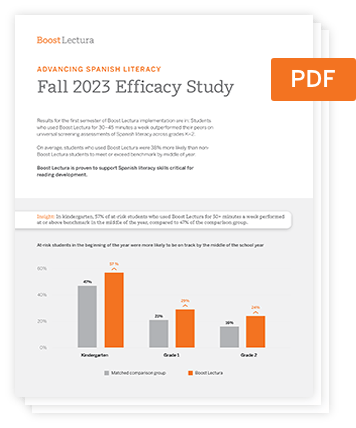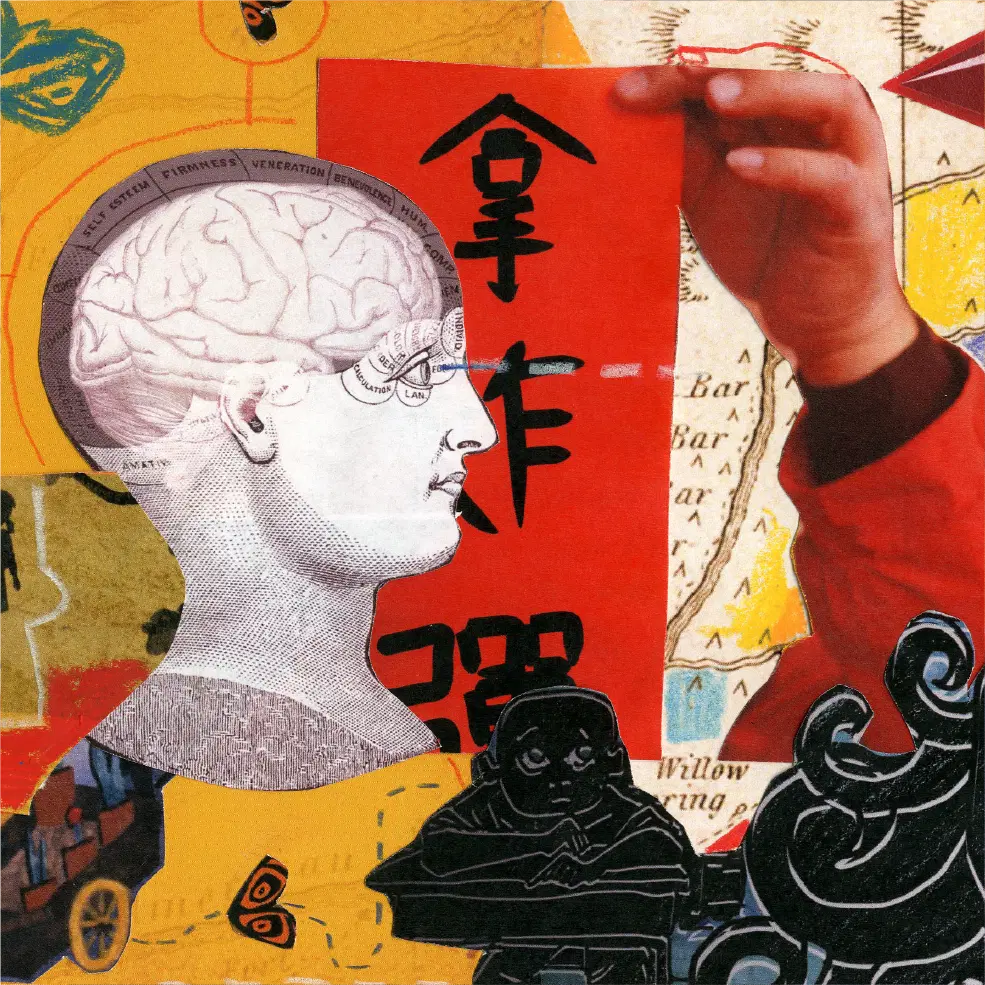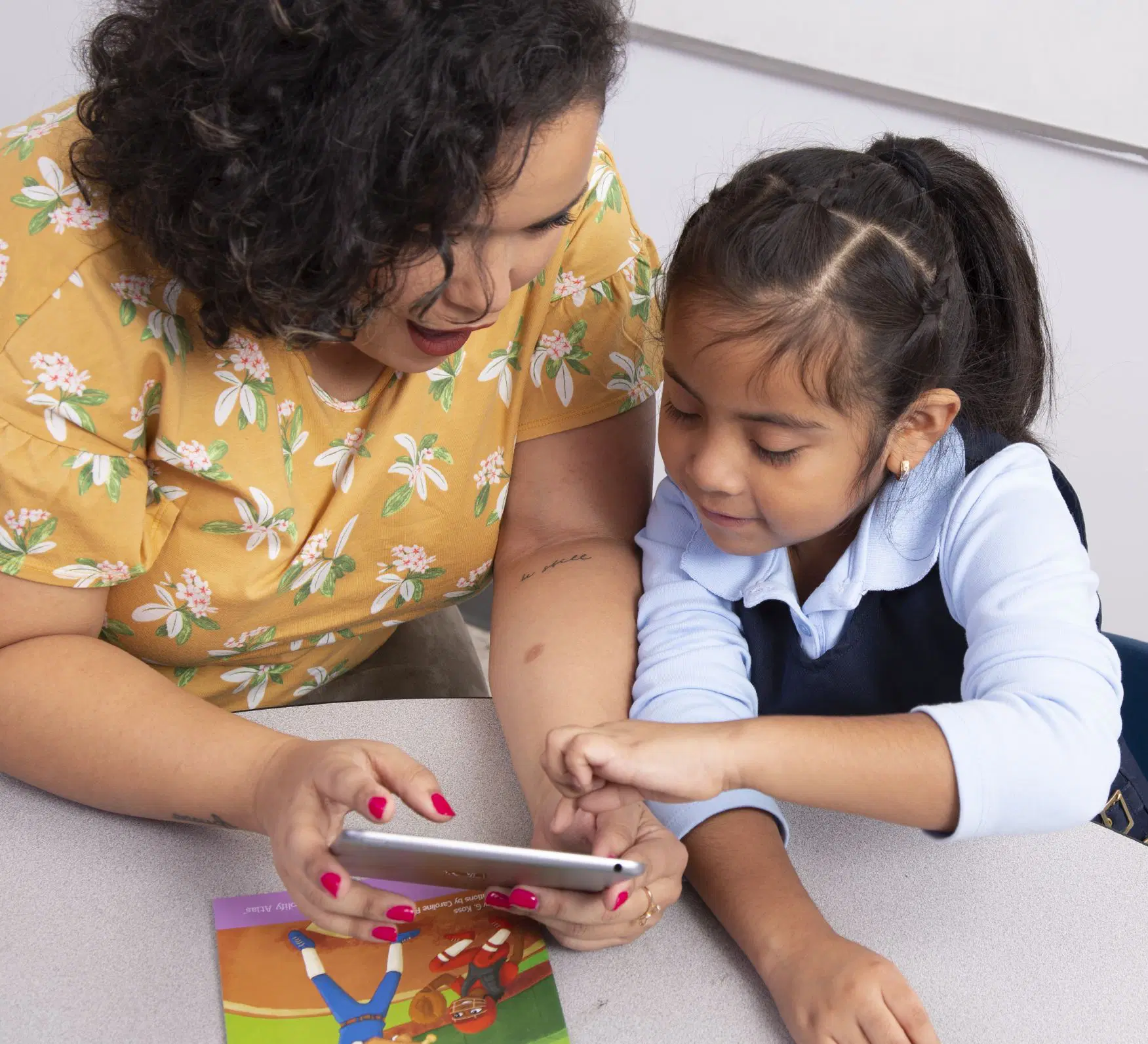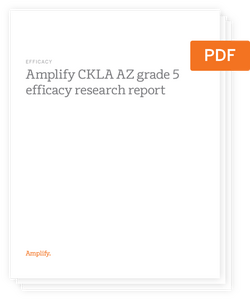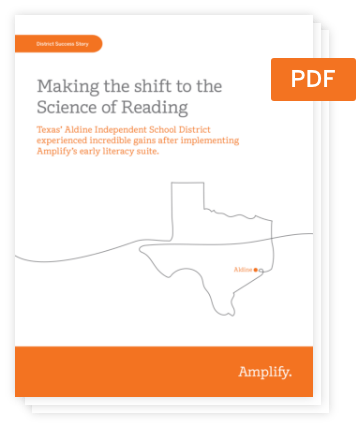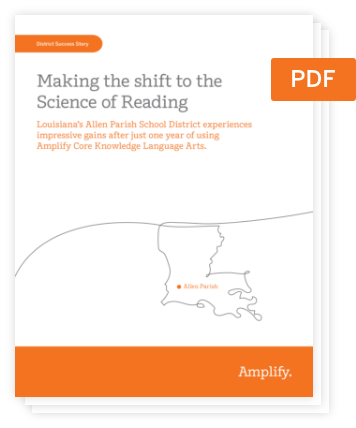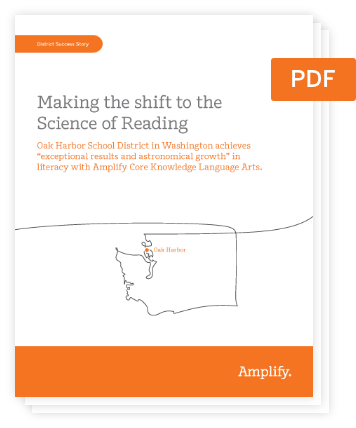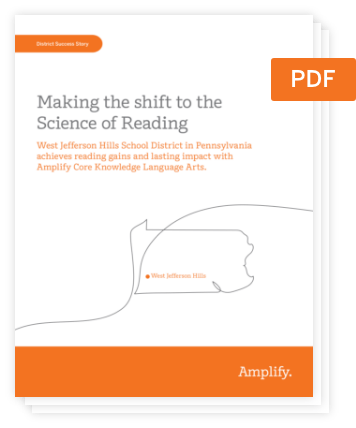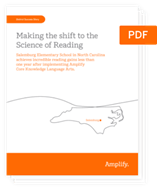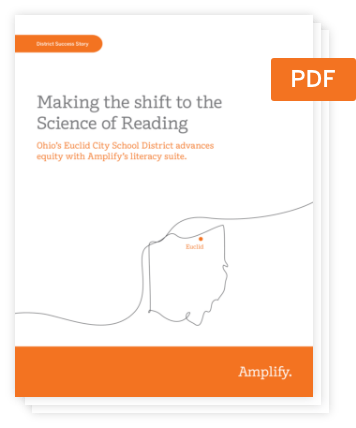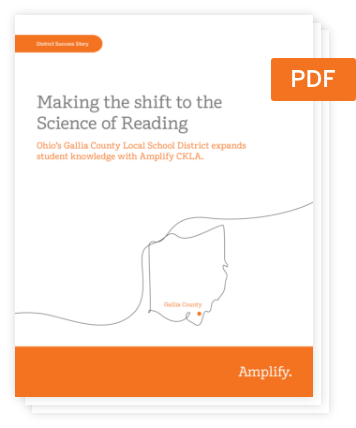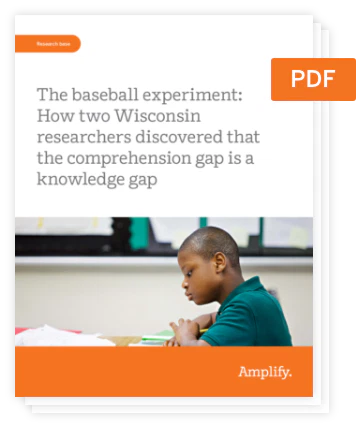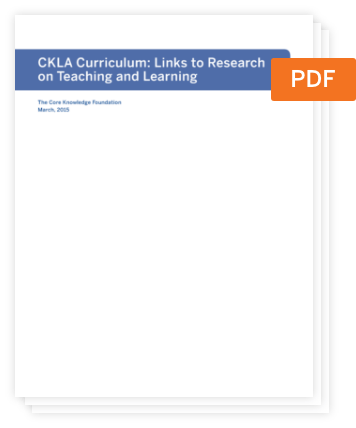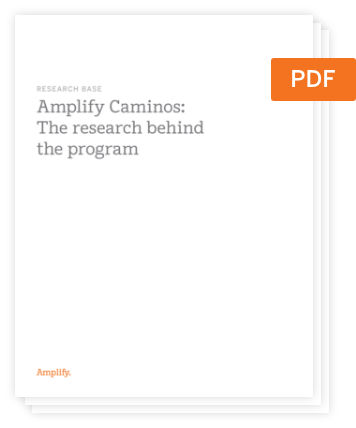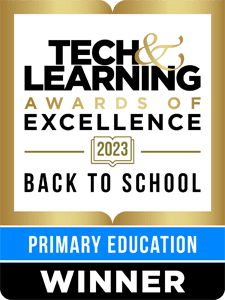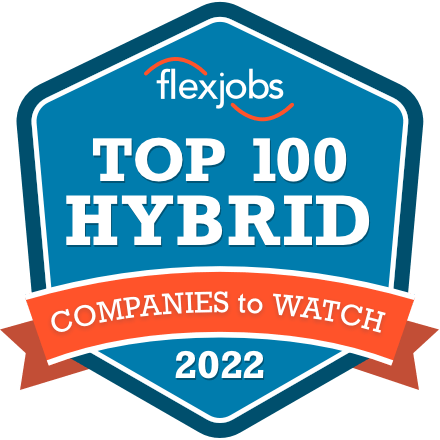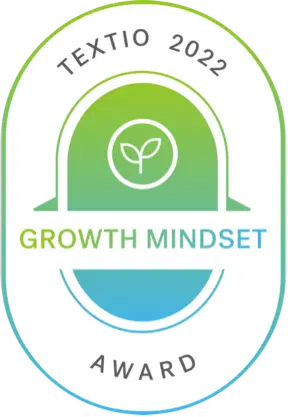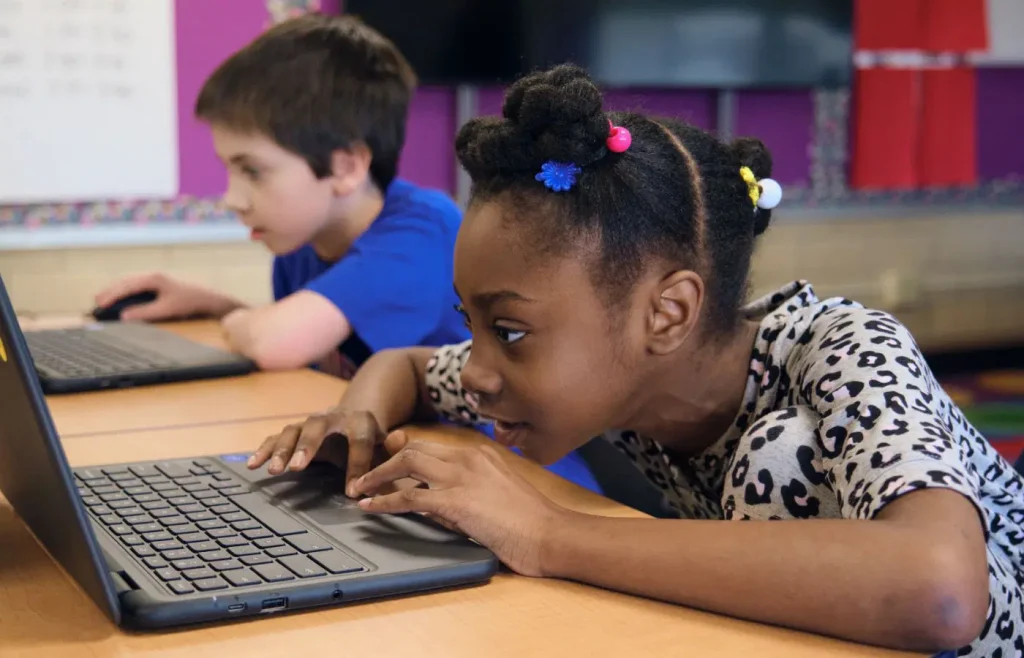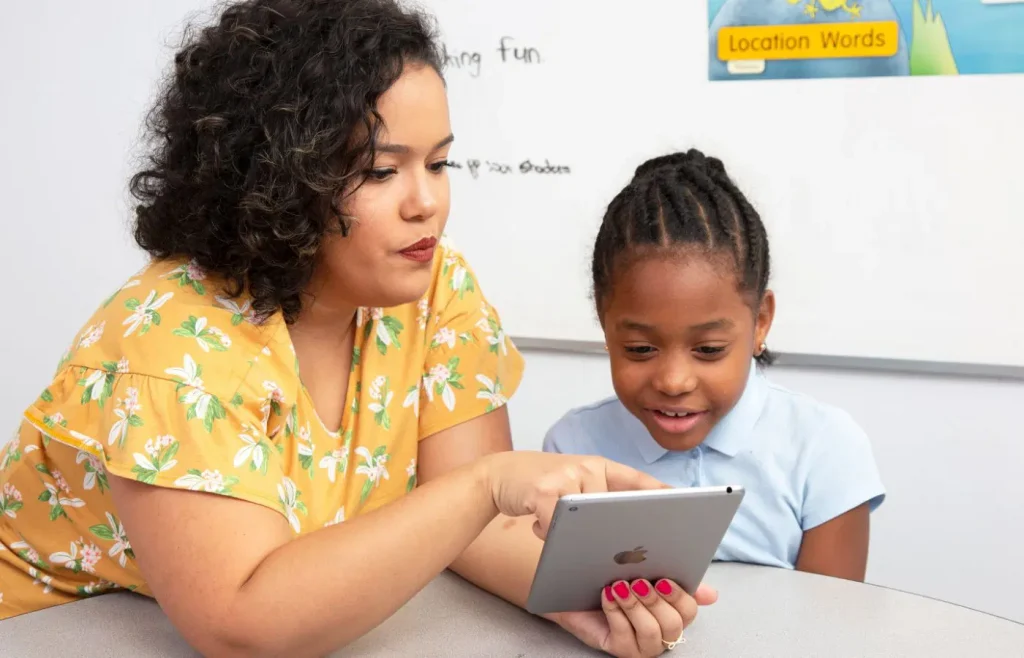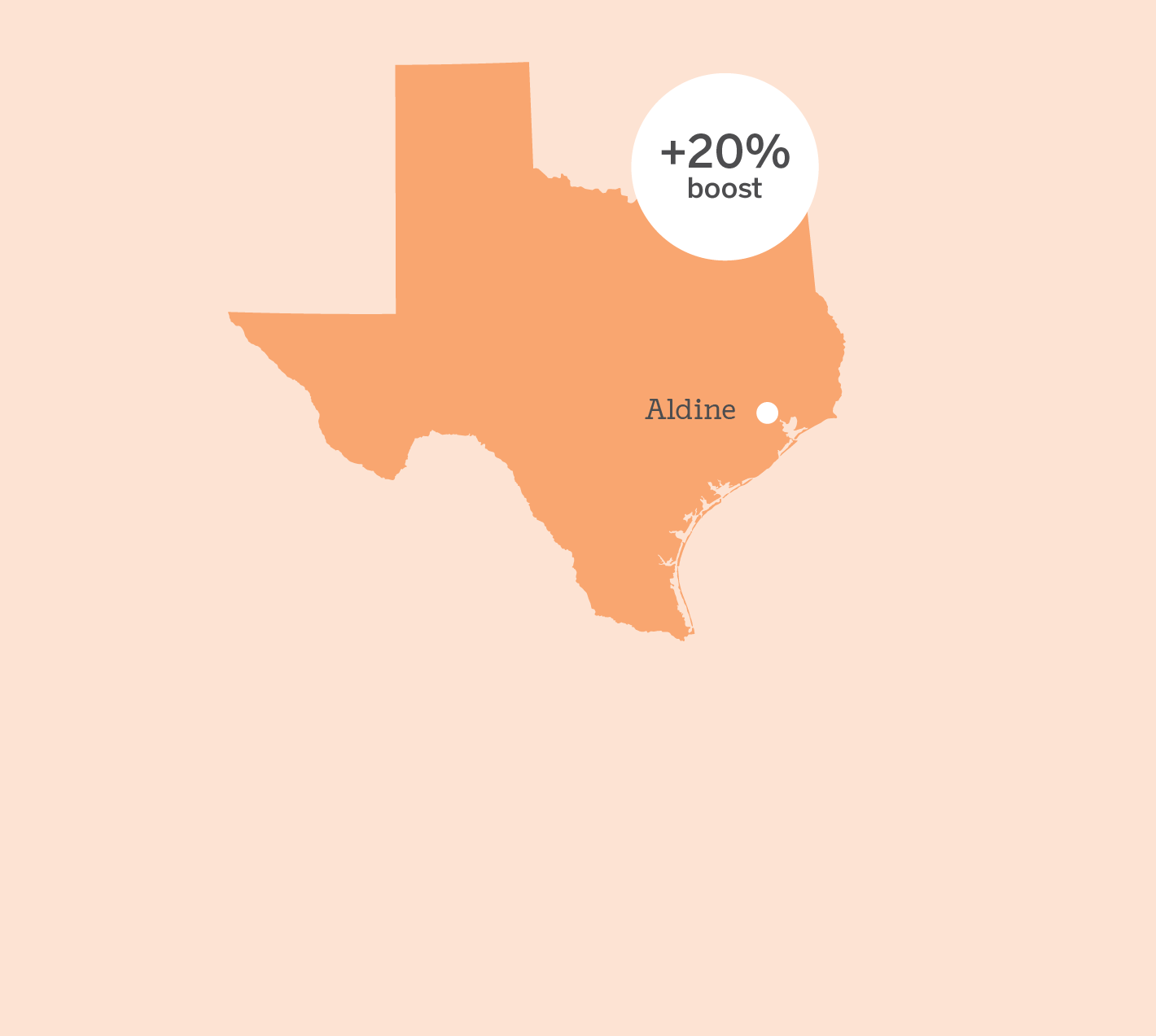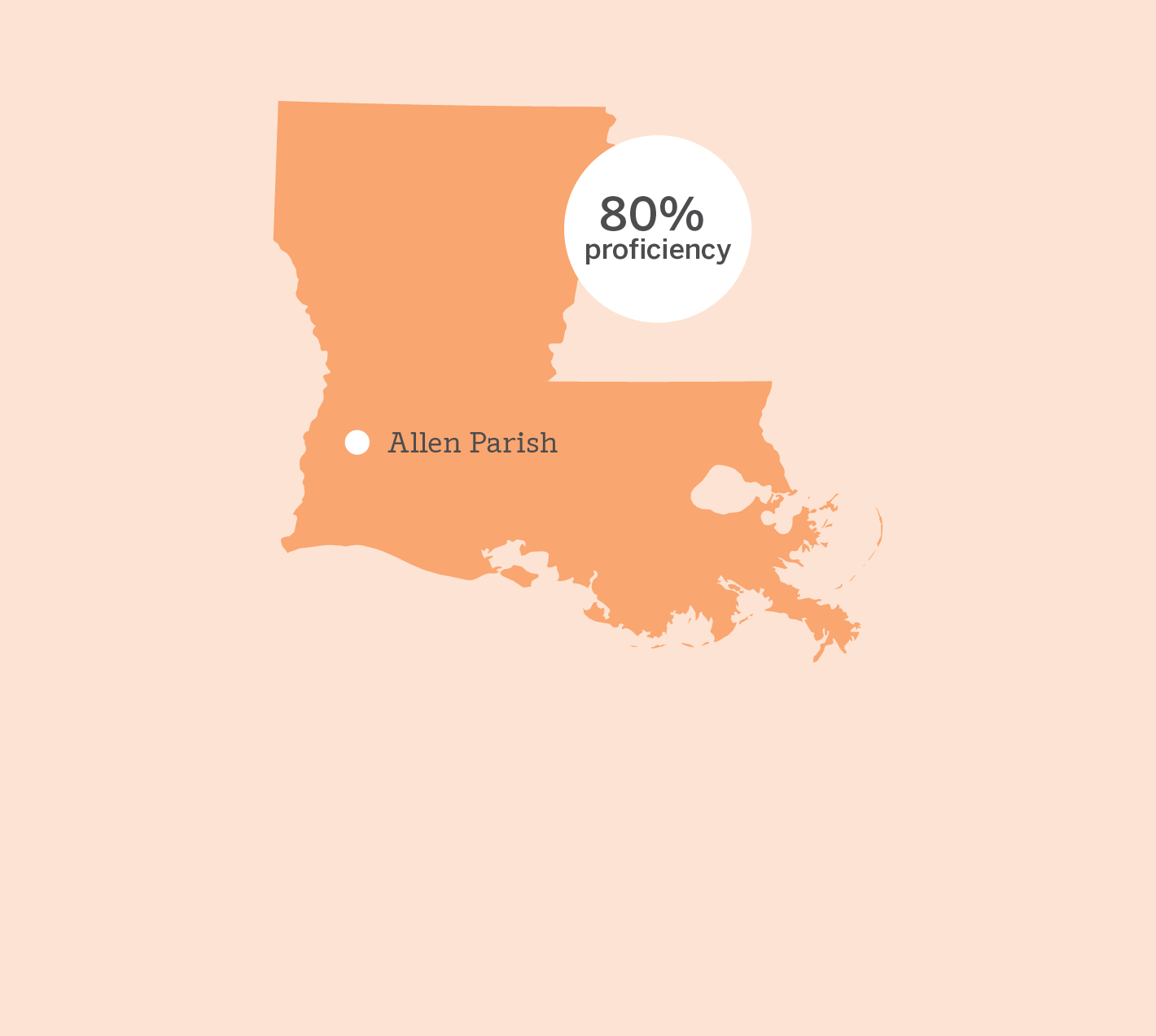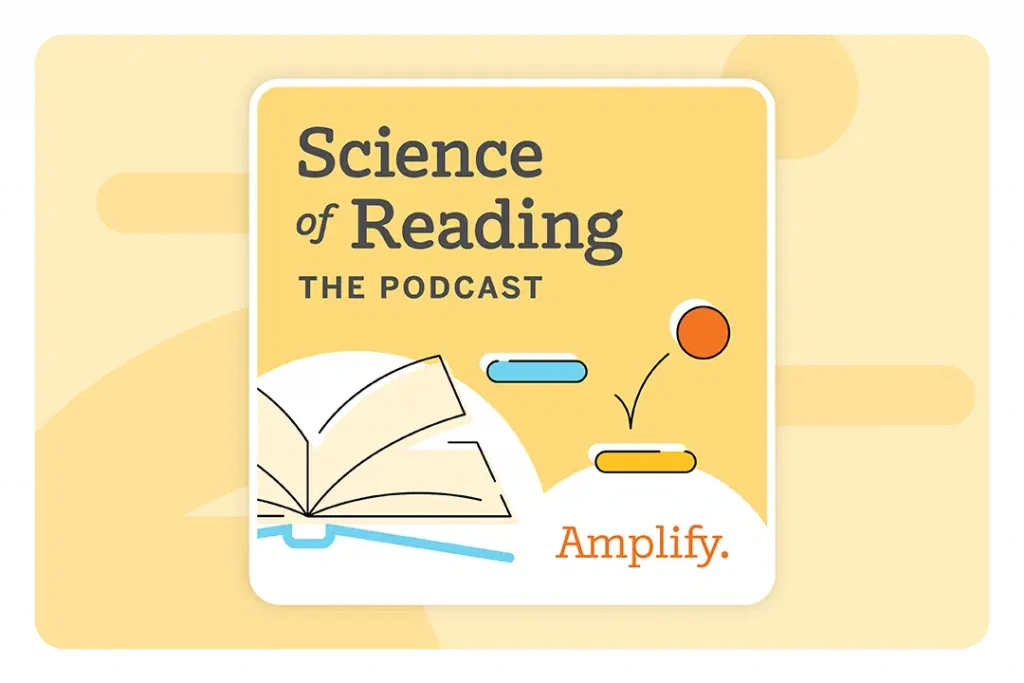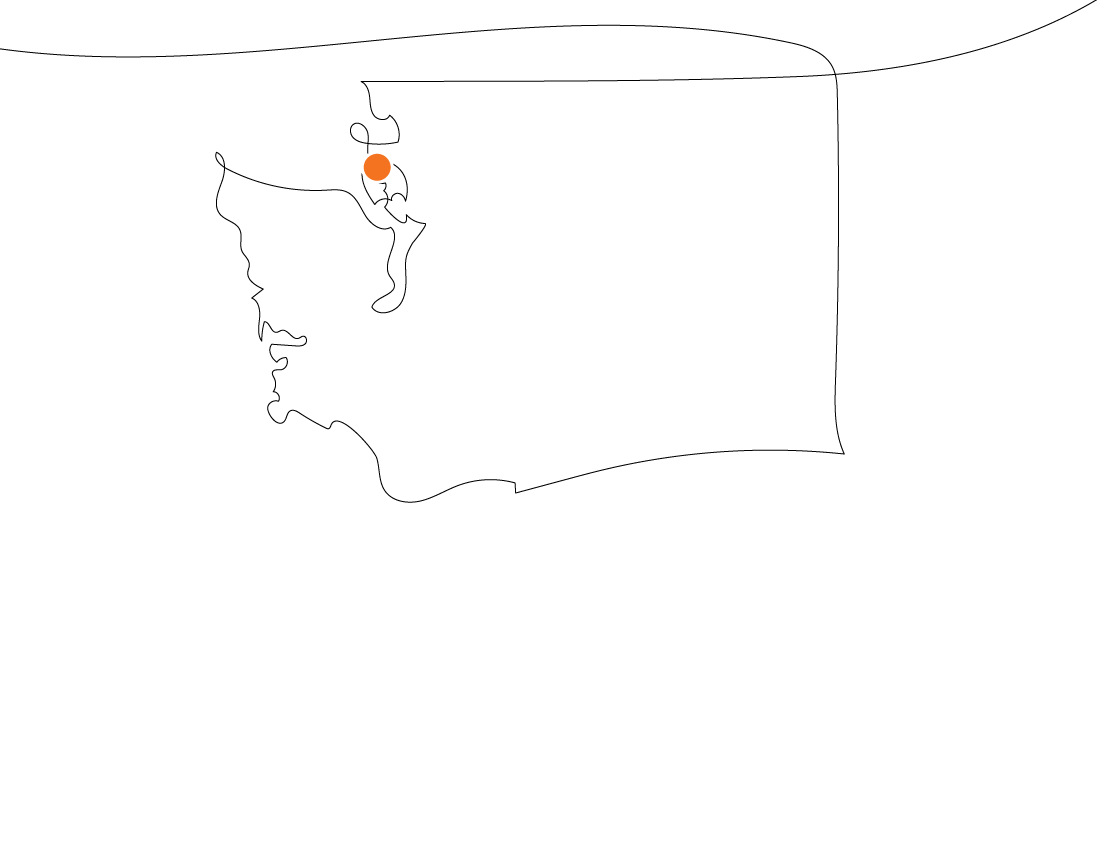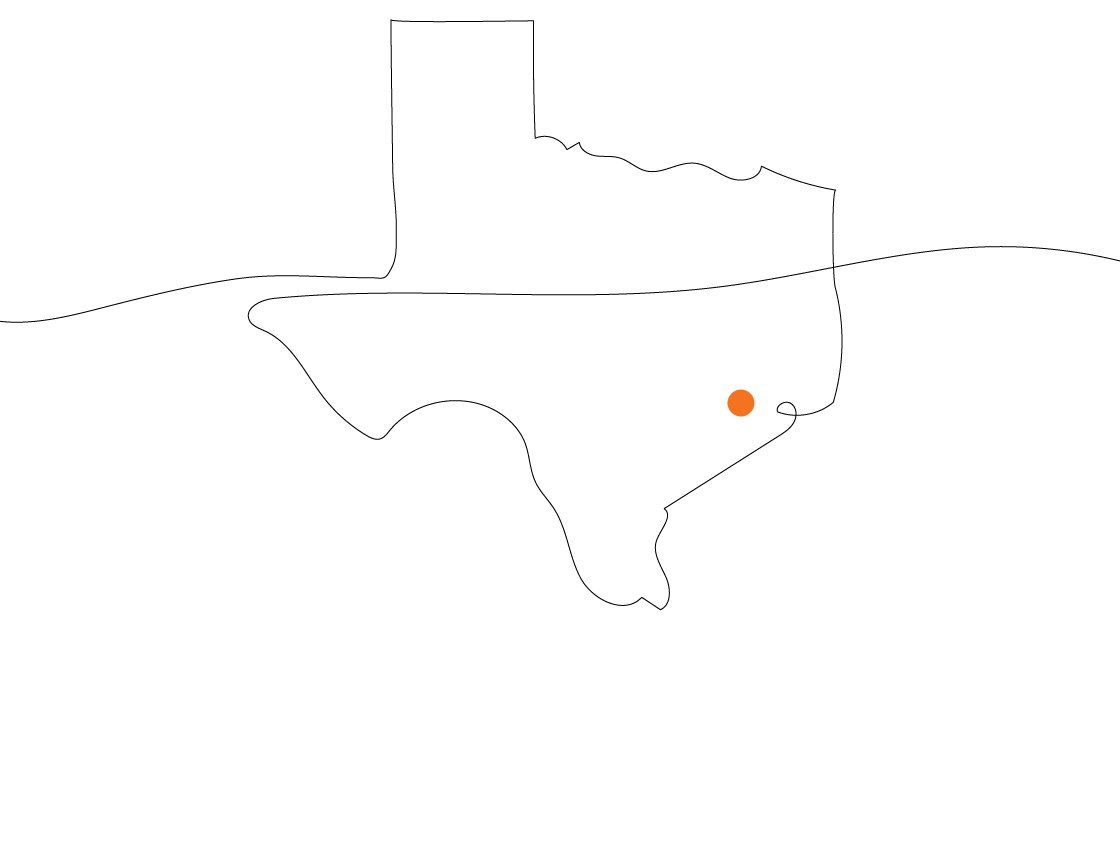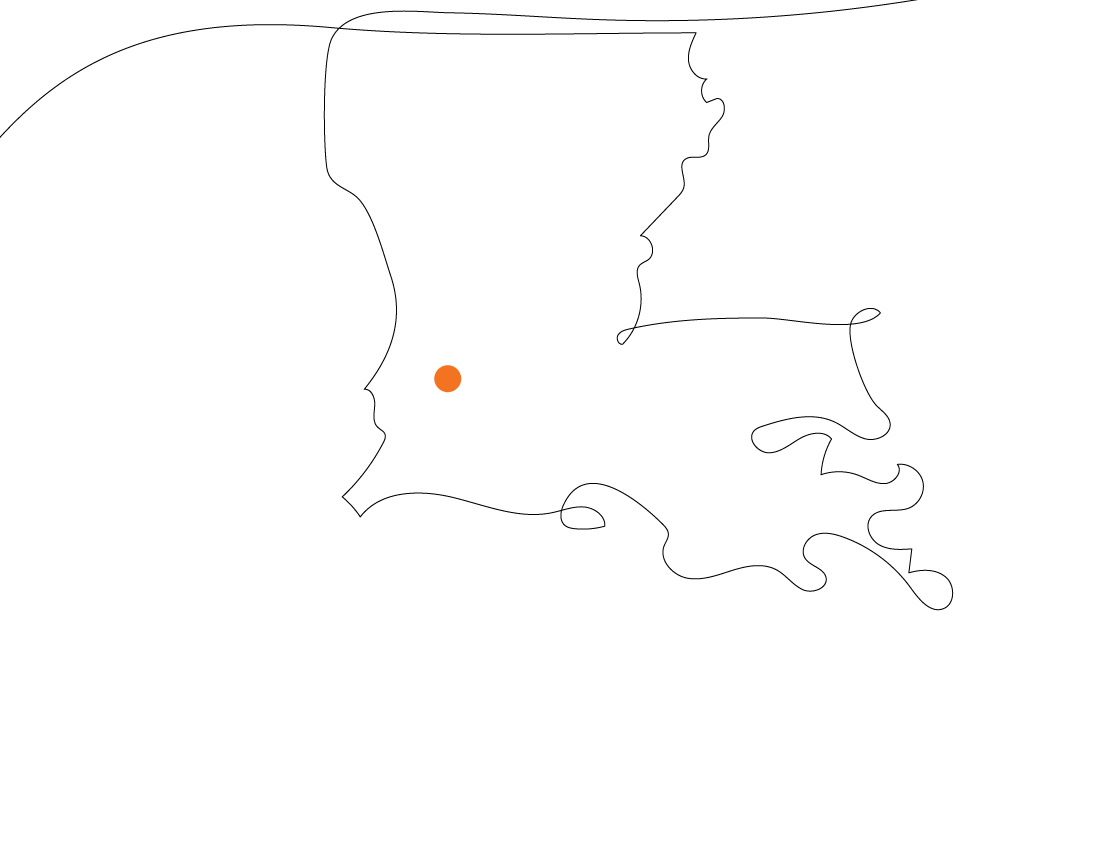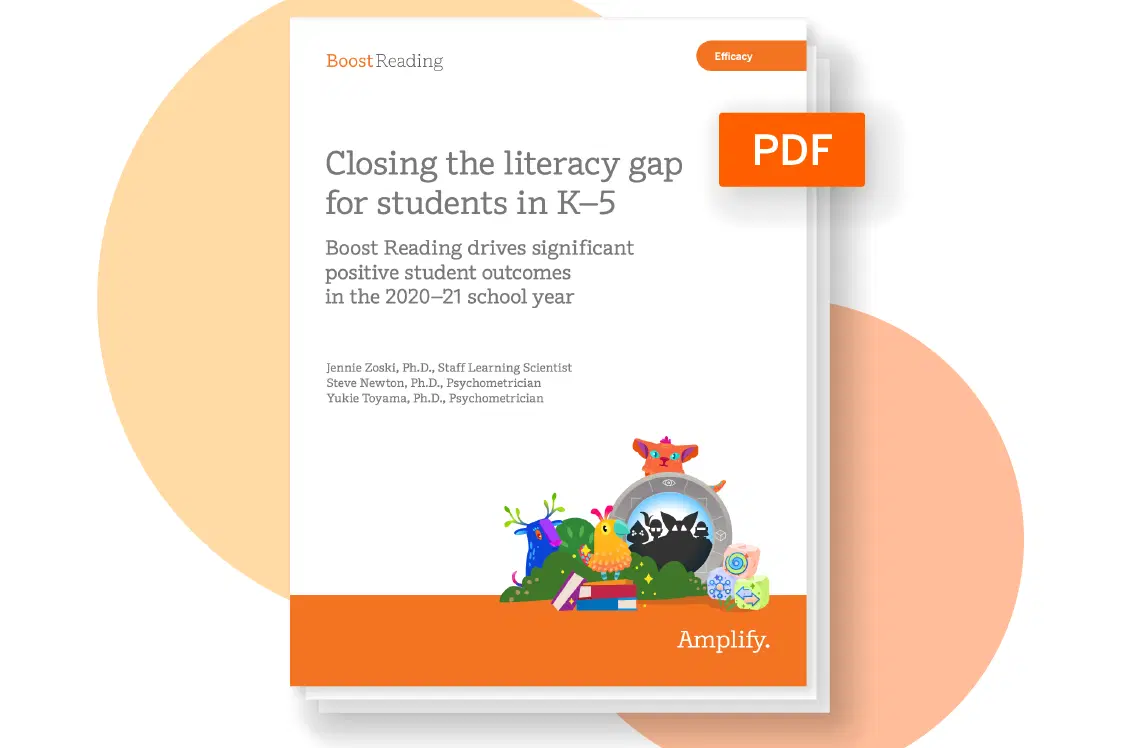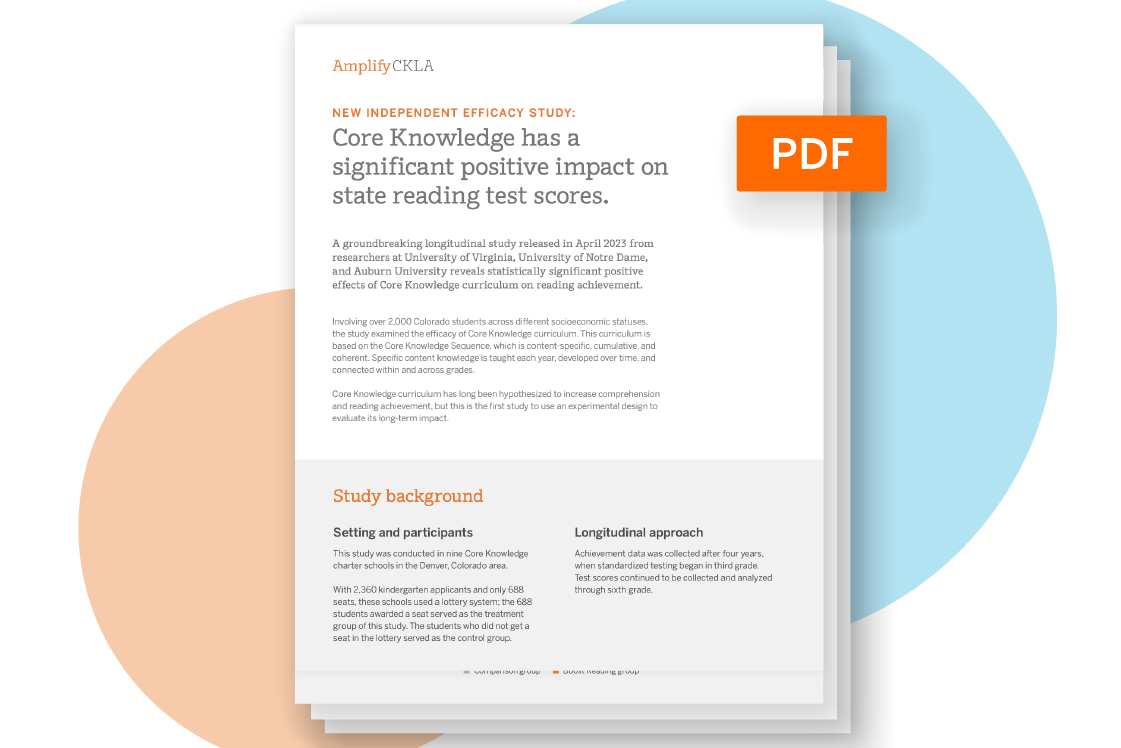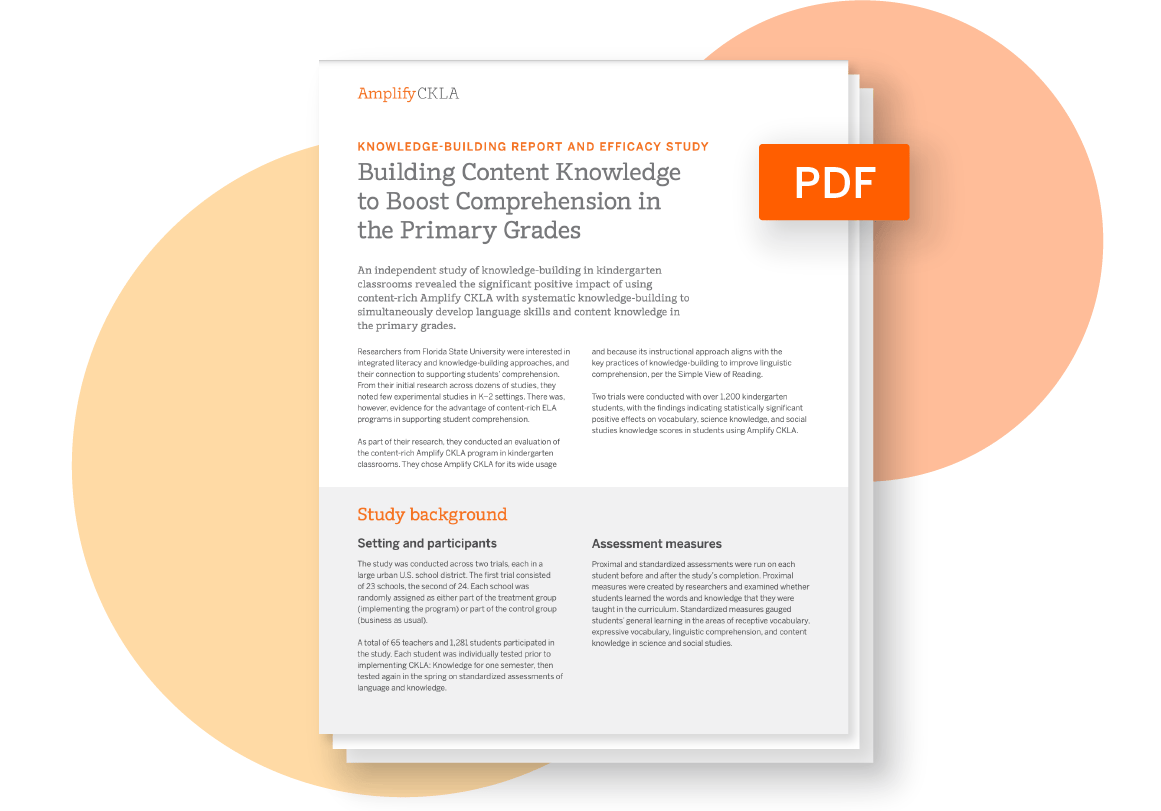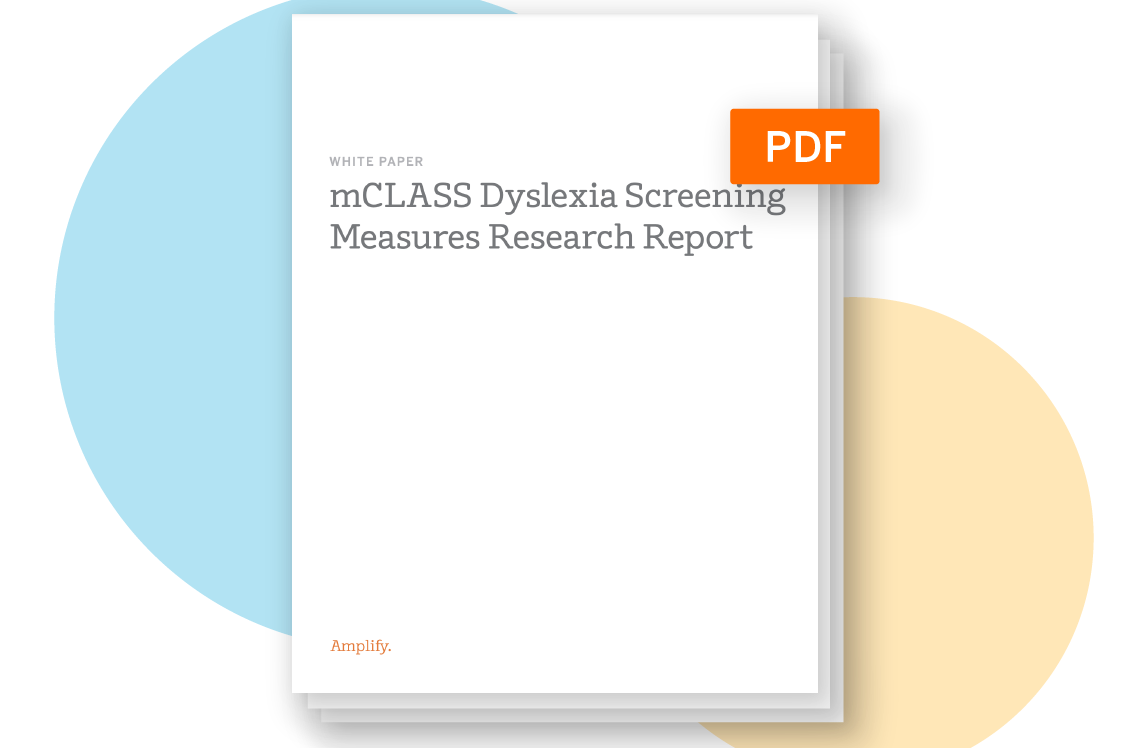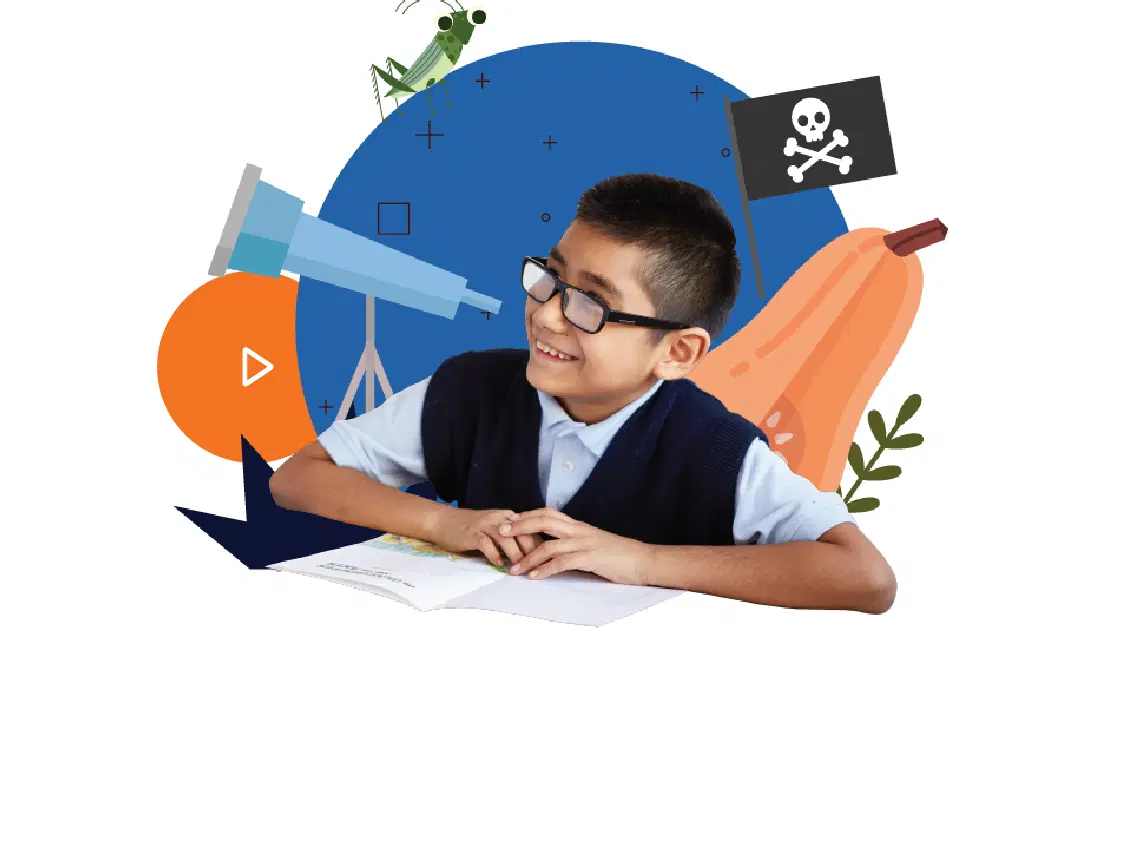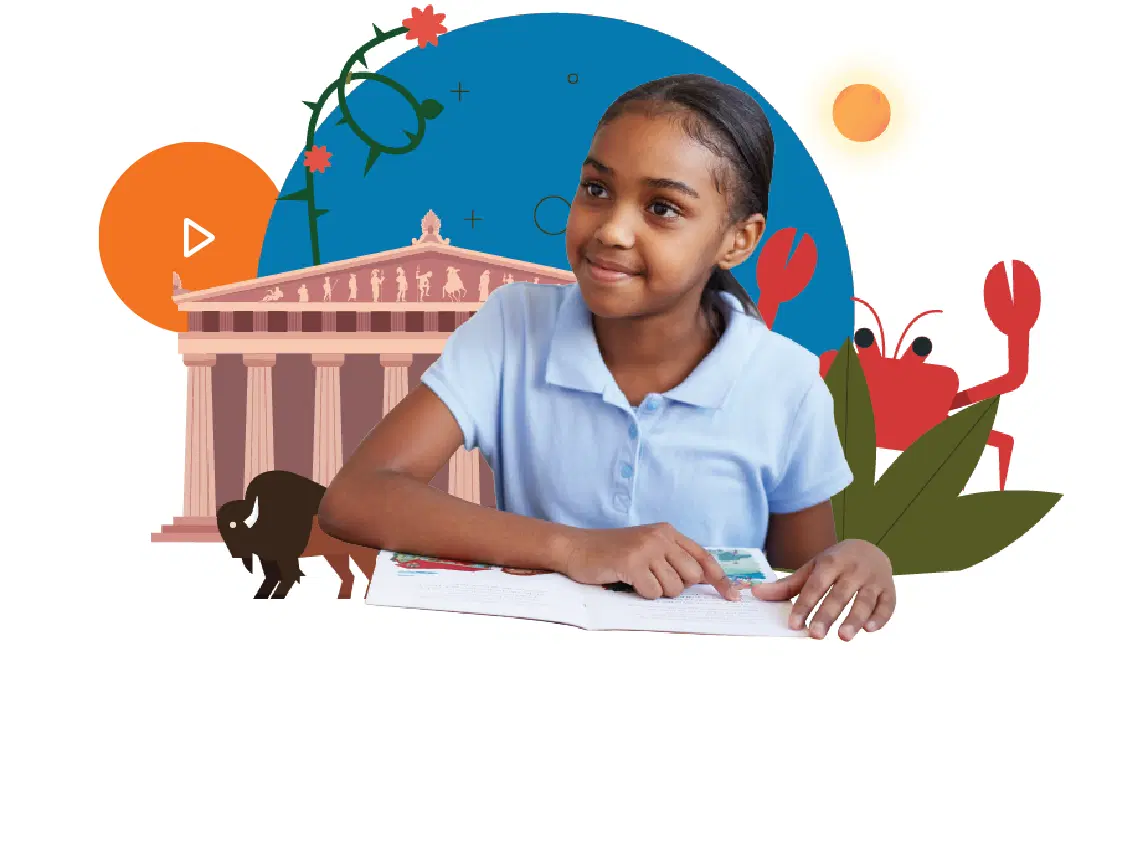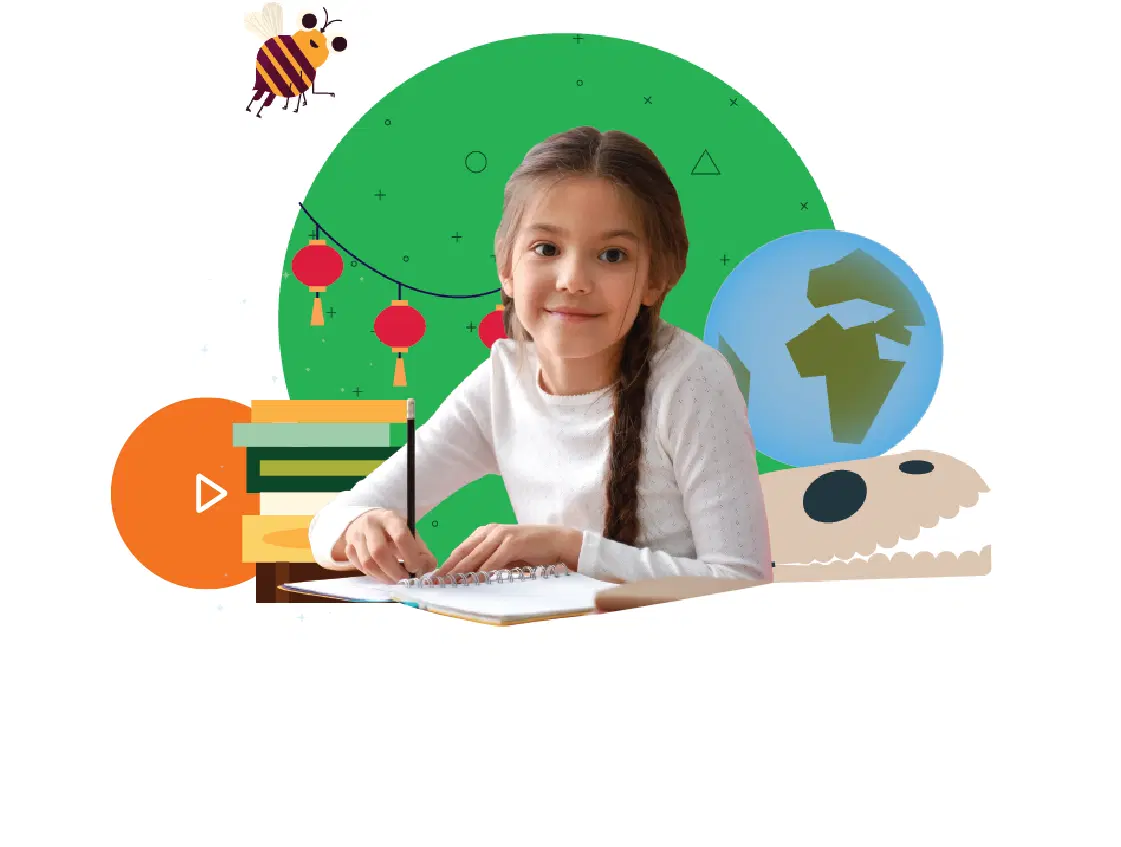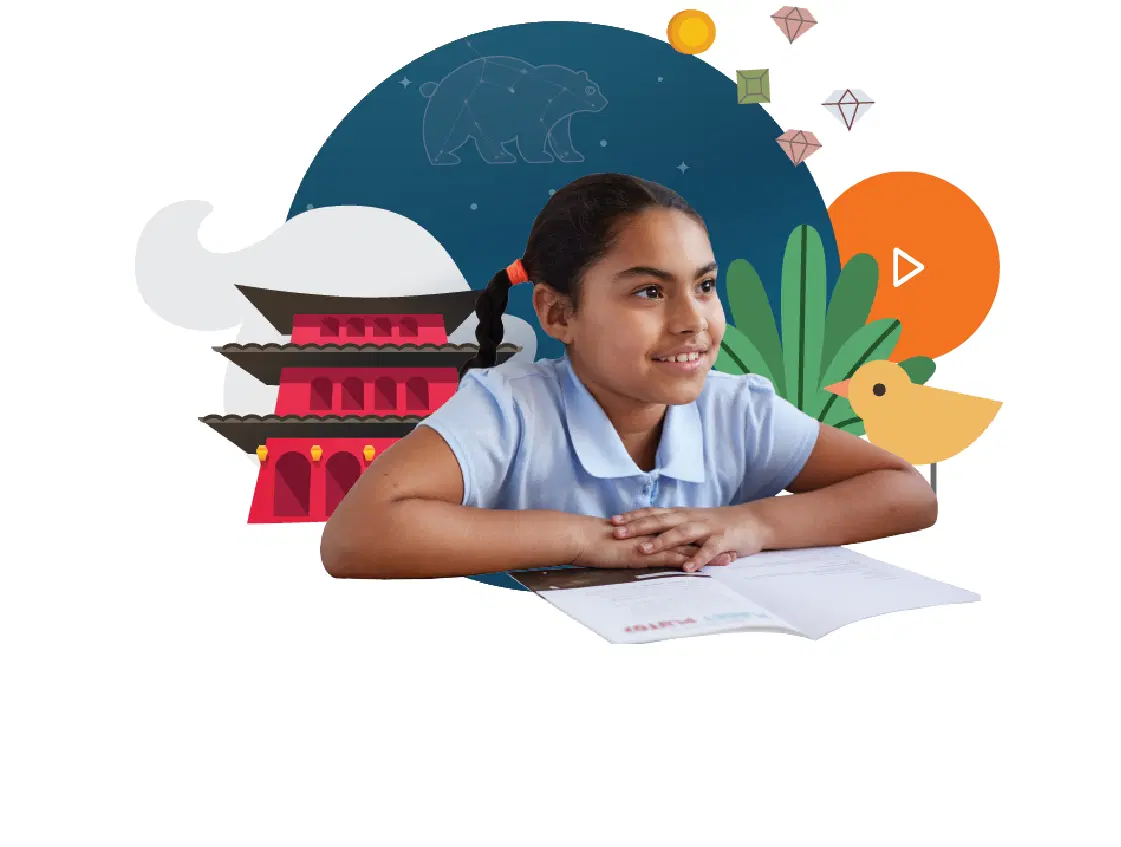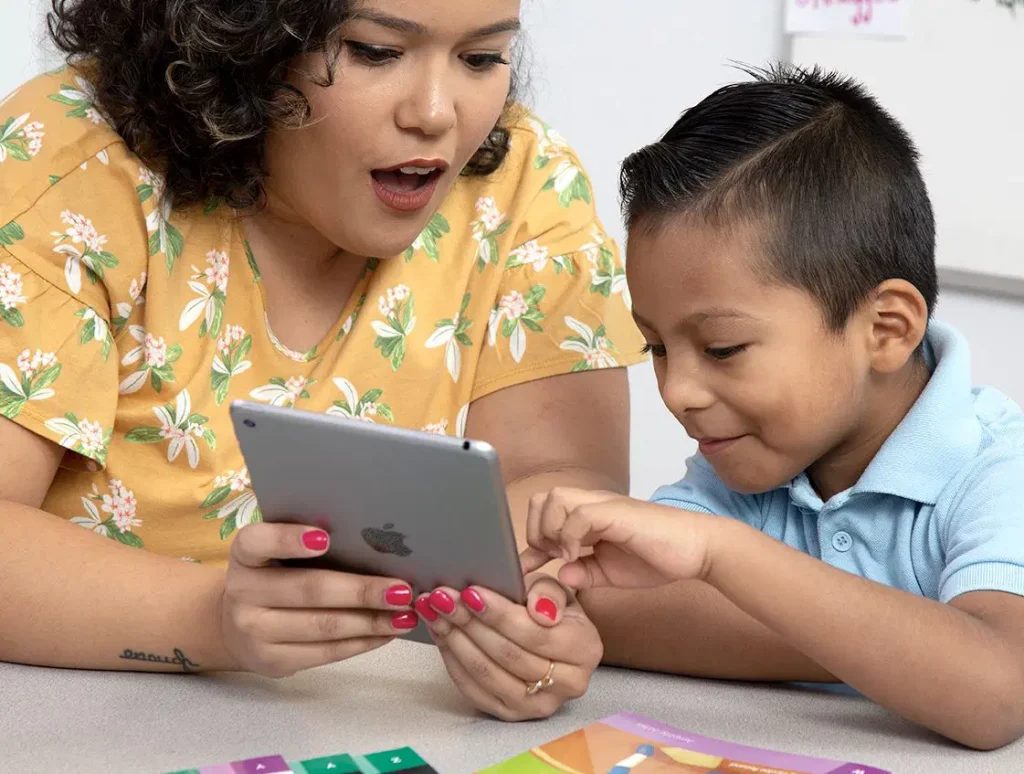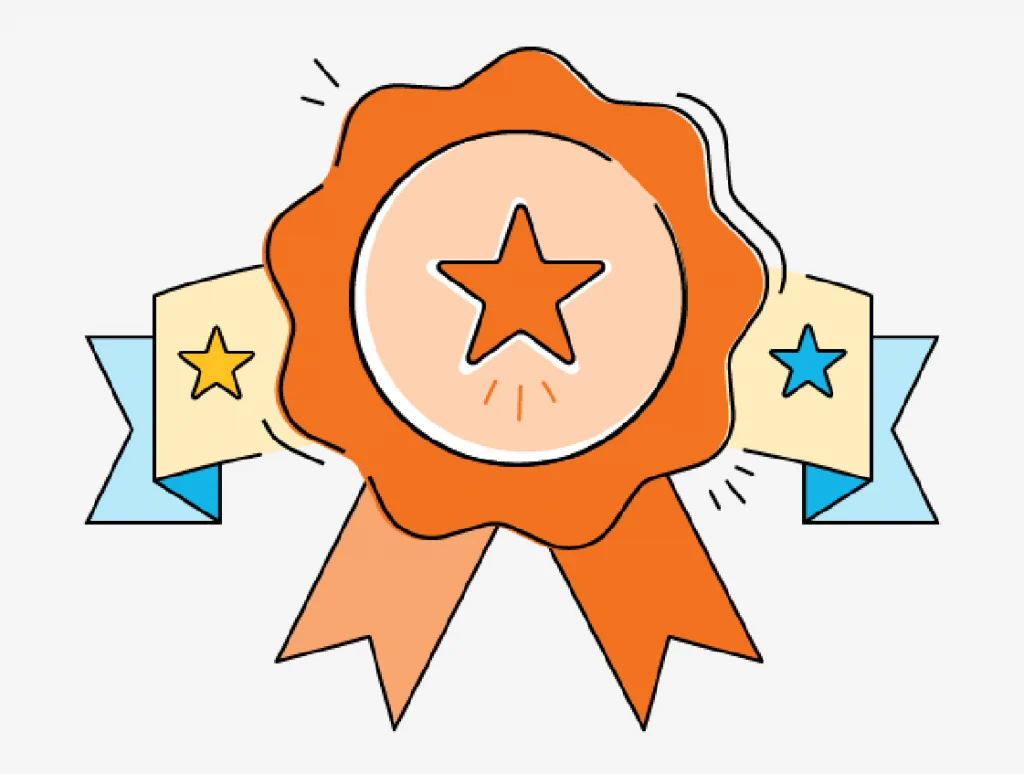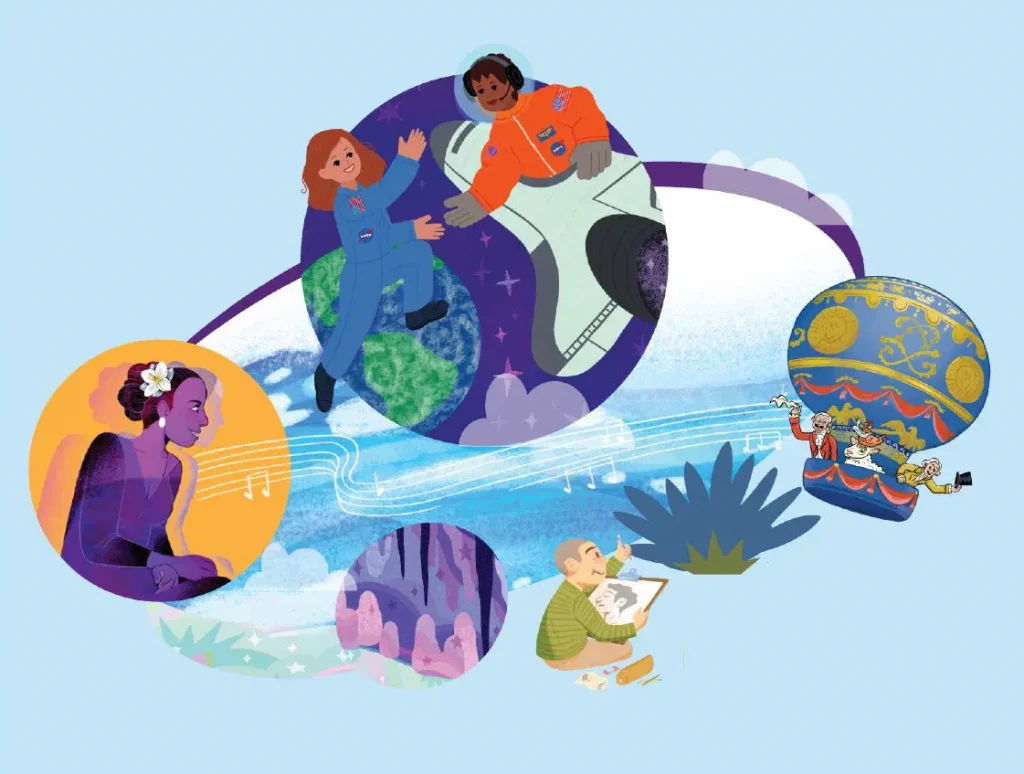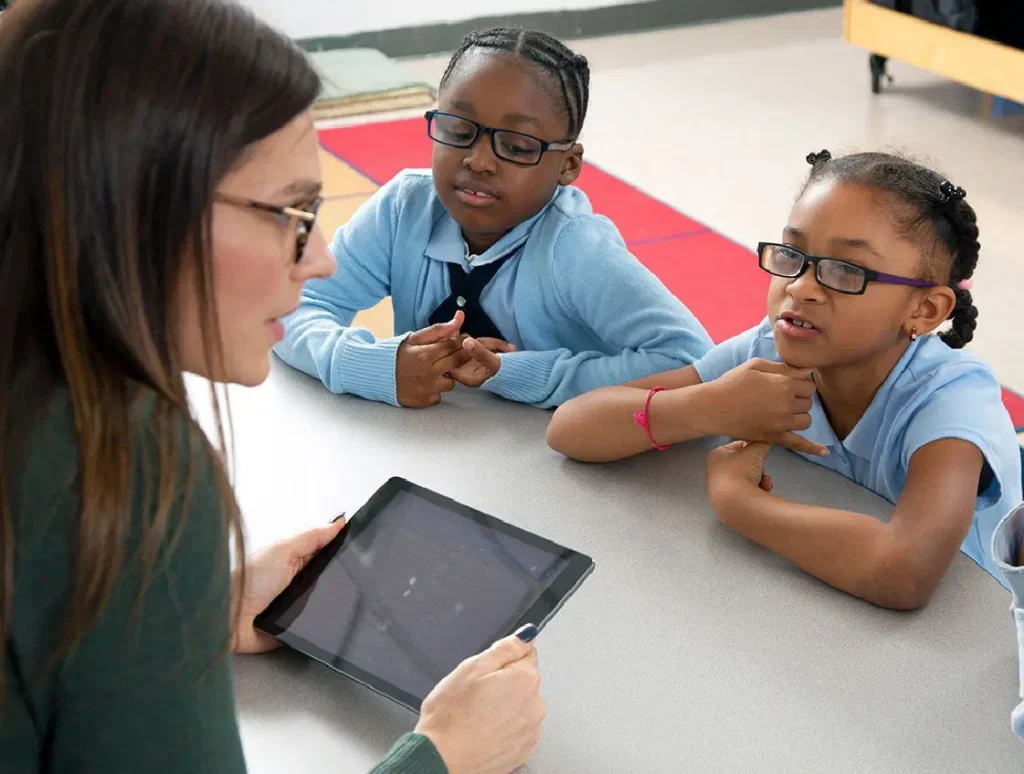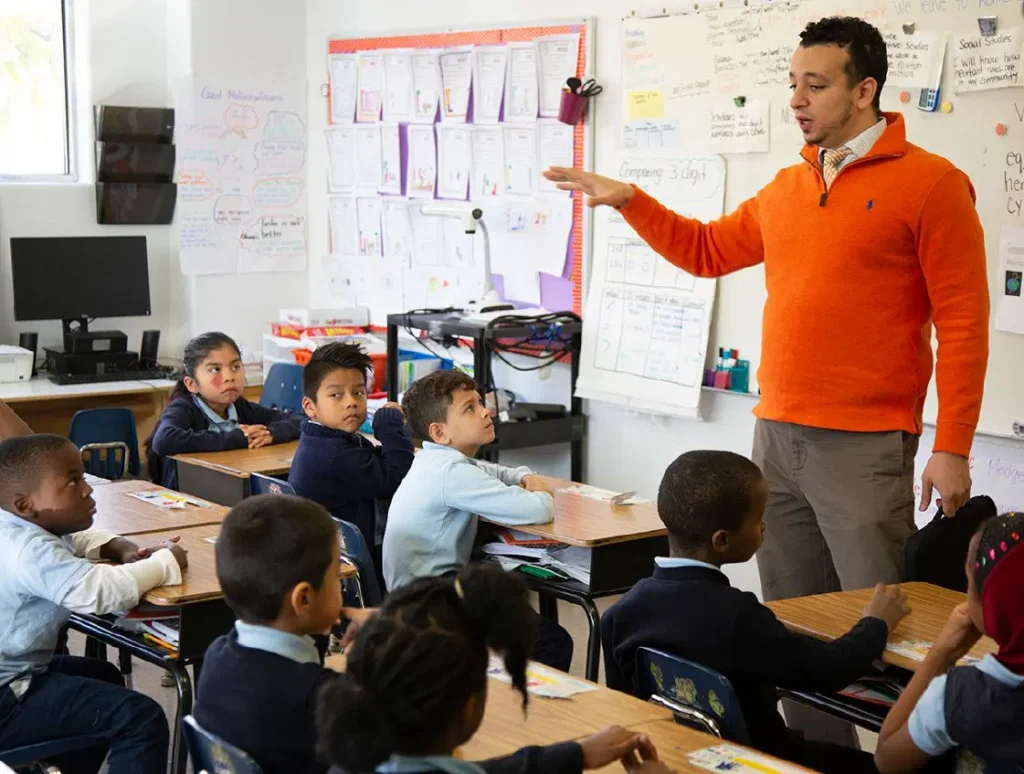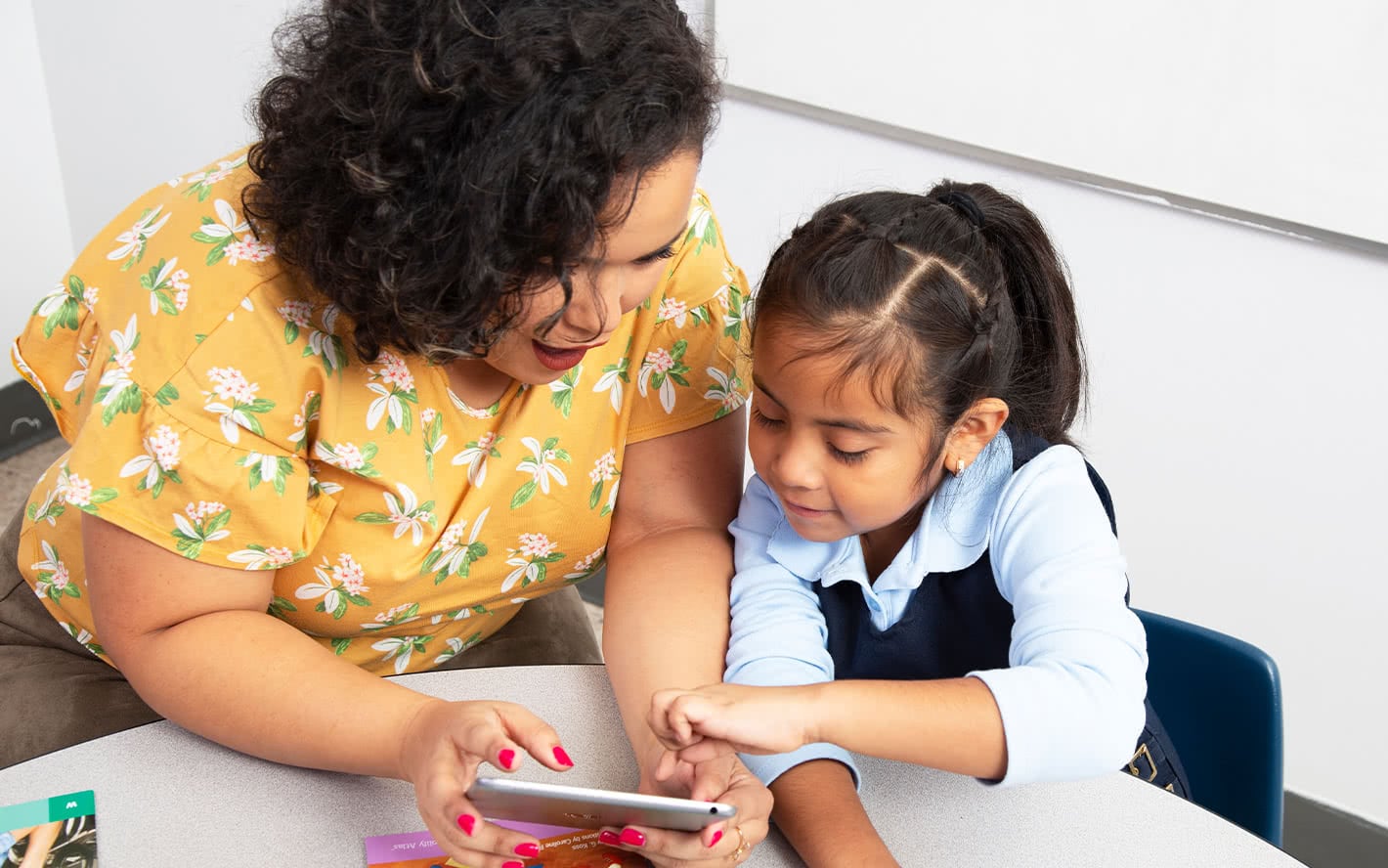Supporting multilingual learners—by supporting their families
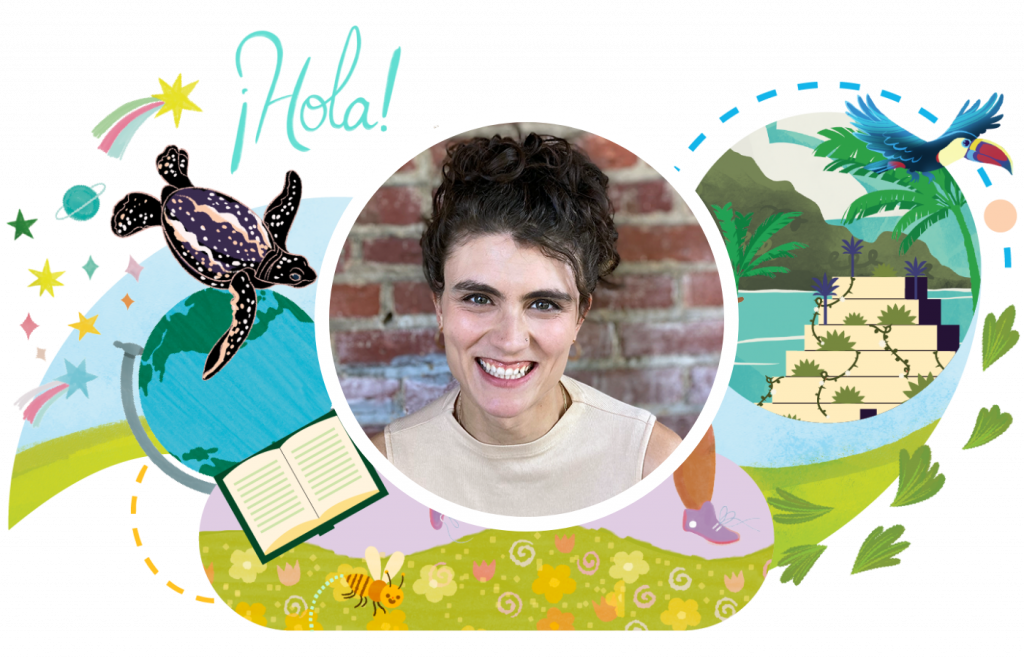
Teachers know that multilingual/English learners (ML/ELs) are an important and fast-growing population in today’s classrooms. In 2021, more than 10% of students enrolled in public schools across the U.S. were identified as English language learners, with some projections suggesting this number could reach 40% by 2030.
But when it comes to partnering with the families of ML/ELs for student success, we’re just beginning to tap into what’s possible.
I’m an ML/EL teacher and former homeroom teacher at a school serving many ML/ELs.
Here’s what I’ve learned about best practices for bridging the school-to-home communication gap and partnering with families (all families!) to ensure their child’s success.
Recognizing the communication gap: Common challenges with multilingual families
In my experience, three common barriers can stand in the way of strong family engagement and student success:
- Cultural expectations around parent-teacher communication: In many cultures, school is considered the teacher’s domain. Reaching out may be seen as crossing a line—or simply not expected at all.
- Logistical challenges: Unpredictable schedules may lead to missed messages, delayed responses, or inconsistent availability.
- Language barriers: If a message isn’t in a language a caregiver understands, it’s unlikely they’ll respond—not because they don’t care, but because they can’t fully engage.
Supporting multilingual learners starts with recognizing these barriers not as signs of disconnection, but as invitations to shift our approach. There are best practices we can adopt to help bridge the gap—and build the trust and relationships our students need to thrive.
Tools and strategies for better parent-teacher communication
If you want to communicate with families who speak a variety of different languages, the first step is finding the method of contact that works best for each of them. My school uses an auto-translating app called ParentSquare for home communications—but not all families I’ve worked with respond to ParentSquare messages. So if a family isn’t responsive to one mode of communication, try another!
It’s a good idea to ask families on Back-to-School Night—or whenever your students first arrive—if they have a preferred mode of communication. I’ve found I get the best response rate by creating a Google Voice number and communicating via text, first translating through an app if needed.
Keep a log of this information so you have it on hand when you need it. In the long run, this will be easier for both you and your students’ caregivers than you chasing them down to get them to download, log into, or check a specific app.
The important thing is to consider making contact essential, and to keep trying until you find the mode that works for both you and the parents of your ML/EL students.
Setting the tone for strong family engagement
If you want to forge a strong family-school partnership (and you should!), you also need to set the tone. When families have a different cultural understanding of school engagement than what you’re used to, I’ve found that it helps to explicitly solicit parent input, explaining how a partnership between caregiver and teacher will help support their child’s success.
Let them know how and why they should get in touch with you, and make it easy by reaching out proactively with brief, positive updates.
What multilingual families really want to know
Perhaps most importantly, ask families what they want to know! I’ve attended many parent-teacher conferences—both for my own students and as an interpreter—and I’m frequently struck by how many multilingual families respond when I ask what questions they have. Many families who haven’t previously reached out are suddenly overflowing with questions.
The most common one I get is how they can support their child’s academic journey at home. Parents also frequently request updates about behavior. Understand that just because a family isn’t asking these questions proactively doesn’t mean they don’t care. When I explicitly ask parents what they need, their responses make it abundantly clear that they are deeply invested in their child’s schooling and success.
I’ve also learned that many families—especially those who speak a language other than English at home—may not know that there are many ways to support their child’s growth, even if classroom instruction is not in their home language.
Think about what tips and resources you can most easily provide: Do your students’ parents know that reading or reciting poems, songs, or chants in their home language helps literacy growth? Could you send home simple board games from the classroom to reinforce key skills? Would signing up for a library card give them access to resources they didn’t know were available? Many caregivers of ML/EL students have told me they lack the tools to get involved—but are eager to engage once given tangible strategies.
How teachers can go the extra mile
In order to give our students and their families the support they need, it’s critical that we challenge our internal biases and assumptions. If we assume parents are uninterested or uninvolved, we avoid an opportunity to think creatively about how to bridge communication gaps and facilitate family involvement. We also cut off a world of possibility for our students and limit their access to the academic success that comes from parent involvement.
Working with the families of ML/ELs may bring added responsibilities—but it’s also a unique privilege, full of new opportunities. In teaching ML/ELs, I’ve found that I get to be a cultural bridge—one of the people providing warmth, stability, and welcome to families navigating a new culture. School can be overwhelming in a new country or different language—but a teacher who goes the extra mile can ensure success for both students and families.
Additional resources
- Let’s keep the conversation going! Join the discussion in our Amplify learning communities.
- Discover a suite of Spanish literacy curriculum and assessment programs designed to build confident readers with Amplify’s biliteracy suite.
- Read how you can use the Science of Reading to boost your biliteracy instruction in this blog post.
How differentiation drives success
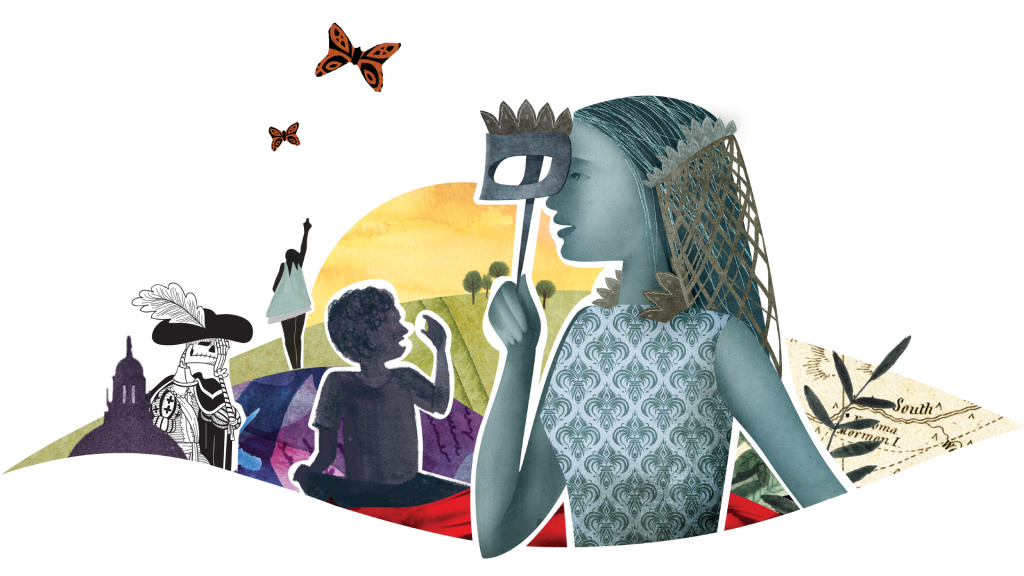
I’d like to share a favorite success story from my ELA class that brings home the true power of differentiation.
There was one boy—let’s call him Dipper. (It’s not his real name; I just really like the show “Gravity Falls.”) Dipper was the sweetest, kindest, most wholesome eighth grader I have ever met. He was absolutely precious.
Dipper also suffered from fairly severe academic struggles. He was well below his middle school reading level, struggled to express ideas in writing, and took longer than other students to break down basic concepts. When Dipper first came to me, he couldn’t start or complete a written sentence. He was easily frustrated and often overwhelmed to the point of tears.
Spoiler: By the end of the school year, Dipper was writing multiple paragraphs and starting to connect them with transition sentences.
Here’s how he got that much closer to grade level.
Using sentence starters and scaffolds to build success
My school district had recently adopted Amplify ELA (6–8). At the outset, I placed Dipper at the differentiation level with the most support. When we talked about how a character reacted to a moment in the story, Dipper had corresponding smiley, frowny, and disgusted faces to identify feelings. He had his own lesson plan with example quotes, shortened readings, alternative questions to spark thinking, and sentence starters to help him focus on comprehension instead of getting stuck at the start.
All of these supports helped him comprehend, share his responses, and contribute to discussions.
So far, so good.
But putting those thoughts to paper—or text box—was a completely different hurdle.
Facing academic struggles with patience and persistence
I can’t talk about Dipper without talking about his one-to-one aide. Let’s call her Ms. Mabel. (Again, “Gravity Falls.” I’m telling you, check it out.)
Ms. Mabel had sat beside Dipper during every ELA class since sixth grade. She helped him stay focused and generate ideas, and she even transcribed his answers when needed. Ms. Mabel’s devotion to Dipper’s success was profound and inspirational.
And it made all the difference when it came to Writing Prompts. At first, the prompts were met with tears and tantrums, panic and disdain, all the joyful wholesomeness ripped from Dipper.
Ms. Mabel would console him and redirect his passions to the work. She would point out the sentence starters, help him copy and paste them to the text box, and have him fill in the blanks. Again and again.
And then, little by little: Less panic. Fewer tears. Sentence starters, fill in the blank. Progress.
Sentence starters, fill in the blank. Success.
Day by day, Dipper, stacking wins like pancakes at an all-you-can-eat breakfast buffet, found confidence in himself, his reading, and his writing. He went from barely being able to complete a sentence to writing multiple paragraphs with evidence to support his ideas.
We had seen Dipper grow from a tiny sixth grader into a less tiny eighth grader and had watched his initial tenacity meet with stagnation, frustration, and defeat—until this year. This year with Amplify was different.
Why it takes more than just an awesome teacher
Obviously, you can’t pin success on one factor. Dipper had many supports in place: two blocks in the resource room, a dedicated aide, supportive peers and family, and—above all—a fierce drive and work ethic.
But if you asked Ms. Mabel, she would tell you that Amplify helped, too. She found that the way the questions were broken down allowed her to teach Dipper what he misunderstood better than she had been able to in previous years. We discovered very quickly how much autonomy was built in. It wasn’t rigid. It gave us structure and trust. It made differentiation easier, clearer, and more meaningful.
Sure, maybe Dipper was also maturing. Maybe I’m just an awesome teacher. Or maybe, just maybe, we need every little bit of help we can get to do the hard work in life. Maybe we need someone to push us in the right direction. Maybe we need those guardrails to keep us on course. Some of us can start our own engines, but we all need to be able to race.
Sometimes, we need someone who can help us start our sentences so we can learn how to be the ones to finish them.
More to explore
- Let’s keep the conversation going! Join the discussion in our Amplify learning communities.
- Looking for inspiration? Watch Teacher Connections, a video series featuring practical advice and tools straight from fellow educators—our very own Amplify Ambassadors.
- Dive into our podcast hub to hear from top thought leaders and educators and uncover cross-disciplinary insights to support your instruction.
An Aussie teaching American phonemes

Ever heard of bidialectalism? It means the ability to fluently switch between two dialects.
It was a new word for me when I first started teaching in the U.S.—but I figured it out fast, just by opening my mouth in the classroom.
Bringing my own Australian dialect to teaching six-year-olds deepened my capacity to help struggling readers and multilingual readers. It has also strengthened our classroom community and provided surprising, even amusing opportunities to learn—for all of us.
“What if they get an Australian accent?”
When I first entered an American classroom, I was nervous about teaching phonemes to kids. I kept wondering, “What if they get an Australian accent?” (That never happened.)
I remember my first year teaching Amplify CKLA, standing in front of my students and trying to figure out why the word “from” seemed tricky. For me, it sounded exactly how it was spelled. I kept saying “from,” but my students said: “/f/ /r/ /u/ /m/.”
That was the first of many times I realized how different my dialect really was.
The next one came during our Animals and Habitats unit. We were deep into the lesson when I casually said what sounded like “Pythin,” and a student turned and said, “Don’t you mean PythOn?”
Then came the r-controlled vowels. (R-controlled vowels, also called r-influenced vowels, are vowels that change their sound when followed by an “r” in the same syllable. Instead of sounding short or long, the vowel is “controlled” by the “r”—like in “car,” “bird,” “corn,” “turn,” and “her.”)
Because of my accent, when I said those sounds, they almost always came out as “uh.” (I think that’s why I’ve been told Aussies were responsible for the schwa!) While that got a good laugh—and gave students lots of chances to mimic my accent—it drove home the real importance of phonological awareness.
Learning together: Teaching phonemes and pronunciation
I spent the rest of that first year going over the phoneme videos on the Amplify resources hub, practicing my r-controlled vowels. I did my best to learn to switch between the Australian and American dialects. I even started challenging my students to correct me more often. (“Wait, did I say that right?”)
That led to more intentional practice when teaching grade-level spelling patterns for those individual sounds. I started adding silly actions to go with each one. For example, we’d say, “‘e’ and ‘r’ are friends and together they go ‘errrrr,’” and we’d pretend to turn a key into either side of our cheeks.
Those small quirks helped my students remember the sounds—and they helped me just as much.
Don’t dread it—use it!
So, to any teacher who’s dreading teaching phonemes or teaching kids to read because of their speech or dialect—don’t!
Learning with your students, blending Amplify’s tools with your own quirks and personality, builds classroom memories and creates powerful literacy instruction.
You don’t have to erase your accent to be effective. In fact, embracing your uniqueness might just make you a better teacher.
From one teacher to another: Don’t be afraid of the greatness you already have.
To close out, here’s my favorite use of what I believe is the greatest phoneme/diphthong of all time: Aussie! Aussie! Aussie! Oi! Oi! Oi!
Why hands-on learning matters in science
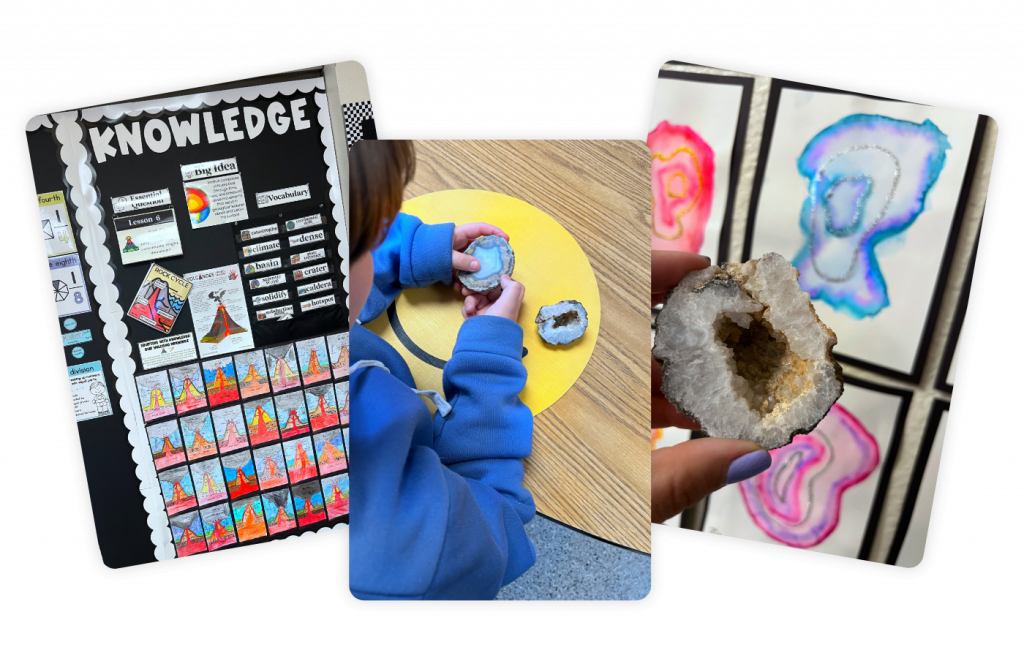
Science should be more than just reading about concepts—it should be something students can see, touch, and explore. When students actively engage with science through hands-on activities, technology, and even literature connections, they develop not only essential science skills, but also deeper understanding and lasting curiosity.
Bringing science to life: Hands-on activities
Perhaps the most effective way to engage students in science is to combine a high-quality curriculum with an interactive teaching style to make it experiential. In my classroom, we use the Amplify CKLA Geology unit to dive into earth science concepts. While these strategies can be applied across grade levels and scientific topics, the following is an example from my fourth-grade classroom’s geology lessons:
- Examining geodes: Students predict what they will find inside before breaking geodes open. Then they analyze the crystal structures, connecting their observations to Amplify CKLA’s science concepts.
- Writing about Earth’s layers: After learning about the Earth’s structure, students reinforce their understanding by writing creative descriptions or short stories from the perspective of different layers.
- Diagramming volcanoes and the rock cycle: Drawing detailed diagrams, students visualize how rocks change over time and how volcanic eruptions shape the Earth’s surface.
Connecting literacy skills to science skills
Incorporating literature deepens students’ understanding of science. I use a mix of trade books and digital resources to bring concepts to life through storytelling and informational texts. These books help students connect scientific ideas with real-world applications, fostering both literacy and science skills.
Literacy skills like reading comprehension and critical thinking are key to understanding complex scientific ideas. When students dive into science-related materials, they practice making sense of data, thinking critically about evidence, and building arguments. These practices boost students’ overall literacy, expanding their vocabulary, sparking their curiosity, and developing their media literacy.
Digital resources for students: Exploring science with Google Earth
To further engage students, I integrate Google Earth into our lesson plans. This allows them to explore real-world scientific phenomena—such as geological formations, ecosystems, and weather patterns—making abstract concepts more tangible. Students love zooming in on famous landscapes, discussing how they were formed, and identifying scientific features. This interactive approach using relevant digital tools helps make science feel relevant and exciting.
Final thoughts: The power of engagement in science
By combining hands-on activities, literature, and technology, I’ve helped my students develop a genuine curiosity about science. As the school year progresses, they ask more questions, make deeper connections, and take ownership of their learning.
Engaging students in science doesn’t have to be complicated—it just has to be meaningful. By making learning interactive, Amplify (through Amplify CKLA and Amplify Science) helps students connect with scientific concepts in meaningful ways. I encourage other educators to bring Amplify’s lessons to life with interactive approaches that spark wonder and excitement in young scientists.
Explore more
- Let’s keep the conversation going! Join the discussion in our Amplify learning communities.
- Looking for inspiration? Watch Teacher Connections, a video series featuring practical advice and tools straight from fellow educators—our very own Amplify Ambassadors.
- Dive into our podcast hub to hear from top thought leaders and educators and uncover cross-disciplinary insights to support your instruction.
Welcome, New Mexico state reviewers!
Thank you for taking the time to review Amplify’s K–8 science programs for New Mexico. This site provides resources to aid in your review so you can experience all that our high-quality instructional materials have to offer. Simply click a grade level band below to get started.
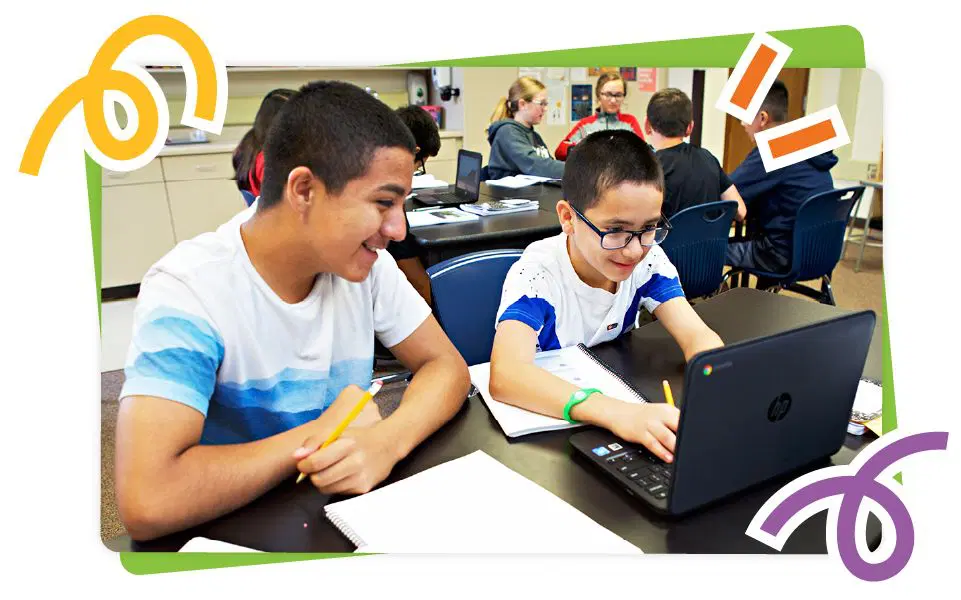
The one-stop solution for New Jersey’s literacy mandates
New Jersey now requires universal literacy screening and parent notifications. To meet these mandates, NJDOE’s Student Literacy Working Group fully recommends mCLASSⓇ DIBELSⓇ 8th Edition as the trusted solution to help schools.
Some of the requirements of the New Jersey Department of Education’s Senate Bill 2644 include:
- Mandatory screenings: Schools must conduct literacy screenings for all K–3 students at least twice annually to assess reading proficiency levels.
- Parental notification: Within 30 days of the screening period’s end, schools are required to inform parents or guardians of the results, including comparisons to grade-level norms and available intervention supports.
mCLASS offers New Jersey all of the following, plus many more additional features to support students and teachers:
- Universal screening
- Dyslexia screening
- Instant data analysis and reporting
- Parental notification letter

What is mCLASS?
mCLASS, the only digital provider of DIBELS 8th edition assessments, provides universal screening, dyslexia screening, and progress monitoring to assess your students’ reading proficiency levels and determine what skills they need to develop.
You’ll observe students as they form sounds or read words and text. Then, mCLASS instantly scores and analyzes student response patterns to provide you with diagnostic data and instructional focus for each student and group.
With mCLASS, you’ll have everything you need to support every type of learner in your classroom, including advanced learners, multilingual learners, and students with signs of dyslexia.
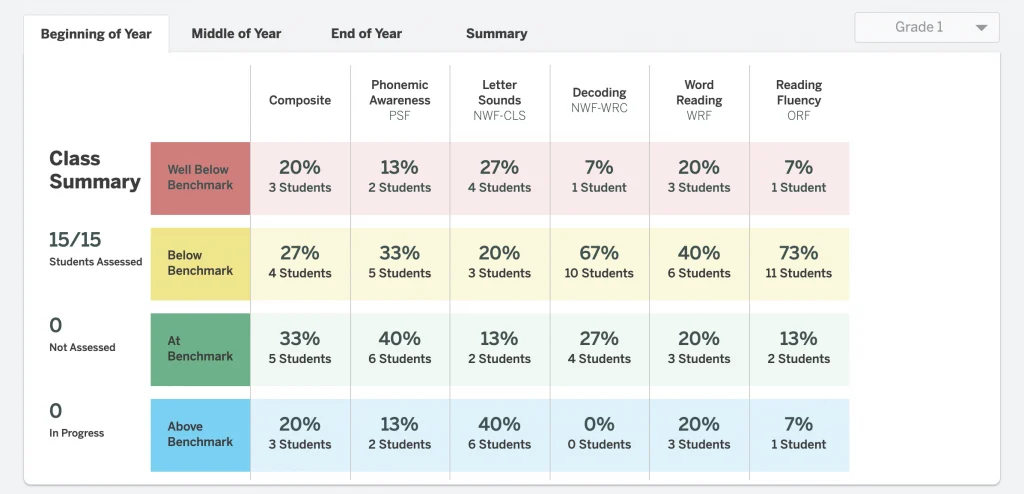
About the program
mCLASS offers teacher-administered assessment, intervention, and personalized instruction for grades K–6. Know exactly how to monitor and support every student in your classroom with features like:
- Precise one-minute measures based on over three decades of predictive data.
- Universal screening and dyslexia screening in one tool.
- Instruction that highlights observed patterns and recommends activities.
- Robust reports for teachers, specialists, administrators, and parents.
Support for your Spanish-speaking students.
By combining mCLASS Lectura and mCLASS® DIBELS 8th Edition, you’ll be able to understand where your Spanish-speaking students are in their English and Spanish literacy paths.
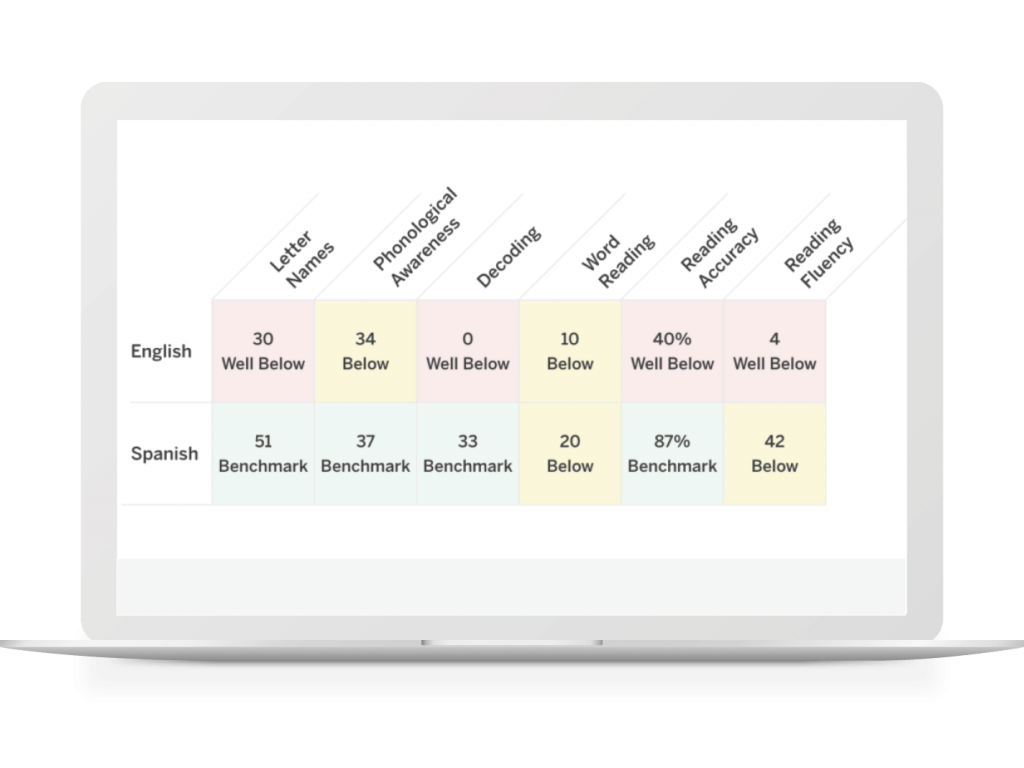
NEW! mCLASS Math
Expect more from your assessments with mCLASS Math, a brand-new benchmarking and progress-monitoring assessment system.
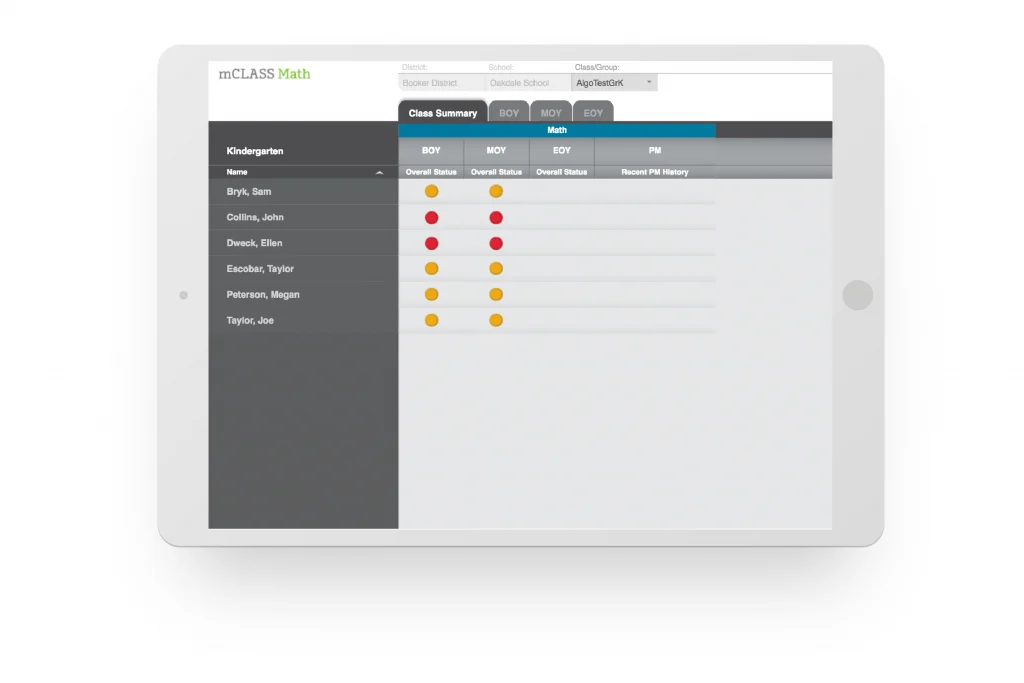
Looking for high-quality instructional materials for literacy?
Amplify CKLA 3rd edition is built on a decade of research focusing on background knowledge, foundational skills, and writing. Pair CKLA with mCLASS to align for a powerful early literacy suite.
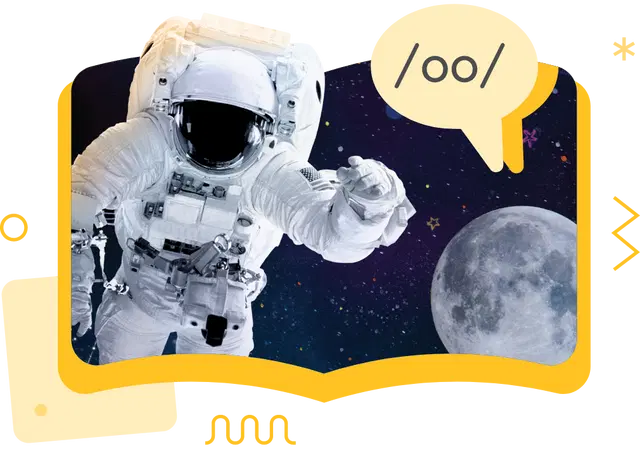
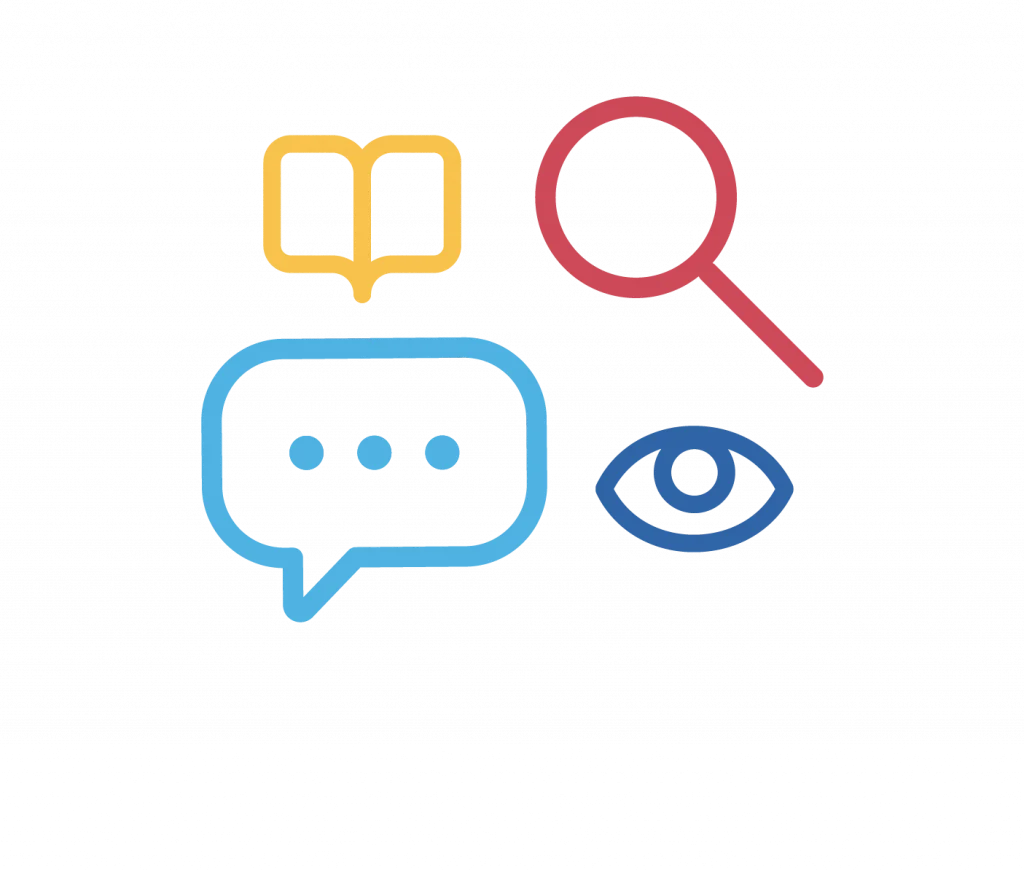
Request a demo
If you’d like a demo, complete this form and your dedicated New Jersey team will be in touch.
New research brief: K–2 early literacy improvements offer hope, but persistent challenges remain.
Amplify’s research brief on the latest K–2 middle-of-school-year literacy data reveals encouraging gains in early reading, particularly among the nation’s youngest students. This year’s kindergarten cohort has returned to pre-pandemic literacy readiness levels. But overall progress remains slow: Only 56% of students are on track for learning to read, and 29% of students are far behind.
Middle-of-year data can help schools plan for instructional changes and implement those changes before the following school year. See the report’s recommendations for actions schools and districts can take now.
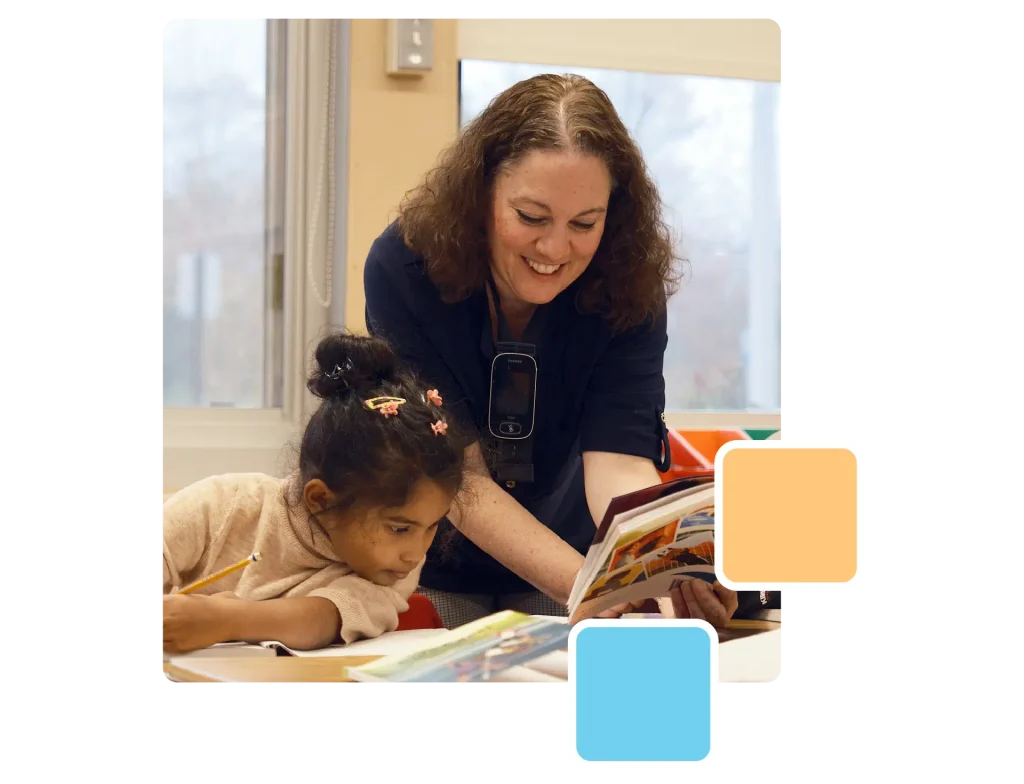
Explore Amplify’s middle-of-year research brief.
Read more research and case studies.
Amplify’s high-quality programs benefit millions of students every day using methods that are evidence-based, ESSA-aligned, and showing efficacy in a variety of contexts. Read more research and case studies and see more briefs on early literacy.
Welcome, Washington County ELA Review Committee!
Amplify CKLA and Amplify ELA aren’t your traditional core programs. They’re different to make a difference — and the results are undeniable. Truly built on the Science of Reading, our high-quality ELA solutions help teachers bring evidence-based practices to life in the classroom.
This site includes everything you need for your review, including digital access to teacher and student materials and additional review resources.

LITERACY CHAMPIONS
The 2025 Science of Reading Star Awards
Making the shift to the Science of Reading is no small feat. Every day, educators like you are successfully improving student outcomes in their schools and communities, and we’re eager to celebrate your accomplishments with the Science of Reading Star Awards.
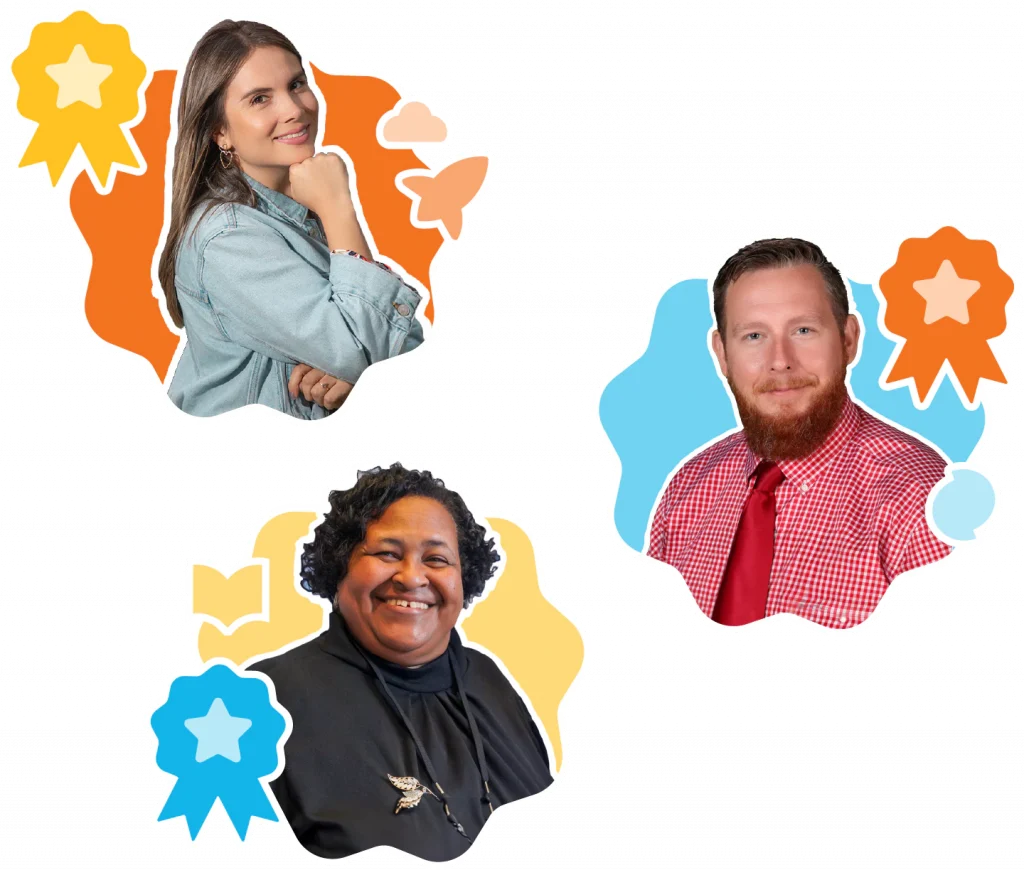
Recognizing leaders in education
Imagine the spark in a child’s eye when letters and words on a page come alive. Learning to read is nothing short of a transformation—and at the heart of this transformation are literacy educators harnessing the Science of Reading to ignite lifelong learning.
Science of Reading Star Award winners shine bright, going above and beyond to light the path for students nationwide. Be part of this celebration—help us recognize these heroes!
An award category for everyone!
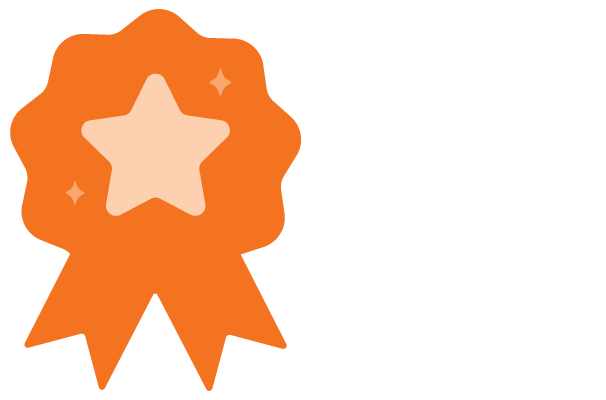
District:
The District Captain
For the district that exemplifies strong Science of Reading practices across the board

School:
The Literacy Legend
For the school that has seen significant reading gains among their students school-wide when using the Science of Reading

Individual:
The Changemaker
For showcasing exemplary Science of Reading routines and practices, and serving as an inspiration to others on the journey

Individual:
The Language Luminary
For outstanding success in developing the skills and strengths of multilingual/English learners.

Individual:
The Background Knowledge Builder
For showing the world that the Science of Reading empowers students with knowledge, context, and vocabulary from elementary through middle school
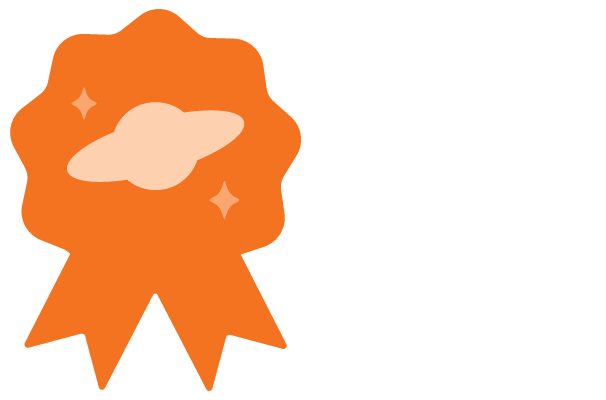
Individual:
The MTSS Maestro
For implementing a data-driven Multi-Tiered System of Supports (MTSS) framework that creates a thriving and robust literacy ecosystem

Individual:
The Science of Reading Rookie
For a teacher in their first year of teaching, already making strides with the Science of Reading
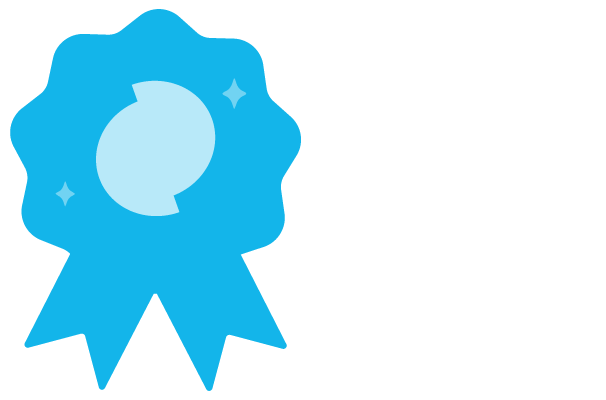
Individual: The
Cross-Disciplinarian
For skilled weaving of literacy practices across subject areas in the classroom
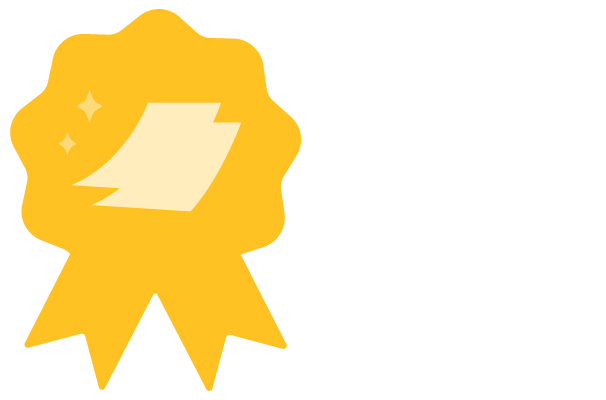
Individual:
The Writing Whiz
For integrating writing instruction with the Science of Reading, cultivating articulate and confident writers through innovative and effective practices
Data’s essential role in your Science of Reading implementation
Support teachers and students in working toward literacy goals by leading with data as you shift to the Science of Reading. With tools like ongoing progress monitoring and a robust Multi-Tiered System of Supports, we’ll show you how data can give your students the literacy instruction they deserve.

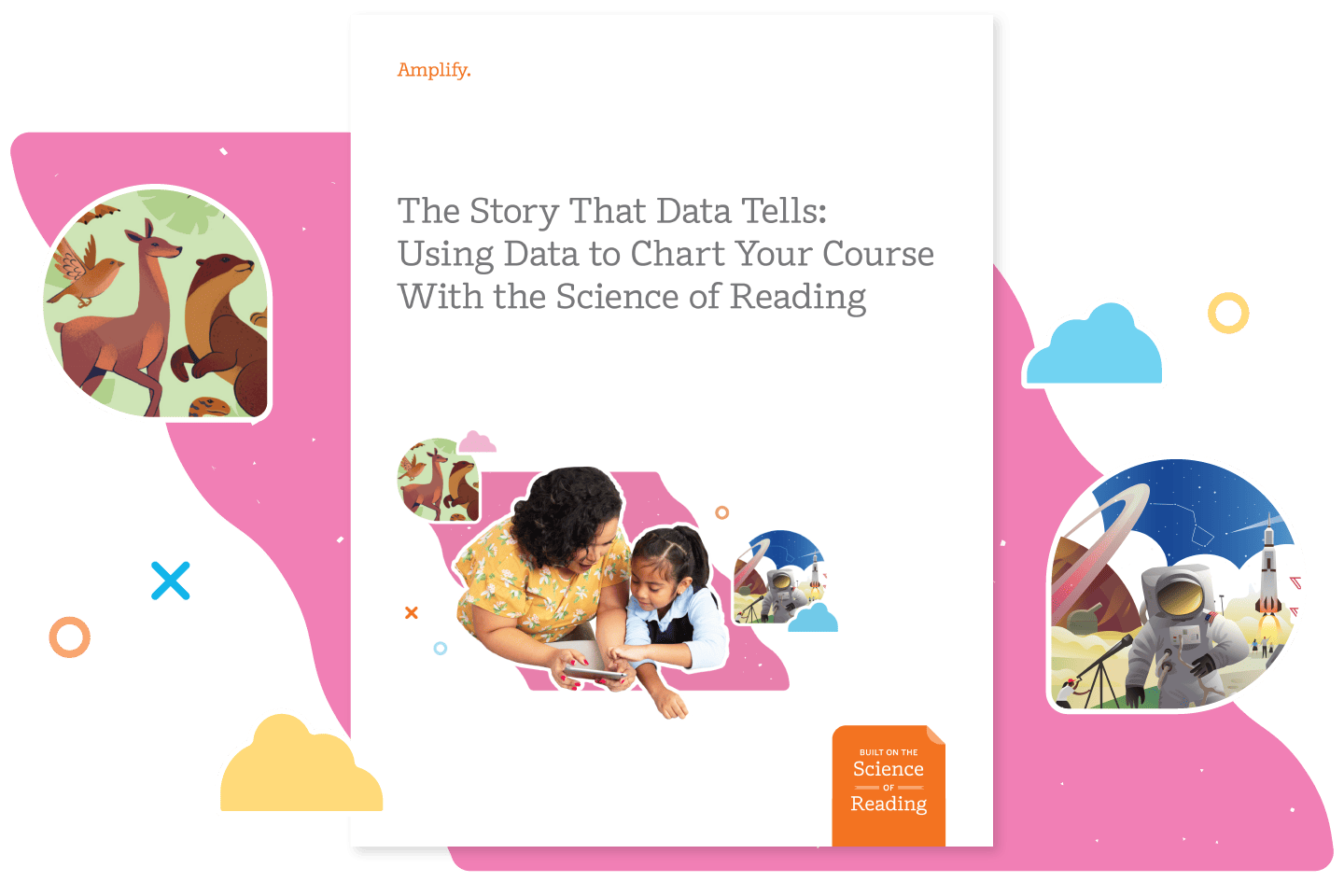
Building buy-in for change—with data
You can use literacy data to harness buy-in for a paradigm shift, monitor student progress, and support your transition to the Science of Reading. But which data measures best identify areas for growth and reveal the path to student achievement?
Our free ebook, The Story That Data Tells, will help you take the first steps in using data to guide your journey toward impactful change..
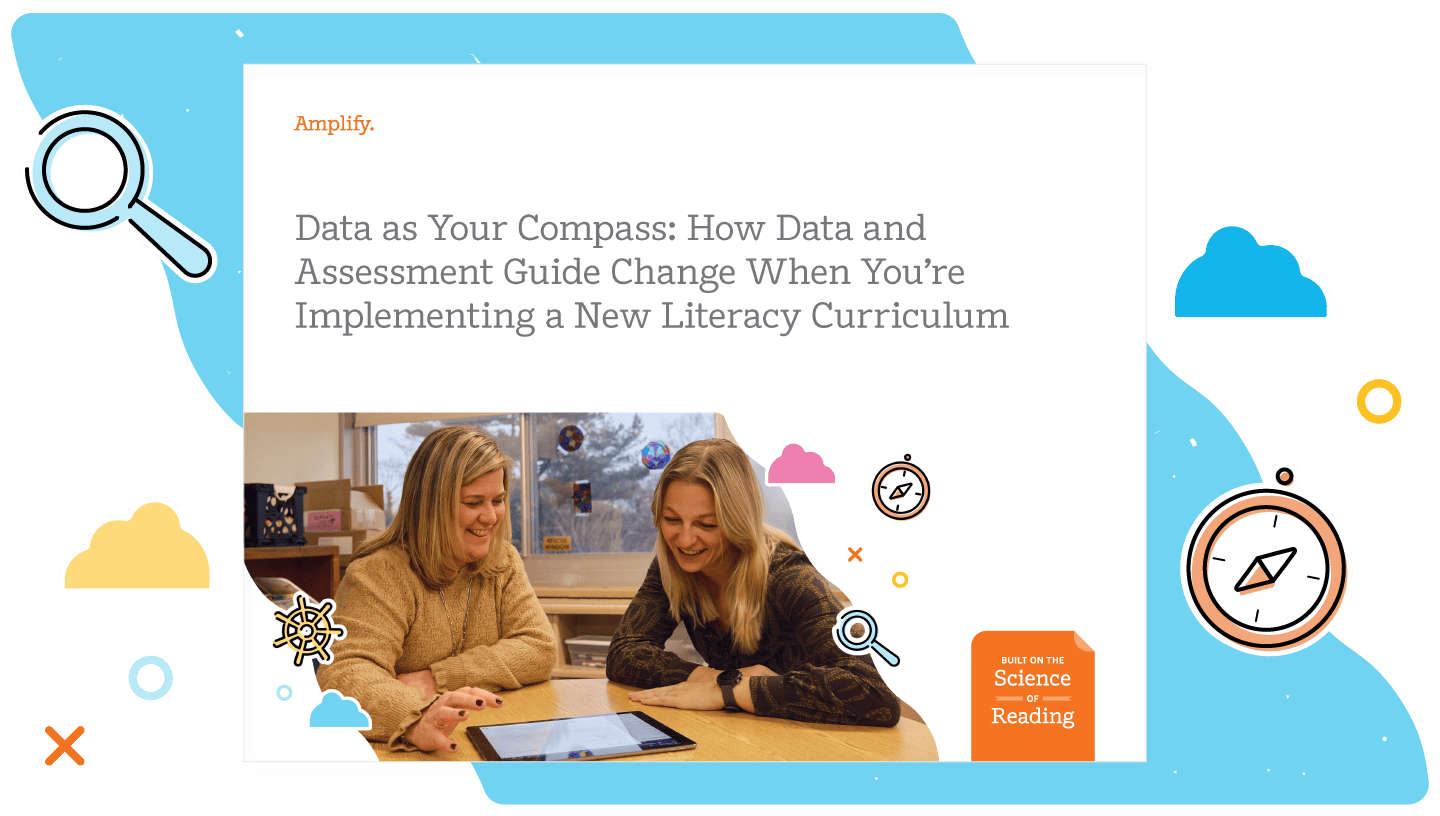
Getting started with a data-driven literacy implementation
As any experienced educator can agree, change is not straightforward in the classroom. This is especially true when it comes to shifting to the Science of Reading, a process that requires meticulous planning, open communication, and—most importantly—data.
Discover which data to focus on throughout the school year, and how to use it to direct your implementation—whether you’re just starting the shift, or already implementing the Science of Reading.
Align your MTSS to the Science of Reading
Learn more about MTSS in literacy principles and how to align it with the Science of Reading.


The five guiding principles for an effective MTSS
To provide your students with literacy instruction that meets their needs, you need seamless planning and plenty of forethought. Deliver the instruction, assessment, and personalized learning your students deserve with a Multi-Tiered System of Supports grounded in data and the Science of Reading.
Read about the five guiding principles that can help you align your MTSS with the Science of Reading in our free ebook Systems of Success: Getting Started With a Multi-Tiered System of Supports Aligned to the Science of Reading.
Review the five guiding principles
An effective MTSS framework requires collaboration from all stakeholders (such as teachers, administrators, and caregivers) to ensure students have access to the right instructional support at the right time.
Frequent collection and interpretation of high-quality data is essential to identifying student needs, monitoring progress, and guiding decision-making. Universal screening and progress monitoring data are used to evaluate the effectiveness of all tiers in an MTSS, and to identify students at risk.
An MTSS provides increasing levels of support for students when they need it. It also focuses on prevention first to reduce the need for intervention later.
Implementing evidence-based instruction and interventions with fidelity improves outcomes for all students. A focus on all students, not just those in need of additional support, ensures that all students can access high-quality instruction.
In an MTSS framework, decisions are based on research and the constantly evolving needs of all students and schools.

What Does Data Tell Us? Building Buy-In and Determining Areas of Need With Data
Data can paint a clear picture of where your students are, where they need to go, and how the Science of Reading can get them there. Hear from Amplify Executive Director of Learning Science Danielle Damico about the story that data tells, how to use data to build buy-in, and the kind of data you should be collecting to ensure a successful implementation.
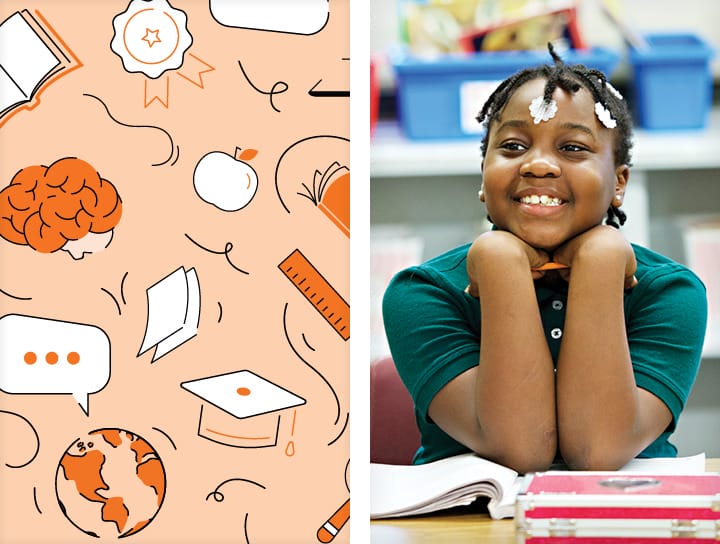
Starting Your Science of Reading Shift With Screening: How to Use Assessment Data as a Building Block of MTSS
Screening and assessment data can drive MTSS-aligned change management in your district, supporting you as you navigate and sustain lasting transformation. Learn more about the importance of universal screening in your literacy implementation.
Thank you for requesting our Science of Reading Resources!
You may now download them using the links below.
Seleccione un programa a continuación:
Lleve el mundo a los estudiantes con un plan de estudios de alfabetización comprobado de PreK a 5.º grado
Amplify Core Knowledge Language Arts (CKLA) es el plan de estudios líder en alfabetización temprana basado en la Ciencia de la lectura. Mediante la combinación del desarrollo de conocimientos y de destrezas fundamentales a partir de la investigación, nuestra instrucción orienta a los educadores en el desarrollo de lectores, escritores y pensadores capaces.
Con una poderosa plataforma en línea y un plan de estudios paralelo de lengua y literatura en español, Amplify CKLA ofrece una solución integral para educadores y estudiantes de PreK a 5.º grado. For English version, please click here.
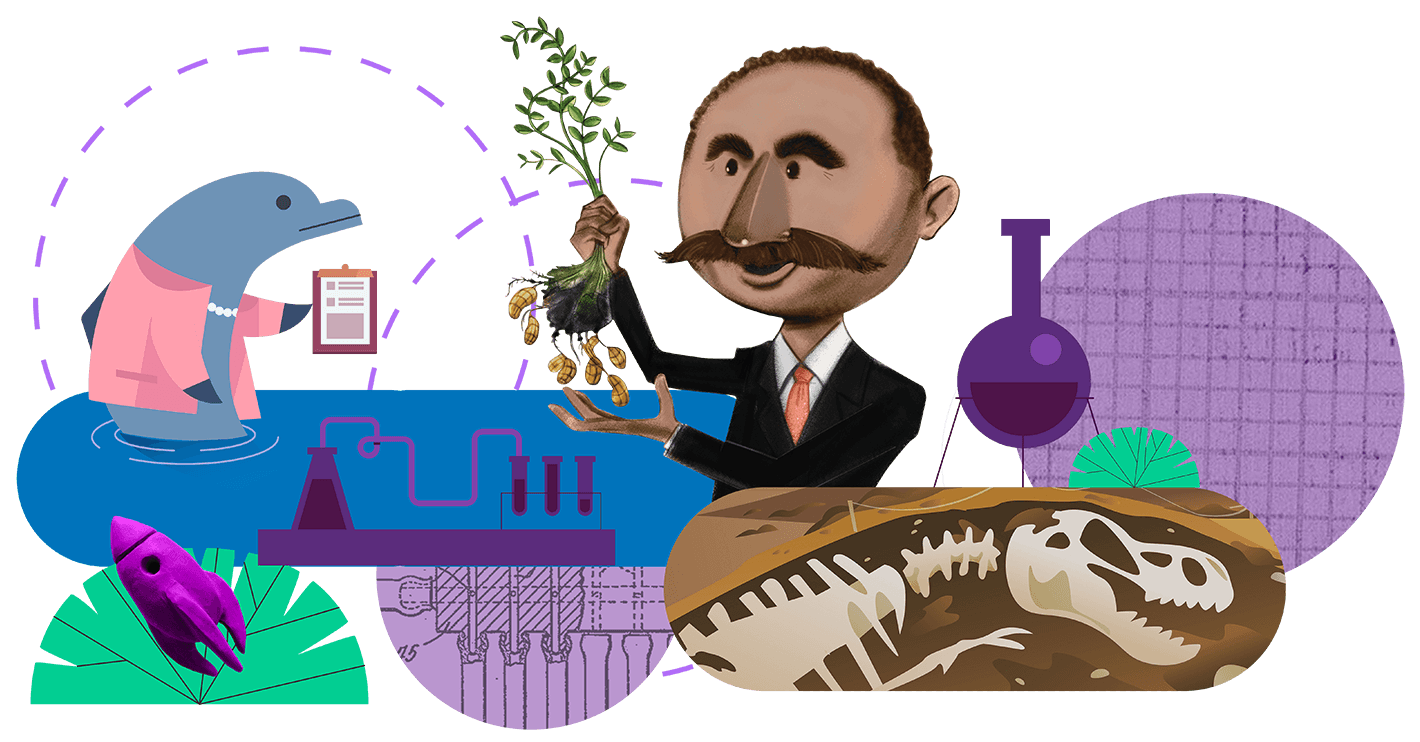
Los resultados son fruto del conocimiento previo
El plan de estudios de alfabetización de Amplify CKLA de PreK a 5.º grado equipa a los estudiantes con un rico conocimiento que se construye intencionalmente para inspirar curiosidad e impulsar resultados. Explore las investigaciónes que revelan la eficacia del plan de estudios basado en el conocimiento, así como el logro de Amplify CKLA como intervención educativa de conformidad con la ESSA (nivel 1 de evidencia fuerte).
Amplify CKLA serves
38,000+
Salones de clase
2,700,000+
Estudiantes
50
Estados de EE. UU. y D.C.
Revisado de forma independiente y rigurosa
Amplify CKLA se encuentra entre los pocos planes de estudio que es tanto reconocido por la campaña Knowledge Matters (por su excelencia en construir conocimiento intencionalmente) y como calificado verde en EdReports, obteniendo puntuaciones verdes en todos los criterios.
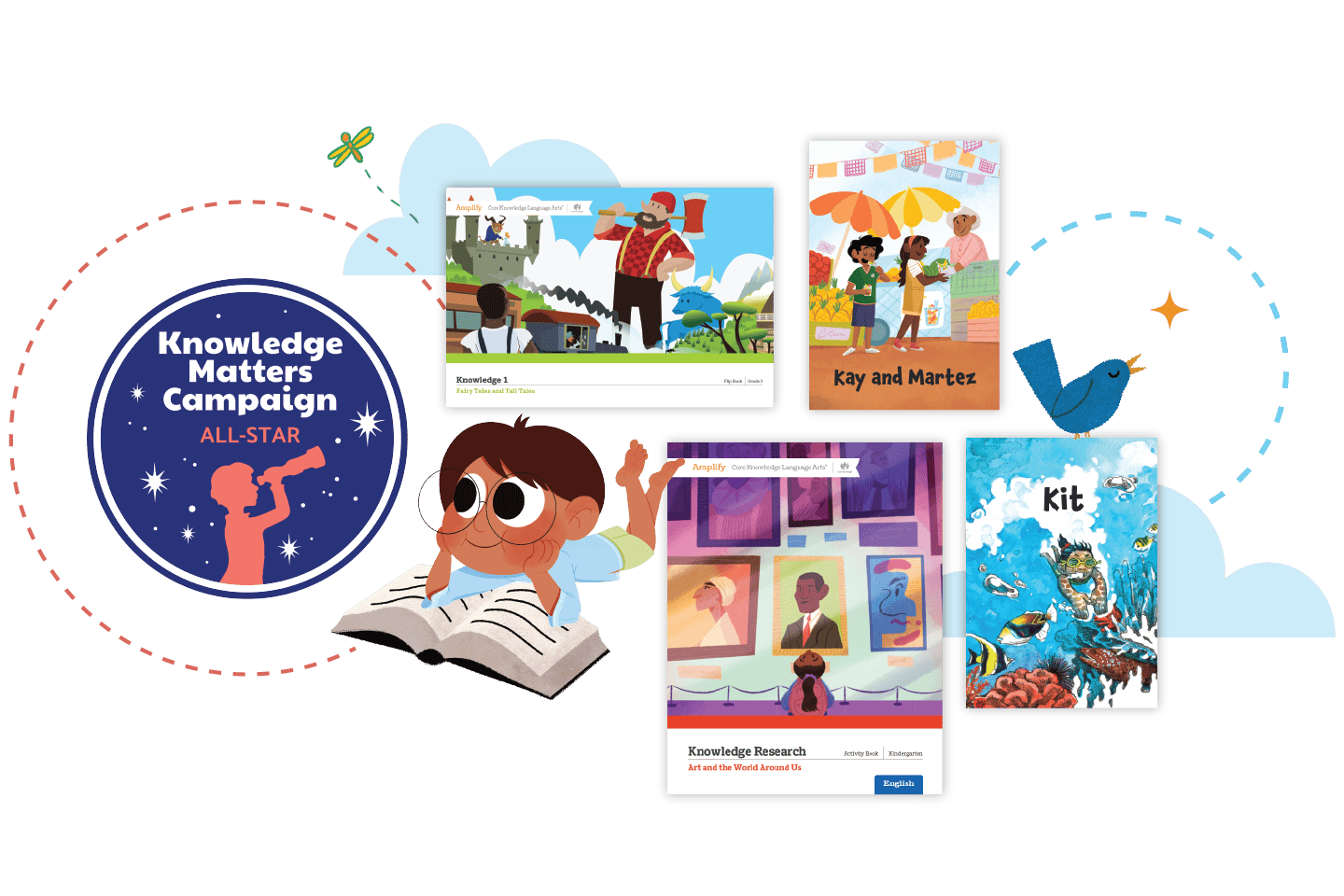
Nuestro enfoque
Basado en la Ciencia de la lectura y siguiendo el principio de Core Knowledge, el plan de estudios Amplify CKLA para PreK a 5.º grado combina conocimientos de contenido ricos y diversos en historia, ciencias, literatura y artes con una instrucción sistemática de destrezas fundamentales basada en la investigación.
Basado en la Ciencia de la lectura
Como la primera casa editorial en crear un plan de estudios basado en la Ciencia de la lectura, ponemos la investigación en acción con una instrucción explícita y sistemática de destrezas fundamentales junto con una secuencia comprobada de construcción de conocimientos. En colaboración con expertos y profesionales de la educación, proporcionamos recursos poderosos que generan resultados reales. Explore nuestras historias de éxito de Ciencia de la lectura.
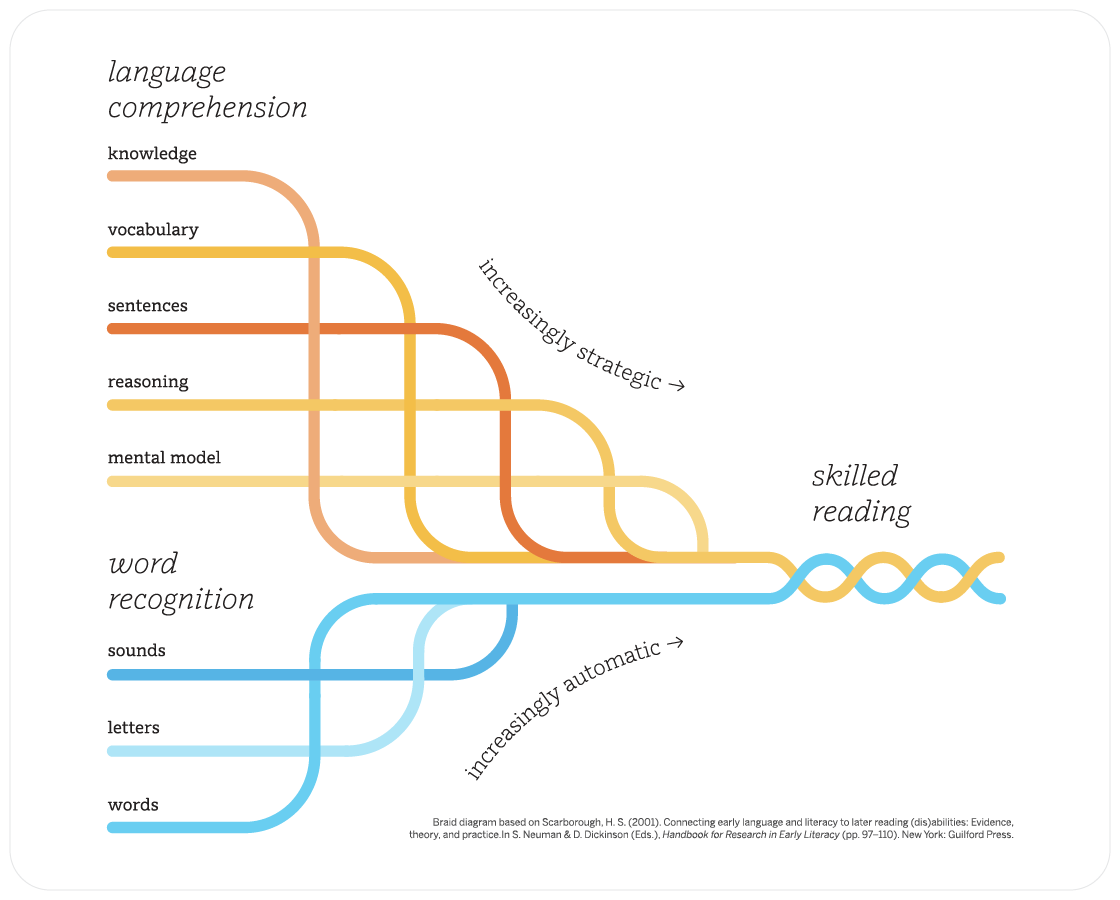
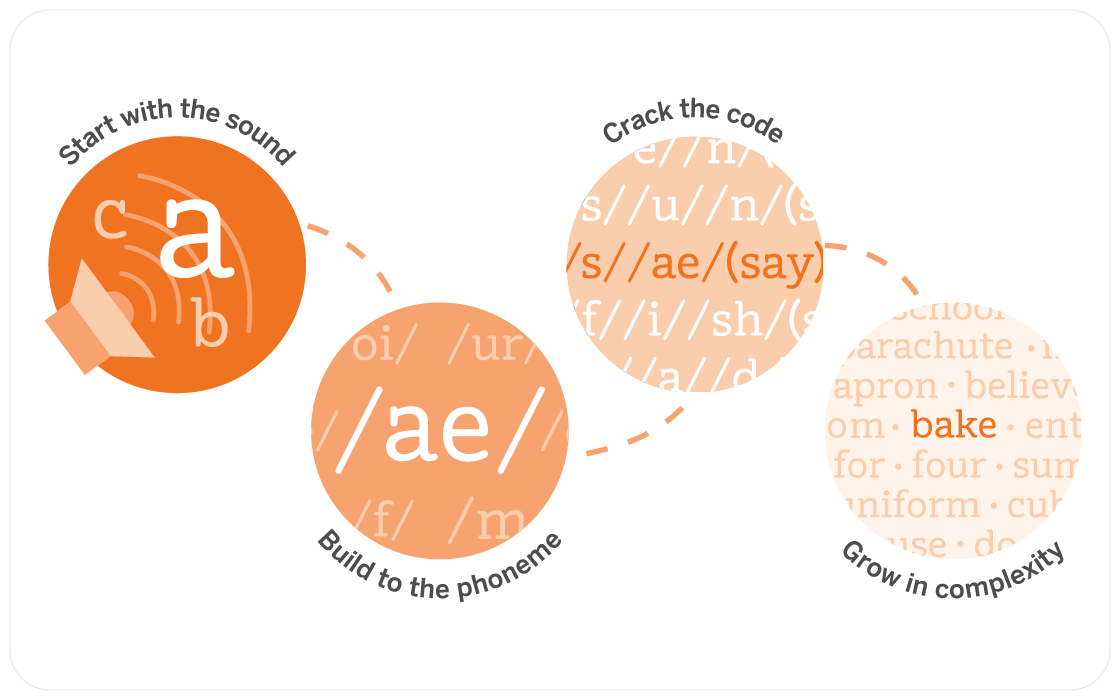
Desarrolla destrezas fundamentales con instrucción explícita y sistemática
El alcance y la secuencia basados en la investigación de Amplify CKLA progresan desde el desarrollo de destrezas simples hasta el más complejo, comenzando con la conciencia fonológica y fonémica. La instrucción le guía en la enseñanza explícita de las 150 ortografías de los 44 sonidos del inglés, con una progresión intencional y una revisión de las destrezas para preparar a sus estudiantes para el éxito.
Adopta una metodología demostrada de adquisición de conocimientos
Siguiendo la Core Knowledge Sequence, un enfoque coherente, acumulativo y de contenido específico para desarrollar conocimientos, los estudiantes profundizan y hacen conexiones entre áreas de contenido para construir una base de conocimientos sólida que les permita comprender textos complejos. Vea cómo se ha demostrado que el plan de estudios Core Knowledge mejora los puntajes de lectura y elimina las brechas en el rendimiento.
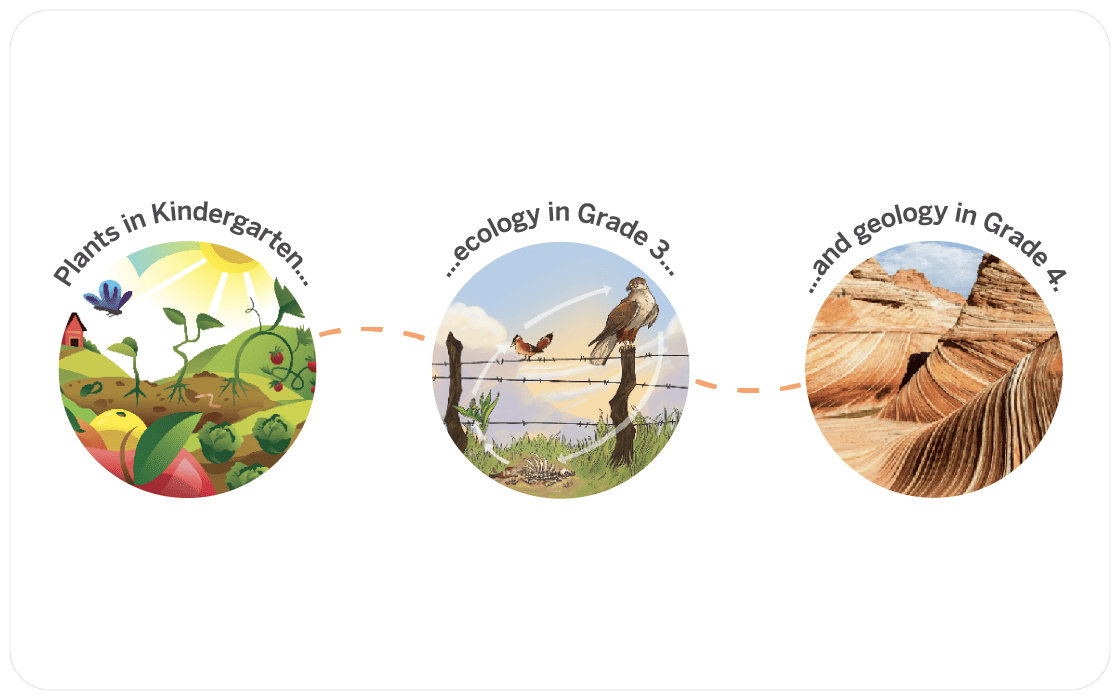

Creado en colaboración con la Core Knowledge Foundation
Amplify CKLA es el líder en materiales educativos de alta calidad para lengua y literatura de primaria, creado en colaboración con la Core Knowledge Foundation para ayudar a los estudiantes a desarrollar con eficacia un conocimiento profundo del contenido y destrezas fundamentales.
Cultivar la alfabetización bilingüe con programas paralelos en inglés y español
Amplify Caminos es el compañero perfecto en lengua y literatura del idioma español para Amplify CKLA. Los programas alineados combinan un rico conocimiento del contenido con una instrucción sistemática de destrezas fundamentales basada en la Ciencia de la lectura que sigue los principios de alfabetización bilingüe, y respalda múltiples modelos de enseñanza.
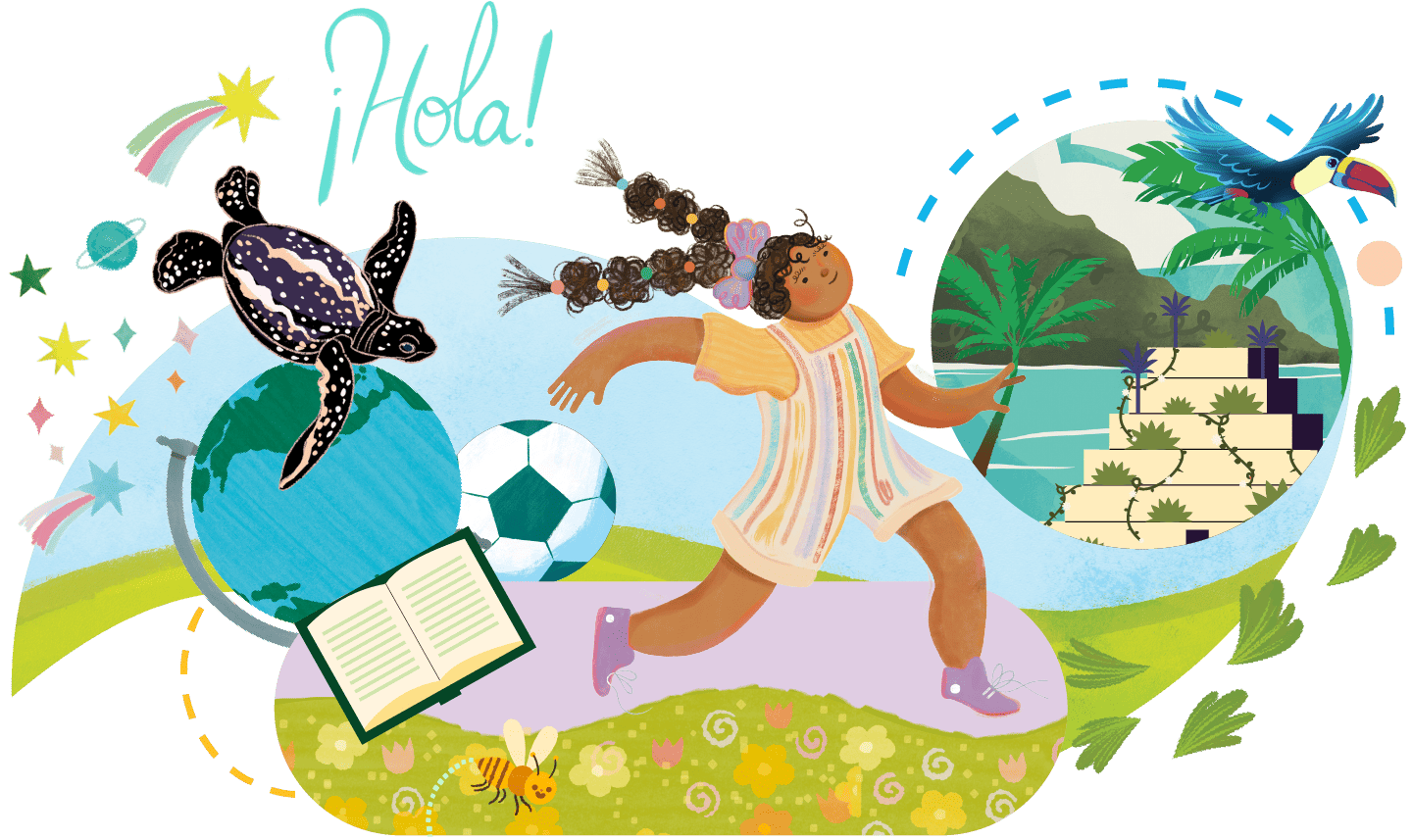
Qué se incluye
El programa proporciona atractivos materiales impresos y multimedia diseñados para construir una base sólida y rica en lectoescritura en todos los salones de clase.
Materiales de alta calidad para los maestros
Los maestros de Amplify CKLA brindan instrucción de manera eficaz con recursos impresos y digitales, que incluyen:
- Guías para el maestro con diferenciación integrada.
- Evaluaciones formales e informales.
- Diapositivas de lecciones listas para usar y personalizables.
- Libros comerciales y Guías literarias.
- Recursos docentes y desarrollo profesional a pedido.
Recursos inmersivos para estudiantes
Los estudiantes de Amplify CKLA se mantienen interesados con una amplia gama de recursos impresos y digitales, que incluyen:
- Descodificables originales y Libros grandes de lectura en voz alta (K a 2.º grado), Libros de lectura (3.er a 5.º grados) y libros comerciales (K a 5.º grado).
- Cuadernos de actividades para estudiantes con evaluaciones integradas (K a 5.º grado).
- Unidades de investigación para investigaciones independientes desarrollados en torno a un libro comercial (K a 5.º grado).
- Diario del poeta y Diario del escritor (libros de lectura con espacio para escribir para 4.º y 5.º grados).
- Misiones de conocimiento para apoyar el aprendizaje inmersivo basado en problemas en los grados 3.º a 5.º.
Materiales prácticos de fonética
La fonética multisensorial y los recursos de destrezas fundamentales ayudan a los estudiantes a practicar destrezas clave utilizando enfoques divertidos y variados que desarrollan la independencia.
- Carpetas para la práctica de ortografía (K).
- Tarjetas de letras (K a 2.º grado).
- Tarjetas de sílabas (K a 2.º grado).
- Tarjetas de imágenes (K a 3.er grado).
- Tarjetas de combinación de imágenes (K).
- Rotafolios de códigos de consonantes y vocales (1.er y 2.º grados).
- Biblioteca de sonido digital exclusiva.
Experiencia digital robusta
Los recursos para maestros y estudiantes de Amplify CKLA están disponibles a través de una plataforma de experiencia digital que mejora la instrucción y le ahorra tiempo. Con todo lo que necesita en un solo lugar, puede planificar lecciones, presentar contenido y revisar el trabajo de los estudiantes de manera eficaz.
- Presentaciones de lecciones con diapositivas listas para usar y personalizables.
- Herramienta dinámica para estudiantes con revisión en vivo.
- Experiencia interactiva y amigable para los estudiantes.
- Integración LMS.
- Videos animados de Desarrollo de conocimiento
- Lecturas en voz alta grabadas.
- Sitio web de desarrollo profesional.
- Apoyo al programa en tiempo real por correo electrónico, chat en vivo y teléfono.
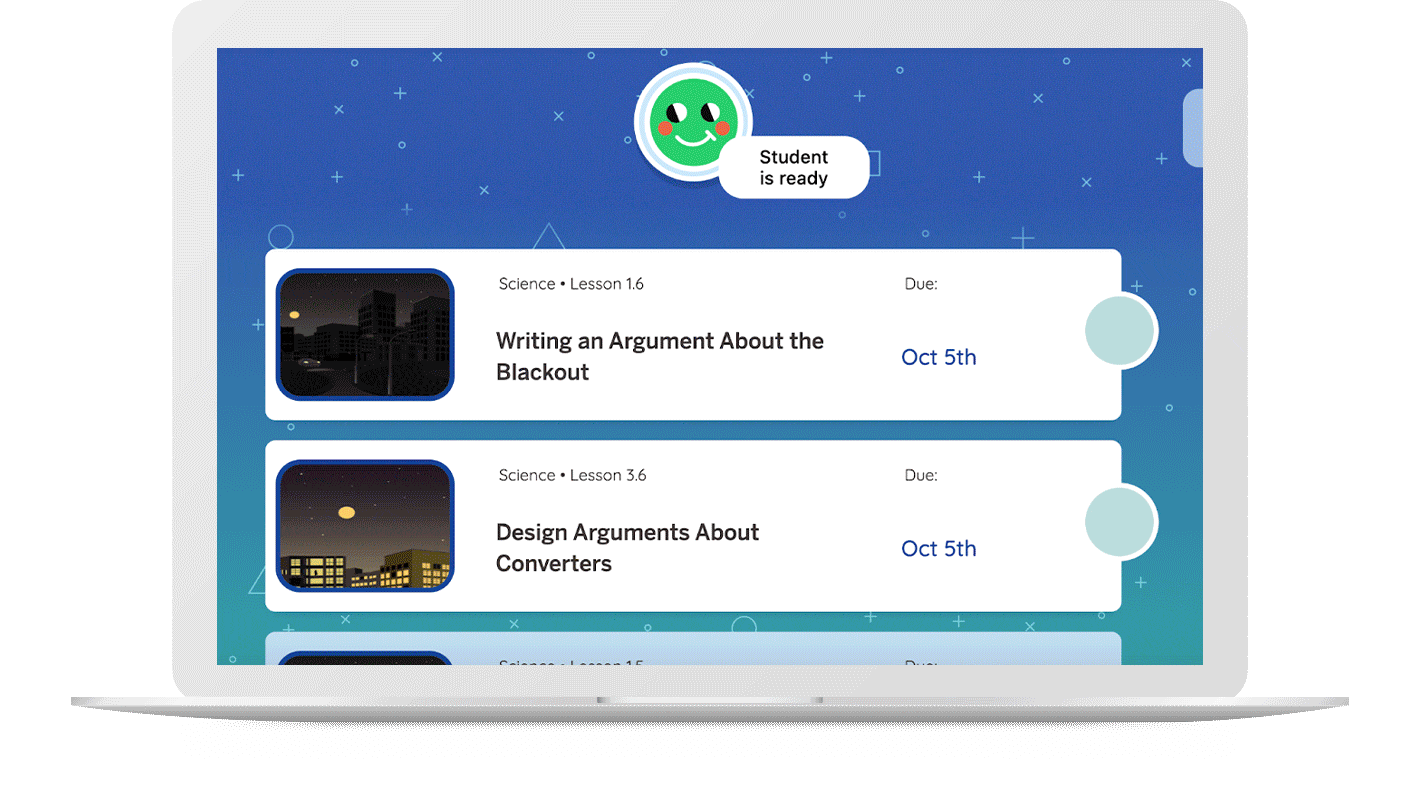
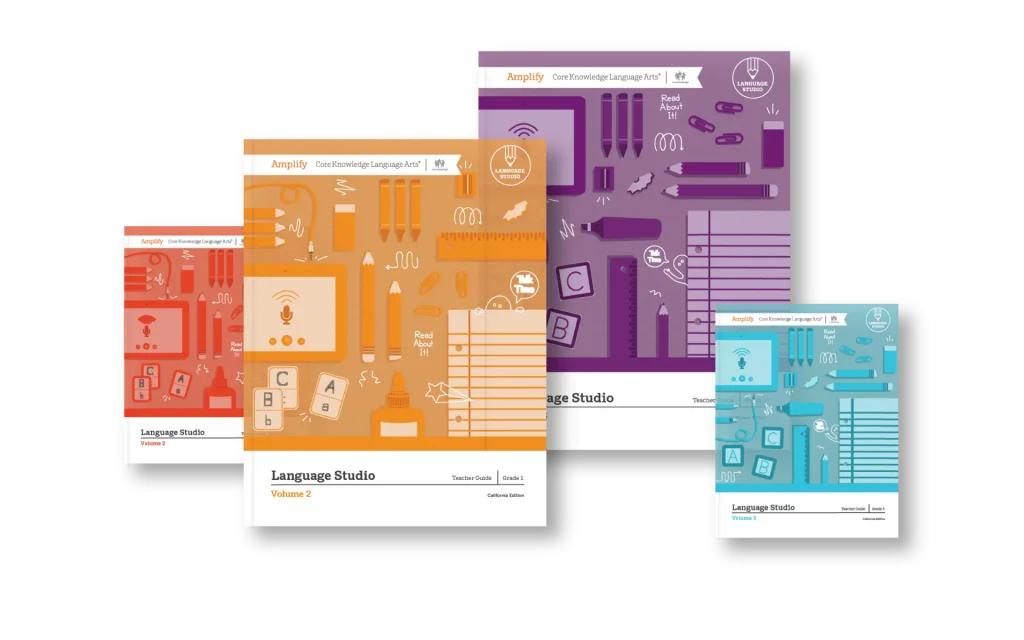
Programa para estudiantes del idioma inglés
Language Studio, diseñado para Amplify CKLA, brinda instrucción diaria alineada con WIDA para que los estudiantes del idioma inglés profundicen su inglés académico.
Programa de exploración de escritura
Writing Studio, un complemento único para Amplify CKLA, ofrece una inmersión profunda en la redacción de información, narrativa y opinión para formar escritores fuertes y apasionados.
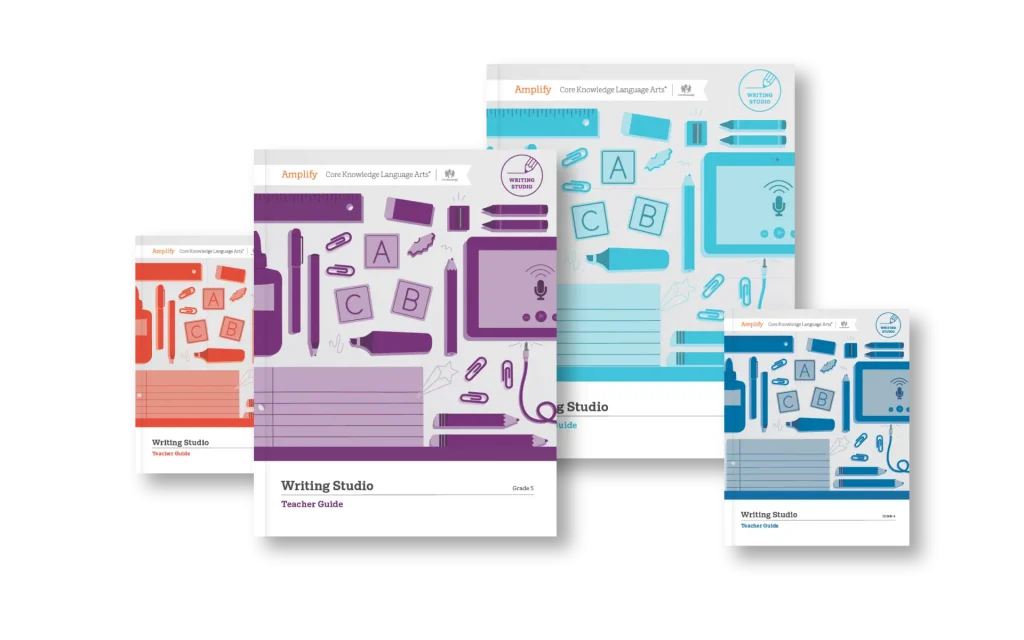
Explore otros programas basados en la Ciencia de la lectura
Todos los programas de nuestro paquete de alfabetización están diseñados para que se respalden y complementen entre sí. Aprenda más sobre nuestros programas relacionados:
Boost Reading in Action
Boost Reading (formerly Amplify Reading) immerses students in an engaging game world while delivering the skills practice and supports they need to become proficient readers. While students are making progress in the game world and receiving personalized feedback, teachers receive meaningful data to track their growth.
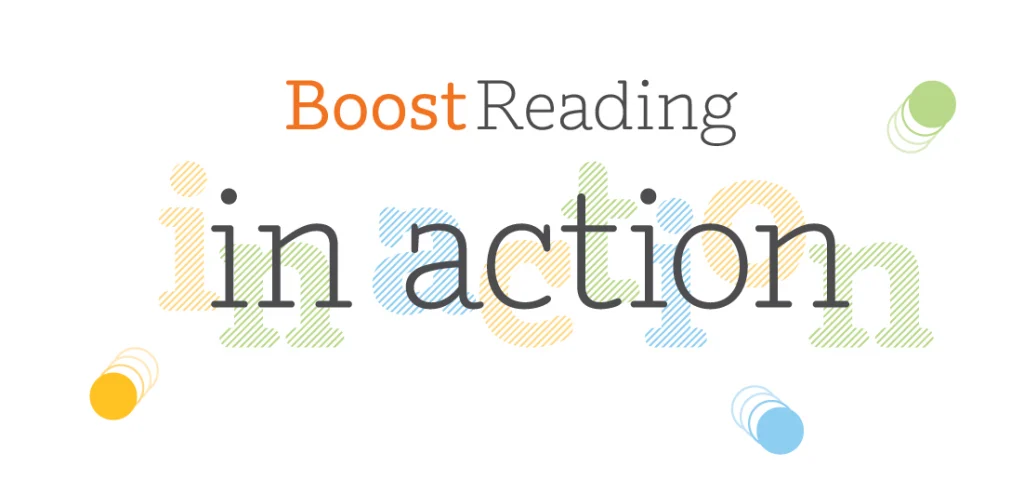
Inside the Classroom
Engaging, personalized learning
Using the science behind engagement and motivation, we built Boost Reading to deliver compelling narrative experiences where progress in the storyline is mapped to reading growth, helping students understand the value of effort and practice.
What teachers and students say about Boost Reading
“When I’m using Boost Reading, I feel as if I’m not even reading, I feel as if I’m playing a game. It’s a whole new world,” said one Boost Reading student. To hear from real teachers and students about their experiences with Boost Reading, watch the video on the left.
Spotlights
Student motivation
We don’t want students just to learn to read. We want students to love to read. Students using Boost Reading enter immersive story worlds that evolve as they develop language and decoding skills, having fun while building confidence in their own ability every step of the way.
Personalized instruction
Students embark on personalized journeys that match their profiles to a comprehensive range of skills—from foundational skills to comprehension to close reading. Every decision students make helps Boost Reading deliver them the right skills at the right time.
Based on the Science of Reading
Boost Reading is part of Amplify’s greater early literacy ecosystem that provides instruction proven to move the needle on reading growth. Extend and support core instruction using high-quality materials that provide more than just practice. Learn more about our research-based reading curriculum in this video.
Part of the mCLASS® literacy suite
Educators can use data from mCLASS with DIBELS® 8th Edition to place students into the Boost Reading learning progression in the spot that’s exactly right for their abilities and areas of need, with no additional assessment required.
Bring the world to students with a proven PreK–5 literacy curriculum
Amplify Core Knowledge Language Arts (CKLA) is the leading early literacy curriculum grounded in the Science of Reading. By combining knowledge-building and research-based foundational skills, our instruction guides educators in developing strong readers, writers, and thinkers.
With a powerful online platform and a parallel Spanish language arts curriculum, Amplify CKLA provides a comprehensive solution for PreK–5 educators and students. Para la versión en español, haga clic aquí.

Background knowledge drives results
The Amplify CKLA PreK–5 literacy curriculum equips students with rich knowledge that intentionally builds to inspire curiosity and drive results. Explore research revealing the power of our knowledge-based curriculum including a study that meets qualifications for ESSA Tier I: Strong Evidence.
Amplify CKLA serves
38,000+
Classrooms
2,700,000+
Students
50
U.S. States and D.C.
Independently and rigorously reviewed
Amplify CKLA is among the few curricula that is both recognized by the Knowledge Matters Campaign—for its excellence in intentionally building knowledge—and rated all-green on EdReports, earning green scores across all gateways.

Our approach
Grounded in the Science of Reading and following the Core Knowledge approach, the Amplify CKLA PreK–5 curriculum combines rich content knowledge in history, science, literature, and the arts with systematic, research-based foundational skills instruction.
Grounded in the Science of Reading
As the first publisher to build a curriculum based on the Science of Reading, we put research into action with explicit systematic foundational skills instruction alongside a proven knowledge-building sequence. In collaboration with education experts and practitioners, we provide powerful resources that drive real results. Explore our Science of Reading success stories.


Developing foundational skills with explicit, systematic instruction
Amplify CKLA’s research-based scope and sequence progresses from simple to more complex skill development, starting with phonological and phonemic awareness. Instruction guides you in explicitly teaching the 150 spellings for the 44 sounds of English, with an intentional progression and review of skills to set your students up for success.
Following a proven knowledge-building approach
Following the Core Knowledge Sequence–a content-specific, cumulative, and coherent approach to building knowledge–students dig deeper and make connections across content areas to build a robust knowledge base for comprehending complex texts. See how the Core Knowledge curriculum is proven to improve reading scores and eliminate achievement gaps.


Built in partnership with the Core Knowledge Foundation
Amplify CKLA is the premier high-quality instructional materials offering for elementary language arts, built in partnership with the Core Knowledge Foundation to help students effectively develop deep content knowledge and foundational skills.
Cultivating biliteracy with parallel English and Spanish programs
Amplify Caminos is the perfect Spanish language arts partner to Amplify CKLA. The aligned programs combine rich content knowledge with systematic foundational skills instruction grounded in the Science of Reading that follows biliteracy principles, and supports multiple teaching models.

What’s included
The program provides engaging print and multimedia materials designed to build a robust literacy-rich foundation in every classroom.
High-quality teacher materials
Amplify CKLA teachers effectively deliver instruction with print and digital resources, including:
- Teacher Guides with embedded differentiation.
- Formal and informal assessments.
- Ready-made and customizable lesson slides.
- Trade books and Novel Guides.
- Teacher resources and on-demand professional development.
Immersive student resources
Amplify CKLA students stay engaged with a variety of print and digital resources, including:
- Original decodables and read-aloud Big Books (K–2), Student Readers (3–5), and trade books (K–5).
- Student Activity Books with embedded assessments (K–5).
- Research units for independent research built around a trade book (K–5).
- Poet’s Journal and Writer’s Journal (write-in student readers for Grades 4–5).
- Quests for the Core to support immersive, problem-based learning in Grades 3–5.
Hands-on phonics materials
Multisensory phonics and foundational skills resources help students practice key skills using fun, varied approaches that build independence.
- Chaining Folder (K)
- Letter Cards (K–2)
- Syllable Cards (K–2)
- Image Cards (K–3)
- Blending Picture Cards (K)
- Consonant and Vowel Code Flip Books (1–2)
- Exclusive digital Sound Library
Robust digital experience
Amplify CKLA teacher and student resources are available through a digital experience platform that enhances instruction and saves you time. With everything you need in one place, you can effectively plan lessons, present content, and review student work.
- Ready-made yet customizable lesson presentation slide decks
- Dynamic live-review student tool
- Interactive and student-friendly experience
- LMS integration
- Knowledge Builder animated videos
- Recorded Read-Alouds
- Professional development website
- Real-time program support via email, live chat, and phone


English Language Learner program
Language Studio, designed for Amplify CKLA, provides WIDA-aligned daily instruction for English Language Learners to deepen their academic English.
Writing explorations program
A unique companion for Amplify CKLA, Writing Studio provides a deep dive into informational, narrative, and opinion writing to build strong, passionate writers.

Explore more programs based on the Science of Reading
All of the programs in our literacy suite are designed to support and complement each other. Learn more about our related programs:
Dyslexia: Early screening for risk
Dyslexia is one of the most common forms of learning disability, with some estimates suggesting that it may affect more than 17 percent of school-age students (Shaywitz, 2004). Although there are many different forms of reading difficulty, dyslexia is primarily characterized by difficulty in word-level reading ability, often due to deficits in automaticity or phonological processing.
Universal screening is an essential practice for identifying reading difficulties in the early grades, including characteristics of dyslexia. According to the International Dyslexia Association (IDA), early identification of reading difficulties helps get students the support they need and prevents further difficulty.

Amplify’s universal and dyslexia screening in one too
Measure what matters
mCLASS® with DIBELS 8th Edition® provides a formative assessment solution that supports the identification of students at risk for reading difficulties, including difficulty related to dyslexia. DIBELS 8th Edition was developed by the University of Oregon with the primary focus of ensuring that the measures are able to meet state-level dyslexia screening requirements.
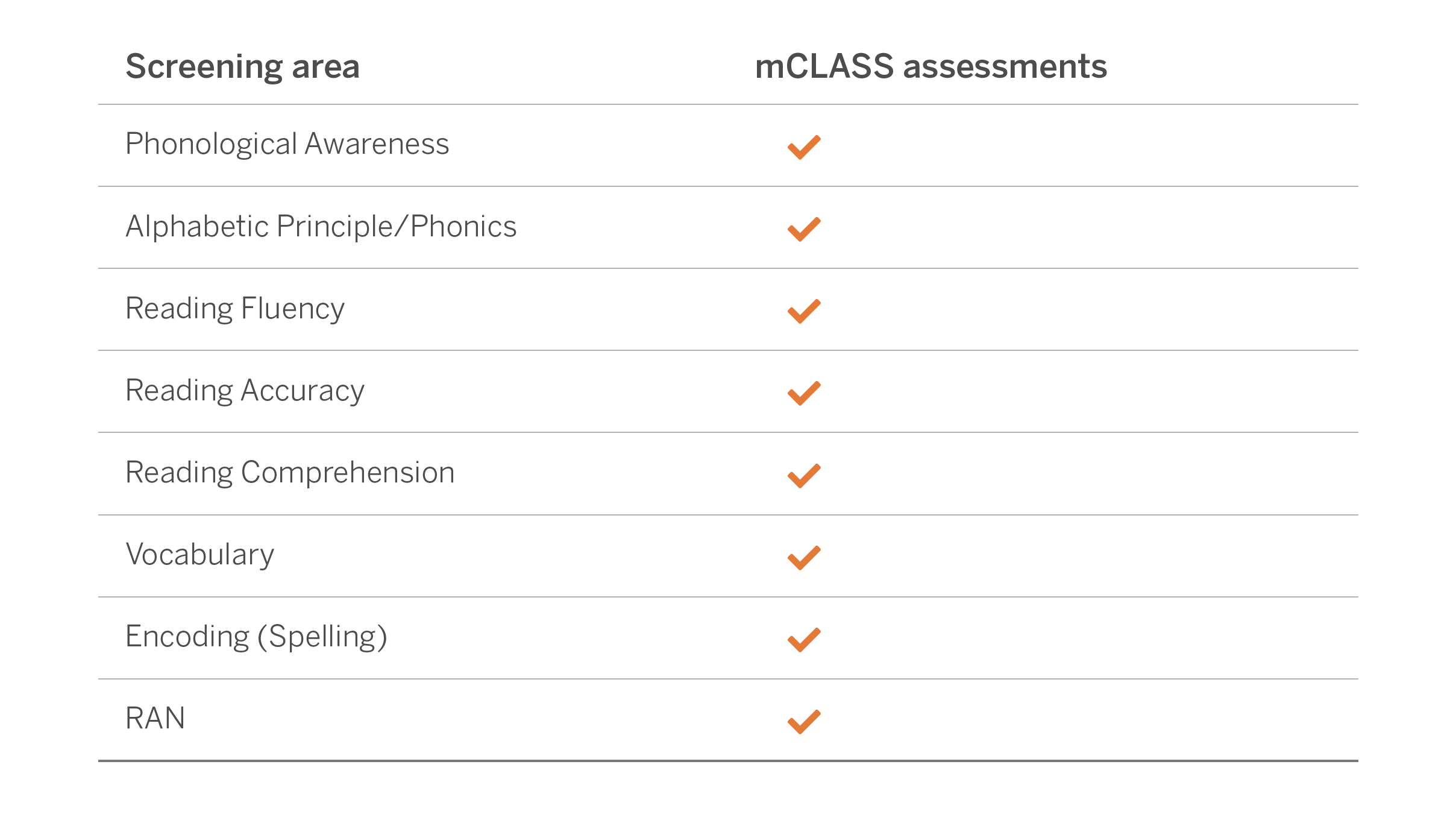

How mCLASS identifies students at risk of dyslexia
When screening for risk, nothing can replace the power of listening to a child read—listening to their strengths as a reader AND their struggles.
With mCLASS, teachers administer predictive one-minute assessment measures that involve listening to students interact with sounds, letters, words, and text while screening for reading difficulties.
They will document all behaviors simultaneously on a mobile device. Accurate, efficient collection of data allows for immediate analysis that results in a clear identification of risk, not only for reading difficulty but also for dyslexia.
Research and statistics
mClass solutions

mCLASS Instruction
mCLASS Instruction provides teachers with a single view of the personalized, blended instruction (teacher-led and online) that is available to support individual student or small-group needs in skill areas directly assessed in the mCLASS assessment.
Employ teacher-led instruction for whole classes, small-groups, and individual students, including activities created by Susan Hall, author of I’ve DIBEL’d, Now What, are provided for skill practice.
Additional instructional resources for comprehension include grade-level passages that provide more practice.

Boost Reading
Get online student instruction and practice with Boost Reading, which places students in a personalized instruction path based on mCLASS assessment data and adapts based on progress in the curriculum. Students engage with skills-based games as well as an eReader.

mCLASS intervention
Receive rigorous, teacher-led intervention with mCLASS Intervention to address students most in need of support.

mCLASS Home Connect
Teachers can download a letter with student assessment results to send home to parents
and guardians, or use as a basis for discussion at conferences. Home Connect letters describe how the measures relate to skills development. Progress bars indicate the student’s performance on each measure.
Home Connect extends reporting to parents and guardians in a way that is easily understood and provides suggestions for positive action.
Request a demo
Simply complete the form to request a demo, and an Amplify sales representative will be in touch.

Science of Reading resources hub
The Science of Reading is complex, so your understanding of it should be, too. That’s why our resource pages break it all down for you, from word recognition and comprehension to dyslexia and Multi-Tiered Systems of Supports. Equip yourself with the knowledge you need to make the greatest difference to your students!

Select a resource:
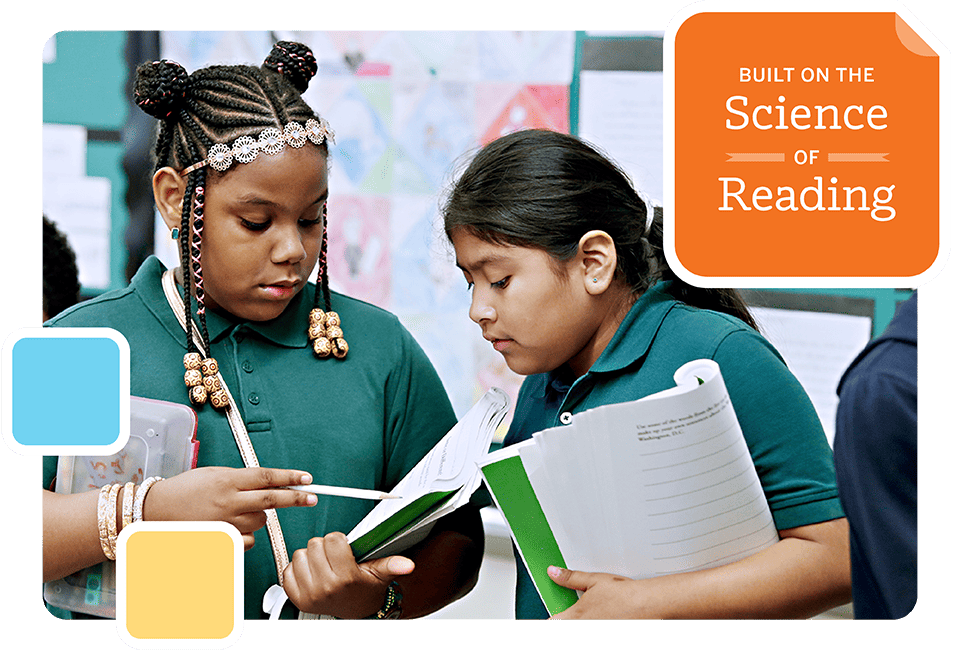
Amplify’s Science of Reading overview
Learn the ins and outs of the Science of Reading—what it means, and why its principles matter.
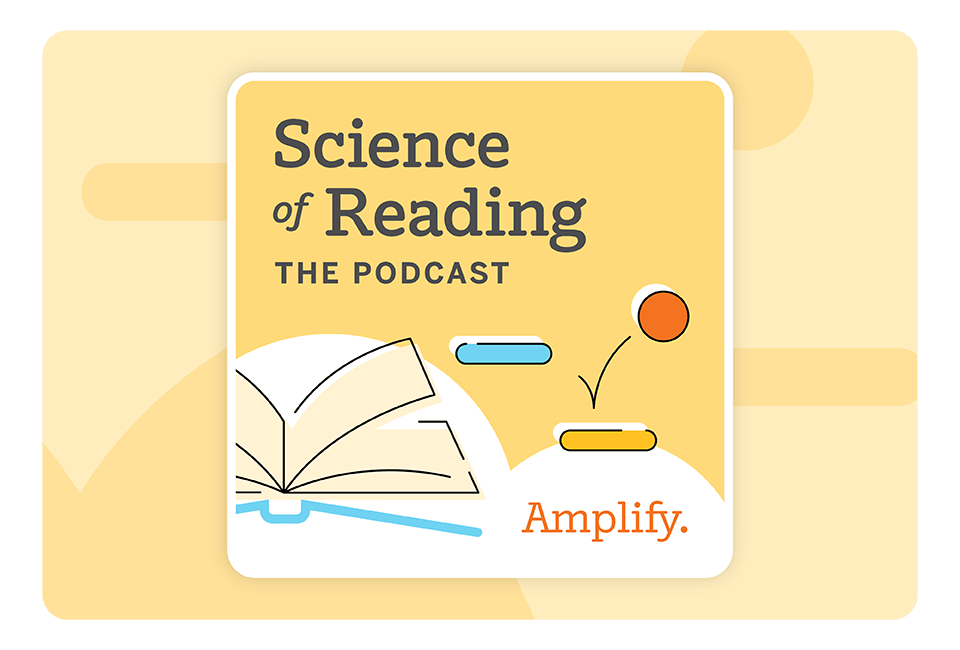
Science of Reading: The Podcast
Listen to the latest insights from researchers and practitioners in early reading.

Science of Reading programs
Achieve next-level literacy growth with a cohesive Science of Reading suite.
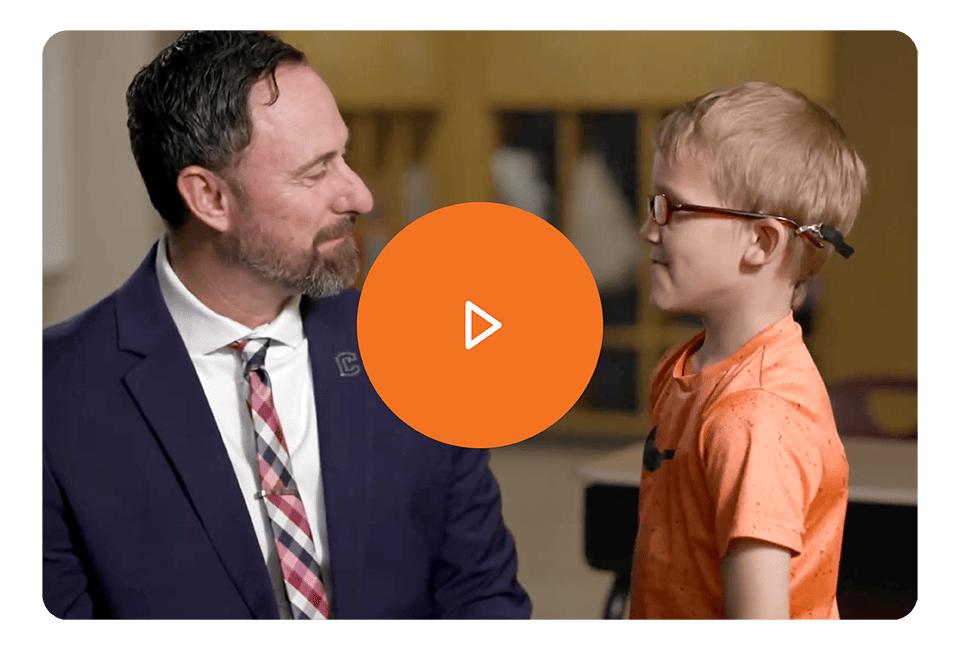
Science of Reading success stories
We’ve helped thousands of Science of Reading champions make the shift, and they’re eager to share the secrets of their long-term success with fellow educators like you.
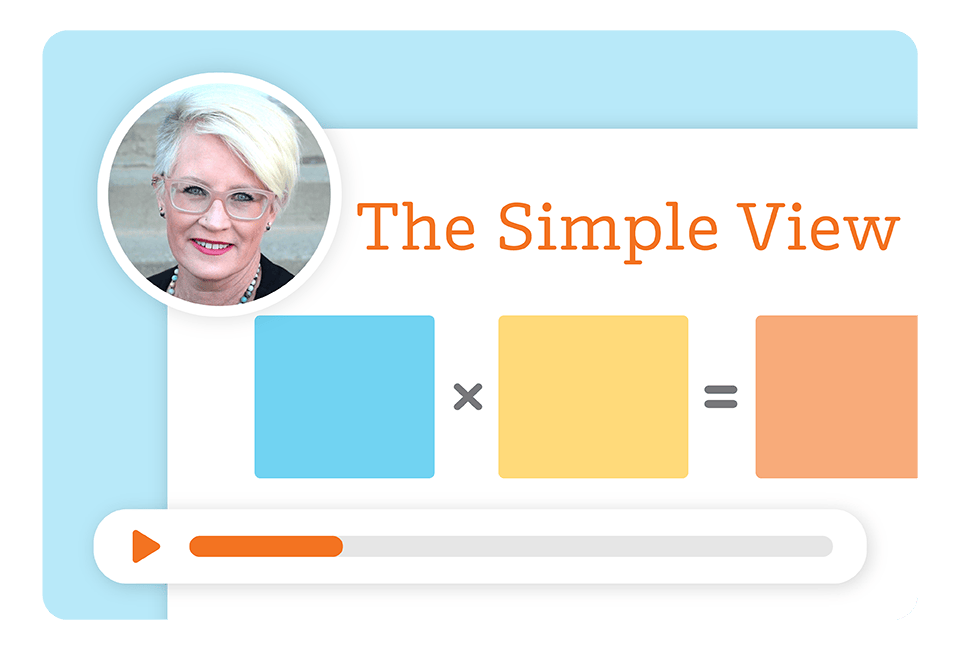
Science of Reading webinars
Get on-demand professional development to build and refine your toolkit of Science of Reading resources and instructional practices.

Science of Reading Star Awards
Nominate a literacy changemaker for our prestigious Science of Reading Star Awards!
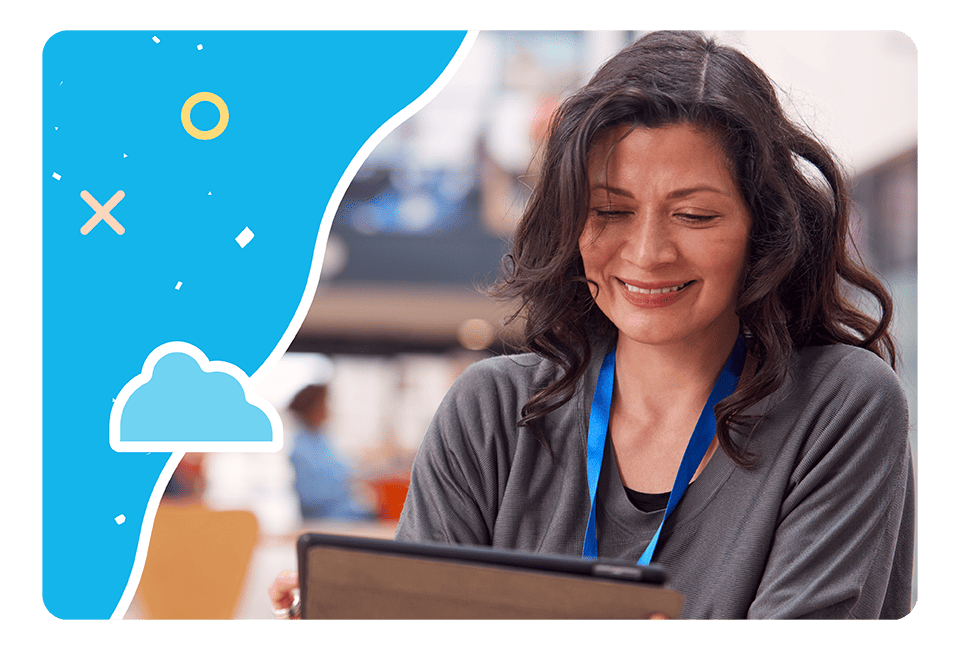
Science of Reading data and MTSS
Fortify your Science of Reading implementation using essential data and a Multi-Tiered System of Supports (MTSS).
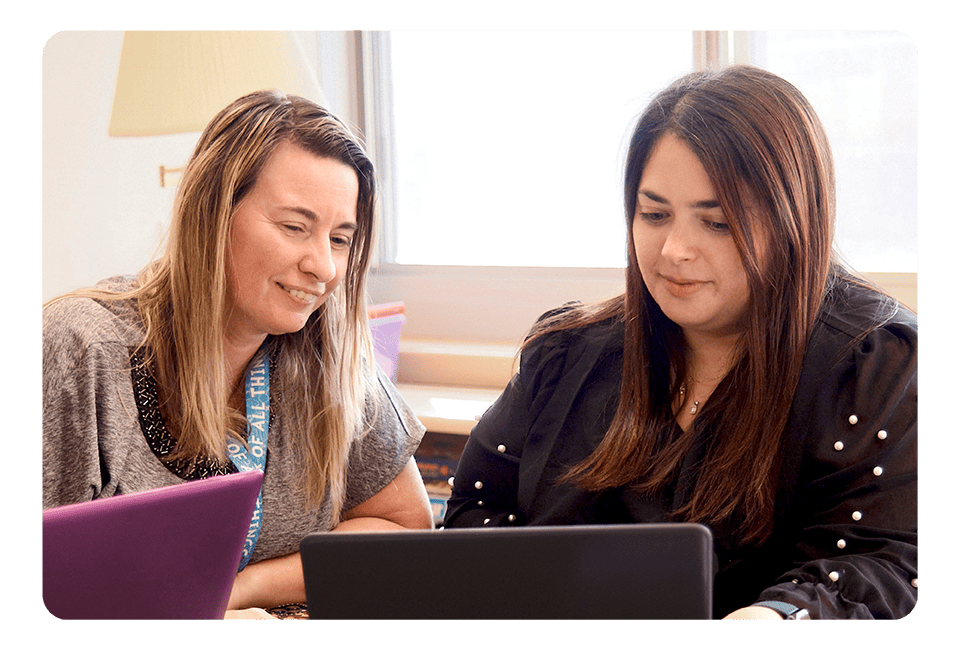
Change management
Educational change doesn’t happen overnight, or by itself. We’ll walk you through the process to help you make literacy success a lasting reality in your classroom.
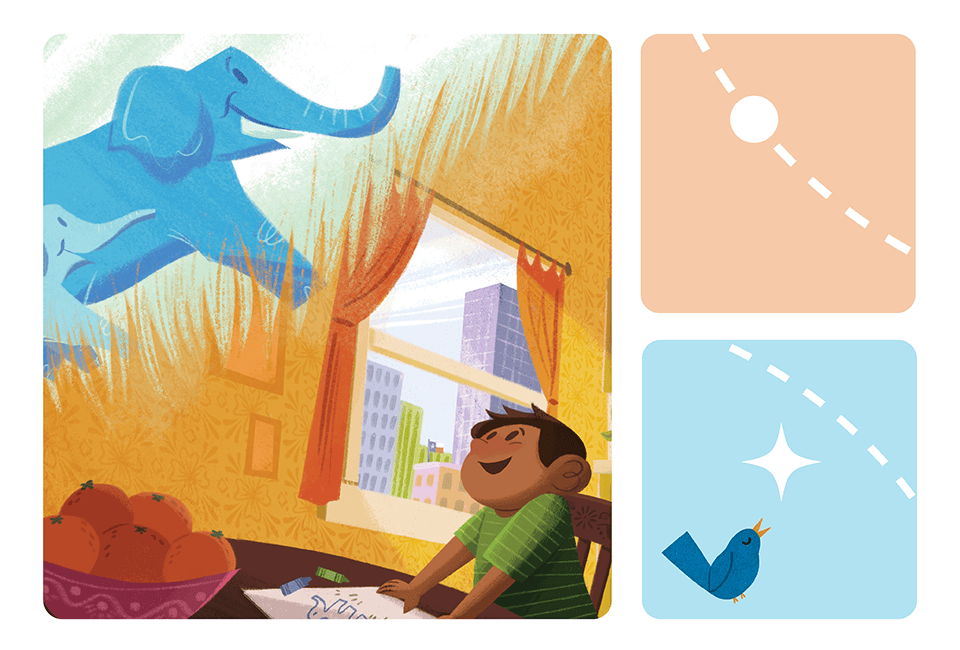
Knowledge building
Learn the ins and outs of the Science of Reading—what it means, and why its principles matter.

Dyslexia and the Science of Reading
Discover how assessment and instruction grounded in the Science of Reading helps identify children at risk of developing dyslexia at the earliest possible moments, creating the widest opportunity for intervention.
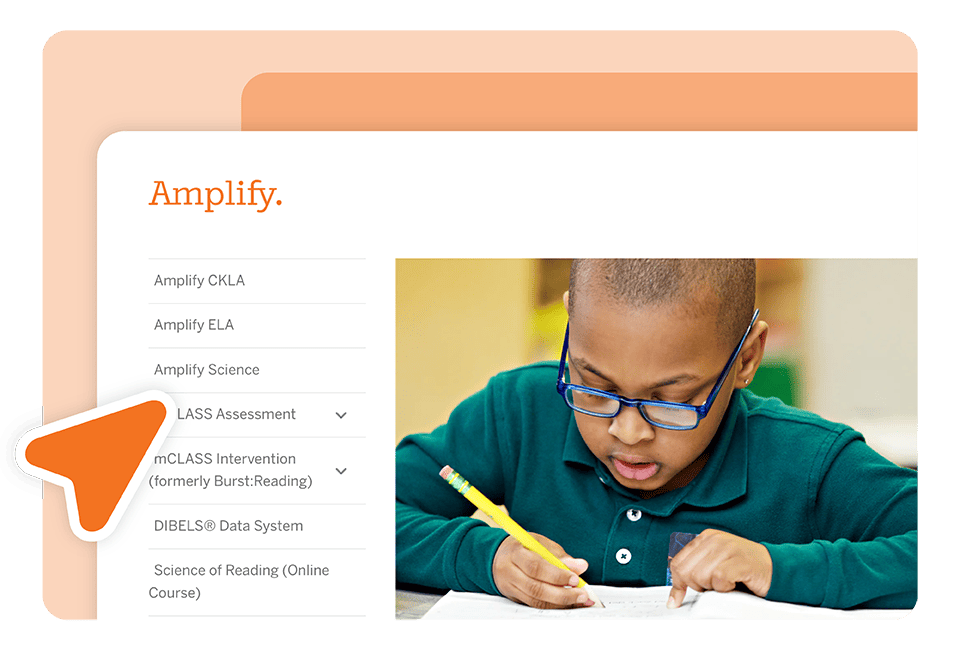
Science of Reading professional development course
Learn everything you need to know about Science of Reading instruction with Amplify’s Chief Academic Officer and host of Science of Reading: The Podcast Susan Lambert.
Welcome, Florida middle school educators!
Amplify ELA Florida is the program built for Florida middle school teachers and students. We designed the program to help ensure the B.E.S.T standards are covered; the skills are taught; the test is prepped for; and your students are scaffolded and encouraged. We want you to spend your time bringing the text to life, making the classroom hum, and letting every student know you are paying attention to their growth.

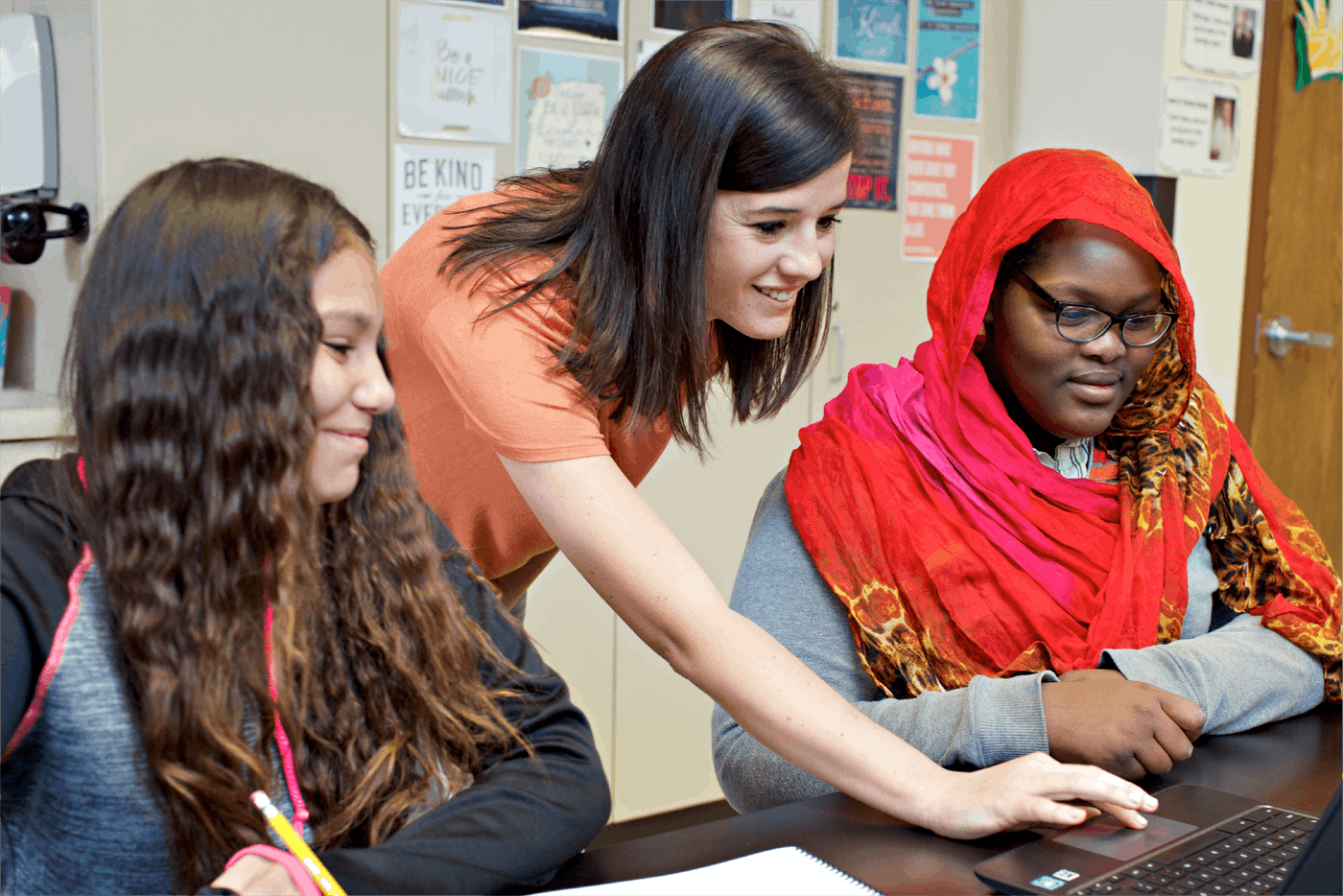
Instruction matters
Florida’s new standards have been crafted to give your students the B.E.S.T. Amplify ELA Florida’s lessons explore the most compelling aspect of a text and target the standards that best support that analysis through reading, writing, and communication. These key standards are identified as the lesson’s Spotlight benchmark. Strategic connections are attained in the program through:
- Florida model texts including rich literature and compelling non-fiction, taught in engaging new ways for today’s learners.
- Benchmark stacks that build connections within lessons and across units.
- Foundational instruction that targets key standards and multiple learning modes.
- Writing that builds directly from reading complex text and is evaluated by Amplify’s Automated Writing Evaluation (AWE).
- Reading with the B.E.S.T. Modules have been built to guide teachers and students as they begin to work with Florida’s new reading standards, providing an introduction to each grade-level B.E.S.T. Reading Benchmark.
(Example module: Grade 6, Understanding Rhetoric)
Knowledge matters
Texts in the Amplify ELA Florida Edition curriculum cover a wide range of topics, themes, and genres with differentiated supports that ensure that all students can work through each reading and lesson. Taken as a whole, the texts show students a diverse picture of the world and help foster a lifelong love of reading. Comprehension develops as students engage with literary and informational text selections that are complex, rich, and meaningful.
Texts were selected for Amplify ELA Florida Edition using the following criteria:
- Text complexity as defined by qualitative, quantitative, and reader and task measurements as required by the B.E.S.T. Standards and the Amplify Text Complexity Index
- Balance of literary and informational texts
- Varied representation of genres: novels, plays, poetry, biographies, and other full-length texts
- Diverse cultures, perspectives, and authors
- Engaging texts that extend learning and support students as they build knowledge
- Grade-appropriate texts, with scaffolding and compelling activities to support student engagement with 100% authentic texts
- A library with more than 700 complete books, both classic and contemporary, encompassing a wide range of genres, topics, and cultural perspectives

Curriculum matters
Amplify ELA Florida is a blended curriculum designed specifically for grades 6–8. The heart of every lesson is the text. Each grade includes six units centered on literary or informational texts, delivered in several forms of media. Your classroom will also benefit from two or three immersive, project-based experiences and a dedicated Story Writing unit.
- Full B.E.S.T. coverage: Standards are clearly labeled in each lesson, so teachers can save time planning and get back to what they love: teaching. Also included are Benchmark Modules that support teachers’ and students’ introduction to the new standards for Florida.
- Five levels of differentiation: Based on each student’s needs and the performance measures within Amplify ELA reports, a teacher can choose the differentiation level that’s the right fit for everyone.
- Embedded Assessments: Teachers benefit from uninterrupted instructional time and a continuously updated picture of each student’s progress with key skills and standards.
- Powerful feedback tools: Comprehensive tools help teachers maximize both the quantity and quality of feedback.
- Robust reporting: Our reporting app offers information on student progress to help inform instructional decisions.
All in one place: Embedded teacher support, differentiation tools, student data, text, and other curriculum features—they’re all right there.
Materials
Amplify ELA Florida Edition is a blended curriculum that seamlessly integrates print and digital resources to be used in any learning environment. The resources are designed to facilitate instruction for planning, teaching, learning, and assessment.
Student materials
Available digitally and in print, the student materials guide middle schoolers through complex texts and writing with the following:
- Student Edition will engage students with high-quality narrative and informational texts.
- Digital experience will provide videos, a library of more than 700 texts, audio supports, and other online experiences that capture their attention.
- Writing Journal will keep all of their thinking and writing about text in one place.

Poetry in America videos
Amplify ELA Florida has rich digital experiences that students to read, think, and write like authors. Our “Poetry in America” videos include interpretations by Shaquille O’Neal, Angela Duckworth, Regina Spektor, Shiza Shahid, Anson Dorrance, Elizabeth Alexander, Duy Doan, and Richard Blanco.
To the left, Richard Blanco reads his poem “Looking for the Gulf Motel.”
Teacher materials
Available digitally and in print, the Teacher Edition contains all of the information teachers need to facilitate classroom instruction, including:
- From detailed lesson plans.
- Video teacher tips embedded in the lesson.
- B.E.S.T. standards alignment and assessments including exit tickets.
- Real-time differentiation strategies.
- Clarify and Compare lessons.
- Robust reporting.
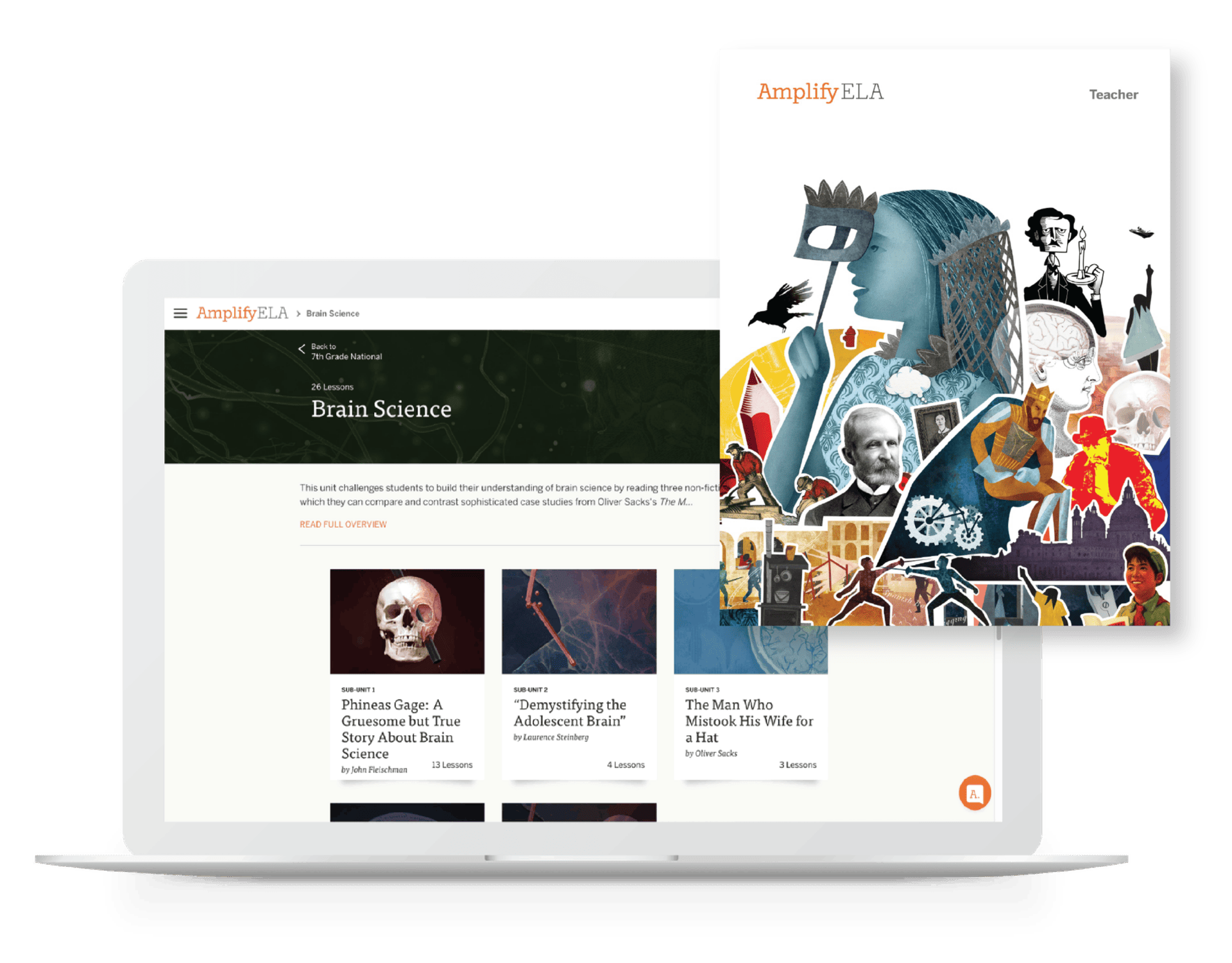
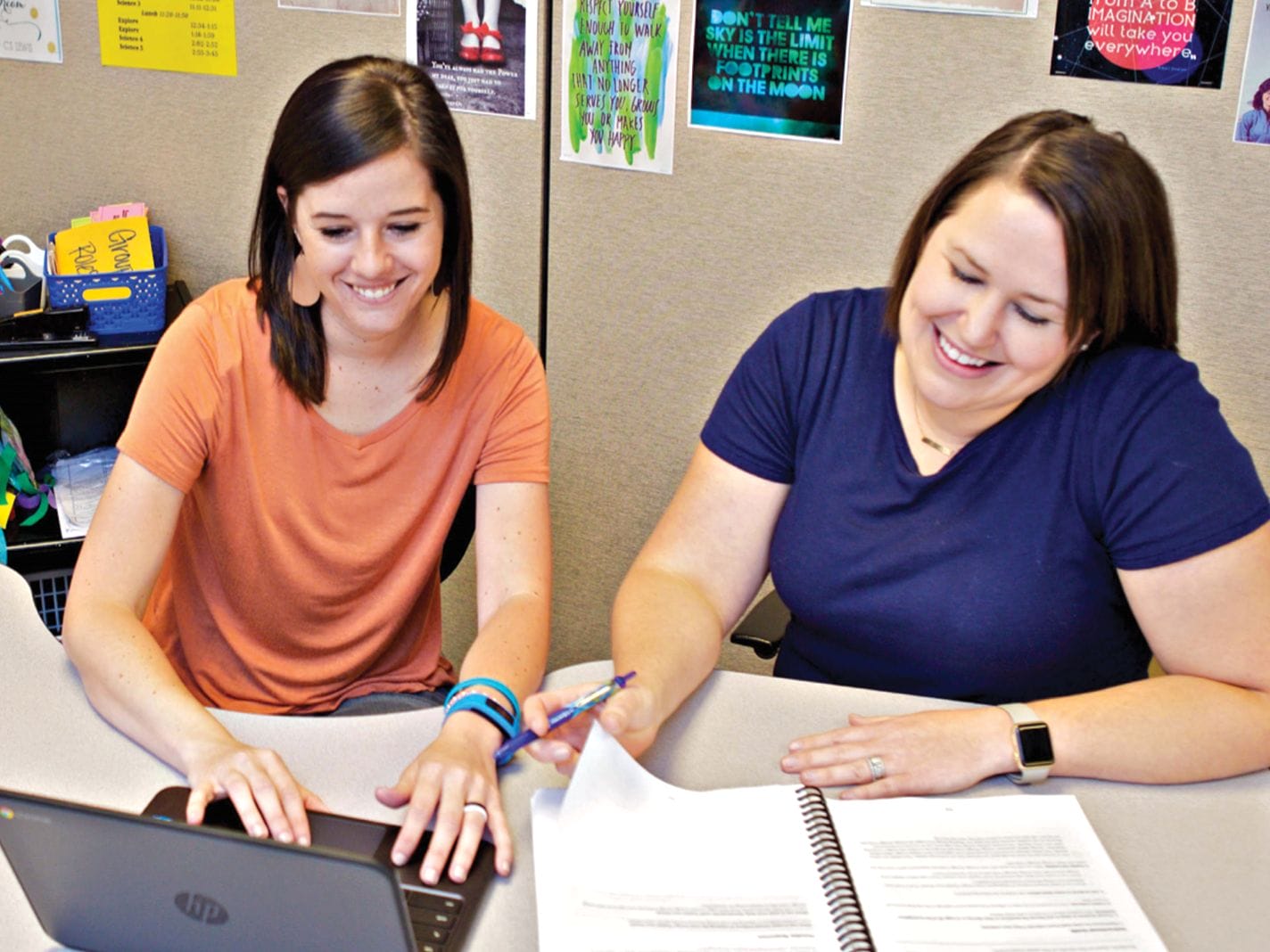
Professional learning
Amplify employs a national cohort of more than 50 ELA facilitators, all of whom have experience as former classroom teachers and many of whom are former school and/or district leaders. Our professional learning team has decades of experience working with large districts across the nation. Amplify has experience supporting district launches over multiple years and has partnered with districts of all sizes nationwide. We partner deeply with districts and tailor professional learning to their unique needs.
How to implement the Science of Reading in your classroom today
Four steps administrators can take to shift to the Science of Reading
10 books to get you started with the Science of Reading
Reading and Writing: How the Simple Views can help you teach
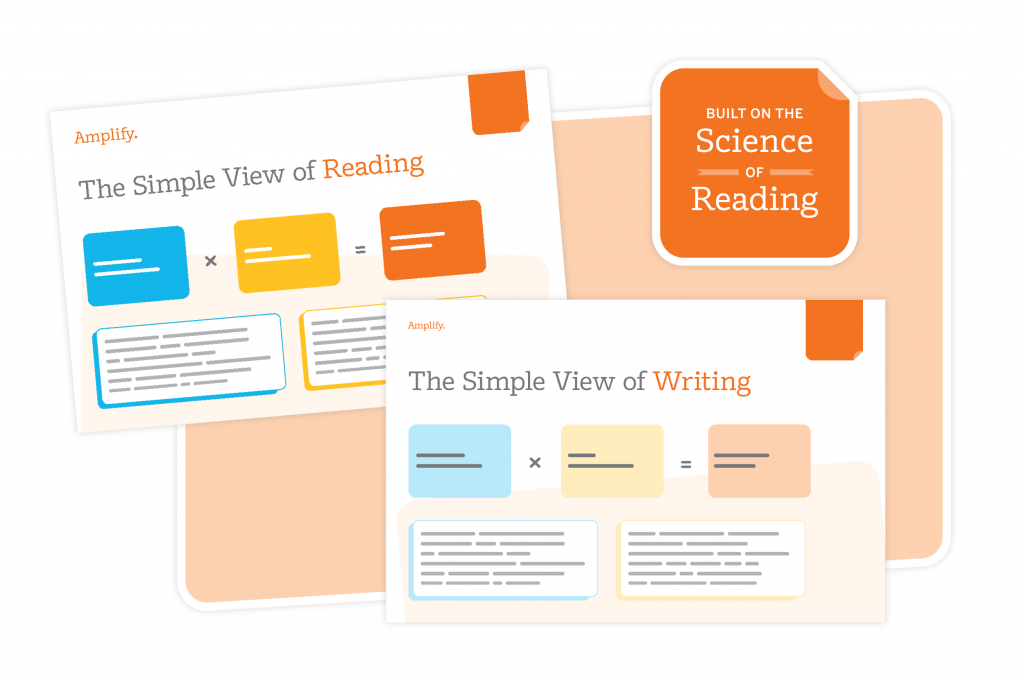
The processes of learning to read and write are so complex, they’ve inspired an entire body of research called the Science of Reading (along with its newer cousin, the Science of Writing). Luckily, literacy experts have distilled these processes into their simplest components.
The result? Two models that help educators understand how students learn to read and write, and the best ways to teach them.
These frameworks—the Simple View of Reading and the Simple View of Writing—align with what reading research tells us about the brain’s processes for decoding, understanding, and creating text. Together, they can support your instructional practices and help all your students become proficient readers. Let’s take a closer look.
What is the Simple View of Reading?
The Simple View of Reading is a model that breaks the capacity to read into two main components:
- Decoding: The ability to recognize words in print, which includes phonics and phonemic awareness.
- Language comprehension: The ability to understand and interpret the meaning of those words.
It’s important to note that reading is not the sum of these parts—it’s the product. Reading success results from decoding multiplied by language comprehension. Both are crucial. If either one is weak or nonexistent, the ability to read with understanding collapses. Even if a student can decode every word on a page, they won’t truly be reading if they don’t understand what the words mean. Likewise, no matter how good their comprehension skills, if they can’t decode, they can’t access the text.
Are you curious for more detail? Explore the framework known as the Reading Rope, which breaks these components down further, showing how skills such as phonological awareness, vocabulary, and background knowledge intertwine to create skilled reading. Understanding these connections helps educators develop effective instruction and address specific gaps in literacy skills.
Why is the Simple View of Reading framework so powerful?
The Simple View of Reading gives teachers a clear roadmap.
Instead of wondering why a student is struggling with reading, we can look at their decoding and language comprehension skills separately. Are they having trouble sounding out words? That’s a decoding issue. Struggling to understand a story’s plot? That’s a language comprehension issue.
Once you know where the challenge lies, it’s easier to intervene and teach students effectively.
This model also aligns with the principles of structured literacy. By focusing on explicit, systematic instruction in both decoding and comprehension, educators can build a strong foundation for all learners and support everyone in accessing grade-level text.
The Simple View of Writing: A logical extension
Just as the components of reading can be broken down into two parts, so can writing. They are:
- Transcription: The physical act of writing, including handwriting, spelling, and typing.
- Composition: The ability to generate ideas, organize them, and express them effectively in written form.
Transcription ensures that students can physically put words on a page, while composition helps them turn those words into meaningful text. Writing success equals transcription multiplied by composition. A student may have great ideas (strong composition) but struggle to write them down (weak transcription), or they may write neatly but lack substance.
Putting it together: How these models transform literacy instruction
Reading and writing are closely intertwined. As students improve their decoding, their transcription often follows because both rely on an understanding of letters and sounds. Similarly, language comprehension and composition share a connection—when students build vocabulary and understanding through reading, they’re better equipped to express themselves in writing.
These models allow educators to:
- Pinpoint needs. Are students struggling with spelling? Focus on transcription. Do they have difficulty understanding what they’ve read? Strengthen language comprehension.
- Measure progress. These models provide clear benchmarks for assessing growth. Success in one area (like decoding) can lead to noticeable improvements in another (like comprehension).
- Individualize support. No two students are the same. One child may need help with phonics, while another needs to build vocabulary. The Simple Views let teachers tailor instruction to each learner.
The Simple Views of Reading and Writing remind us that literacy is a combination of distinct yet interconnected skills. By breaking these processes into manageable parts, we can better understand how to help students thrive. And when we focus on both the mechanics and the meaning, we’re not just teaching kids to read and write—we’re giving them the tools to communicate, imagine, and succeed.
More to explore
Check out our infographic for a visual breakdown of these powerful frameworks and how they work together to support literacy success.
Plus:
- Listen: Science of Reading: The Podcast: The Simple View of Reading with Laurence Holt
- Follow @amplify.education on Instagram for reading resources and information
- Read: “Science of Reading principles that guide early literacy”
Lleve el mundo a los estudiantes con un plan de estudios de alfabetización comprobado de PreK a 5.º grado
Amplify Core Knowledge Language Arts (CKLA) es el plan de estudios líder en alfabetización temprana basado en la Ciencia de la lectura. Mediante la combinación del desarrollo de conocimientos y de destrezas fundamentales a partir de la investigación, nuestra instrucción orienta a los educadores en el desarrollo de lectores, escritores y pensadores capaces.
Con una poderosa plataforma en línea y un plan de estudios paralelo de lengua y literatura en español, Amplify CKLA ofrece una solución integral para educadores y estudiantes de PreK a 5.º grado. For English version, please click here.
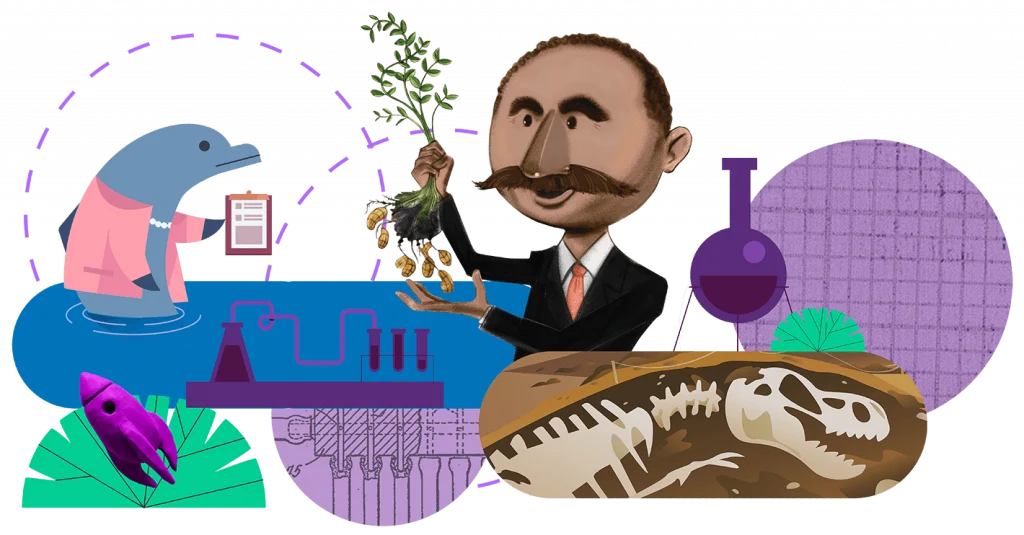
Los resultados son fruto del conocimiento previo
El plan de estudios de alfabetización de Amplify CKLA de PreK a 5.º grado equipa a los estudiantes con un rico conocimiento que se construye intencionalmente para inspirar curiosidad e impulsar resultados. Explore las investigaciónes que revelan la eficacia del plan de estudios basado en el conocimiento, así como el logro de Amplify CKLA como intervención educativa de conformidad con la ESSA (nivel 1 de evidencia fuerte).
AMPLIFY CKLA
38,000+
Salones de clase
2,700,000+
Estudiantes
50
Estados de EE. UU. y D.C.
Revisado de forma independiente y rigurosa
Amplify CKLA se encuentra entre los pocos planes de estudio que es tanto reconocido por la campaña Knowledge Matters (por su excelencia en construir conocimiento intencionalmente) y como calificado verde en EdReports, obteniendo puntuaciones verdes en todos los criterios.
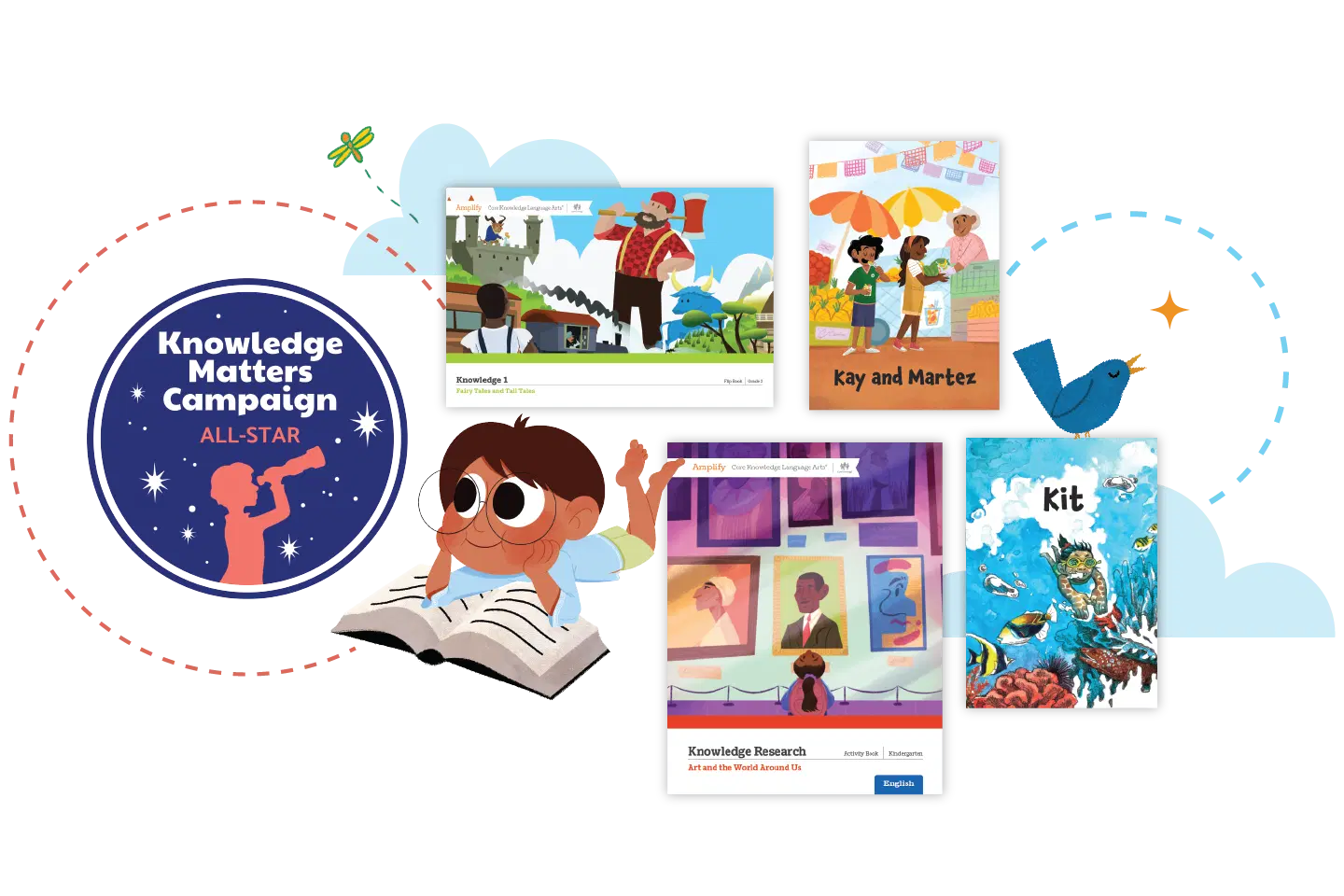
Nuestro enfoque
Basado en la Ciencia de la lectura y siguiendo el principio de Core Knowledge, el plan de estudios Amplify CKLA para PreK a 5.º grado combina conocimientos de contenido rico en historia, ciencias, literatura y artes con una instrucción sistemática de destrezas fundamentales basada en la investigación.
Basado en la Ciencia de la lectura
Como la primera casa editorial en crear un plan de estudios basado en la Ciencia de la lectura, ponemos la investigación en acción con una instrucción explícita y sistemática de destrezas fundamentales junto con una secuencia comprobada de construcción de conocimientos. En colaboración con expertos y profesionales de la educación, proporcionamos recursos poderosos que generan resultados reales. Explore nuestras historias de éxito de Ciencia de la lectura.
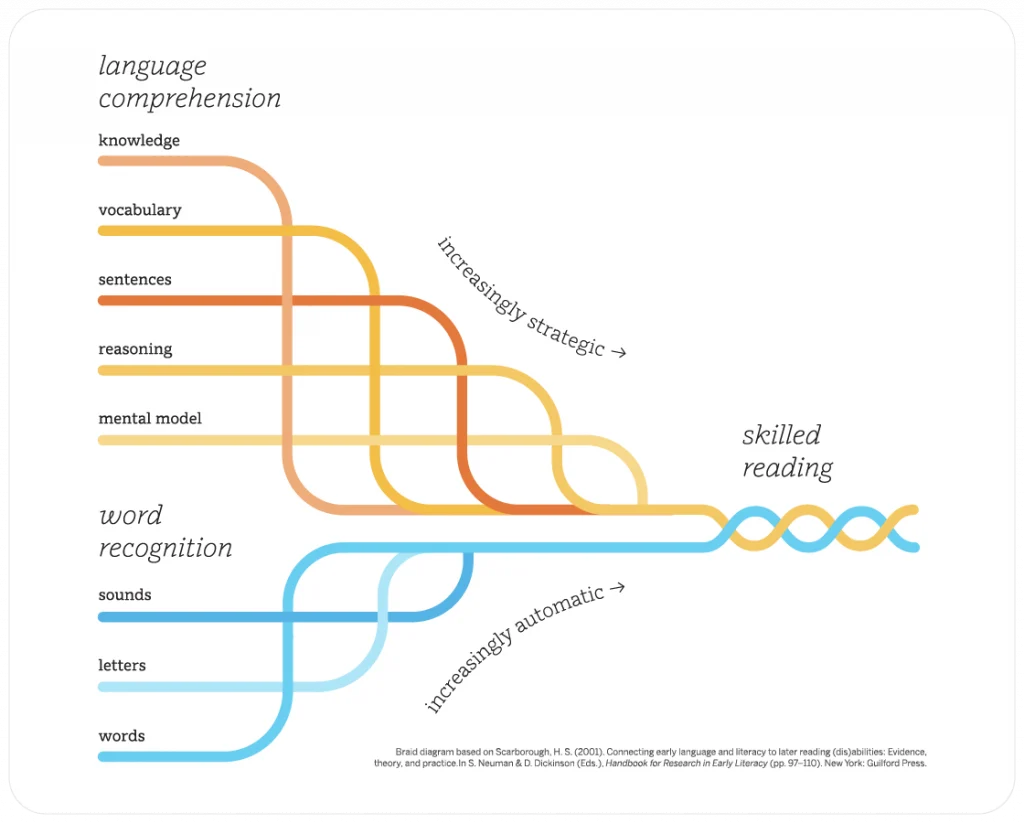
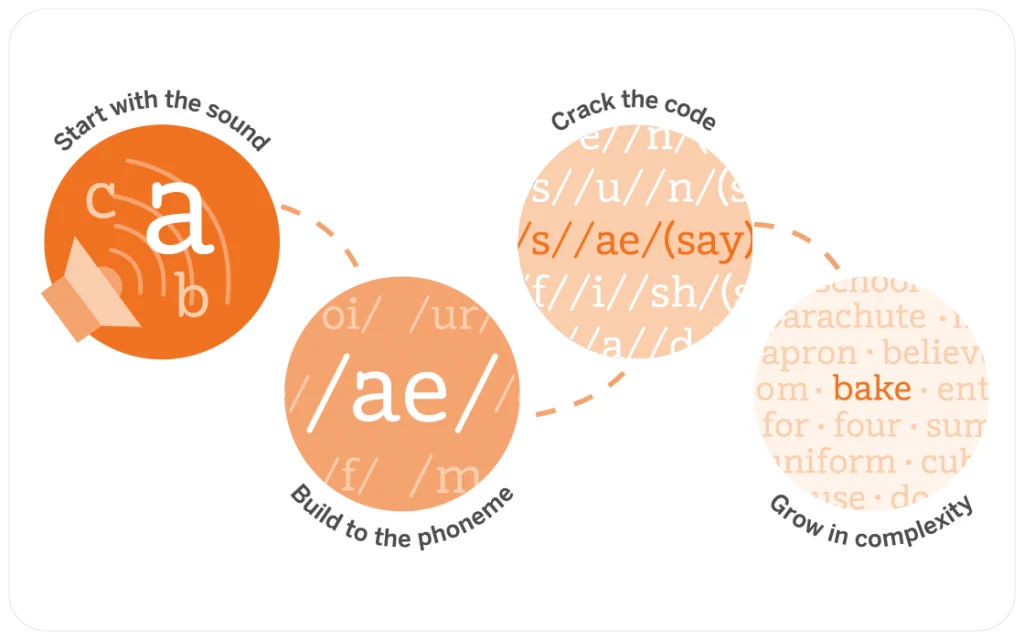
Desarrolla destrezas fundamentales con instrucción explícita y sistemática
El alcance y la secuencia basados en la investigación de Amplify CKLA progresan desde el desarrollo de destrezas simples hasta el más complejo, comenzando con la conciencia fonológica y fonémica. La instrucción le guía en la enseñanza explícita de las 150 ortografías de los 44 sonidos del inglés, con una progresión intencional y una revisión de las destrezas para preparar a sus estudiantes para el éxito.
Adopta una metodología demostrada de adquisición de conocimientos
Siguiendo la Core Knowledge Sequence, un enfoque coherente, acumulativo y de contenido específico para desarrollar conocimientos, los estudiantes profundizan y hacen conexiones entre áreas de contenido para construir una base de conocimientos sólida que les permita comprender textos complejos. Vea cómo se ha demostrado que el plan de estudios Core Knowledge mejora los puntajes de lectura y elimina las brechas en el rendimiento.
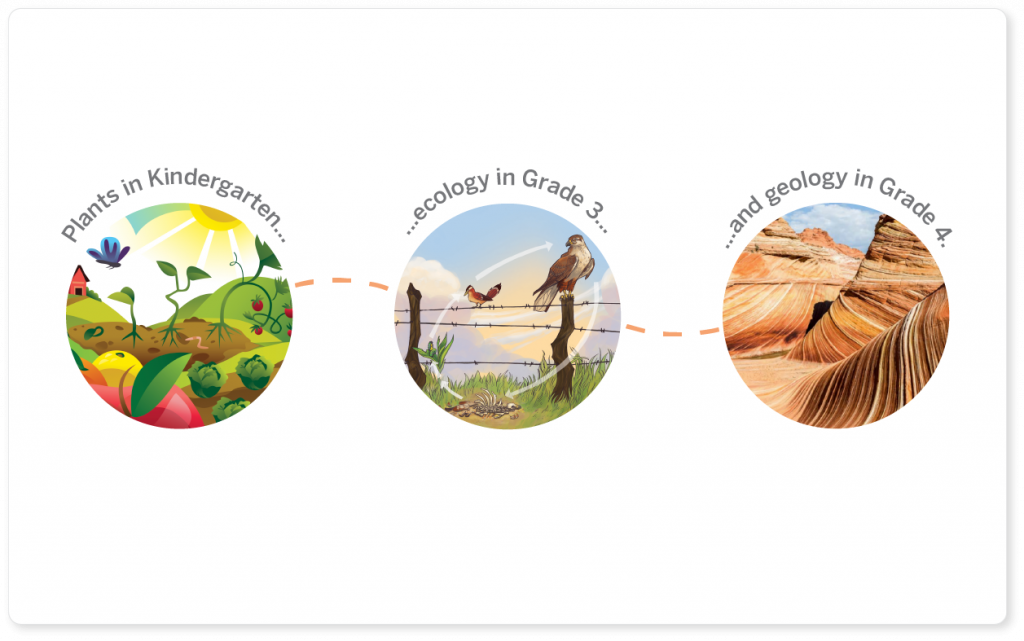
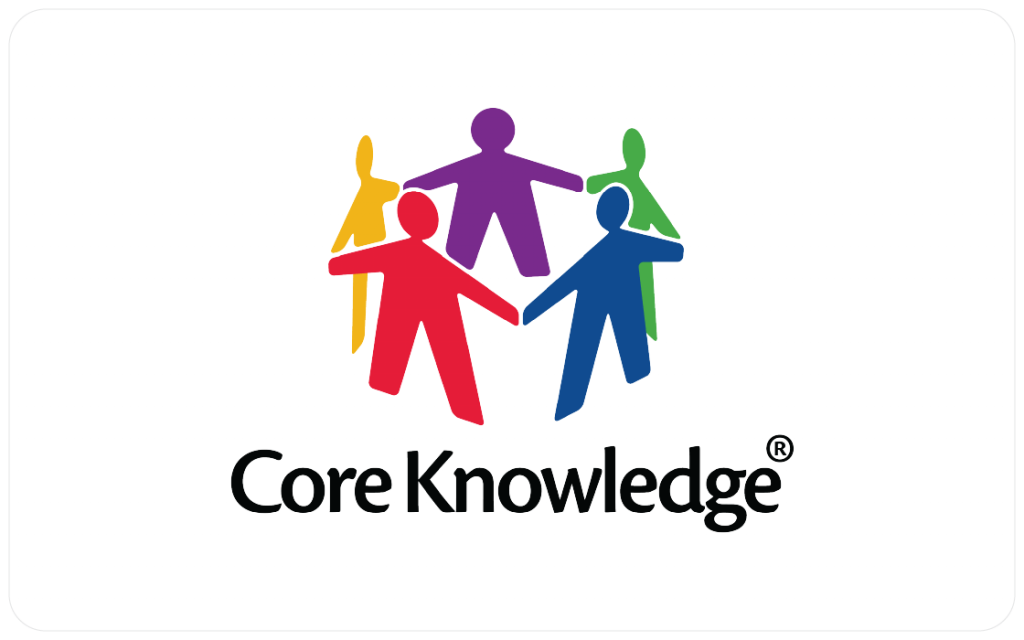
Creado en colaboración con la Core Knowledge Foundation
Amplify CKLA es el líder en materiales educativos de alta calidad para lengua y literatura de primaria, creado en colaboración con la Core Knowledge Foundation para ayudar a los estudiantes a desarrollar con eficacia un conocimiento profundo del contenido y destrezas fundamentales.
Cultivar la alfabetización bilingüe con programas paralelos en inglés y español
Amplify Caminos es el compañero perfecto en lengua y literatura del idioma español para Amplify CKLA. Los programas alineados combinan un rico conocimiento del contenido con una instrucción sistemática de destrezas fundamentales basada en la Ciencia de la lectura que sigue los principios de alfabetización bilingüe, y respalda múltiples modelos de enseñanza.
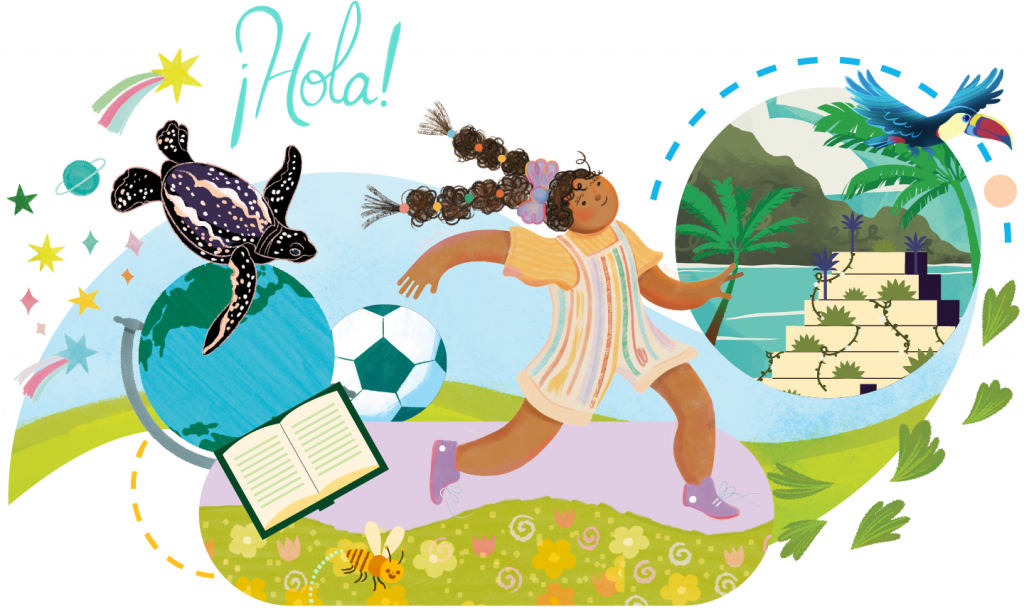
Qué se incluye
El programa proporciona atractivos materiales impresos y multimedia diseñados para construir una base sólida y rica en lectoescritura en todos los salones de clase.
Materiales de alta calidad para los maestros
Los maestros de Amplify CKLA brindan instrucción de manera eficaz con recursos impresos y digitales, que incluyen:
- Guías para el maestro con diferenciación integrada.
- Evaluaciones formales e informales.
- Diapositivas de lecciones listas para usar y personalizables.
- Libros comerciales y Guías literarias.
- Recursos docentes y desarrollo profesional a pedido.
Recursos inmersivos para estudiantes
Los estudiantes de Amplify CKLA se mantienen interesados con una amplia gama de recursos impresos y digitales, que incluyen:
- Descodificables originales y Libros grandes de lectura en voz alta (K a 2.º grado), Libros de lectura (3.er a 5.º grados) y libros comerciales (K a 5.º grado).
- Cuadernos de actividades para estudiantes con evaluaciones integradas (K a 5.º grado).
- Unidades de investigación para investigaciones independientes desarrollados en torno a un libro comercial (K a 5.º grado).
- Diario del poeta y Diario del escritor (libros de lectura con espacio para escribir para 4.º y 5.º grados).
- Misiones de conocimiento para apoyar el aprendizaje inmersivo basado en problemas en los grados 3.º a 5.º.
Materiales prácticos de fonética
La fonética multisensorial y los recursos de destrezas fundamentales ayudan a los estudiantes a practicar destrezas clave utilizando enfoques divertidos y variados que desarrollan la independencia.
- Carpetas para la práctica de ortografía (K).
- Tarjetas de letras (K a 2.º grado).
- Tarjetas de sílabas (K a 2.º grado).
- Tarjetas de imágenes (K a 3.er grado).
- Tarjetas de combinación de imágenes (K).
- Rotafolios de códigos de consonantes y vocales (1.er y 2.º grados).
- Biblioteca de sonido digital exclusiva.
Experiencia digital robusta
Los recursos para maestros y estudiantes de Amplify CKLA están disponibles a través de una plataforma de experiencia digital que mejora la instrucción y le ahorra tiempo. Con todo lo que necesita en un solo lugar, puede planificar lecciones, presentar contenido y revisar el trabajo de los estudiantes de manera eficaz.
- Presentaciones de lecciones con diapositivas listas para usar y personalizables.
- Herramienta dinámica para estudiantes con revisión en vivo.
- Experiencia interactiva y amigable para los estudiantes.
- Integración LMS.
- Videos animados de Desarrollo de conocimiento
- Lecturas en voz alta grabadas.
- Sitio web de desarrollo profesional.
- Apoyo al programa en tiempo real por correo electrónico, chat en vivo y teléfono.


Programa para estudiantes del idioma inglés
Language Studio, diseñado para Amplify CKLA, brinda instrucción diaria alineada con WIDA para que los estudiantes del idioma inglés profundicen su inglés académico.
Programa de exploración de escritura
Writing Studio, un complemento único para Amplify CKLA, ofrece una inmersión profunda en la redacción de información, narrativa y opinión para formar escritores fuertes y apasionados.

Explore otros programas basados en la Ciencia de la lectura
Todos los programas de nuestro paquete de alfabetización están diseñados para que se respalden y complementen entre sí. Aprenda más sobre nuestros programas relacionados:
Amplify CKLA Fairfax, VA
#1 most adopted California NGSS curriculum
Amplify Science California is a brand-new TK–8 curriculum built for the California NGSS. It also happens to be the most adopted science curriculum so far—out of 17 state-approved programs to choose from. We feel pretty honored to be the science curriculum partner of choice for so many districts. Find out what makes our program so phenomenal by exploring this site at your own pace.
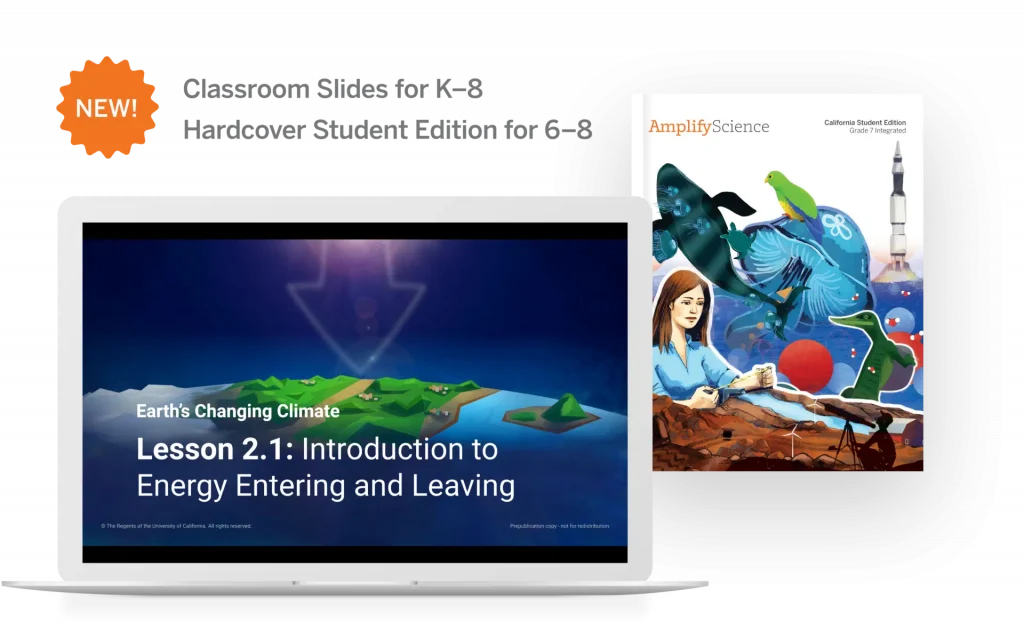
Overview
With Amplify Science California, students don’t just passively learn about science concepts. Instead, they take on the role of scientists and engineers to actively investigate and figure out real-world phenomena. They do this through a blend of cohesive and compelling storylines, hands-on investigations, collaborative discussions, literacy-rich activities, and interactive digital tools.
Listen to these educators share how the program empowers students to think, read, write, and argue like real scientists and engineers every day.
Grades K–5
Grades 6–8
Our approach
At the heart of Amplify Science California is our goal of helping students make the shift from learning about to figuring out scientific concepts. As they collect evidence, students actively work to construct a deeper and more complex understanding of each unit’s anchor phenomenon.
Throughout the Amplify Science California curriculum, students actively share and discuss evidence and work together to determine what claim the evidence supports. As they collaborate and engage in debate, they are practicing vital aspects of constructing explanations and argumentation, such as:
- Deeply understanding evidence
- Working with others to understand the meaning of evidence
- Convincing others that their claim is the most sound
- Providing logical reasoning to support their claims
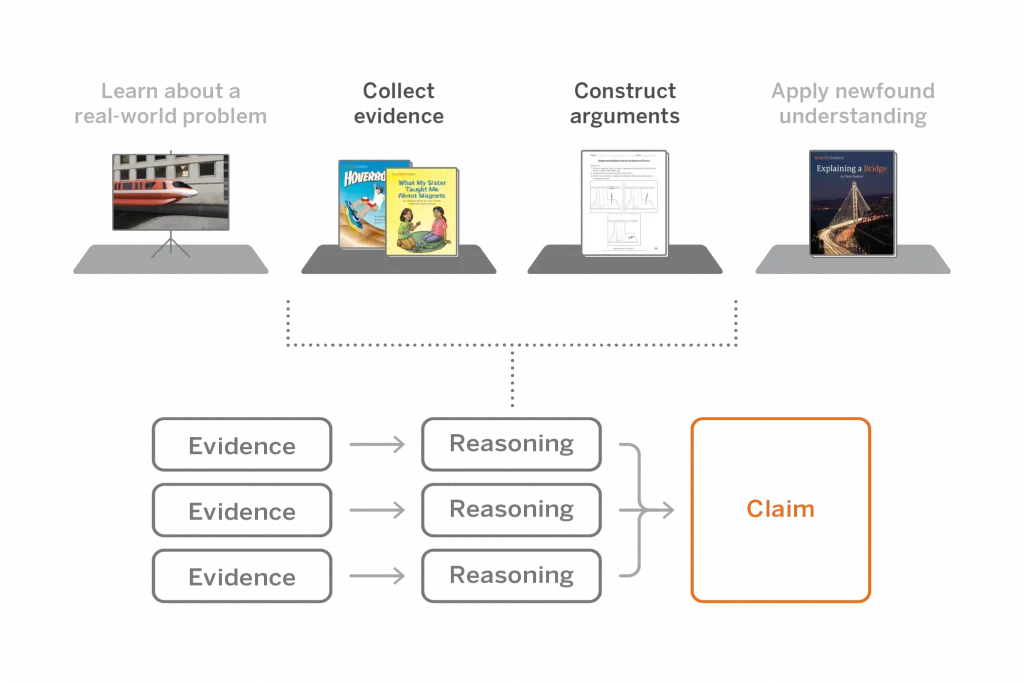
Why choose Amplify Science California?
Amplify Science California isn’t a traditional textbook program. Rather, it’s a next-generation curriculum designed to support a shift to a whole new way of teaching science. If your district is interested in making a successful and lasting transition to the California NGSS, Amplify Science California is a program that you can choose with confidence.
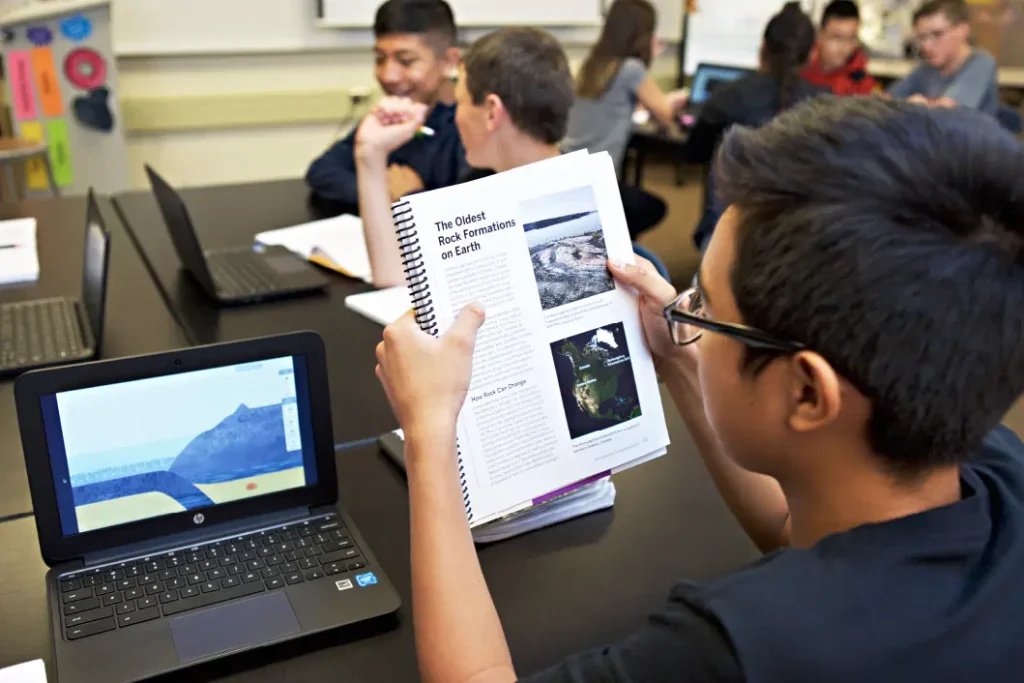
Newly built for the California NGSS
Unlike other companies that retrofitted an existing program, we built Amplify Science California from the ground up. That means that every unit, every chapter, every lesson, and every activity was newly crafted to deliver true three-dimensional learning that works. Said another way, our program didn’t exist until after the California NGSS Framework was complete.
Authored by California’s leading science education experts
Amplify Science California was developed by the science education experts at UC Berkeley’s Lawrence Hall of Science and the digital learning team at Amplify. As the Hall’s first curriculum designed to address the California NGSS, Amplify Science California reflects state-of-the-art practices in science teaching and learning.
Proven effective (for ELs, too!)
Grounded in research, proven effective, and classroom-tested—Amplify Science California was designed to work, and it does. Simply put: Students who use our science curriculum outperform their peers. That’s because our instructional design is rooted in UC Berkeley’s Do, Talk, Read, Write, Visualize approach, which has been backed by three gold-standard studies, efficacy research, and extensive field testing.
What’s more, learners who used this approach outperformed their English Learner peers in literacy skills and science content knowledge. Just check out the results to the left!
Easier lesson delivery with our new hands-free TG
With our new Classroom Slides, you can put down the Teacher’s Guide and focus on what matters most—your students. These lesson-specific PowerPoints make delivering daily instruction a snap with embedded links to related resources and suggested teacher talk in the Notes section of each slide. Classroom Slides are now available for Grades K-5 and will be ready for Grades 6-8 for the 2020-2021 school year!
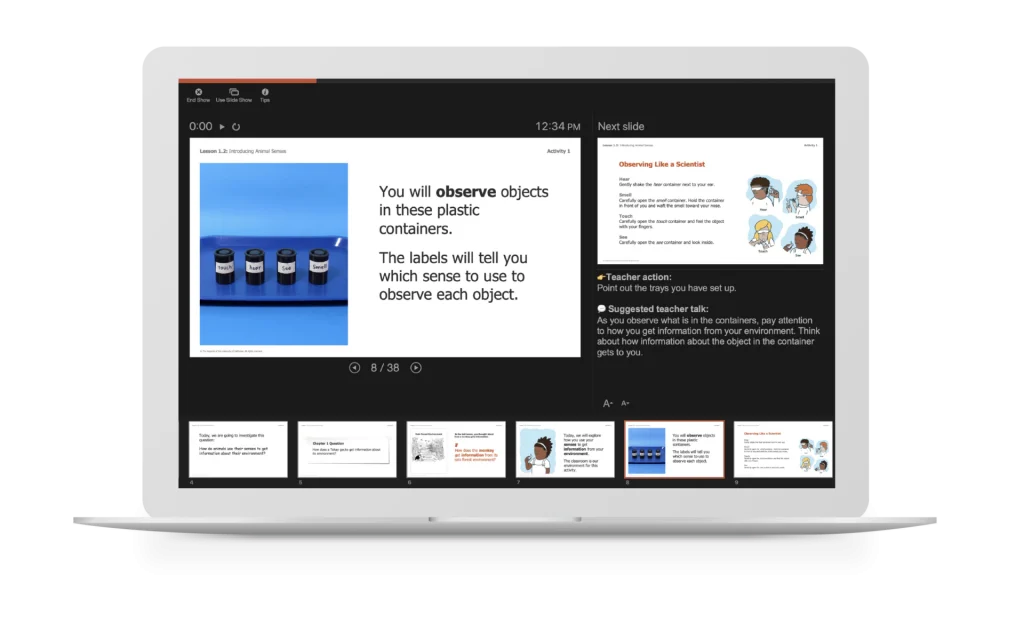
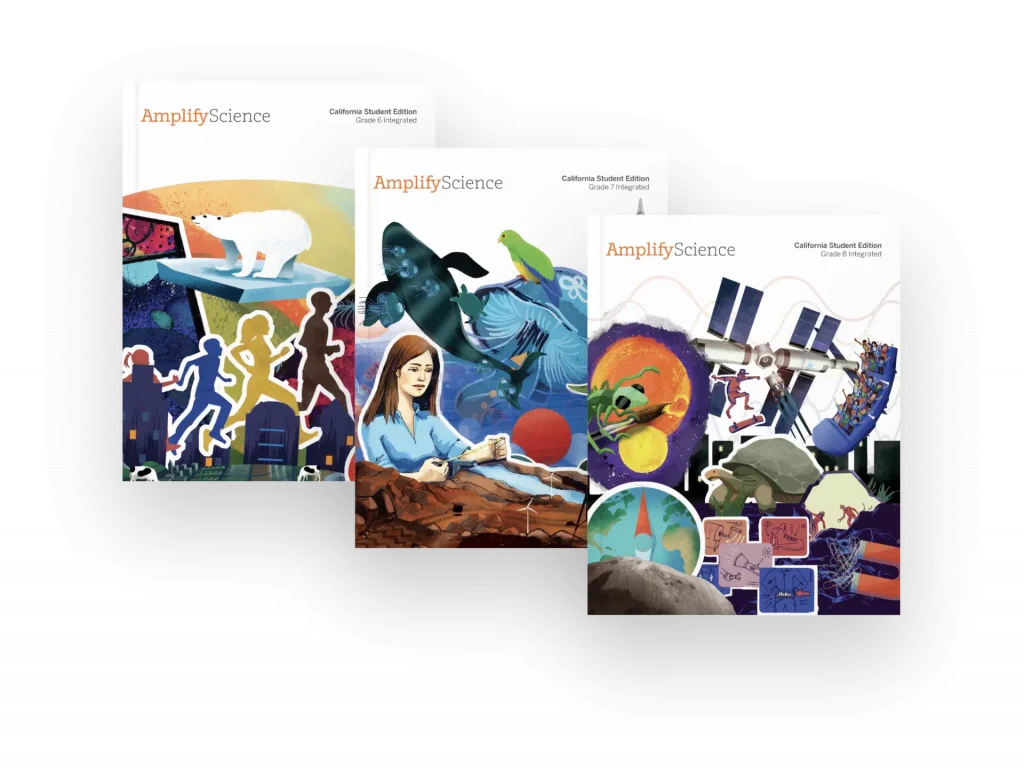
Student resources in the format you choose
With more flexible implementation options at Grades 6-8, Amplify Science California suits every budget. Districts can now mix and match the following components to create their preferred student experience:
- A new hardcover Student Edition
- A new 2-volume consumable Student Investigation Notebook Set
- Our current 9-volume consumable Student Investigation Notebook Set
- Our digital student experience for reading articles and completing classwork
Built with affordability and manageability in mind
Amplify Science California helps your dollars stretch farther with more materials than any other program. Our K–5 kits support up to 36 students at a time, and include enough materials for a total of 72 student uses. Our 6–8 kits support up to 40 students at a time and include enough materials for a total of 200 student uses. What’s more, only 7 of the 27 units at this level require refills. For many California NGSS classrooms, that can equate to two years of use per grade level.
More materials also means more manageable and effective small-group instruction. Unlike other programs that require students to work in large groups of 8-9 students each, we give you enough materials to support up to 8 small groups of 4-5 students each.
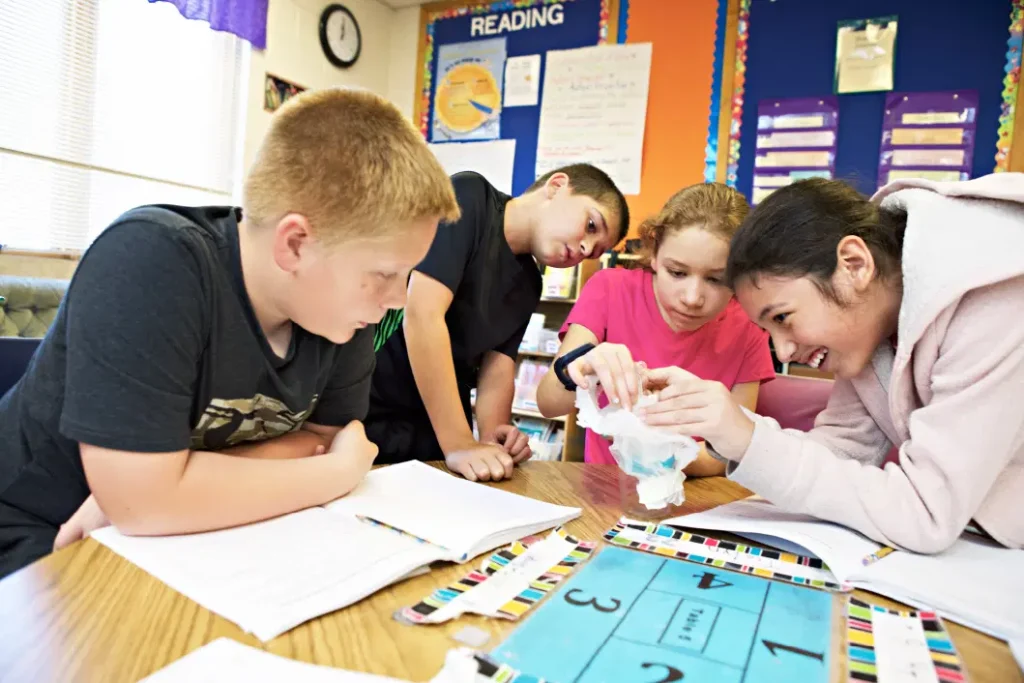
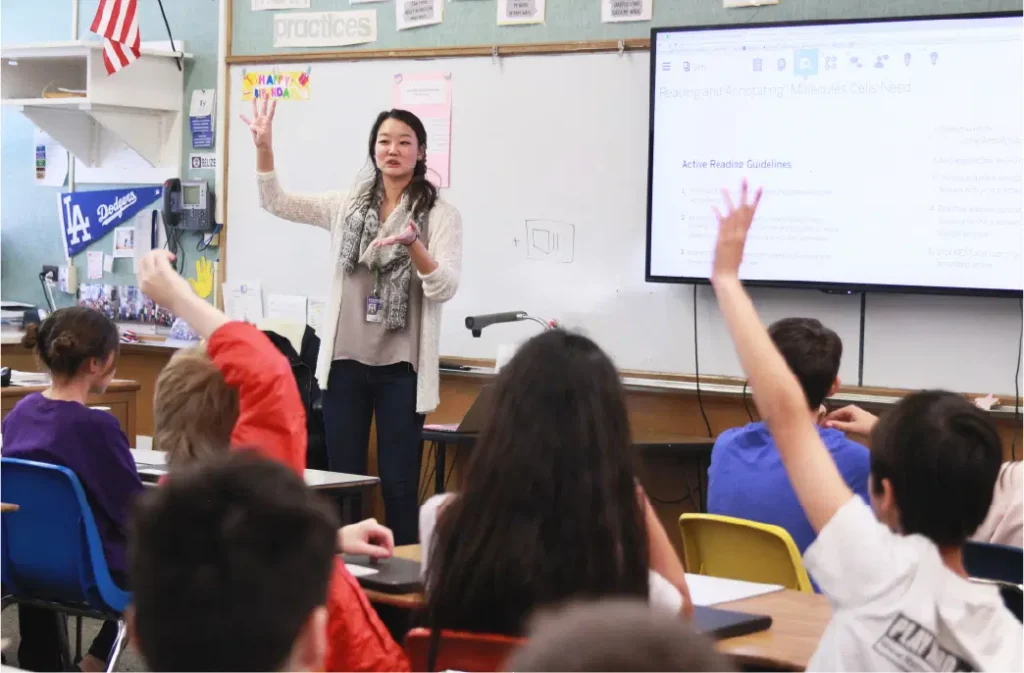
No more waiting for new features
Other publishers require you to wait for program updates until the next revision—even if it’s six years away. That’s not the case with Amplify Science California. We’re committed to supporting your continued success with the California NGSS for the duration of your adoption period, which includes making digital updates and platform enhancements available to you in real time through our platform.
Top 10 Science of Reading podcasts to get you started
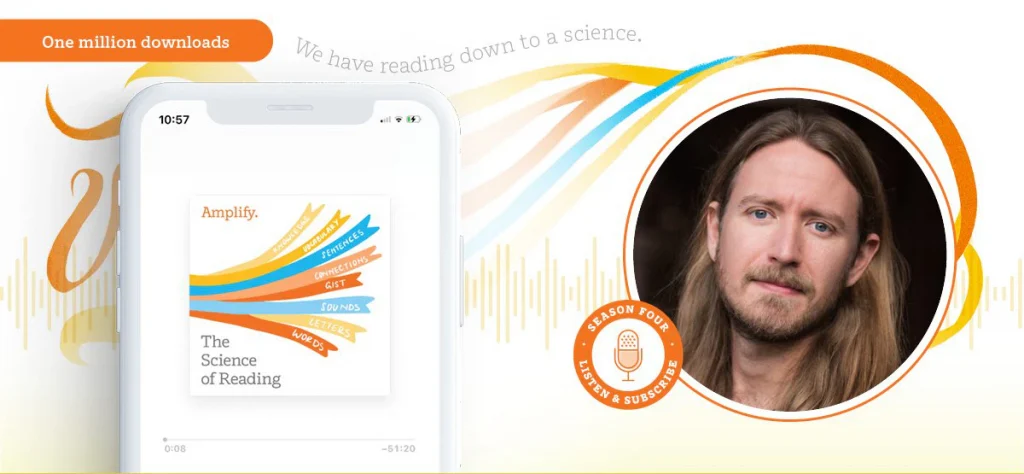
Since 2019, Science of Reading: The Podcast has delivered the latest insights from researchers and practitioners in early reading. Hosted by Amplify’s Chief Academic Officer Susan Lambert, each episode welcomes a renowned leader in the education and literacy community, explores a timely topic related to the Science of Reading, and offers instructional advice to educators implementing evidence-based practices in their schools.
New to the podcast? Here are 10 popular episodes to acquaint yourself with the Science of Reading. Listen, enjoy, and subscribe — we have new episodes every other Wednesday!
S1-E1: Natalie Wexler on “The Knowledge Gap”
Susan hosts Natalie Wexler for a deep dive into her latest book, The Knowledge Gap: The Hidden Cause of America’s Broken Education System—And How to Fix It, and a discussion of the lack of equity in reading education among students, the benefits of knowledge-rich curriculum inside and beyond the classroom, why it’s important to build background knowledge while teaching foundational skills, and why professional development doesn’t seem to be making a difference and how it can be improved.
S1-E3: Emily Hanford on reporting on education and the Science of Reading
Susan sits down with Emily Hanford, education reporter and host of the Education Post podcast, to examine the big takeaways from her experience reporting on dyslexia and the patterns that emerged in her investigation; why reading instruction isn’t more aligned with the Science of Reading; and the evolution of whole language, balanced literacy, and phonics instruction.
S1-E8: Tim Shanahan on evidence-based literacy practices
Reading expert Tim Shanahan discusses his view on teaching reading, including an explanation of the four crucial things you need to teach reading, and what it means to really do a “close read” in literature.
S3-E1: Dr. Jane Oakhill on Scarborough’s Reading Rope
Dive into the first episode of our Deconstructing the Rope series as Dr. Jane Oakhill, professor of experimental psychology at the University of Sussex, provides an overview of Scarborough’s Reading Rope. She also emphasizes the importance of inferencing in comprehension, why the Simple View of Reading is still relevant almost 40 years later, and how each element of the Rope comes together to deconstruct the complexity of reading.
S3-E3: Dr. Louisa Moats on decoding
Join Dr. Louisa Moats, President of Moats Associates Consulting, as she unwinds decoding, a strand of Scarborough’s Reading Rope. In the third episode of our Deconstructing the Rope series, Louisa highlights the significance of decoding in the Science of Reading and discusses the value of becoming students of our own language. She also explains the reciprocal relationship between decoding and encoding and why both are essential to provide effective phonics instruction to children in the classroom.
S2-E7: Sonia Cabell on research, comprehension, and content-rich literacy instruction
Join Sonia Cabell, Assistant Professor of Education at Florida State University, as she shares findings from her research trials on content-rich literacy curricula and whether activating students’ background knowledge alongside explicit phonics instruction is more effective than traditional approaches. She also explains what constitutes “compelling evidence” in the Science of Reading and why students need to interact with both written and spoken language while learning to read.
S3-E5: Dr. Bruce McCandliss on sight recognition
Join Dr. Bruce McCandliss, Professor at the Graduate School of Education of Stanford University, as he unwinds sight recognition, a strand of Scarborough’s Reading Rope. In the fifth episode of our series, Bruce explains the role of sight and word recognition in the Science of Reading and highlights the importance of the rapid integration of print, speech, and meaning. He also encourages listeners to be cognizant of the ever-changing technological learning environment while nurturing young readers and writers.
S2-E1: Dr. LaTonya Goffney on a district-wide SoR adoption
Join Dr. LaTonya Goffney, Superintendent of Schools for Aldine Independent School District in Texas, as she recounts her two-year journey with her team of district educators to adopt a new early literacy curriculum. Hear how they successfully challenged the traditional adoption process, studied the science of teaching reading, analyzed student data and experiences, and developed a district-wide set of beliefs and expectations.
S3-E7: Maria Murray on The Reading League’s Defining Movement
In this special episode, Dr. Maria Murray, President, and CEO of The Reading League analyze the intricacies of literacy instruction and shares common misconceptions that educators have about the Science of Reading. She also explains why the Science of Reading: A Defining Movement coalition was founded: the belief in a clear understanding of what the Science of Reading is and what it is not, in order to promote the proper use of instructional practices aligned with its findings.
4 tools to help teachers better understand dyslexia
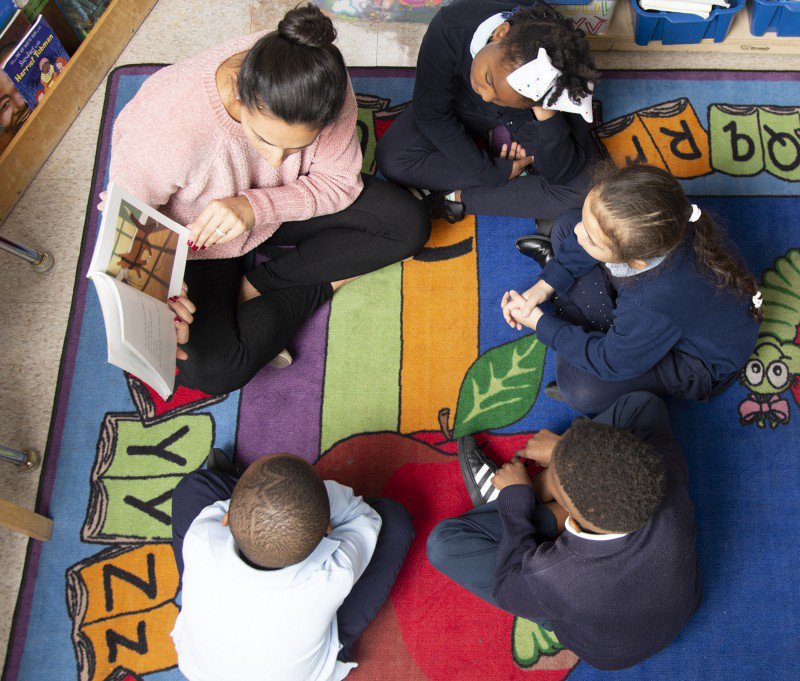
Despite variations in terminology, many professionals still consider dyslexia to be synonymous with the term “reading difficulty.” But a growing interest in the subject and a resurgence of the term in literacy research is increasing awareness of dyslexia’s neurobiological origins.
With things changing fast, it can be difficult to stay up to date on the latest research and instructional practices surrounding dyslexia. In this blog post, we’re providing four amazing reading materials to improve your understanding and ability to support struggling readers.
Defining dyslexia
Dyslexia is a critical topic in education these days — but what is it? This article from the Orton Gillingham Online Academy breaks down the International Dyslexia Association’s definition of dyslexia and what it means for students with this “hidden disability:”
“What is Dyslexia? Part 1” by Lorna Wooldridge
Dyslexia in your classroom
Students with dyslexia make up 15–20% of the school-age population, and are likely to be in every classroom. These fascinating statistics show just how present dyslexia is in the student population:
“Most Reading Difficulties Can Be Resolved or Diminished” by Carolyn Cowen
Dyslexic brains are wired differently, but intensive reading intervention can rewire them. Read about how science and technology are being used to understand what’s happening in a brain with dyslexia:
“How Science Is Rewiring the Dyslexic Brain” by Gabrielle Emanuel
Dyslexia: Fact and fiction
We know more about dyslexia now than ever before?—?can you distinguish between fact and fiction? Uncover the truths and myths of dyslexia now:
What is the Science of Reading, anyway?
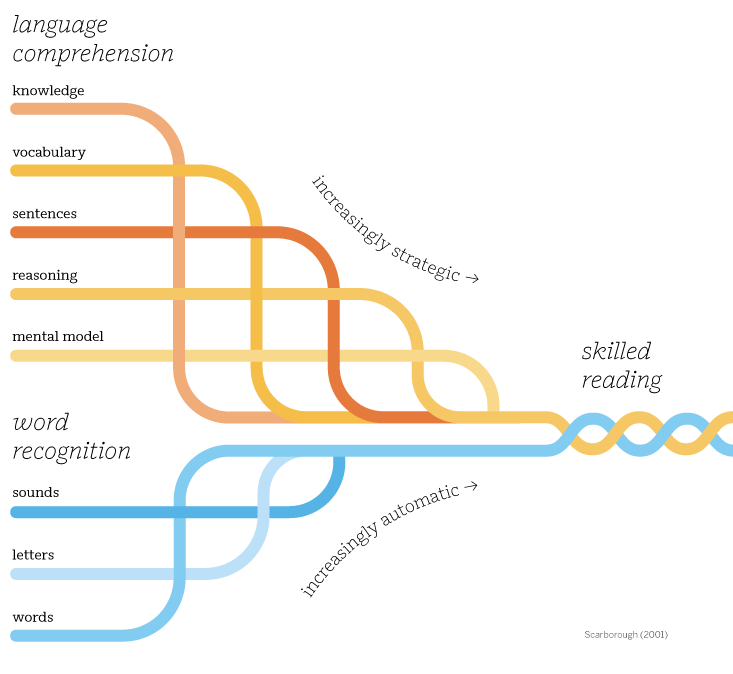
An overview of the Science of Reading
The Science of Reading refers to the wealth of research on how students best learn to read. At its heart is what experts Philip Gough and Bill Tunmer proposed as the Simple View of Reading.
When presented with a passage of text, how do you extract meaning from it? According to the Simple View, you need to do two fundamental things:
1. Convert written words into speech (decoding)
2. Understand that speech (decoding language comprehension)

Decoding
The Simple View points out that when children first learn to read, they already understand a lot of spoken language. But written words and letters are as strange to them as:

If you can’t decode the symbols in a sentence,you can’t read it—even if you know the language in which it’s written.
The best way to help students begin to read for themselves is to get them started on decoding, so it’s important to teach them that words are made up of sounds (phonemes), and then teach them what sounds the letters stand for. Unfortunately, the English system of writing does not make this easy. With at least six possible sounds for the letter “e,” kids can’t just learn that “e” makes the /e/ sound — though that’s a good start. They have to learn each specific pattern.
We know everyone is born with the language part of the brain — the speech and meaning parts.
Additionally, everyone is born with the visual part of their brain. We easily recognize shapes, objects, places, and faces. However, no one is born with the connections between vision and speech, and these are the connections that enable reading. Instead, you have to build the visual word form area of your brain one connection at a time. For example, to learn that “sh“ stands for the /sh/ sound at the start of “ship,” a tiny part of your brain gets rewired. Scientists have recently begun to understand how that works, and it turns out it’s a lot like building a muscle. This muscle is called the visual word form area, and it’s the seat of reading.
What does this all mean for teaching and learning to read?
On average, it takes a child two to three years to learn to decode English. It is the toughest alphabetic writing system in the world.
But, like a muscle, you can grow your brain with practice. Heikki Lyytinen, a Scandinavian neuroscientist, showed that the visual word form area begins to appear in the brain scans of non-readers after as little as five hours of training in decoding. Teachers need to help students practice deliberately, focusing on their weakest skills and working hard to improve them.
Language comprehension: Building mental models
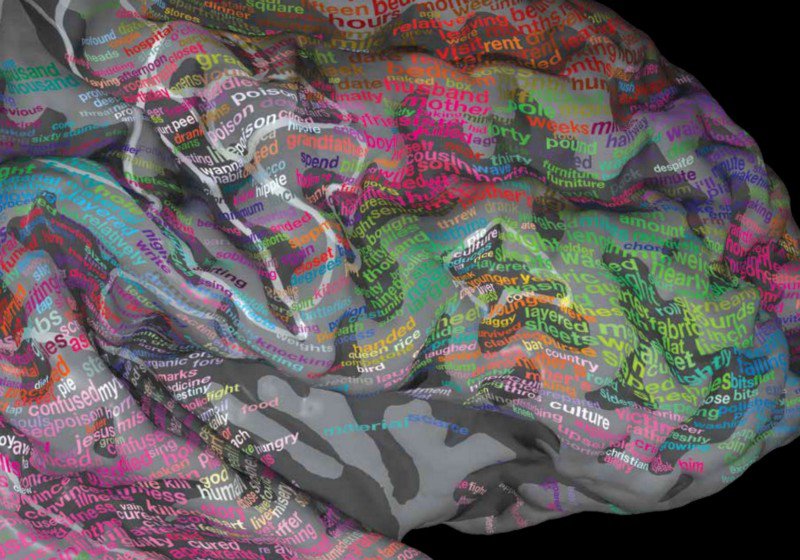
©Alexander Huth / The Regents of the University of California
Throughout this five-part series, we will cover the main components of the Science of Reading (SoR) and provide additional resources and research to guide your exploration and implementation of this important movement.
Say you’re given a passage of text to read. This particular paragraph describes half an inning of a made-up baseball game.
After you read the passage, you are asked to reenact the scene.
Which is more likely to aid your success?
A. Your ability to read
B. Your knowledge of baseball
C. It makes no difference
Would you be surprised to know the answer is actually B?
In part one of our series, “What is the Science of Reading anyway?,” we discussed the two main components of the Science of Reading: decoding (converting written words into speech) and language comprehension (understanding that speech). We also provided in-depth coverage of both learning and teaching how to decode the symbols of the English alphabet and strengthen the reading muscle.
LANGUAGE COMPREHENSION
In 1988, two young researchers and 64 students took part in an experiment that has forever changed how we think about reading and comprehension. One by one, the students were handed the same story covering half an inning of a made-up baseball game and asked to reenact it.
To the researchers’ surprise, they found that reading ability had little impact on how well kids understood the story—but knowledge of baseball did. In fact, students who were weak readers did as well as strong readers if they had knowledge of baseball.

Teaching knowledge explicitly improves reading comprehension. As Willingham has said, “Reading tests are knowledge tests in disguise.”
Researchers at the Haskins Lab at Yale tested this theory and found an extraordinarily high correlation between how well a 7-to-9-year-old child can recognize words and how well they comprehend text.
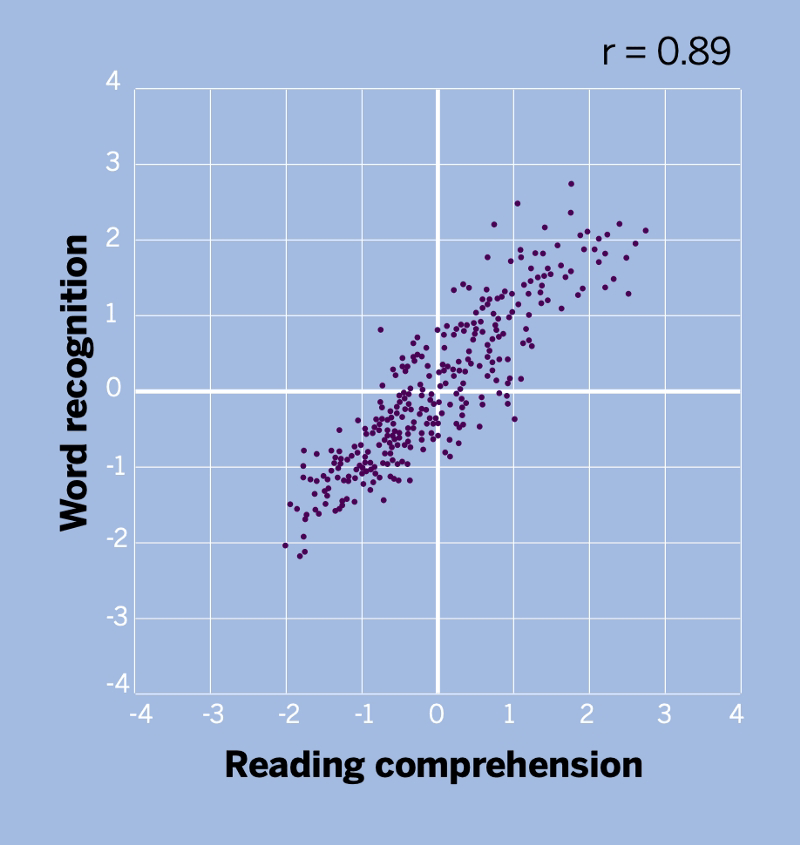
Common teaching mistake — Strategy instruction
So if reading comprehension is driven by a student’s vocabulary and knowledge, are widely taught strategies like finding the main idea equally critical?
Many strategies make intuitive sense: Stopping and re-reading when comprehension breaks down, for instance, is helpful for many children. But teaching the main idea strategy over and over is less helpful.
It is hard to find the main idea of a piece of writing if you don’t really understand any of the ideas in it. And even if you know a strategy — like re-reading when stuck — you also need to be well-versed in when to apply the strategy. You need to notice that you didn’t understand the text.
Often, strategy instruction neglects to offer students practice with identifying the situations in which they should use the strategy.
In the 1940s, a skills shift began to take place in education systems throughout the world. Its effects can be traced in the U.K., Sweden, Germany, and, most recently, France. This shift brought an emphasis on reading and math, squeezing out the broader knowledge taught in the sciences and social sciences. Some have linked the decline in standardized test scores—the SAT in the U.S. and the DEPP national exam in France—to this shift.
The National Survey of Science and Mathematics Education reported that today, classes in grades K–3 spend just 19 minutes per day on science and 16 minutes per day on social science.
To counter this loss of broader knowledge in our students, research suggests that we teach comprehension strategies in moderation and use the freed-up time to build knowledge (and vocabulary).
But simply exposing students to everyday speech doesn’t build a strong vocabulary. In a typical conversation, there are around 20 unusual words—such as dismayed or zeal—per 1000 words. Newspapers and books contain more than twice as many. Rich vocabulary, then, is gained not solely through speech, but through reading. Rich vocabulary, then, is gained not solely through speech, but through reading—especially when reading a variety of text types.
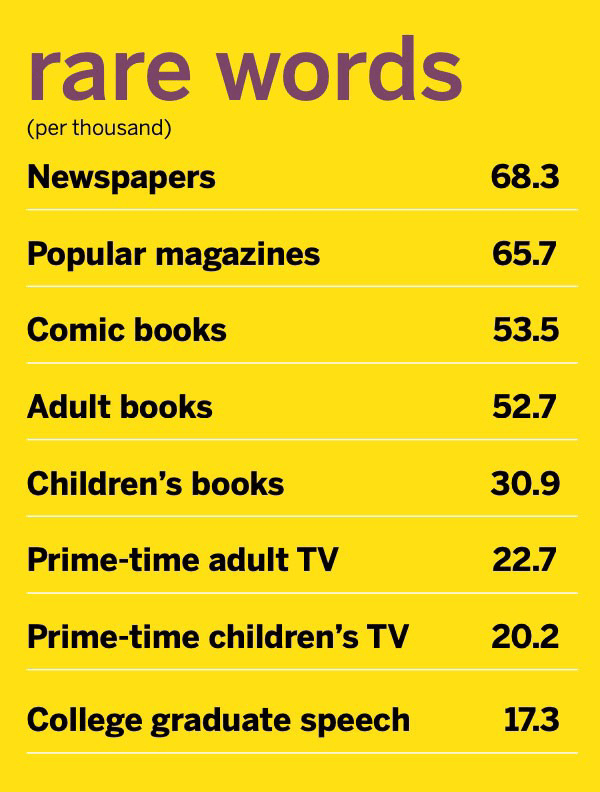
Mental models
Some readers with good word recognition, vocabulary, and knowledge are still weak comprehenders. Why might this be the case?
After students read a passage, they aren’t likely to recall the precise wording, but they will probably remember the ideas. Researchers use the term mental model to describe the structure you create in your mind to perform this feat of comprehension. Think of the process of building a mental model as a sort of micro-comprehension. Weak comprehenders build poor models. Hence, when asked prediction or mapping character development questions, they answer poorly.

There are four critical skills students need to improve their mental modeling:
- Decoding the usage of anaphoras (she, they, him). Some early readers can’t reliably figure out who the pronoun is referring to, especially in ambiguous text.
- Understanding the use of markers to signal ways that the text fits together — connectives, (like so, though, whenever) structure cues, and directions. Inexperienced readers may not know that but, though, yet, and however signal that something opposite follows.
- Writers make assumptions about what can be left unstated. For instance, when they read “Carla forgot her umbrella and got very wet today,” good readers will use their prior knowledge to conclude that it rained. Weaker readers who fail to make these gap-filling inferences wind up with gaps in their mental model.
- When something doesn’t make sense, you stop, re-read, and try to figure it out. Weaker readers just keep going—not because they’ve failed to figure it out, but because they’ve failed to notice that they don’t understand. They need explicit instruction in monitoring comprehension as they read.
Overview
Think of reading as a suitcase that you need two keys to open. The first key is word-level decoding, a skill that becomes automatic and fluent. The second key is language, vocabulary, and domain-specific knowledge. The more words you can decode, the more new words — and their meanings — you can learn. Similarly, the more knowledge you have on a topic, the more you can soak up on the same topic — and on related topics.
These two keys make up the Science of Reading. When schools focus heavily on one key or the other, the suitcase doesn’t open. So now the greater task of applying this knowledge in the classroom awaits us.
For more in-depth examples, brain scans, and information about the Science of Reading, download our free primer:
Learning mathematics through problem solving: Part 1
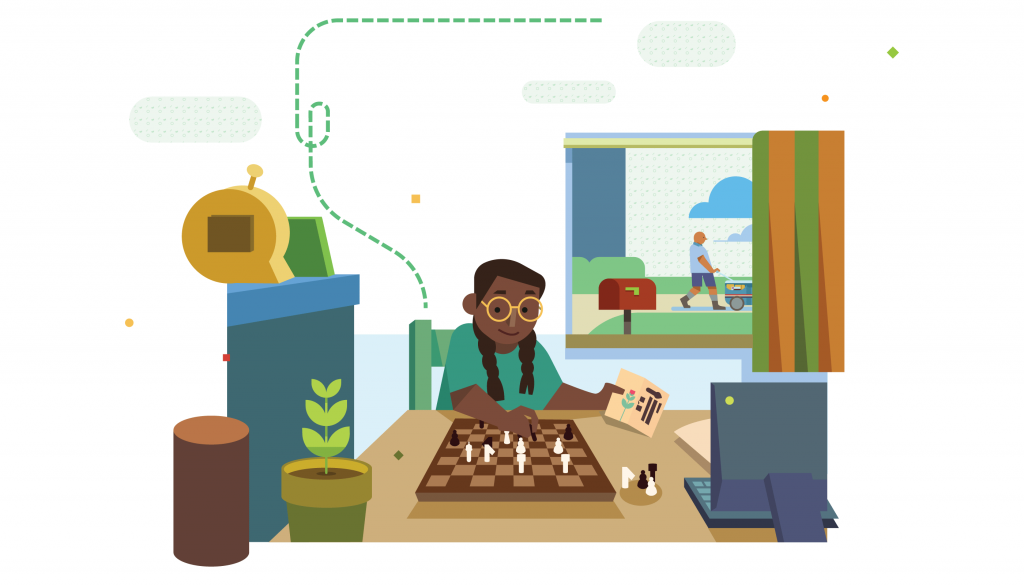
Productive struggle as a path to success
Many of us grew up with word problems as a part of math instruction, but we now know that students learn better when problems are more than just a part of learning. In fact, research shows that learning based on problem solving sets math students up for long-term success.
Why problem-based learning matters
What’s the problem with word problems? So-called “show-and-tell” pedagogies often rely on teachers demonstrating how to solve math problems, which doesn’t produce the kind of sticky learning that puts students on a path to long-term success.
As a result, too few students are prepared for Algebra I. Even fewer go on to succeed in the high school math courses that are prerequisites for college and for careers that require quantitative skills.
Research published in Frank Lester’s 2003 book Research and Issues in Teaching Mathematics Through Problem Solving shows that instruction is more effective when the students themselves grapple actively with the math problems, working in groups or individually. This productive-struggle approach is often called problem-based learning.
What problem-based learning looks like
In a problem-based lesson, students are introduced to a handful of interesting and often real-world problems or tasks that can be understood and/or solved by referencing background knowledge, previously learned content, and newly provided information.
These problems are designed to get students thinking about solutions they can then discuss with their peers. According to 2019 research conducted by Jack Dieckmann and Renae Skarin, this fosters both understanding of the content and math language development.
Over the course of the problem-based lesson, the teacher monitors student work, selects examples of that work to discuss with the class, and asks questions that propel the conversation and learning forward (as described by Margaret Schwan Smith and Mary Kay Stein in their 2011 book Five Practices for Orchestrating Productive Mathematics Discussions.
This synthesis incorporates students’ new insights and conceptions into their bigger-picture understanding of mathematics.
Problem-based math programs
There are already high-quality curricula that call for this kind of pedagogy, but this approach can be hard to implement because it requires both a shift in practice for many teachers and more active engagement from students.
That’s why the highest-quality problem-based lessons embody all eight of the National Council of Teachers of Mathematics (NCTM) Teaching Practices. Amplify Math is one of them.
Personalized learning grounded in the Science of Reading

Surveying the landscape
Recent data shows that far fewer young students are on target for reading proficiency than in previous years. In fall 2020, kindergarteners were 6 percent less likely to be on track in reading than they were in the 2019–20 school year.
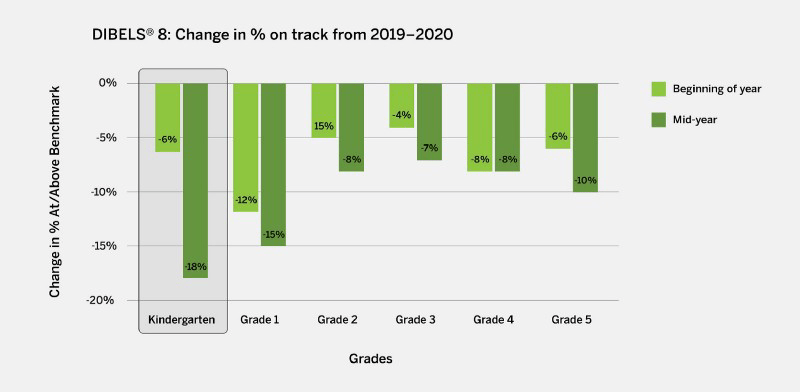
How do we reverse these trends? A personalized learning program steeped in research-based literacy practices can be your first step. In this blog, we introduce personalized learning programs for early literacy, discuss why they should be aligned with the Science of Reading, and outline the key features that all effective personalized learning programs should have to support ALL students.
What is personalized learning?
“Personalized learning in literacy education is an approach in which teaching and other learning experiences build on each student’s strengths, address each student’s needs, spur student motivation and agency, and help all students meet grade-level standards and, ultimately, achieve college and career readiness.”
— Student Achievement Partners
Achieve the Core outlines a set of key components every personalized program should include to accelerate literacy:
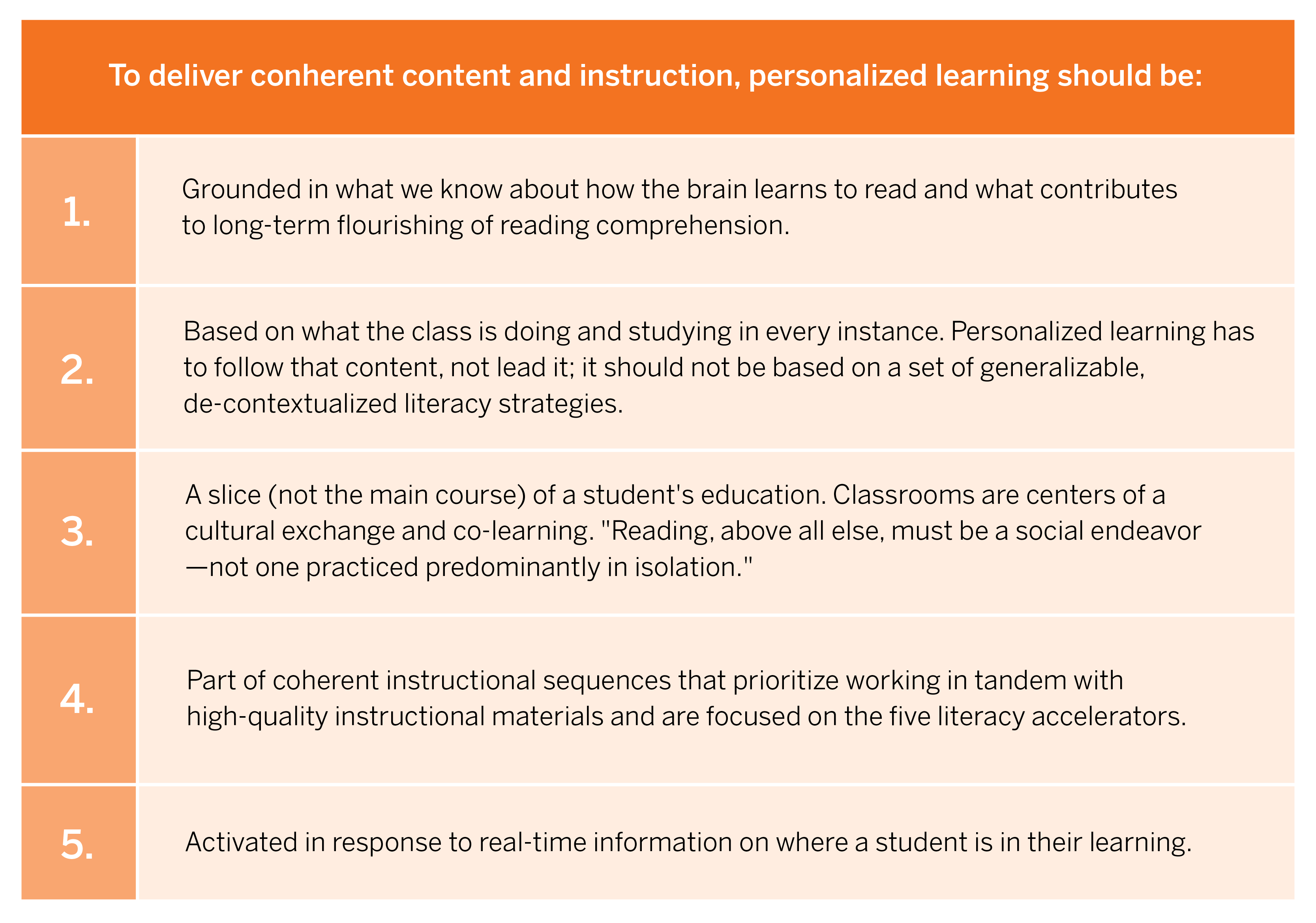
How can I bring the Science of Reading into personalized learning?
Not all personalized learning programs should be treated equally. Programs should provide explicit, systematic foundational skills, continue to build background knowledge, and support core Science of Reading instruction. Focusing on the things we do while we’re reading that allow us to make sense of text — also known as comprehension processes — is a key component of supporting beginning readers.
How will I know if a personalized learning program is based on research about how children learn to read?
We’ve provided a checklist of key features to look for when selecting a personalized learning program grounded in the Science of Reading.
1) Look for a program that complements your Science of Reading instructional practices.
The content of a personalized program should support your core Science of Reading instruction.
Look for research-based instruction aligned to Scarborough’s Reading Rope, a focus on comprehension processes and language structures in addition to foundational skills, and personalization that adapts based on student needs.
2) Look for a program that employs a whole-child approach.
A whole-child approach focuses on students’ individual strengths and needs.
Look for targeting of skill practice at the just-right level in ALL areas, a focus on students’ individual strengths as well as their needs, and more opportunities for success, all of which build student confidence.
3) Look for a program that uses an adaptive scope and sequence.
In an adaptive model, students progress along a unique pathway through a learning map that adapts based on their performance.
Look for full adaptivity — where students progress along a pathway that adapts on multiple dimensions, not just one. The program should offer data to place students into personalized pathways and continue to analyze student performance data to determine the skills they practice and when.
4) Look for a program that acts as a digital tutor to save teachers time.
A program that aims to save you time provides students with differentiated instruction and pathways when they’re really struggling.
Look for a program that provides scaffolding and differentiated pathways to students when they’re struggling, and offers precursor and ancillary skill development and advancement opportunities before revisiting challenging content. Programs should alert teachers with targeted resources to support students and keep them moving.
5) Look for a program that motivates students intrinsically.
Programs that focus on intrinsic motivation leverage a growth mindset theory to ensure that students have fun while they learn.
Look for a program that rewards persistence as much as performance and ensures students have fun while they learn.
Personalized learning supplemental tool: Amplify Reading
Amplify Reading is a personalized learning program powered by the Science of Reading. The program blends compelling storytelling with research-based instructional practices to offer:
- Personalized instruction across 13 different critical skill areas that adapt to each student’s needs while building on their strengths.
- Explicit practice in comprehension processes, phonics, and vocabulary.
- Extra support and scaffolds for struggling readers and English learners.
- An immersive game-play design that motivates students and makes learning to read fun.
To learn how this program can accelerate reading growth in your district, request a personalized walkthrough below.
Amplify Reading – Amplify Reading
Work cited
Liben, Meredith, et al. “What Principles Must Underlie Successful Personalized Learning?” Peers and Pedagogy, 27 Oct. 2020
Learning disabilities and their emotional impact
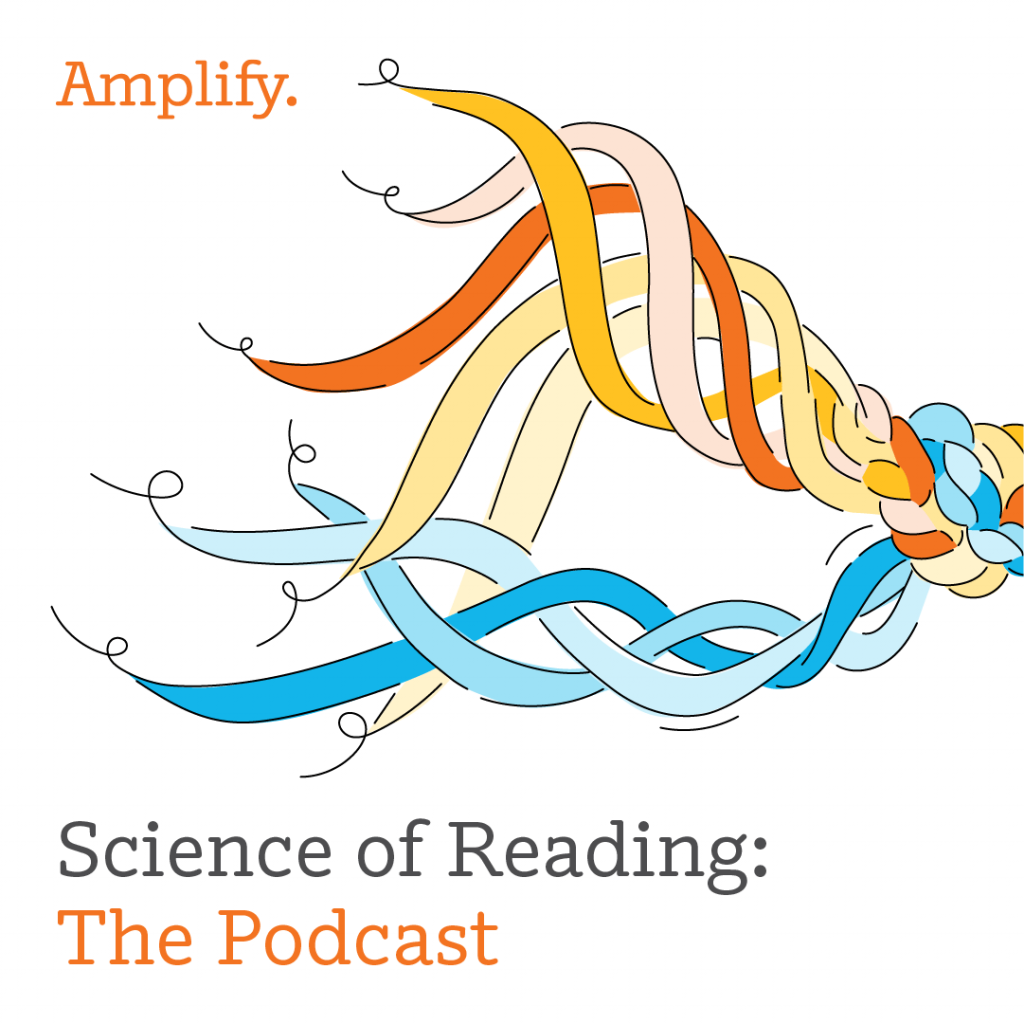
Welcome back to Science of Reading: The Podcast! How can we as educators better understand what the process of being diagnosed with a learning disability looks and feels like for children? Beyond that, what does it feel like to go through school undiagnosed and how does that impact how students relate to themselves, their peers, and school in general?
Find your child’s interests, or your student’s strengths … pursue those and give them opportunities to let those feed their soul.
Dr. Sheila Clonan, Psychologist and founding Board Member of The Reading League
This episode features Dr. Sheila Clonan discussing her work with identifying learning disabilities (particularly dyslexia) in children. Dr. Clonan also explores the mental and emotional effects of learning to read with dyslexia and how it impacts behavior and self-concept, providing two insightful analogies that illustrate what it feels like for students who aren’t given explicit instruction but are still expected to know how to read. She then ends the episode with practical advice for educators and parents on how to support and encourage children.
Listen below!
For more wisdom and research on the best ways to teach reading, subscribe to Science of Reading: The Podcast.
Empowering multilingual learners
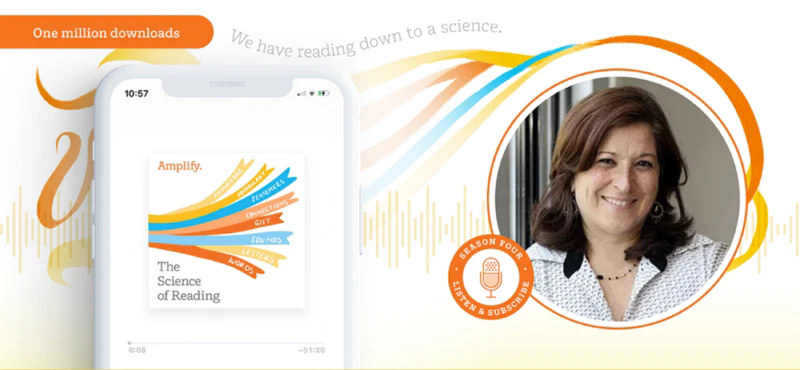
Welcome back to Science of Reading: The Podcast!
For most teachers, it’s no longer a question of if you’ll have a multilingual learner in your classroom, but rather a question of how many, and what languages they bring with them. While the Science of Reading can help all learners, its insights should be applied differently when students are learning a home language as well. The more we’re able to read, the more we’re able to learn.
—Dr. Elsa Cárdenas-Hagan
In this episode, Susan Lambert is joined by Dr. Elsa Cárdenas-Hagan to discuss the unique challenges and opportunities presented when teaching multilingual learners how to read. Dr. Cárdenas-Hagan is a bilingual speech-language pathologist and certified academic language therapist who serves as director of Valley Speech Language and Learning Center in Brownsville, Texas. In this episode, she discusses how teachers can make connections between students’ home languages and English in order to celebrate their language and give them new tools to better understand English. She also stresses the importance of teachers educating themselves on their students’ home languages so they can spot orthographic and phonological similarities and differences. She also highlights the importance of educator collaboration for student success.
Listen now!
For more wisdom and research on the best ways to teach reading, subscribe to Science of Reading: The Podcast.
Dyslexia and developmental trajectories
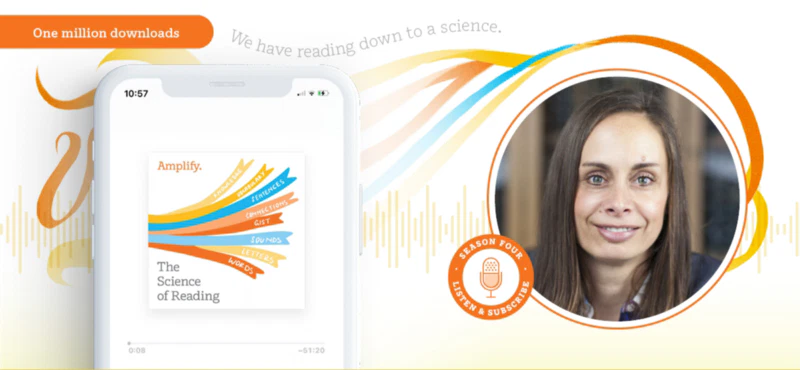
Welcome back to Science of Reading: The Podcast!
As educators, we’re often reminded of the importance of early intervention, but hear little about the science behind it. What happens when students aren’t identified as at-risk for reading difficulty early enough? What about when they are and receive intervention? And importantly, how does this all connect to dyslexia?
We want to make sure that we find everyone who is struggling with learning to read and make sure that everyone gets to experience the joy of learning to read.
— Dr. Nadine Gaab
In this episode, Susan Lambert joins Dr. Nadine Gaab to discuss dyslexia and the developmental progression of the brain, and the behavior of students as they learn to read. Dr. Gaab, an Associate Professor of Education at the Harvard Graduate School of Education, focuses on both typical and atypical learning trajectories from infancy to adulthood, with a special emphasis on language and reading development and the role of the environment in shaping these trajectories. Dr. Gaab provides further insight into these developmental trajectories in this episode, especially as they relate to early intervention for at-risk students. She differentiates between early diagnosis of dyslexia versus early identification of at-risk students, adding nuance and complexity to the discussion of dyslexia by emphasizing the ways educators can ensure that all students experience the joy of learning to read.
Tune In Below!
For more wisdom and research on the best ways to teach reading, subscribe to Science of Reading: The Podcast.
The 5 patterns we found in schools with improved reading
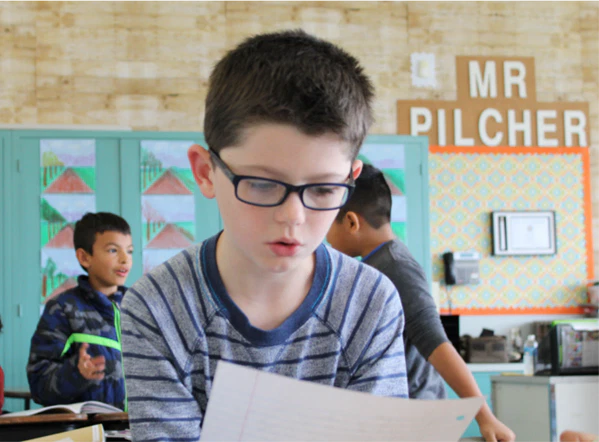
After a decade of tracking students’ pathways in early reading, we’ve been able to identify the schools getting outsized results—so we called them to ask what they’re doing! And so far, we’ve identified five consistent patterns.
1. Start early.
Schools that deliver the strongest results work hard to get kids on track — and often ahead — in kindergarten. Why? Those who get through the decoding stage by age eight begin building vocabulary and background knowledge through reading itself. These schools reason that it’s easier to get students ahead from the start than to try to catch them up later.
2. Surround kids with books.
Reading at the right level improves decoding, vocabulary, knowledge, and stamina. In a recent study, 11 students who read an extra seven minutes per day in class had substantially higher reading rates than other students. Those minutes add up to 160,020 additional words read each school year, and reading volume is important in building knowledge—even more so than cognitive ability.
3. Measure.
All schools collect data; the best ones think of it as measurement. For instance, they measure whether an intervention is having the expected impact. If not, they introduce new, temporary measures for attendance, perhaps, or fidelity of implementation. They are constantly tinkering and learning. They describe themselves as never satisfied.
4. Create a support team.
One of the most effective practices we found is ensuring that students get extra support when they need it. Classroom teachers can have a hard time reaching everyone, even with the best intentions. A cross-classroom team can base its decisions on careful data analysis and do whatever it takes to ensure extra resources are found and allocated where they’re needed most.
5. Beat summer.
Summer is brutal. Students often lose as much as half of their hard-won gains from the school year over the summer weeks, and the loss is especially steep for students from lower-income households. But even a few minutes a week of reminder exercises can reverse these losses, just as using a muscle prevents atrophy.
Reading at a college-entry level is a virtuoso performance. Even reading on level by third grade requires a constellation of successes — from mastering the sound-spelling patterns of English, to the painstaking accumulation of vocabulary and knowledge necessary to make sense of sentences. The simple verb to read hardly feels adequate to describe what students are doing when they make sense of the text. Ensuring the effortless enjoyment of reading for all is one of the great social undertakings of our time. We’re so happy to be working toward this noble goal with you.
Amplifying Your District Award winner

This Amplifying Your District Award honored two district leaders who are driving change using the Science of Reading in 2021. Motivated by low literacy rates in her school district, Alli Rice dug into the research behind the Science of Reading because she was determined to increase equity. Through various events and Knowledge Builders for the teachers in her care, she then effectively led the shift to a research-based curriculum in her district. Read on for our conversation with Alli about her work with the Science of Reading!
What does the Science of Reading mean to you?
For me, it’s really about equity. Thousands of kids are already a step behind because of their skin color, their neighborhood, or their zip code, all of these things that really shouldn’t define their academic ability or their opportunity in life. I’ve looked at statistics around prison populations and illiteracy rates. Some, so many adults are functionally illiterate and they can’t fully understand. They can’t even read their prescriptions.
I also work for a district where most of our kids are on the lower end for socioeconomic status. We have a very high ELL population and 63 home languages spoken in my district. And we are the urban center of our area. Historically, we have been a balanced literacy district, but we have watched our test scores decline.
Since discovering the Science of Reading and this completely different approach to teaching literacy, I feel like I have unlocked Pandora’s box of potential. By addressing our core and aligning our teaching practices, our students can feel success and our teachers will, too. My teachers here have the biggest hearts of any educators I have ever worked with, and they work tirelessly day in and day out to support our students. We try to provide as many enrichment opportunities to all of our kids and to expose them to the greatest and the best. The ability to read, to me, is the greatest civil right. If we’re not providing them that, I can’t sleep at night.
What news, materials, or information do you consume to help you teach?
We use Amplify CKLA and Amplify Reading and those programs are just wonderful. I am also an avid listener of Science of Reading: The Podcast. We arranged for Natalie Wexler and Susan Lambert to do a live professional development session in our district, which was so fantastic, especially for our most reluctant coaches and administrators. Our district-wide LETRS training has also been life-changing. We currently have 800 people who are completing the training, which has helped to align the district and put us all on this path to success.
One particularly impactful thing, and that I rely heavily on for support, is my teacher cadre. Each cadre is about 14 teachers in the district and they represent all of our clusters. We’ve partnered up with our Diversity, Equity, and Inclusion department to do text bias reviews on materials, which has been important for our adaptations for cultural responsiveness. Our selection cadre came from that as well, when we landed on Amplify CKLA for K–3. The teacher input and camaraderie I get from my cadre is so instrumental and I am so grateful for them.
What advice do you have for teachers starting out with the Science of Reading?
Find your people, find your community. I remember Margaret Goldberg’s presentation during last spring’s Science of Reading symposium, and how she said you need to find your dots, you need to seek out like-minded people and go where they are. Find those people who are ready to make the change like you are, or perhaps have already done it, and can be that positive support system you need to make a difference. Don’t be afraid to message people on Twitter or Facebook or LinkedIn, ask about their experiences, and build that community around you. Find the ones who are going to partner with you, who will lead you the right way, who will take your calls. And read all the books!
Watch the Science of Reading awards show!
Learning to read digitally vs. in print

Welcome back to Science of Reading: The Podcast!
We often assume children are digital natives, but research shows that many are not being taught to use technology even when they’re surrounded by it. And though some students prefer to read digitally, research has demonstrated that this doesn’t necessarily mean they’re reading more effectively. How can we, as educators, best utilize the strengths of both technology and print to build strong foundational skills in reading?
As we saw in this pandemic, reading digitally is not going anywhere … and, in fact, is what made learning even a possibility the past year and a half.
—Dr. Lauren Trakhman, Professor, University of Maryland, College Park
In this episode, Susan Lambert sits down with Lauren Trakhman and Patricia Alexander, professors from the Department of Human Development and Quantitative Methodology within the College of Education at the University of Maryland, College Park, to discuss their research on the effectiveness of teaching reading in print vs. digitally.
Their conversation explores the ways in which teaching reading in print remains vital even in a digital world. Trakhman and Alexander also explain why it’s important to avoid making assumptions about students’ abilities to use technology and how that can be a detriment to reading success. Lastly, they discuss strategies for using technology to boost children’s foundational skills.
Listen below!
For more wisdom, research, and practices on the best ways to teach reading, subscribe to Science of Reading: The Podcast.
4 ways to weather educational change
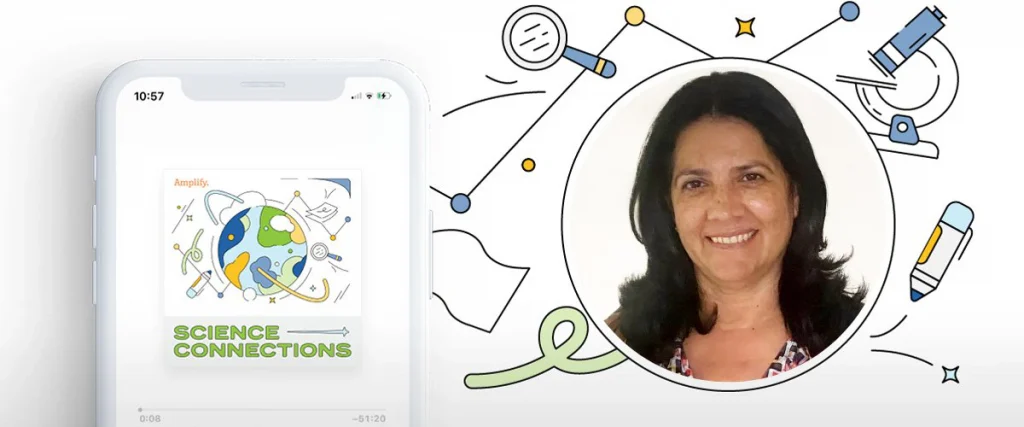
The landscape of education is constantly shifting. That’s always been true, because the world is constantly changing. But at no time in recent memory has the landscape of education been forced to change in as many ways as it has over the past few years.
How can teachers navigate the seismic changes in the education system in their day-to-day lives?
In this recent episode of Science Connections: The Podcast, host Eric Cross talks about managing educational change with veteran educator and former Miami-Dade County Public Schools (M-DCPS) Middle School Science Teacher of the Year Marilyn Dieppa.
Below, we’ve outlined four tips for weathering shifts. The bottom line? It’s important for teachers to be able to change with the times, while remaining a steady, solid presence for students.
1. Embrace change—it’s good for kids, too.
“I always change my labs. I don’t like to do the same thing over and over again,” says Dieppa. And when she tries something new, she tells her students she’s experimenting. (After all, it’s science!)
“They’re afraid of trying something new and failing,” Dieppa says—so she tries to model taking on the unknown, learning, and adjusting as needed. This is part of cultivating a growth mindset for kids. “It’s for them not to be fearful. That gives kids a foundation they need.”
2. Have an open-door policy.
The pandemic has exacerbated challenges in kids’ lives that can make it tough for them to learn. Some even say we’re in a youth mental health crisis. Now more than ever, it’s important that “you become more than just a science teacher,” says Cross. “You’re a mentor. You’re an encourager. Sometimes you’re a counselor.”
It’s impossible to be everything to every student, but it’s important to let them know you see them.
“I always say, I’m not there to really be your friend, but I’m there to help you,’” says Dieppa. “And you gotta tell ’em, you know, ‘if you need to talk, come talk to me’. Because so much of what we’re doing is like life coaching in addition, and that connects to their success in the classroom.”
3. Measure wins in lots of ways.
What keeps Dieppa going? “Whether [students] have struggled all year and they’ve had that one piece of success, or they come back and tell you they didn’t realize what they got out of middle school science until they got to high school, those are my moments of success.”
4. Remember—you’re still learning, too.
Yes, you’re the teacher, but “you don’t have to be the expert in everything,” says Cross. “Teachers tend to be more risk-taking and innovative when they’re willing to say, ‘I don’t have to know everything in order to do something.’”
Whenever it feels like you can’t do something or don’t know something, remember: You can’t do it yet. You don’t know it yet. Growth mindset phrases for students apply to your growth, too.
Listen to the whole podcast episode here and subscribe to Science Connections: The Podcast here.
About Amplify’s Science Connections: The Podcast
Science is changing before our eyes, now more than ever. So how do we help kids figure that out? How are we preparing students to be the next generation of 21st-century scientists?
Join host Eric Cross as he sits down with educators, scientists, and knowledge experts to discuss how we can best support students in science classrooms. Listen to hear how you can inspire kids across the country to love learning science, and bring that magic into your classroom for your students.
Science of Reading dos and don’ts
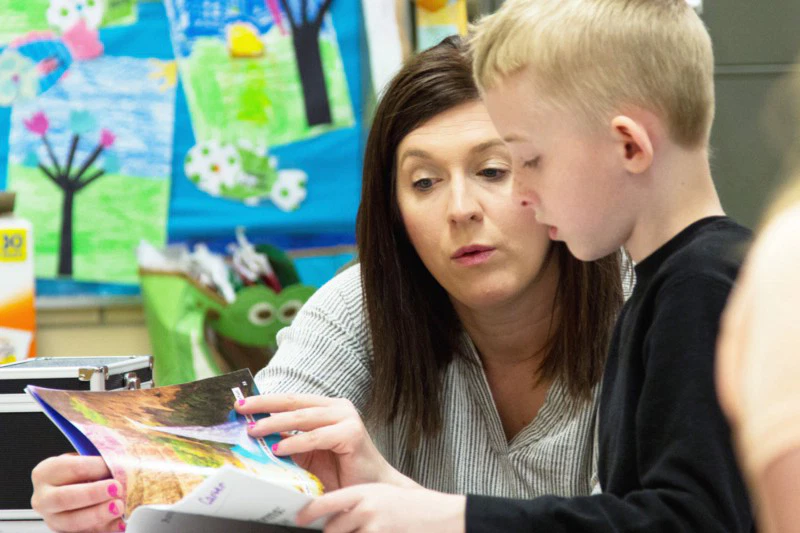
For classrooms and districts making the shift, understanding what a true Science of Reading curriculum looks like can be challenging. How do you know which instructional practices to adopt, which to avoid, and which ones are the real deal?
We’ve outlined five practices to start implementing today.
1. Use decodable readers.
Early readers need regular practice with grade-level text . Learning to read is not innate and must be taught through explicit, systemic instruction. Early readers need regular practice with grade-level text, especially text that’s connected to each day’s phonics instruction to helps students apply what they’ve learned.
Move away from level readers and curricula that have:
- A focus on predictable text or below-grade-level text.
- Decodable readers that don’t follow a clear phonics scope and sequence aligned to instruction.
2. Provide all students with dedicated phonics instruction.
Learning to read is not an innate skill. It must be taught through explicit, systematic instruction. An effective approach to phonics instruction provides enough time for teaching, application, and practice.
Shift from mini-lessons and curricula that have:
- Phonics instruction given only on an as-needed basis. When phonics is on an as-needed basis, students don’t get what they need to prevent reading difficulty.
- Students alternating between limited phonics, guided reading, writing, and vocabulary practice in a mini-lesson.
3. Help students with phonics-based scaffolds.
Learning to decode builds neural pathways that are critical to automatic reading. Students need practice sounding out words, not doing guesswork.
Transition away from three-cueing or word guessing and curricula that have:
- Prompts that encourage students to guess through three-cueing (e.g., “What word would make sense,” “what’s in this picture”).
- Predictable books that enable pattern memorization.
4. Teach content.
Language comprehension is as important as decoding. The more background knowledge students receive, the more prior knowledge and vocabulary they can bring to texts.
Limit use of isolated comprehension strategies and curricula that have:
- Limited time spent on each topic, or isolated topics introduced without connection to each other.
- Comprehension skill practice without a strong content foundation (e.g., asking students to “find the main idea” or “determine the author’s purpose” in disconnected texts).
5. Follow a clear instructional path.
Clear instructional paths offer explicit guidance and cohesive structure, the most beneficial—yet overlooked—elements of teaching reading effectively. A definitive instructional path (rather than a patchwork) enables components to build upon each other. This gets students the support they need right away, so they don’t have to wait for intervention.
Withdraw from “choose your own adventure” models and curricula that have:
- A model that provides multiple instructional pathways, which often lead to inconsistencies.
- So many pieces to their programs that it’s unclear how to implement each effectively.
Linguistic variation and dialects: difference, not error
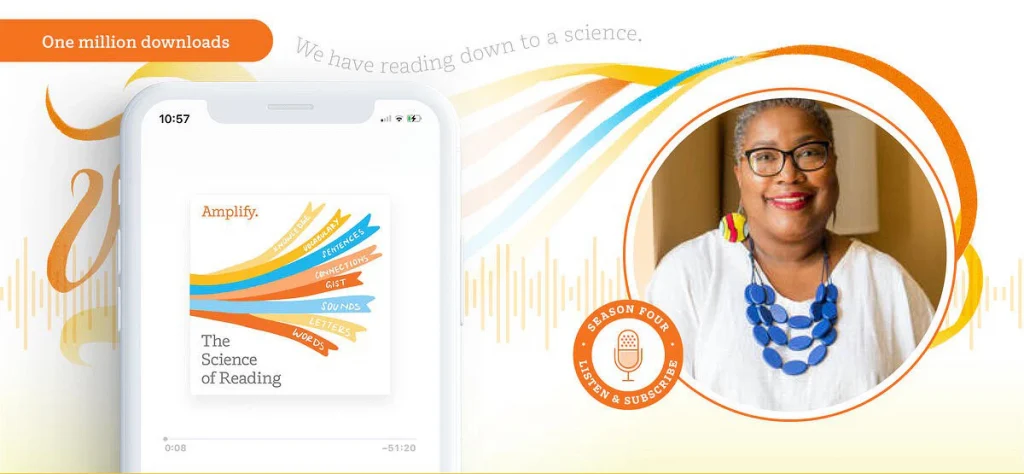
Teachers need to know about the language variety that their students are speaking.
—Dr. Julie Washington
In this episode, Susan Lambert is joined by Dr. Julie Washington to discuss linguistic variety and dialects as difference, not error, and how to best support all students as they learn to read.
Dr. Washington—professor in the School of Education at the University of California, Irvine (UCI)and a speech-language pathologist—offers practical advice for educators teaching reading to children who don’t use general American English, and discusses how to do so in a way that respects students’ community languages and dialects. She reminds educators that students rise or fall to the expectations set for them, and encourages educators to remember that if they embrace language variety as something that needs to be understood and incorporated into developing successful readers, they will develop successful readers.
Inquiry-based learning: 3 tips for science teachers
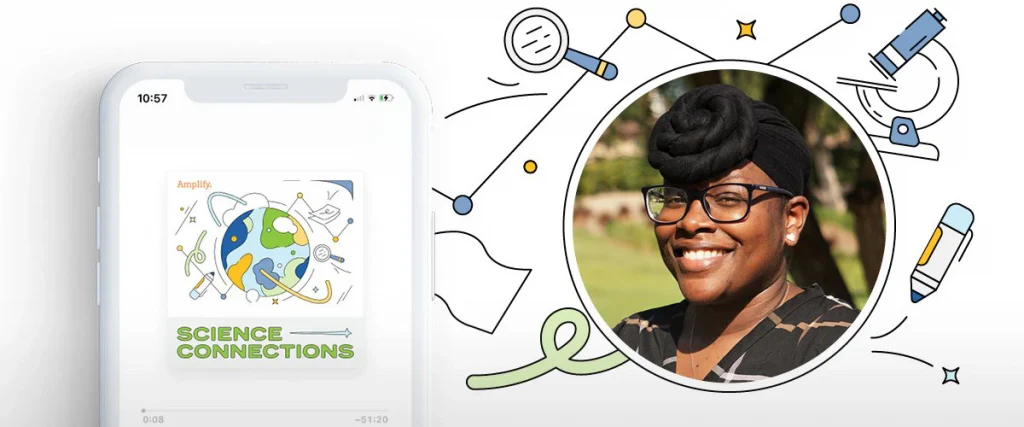
Which practice is at the top of the eight NGSS Science and Engineering Practices? Good question! It’s asking questions and defining problems.
And why is asking questions so important? (Also a good question.)
Because science isn’t just facts. Science is a process of finding answers—a process that starts with questions. That’s why students learn like scientists best in a science classroom defined by phenomena-based learning, also known as inquiry-based learning.
How can science educators bring this approach into the classroom?
That’s one question host Eric Cross and science educator and professional development facilitator Jessica Kesler address in the latest episode of Amplify’s Science Connections: The Podcast.
The power of questions
Kesler’s mission at TGR Foundation, a Tiger Woods charity, is to empower educators to create engaging classrooms that foster future leaders.
“We train teachers on STEM competencies and the pedagogical tools and strategies to implement the STEM we’re doing in our learning labs,” she says. “Then they can implement it in the classroom and have this multiplicative effect that can help us reach millions of kids and prepare them for careers.”
Those pedagogical approaches include student-centered learning practices. Using those practices, teachers spend less time delivering facts and more time asking questions, while developing students’ ability to do the same.
That’s how we shift science from, as the NGSS frames it, “learning about” to “figuring out.”
Per the NGSS: “The point of using phenomena to drive instruction is to help students engage in practices to develop the knowledge necessary to explain or predict the phenomena. Therefore, the focus is not just on the phenomenon itself. It is the phenomenon plus the student-generated questions about the phenomenon that guides the learning and teaching. The practice of asking questions or identifying problems becomes a critical part of trying to figure something out.”
Inquiry-based learning examples and approaches
Kesler recognizes that a shift to inquiry-based learning can’t be made overnight, or all at once. “We never suggest overhauling your classroom…add a little bit here and there and see how it impacts your students.”
Here are some strategies Kesler suggests for empowering educators to deliver inquiry-based science learning.
- Cultivate an inquiry mindset. We live in a world where answers to pretty much everything are right on our phones, right in our pockets. That ease and accessibility can dampen student curiosity. But when teachers start shifting focus from asking students for answers to asking them to develop smart questions, students can grow that mental inquiry muscle.
- Make inquiry visible. No need to be sneaky—you can be explicit with students about what you’re doing, and what you’re inviting them to do. Think: “What are tools and strategies you can use so that students can illuminate their thinking for themselves and for you and their peers?” Kesler says. “So the students get to see their own thinking as they progress, and you get to tell the story of how their minds have evolved.” Paying attention to student questions also enables you to observe where students are making mistakes, where misconceptions come up, and where you should target your next lesson, Kesler adds. “So it makes you more responsive in the moment.”
- Build an inquiry environment. Asks Kesler: “What are the things that you can embed into your physical space and develop in a student’s intellectual space that will help you create a holistic inquiry environment?” There’s no one right answer, but a shift in environment can support a shift in intellectual approach. (Consider the opposite: “If you take someone out of an old habit or space and tell them, ‘We are gonna change your minds and teach inquiry,’ but put them back in the same environment, they’re going to be conflicted,” Kesler says. You could create displays that present questions rather than facts, or arrange the room to support conversation rather than lecture—whatever makes sense for your space.
Definitely test, explore, experiment—even take risks—and ask your own questions. After all, the inquiry mindset is for you, too!
Learn more
Explore how Amplify Science supports inquiry-based learning.
Listen to all of Season 1, Episode 10, Empowering the science educator: Jessica Kesler, and find more episodes and strategies from Amplify’s Science Connections: The Podcast.
Meet Amplifying Your District Award Winner Brittney Bills

Brittney’s passion for reading development shines through her commitment to early literacy. Under a four-year plan she devised, Brittney’s district adopted a new curriculum and system of professional development that embraced the Science of Reading and celebrated its impact on their students.
What does the Science of Reading mean to you?
I believe the Science of Reading is about hope. Knowing 95% of students are cognitively able to read at grade level with the right explicit instruction was empowering for me and the teachers I support. Every child should know the joy and success of reading.
What tools/curriculum do you use to implement the Science of Reading? How did Amplify help?
We are an Amplify district and super proud to be an Amplify district. Last year, we started with Amplify CKLA Skills adoption because that’s where we had the biggest gap in terms of our instructional resources and supporting our students. Then we added on Knowledge for K–2 this year, integrated it for grades 3–5, and started using Amplify Reading.
We started using mCLASS® with DIBELS® 8th Edition with all of our K–3 students. After last year, fourth- and fifth-grade teachers caught wind of these awesome things that the lower elementary teachers had access to that they didn’t, so we expanded mCLASS with DIBELS 8th Edition to K–5 this year. We love the high-quality resources and programs that Amplify has to offer and we have seen some tremendous results early on and had some wonderful success. They’re supporting us in our vision, which is wonderful.
What advice do you have for teachers starting with the Science of Reading?
Just get started. Don’t feel overwhelmed by what you don’t know. We have seen tremendous success and tremendous results, but there’s still a lot of work left for us to do. I would say decide the thing that you want to focus on, pick something that you want to understand better, that you want to learn more about, and commit yourself. In the education world, we are almost paralyzed by the sheer amount of things that need to be done. There’s this sense of immediacy and urgency, that you have to balance with your reality.
Make sure that teachers feel supported because teachers go through a grieving process once they learn more. They feel guilt and sadness about some of the students they have taught in the past. Stay committed to growing and developing because science is going to change and you have to evolve and move with the science.
Watch the Science of Reading Star Awards!
The Science of Reading Star Awards are back!

If you’re reading this, someone taught you to read! You might remember learning your letters with a standout teacher, or simply curling up with a loved one to point out pictures and sound out words.
No matter who stands out to you, it takes a constellation of people to help children learn to read—both inside classrooms and beyond, and from district leadership to student families.
It also takes science: specifically, the science of teaching reading.
And we want to celebrate Science of Reading stars!
That’s why we created the Science of Reading Star Awards. Read on for more information about them, including how to nominate someone for the 2023 Awards. (If you’re already ready to nominate a star in your community, go right ahead!)
Reading educator awards for teachers who shine.
We launched this awards program in 2021—a year when schools, educators, and students were still working to bounce back from pandemic challenges and into a new normal. Even then, educators drove change, leading their school communities on a journey to the Science of Reading.
Our inaugural award program honored educators who championed and advocated for the Science of Reading in their classrooms, schools, or districts.
They generated buy-in. They inspired their peers and students. They successfully brought research-based instruction, phonics instruction, and foundational literacy skills into their approaches—and had remarkable gains to show for it.
Our 2021 awards, both finalists and winners, celebrated:
- Teachers who directly impacted their students and served as role models for their colleagues by applying the Science of Reading.
Winner: Anila Nayak, instructional coach and reading intervention teacher, Los Angeles Unified School District, California.
She says: “The Science of Reading is becoming my North Star because it’s guiding me to give the best that research has shown for my students.”
- Principals who have supervised the successful shift to the Science of Reading in many classrooms across several grades.
Winner: Cathy Dorbish, principal, Austintown Elementary School, Ohio
She says: “We know our kids come from all different backgrounds, different opportunities, and parents who read or don’t. By teaching them in this manner, we’re leveling the playing field. Those kids who may be economically disadvantaged, [but] they’re going to be readers just like the kids whose parents bought them 100,000 books.”
- District leaders who have driven or are driving change using the Science of Reading.
Winner: Alli Rice, elementary ELA lead, Kansas City, Kansas Public Schools
She says: “Teachers are saying things like ‘I never really thought my kids could have a discussion about the Renaissance during language arts class, but they are doing it.’”
Winner: Brittney Bills, curriculum coordinator, Grand Island Public Schools, Nebraska
She says: “I believe the Science of Reading is about hope. Knowing 95% of students are cognitively able to read at grade level with the right explicit instruction was empowering for me and the teachers I support.”
Nominate a Science of Reading star!
Inspired? Now think of the educators in your world—especially those devoted to literacy. Do you know someone who has transformed their classroom and empowered their students with the Science of Reading? What about someone who’s gone above and beyond core instruction based in the Science of Reading to apply these evidence-based practices in less traditional ways in areas like assessment, intervention, biliteracy, and beyond? (And yes, this person might be you!) We also have new categories this year, to honor both the traditional, and less traditional, Science of Reading champions!
Submit your nomination for the 2023 Science of Reading Star Awards by February 28!
All award winners will receive:
- A free professional development session with Susan Lambert, host of Science of Reading: The Podcast.
- A library of Science of Reading books to guide their journey.
- A subscription to The Reading League Journal.
- A spotlight on an episode of Science of Reading: The Podcast.
The Grand Prize winner will receive full conference registration and associated travel costs to Big Sky Literacy Summit in Big Sky, Montana, Sept. 2023 (dates forthcoming).
Learn more
To hear more from the 2021 winners, you can watch our Amplify Science of Reading Star Award Winners panel, now available as an on-demand webinar, or tune into Science of Reading: The Podcast to hear their conversations with host Susan Lambert.
Their stories and perspectives may help you discover how you can drive change in your classroom, school, and district with the Science of Reading!
Found in translation–the power of cross-linguistic transfer
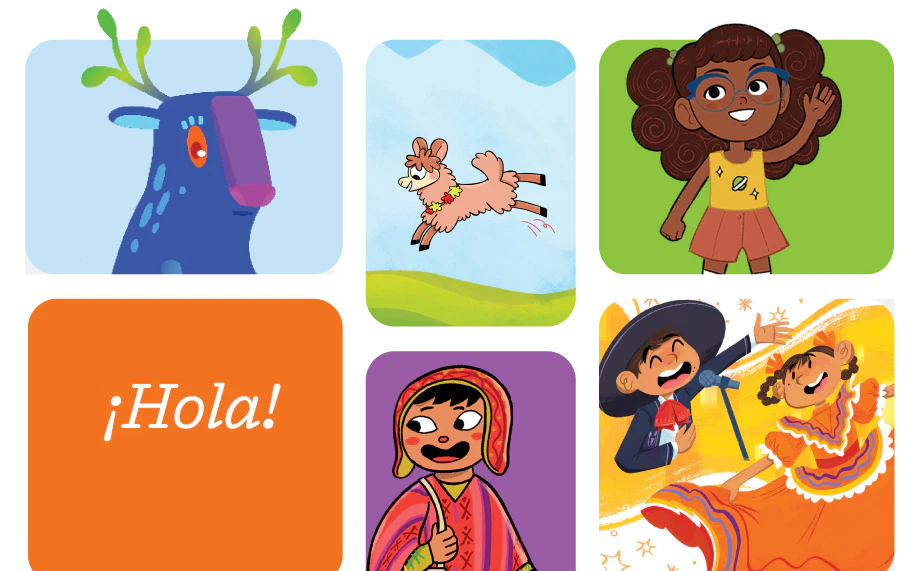
¿Verdadero o falso? You must be bilingual to support emergent bilingual students in their literacy development.
¡Falso!
An essential component of supporting emergent bilinguals in developing literacy is understanding cross-linguistic transfer (CLT): when emergent bilinguals use knowledge of one language to support learning another.
Educators do not need to be fluent in both languages to identify—and teach—which elements of one transfer to the other.
“Teachers should not feel discouraged in supporting their students who are Spanish-speaking, because there are ways that they can still support cross-linguistic transfer without actually speaking the language,” says Amplify senior PD strategist in biliteracy Lauren Birner.
But CLT doesn’t just happen—it requires explicit instruction. So we do need to ensure that this takes place if we want to support equity in education, especially in early childhood education.
How can educators bring the power of CLT into instruction? And support equity and excellence in education?
Making connections: The impact of CLT
Our recent webinar Making Connections: The Importance of Cross-Linguistic Transfer in Biliteracy Instruction—led by Lauren Birner and Amplify’s Kajal Patel Below—explored answers to these questions.
In the webinar, Birner and Patel Below describe similarities and differences between English and Spanish, discuss how those similarities and differences can impact instruction, and explain why CLT helps English learners leverage skills from both languages to build their biliteracy.
They also underscore why it matters—namely, that it’s about supporting equity in early childhood education and beyond.
More than 15% of our K–3 students in this country are emergent bilinguals, and we have a responsibility to help them cultivate and expand that superpower.
—Kajal Patel
The Simple View of Reading and biliteracy
The idea behind the Simple View of Reading is that the combination of language comprehension and word recognition is what leads students to gain meaning from text. If either language comprehension skills or word recognition skills are lacking, students cannot become skilled readers, and this is true in both English and Spanish.
“Research shows that when teachers explicitly teach students what transfers from one language to the other,” says Patel Below, “students are able to devote more cognitive processing time toward the more complex orthography and morphology systems of English that require more time than the more transparent systems of Spanish.”
Birner had this to add: “While components of these domains might overlap, it can be helpful to think of them individually, and how they’ll impact language and literacy development.”
So let’s take a look at the areas of language where we can leverage cross-linguistic transfer.
- Phonetics and phonology: 92% of all of the sounds in English and Spanish have a direct correlation. That means that teachers can focus explicit instruction only on the remaining 8% of sounds—such as the rolled r in Spanish. Meanwhile, we can also encourage them to be language detectives and recognize where the languages do connect and how they can use their skills in one to understand the other. That approach, says Birner, “will not only save valuable time and energy, but it’ll also help [educators] recognize bilingualism as an asset for all of our students.”
- Morphology: Students can explore cognates like hospital/hospital and celebration/celebración, while also exploring similarities and differences in pronunciation. “Whether or not they are Spanish-speaking, teachers can look to cross-linguistic transfer guidance and start to recognize things, the prefixes and suffixes that are similar across the two languages,” says Birner.
- Syntax and grammar: Spanish and English do have rules and structures that differ from each other, in the areas of word order, gender, conjugation, and possession. As students progress in learning these distinctions, teachers can seize opportunities for explicit instruction. For example, let’s say a student constructs the sentence: “The flower of Ana is pretty.” This is not an error, but an approximation “to be celebrated.” Birner says. “It’s a comprehensible sentence in English that just needs a minor adjustment. We can use this type of sentence as an opportunity to provide explicit instruction on possessives.”
- Semantics: Semantics is the study of word meaning and is critical for language learners. Exploring idioms, homonyms and homophones, and other nuances of usage across language can give students the chance to build from similarities and identify differences. “You might do something like hang a chart of idiomatic phrases in each language,” says Birner. “Looking at both languages side by side is a really great way to support your students in learning a second language.”
- Pragmatics: Pragmatics encompass the ways people communicate that are nuanced or unsaid. They’re often rooted in cultural norms, which include both physical norms (looking someone in the eye when speaking) and social norms (using euphemisms). “Providing students with explicit instruction on how communicating may differ from culture to culture and situation to situation can help avoid misunderstandings,” says Birner. “It’s also a great way to allow students to see the world in perspective.”
More to explore
Amplify’s biliteracy programs, rooted in the Science of Reading, can help all educators engage with multilingual learners and make the most of cross-linguistic transfer and dual language education. Here are some additional resources for you:
Biliteracy principles, as shared by biliteracy experts (students!)
”The Importance of Dual Language Assessment in Early Literacy” (white paper)
The Importance of Dual Language Assessment in Early Literacy (infographic)
National Reading Month: Making reading in elementary schools fun
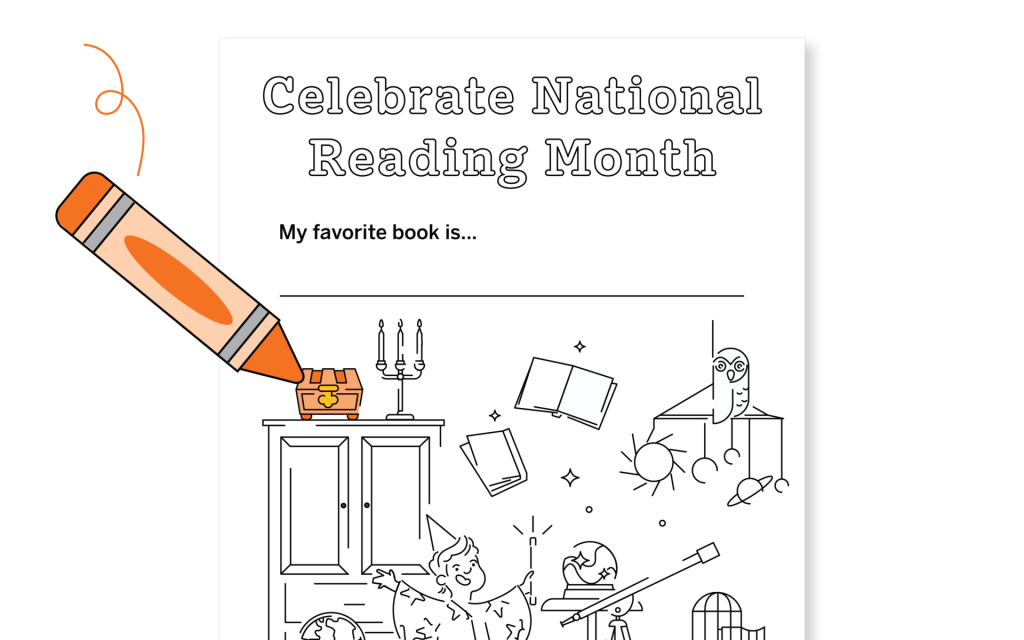
Happy National Reading Month!
Of course, every month is reading month—and every day is reading day!
But March makes National Reading Month official, and we’d like to help you celebrate.
- “Brain Builders” is an animated video series you can share with your students to help them understand what the brain does in order to read—placing reading science in the hands (and brains!) of students.
Your kids will join Minh on his journey as his babysitter, Tamara, helps him cultivate a love for reading—while also learning a bit of cognitive science. The series includes 13 episodes that you won’t want to miss!
- ”Reading Buddies” makes learning to read fun (with the help of a talking dog, of course). Created by a pair of performers during the COVID-19 quarantine, the show became a smash hit when The Reading League came on to help it grow.
The series is based on the Science of Reading—but that’s not why students like it! They get to follow and practice along with Dusty the Dog as his person, Dott, teaches him to read. All the while, the kids are learning the underlying components of skillful word reading such as phonological awareness, letter names/sounds, and blending sounds.
And for a little good old-fashioned coloring, we’ve also created this literary reference sheet for your students to bring alive with their own imaginations.
We hope you enjoy celebrating your kids’ brains and creativity!
More to read and learn
From Amplify’s Science of Reading: The Podcast:
Find out how “Reading Buddies” came to be (and managed to outpace “Sesame Street”)!
Meet Margaret Goldberg, co-founder of The Right to Read Project, to get her take on Brain Builders and the importance of the comprehension strand of the Science of Reading.
Request a free sample of CKLA.
Celebrating three years of Science of Reading: The Podcast
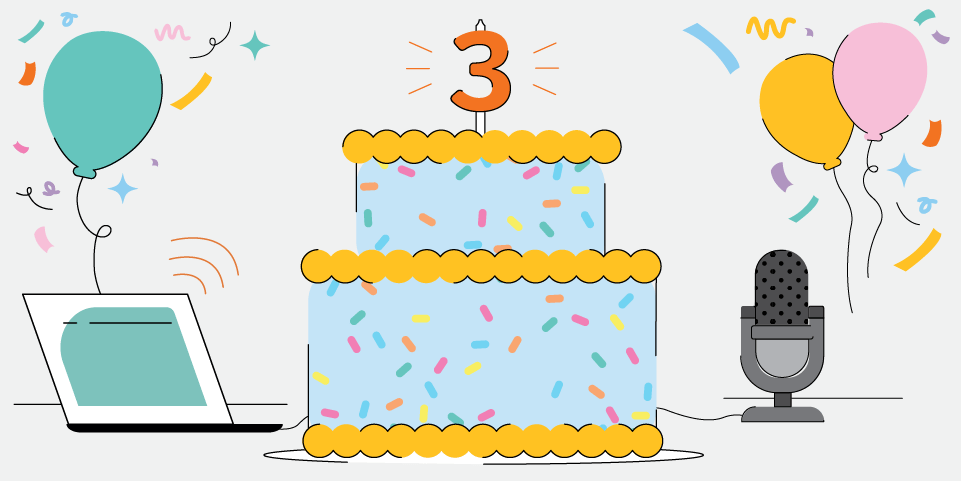
And three million downloads, too!
If there’s one thing we’ve all needed the past few years, it’s been each other. That’s why we’re so grateful for everyone who’s come together since we launched Science of Reading: The Podcast.
Our guests—educators, advocates, lawmakers, psychologists, and more—have shared their time and expertise on all things Science of Reading. Some led us deep into data, others into education policy and classroom culture. Together we’ve built and evolved our understanding of quality Science of Reading curriculum; strategies for reading comprehension, fluency, and intervention; and so much more.
Now more than ever, we believe all educators should have access to the essential conversations happening around research, legislation, and resources affecting how students become skilled readers.
We extend our thanks to our three years of guests on Science of Reading: The Podcast—not to mention our Facebook community of more than 90,000 committed and passionate educators. All of you helped make sure those conversations happened, and continue to happen.
How Science of Reading: The Podcast is transforming education
We care about this podcast because we care about the Science of Reading. And we care about the Science of Reading because we care about kids and their future. We know you do, too, so we’d like to talk a bit more about our shared vision and values for reading educators. These include the following:
- It’s important to bridge the gap between research and practice. That’s how educators get the tools and resources they need to make informed choices about how best to teach reading.
- Educators should be up to speed—with information from leading experts—on topics such as phonemic awareness, fluency, comprehension, and more.
- Connection and community are crucial. Educators truly benefit from insight into the challenges and successes of their peers. They use this knowledge to inform their own teaching practices.
With Science of Reading: The Podcast, we strive to provide that forum and platform for educators. Our hope is to not only deliver the latest expert knowledge, but also to provide a community in which educators can connect and learn from each other. With these three million downloads (and the next three million!), we know we can revolutionize the future of reading.
More to read and learn
Learn more about the Science of Reading.
5 ways to shift from balanced literacy to the Science of Reading
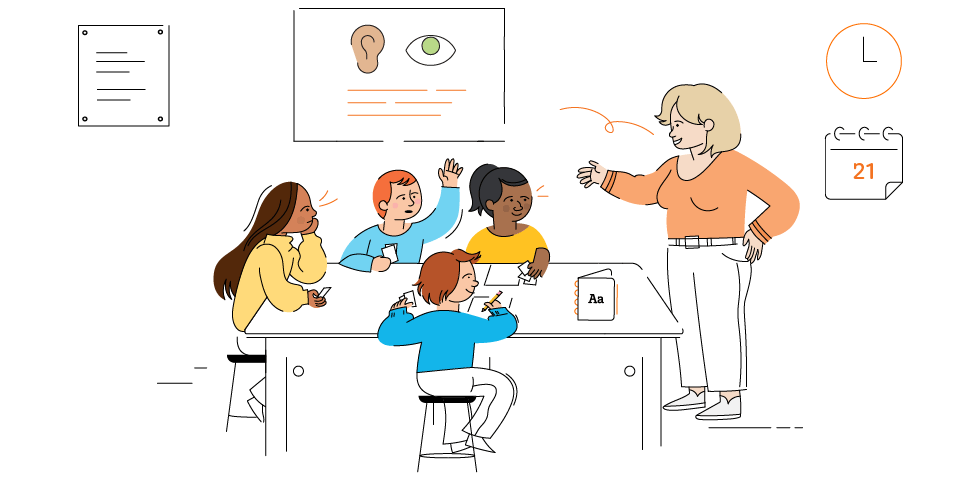
The Science of Reading is a big deal. We’re serious when we say that literacy instruction based on the Science of Reading can change lives, and we’re not the only ones.
Our friends at the Reading League say that instruction based on the Science of Reading “will elevate and transform every community, every nation, through the power of literacy.”
So it stands to reason that shifting to a Science of Reading curriculum is a pretty big deal, too. It’s not a light lift or a quick fix, and that makes total sense.
That’s why we want to help you make the shift. And actually, shifts.
Any big change is best done gradually. That’s why we’ve identified five key shifts in reading instruction that will set you on the path to transforming your classroom(s)—and your students’ futures.
The science of teaching reading
But first, a quick refresher.
As you likely know, the Science of Reading refers to the pedagogy and practices proven by extensive research to effectively teach children how to read. Learning to read is not innate and must be taught—and evidence from numerous studies tells us how.
This is where a Science of Reading-based approach differs fundamentally from a balanced literacy approach.
Balanced literacy can have several meanings, but generally it refers to instruction that focuses on a combination of shared reading, guided reading, and independent reading, with foundational skills typically not emphasized and rarely taught systematically.
While researchers are always learning new things and updating their understanding about literacy instruction, we do now know more than ever about how the brain learns to read and what methods are most effective in teaching reading. The conclusion? With explicit, systematic instruction, the vast majority of students can learn to read at or near grade level. That instruction must include phonics, phonemic awareness, fluency, vocabulary, and comprehension, with an emphasis on background knowledge. There is a lot of information to learn. What’s the best way to funnel it into daily classroom instruction? The answer is gradually.
Five incremental shifts from balanced literacy to the Science of Reading
Let’s explore the changes you can make today as you explore and implement true Science of Reading instruction.
- Use decodable readers, not leveled readers. Decodable readers—simple books that focus on the letter-sound correspondences that students have learned—support students in developing their phonics knowledge, rather than guessing or using picture cues. They support the systematic approach to instruction aligned with the Science of Reading, and they can even replace a workshop model with guided reading and leveled readers or predictable text.
- Provide all students with dedicated, systematic phonics instruction, not mini-lessons or isolated phonics instruction. Effective phonics instruction—for every student—takes time and is deliberately sequenced. (At least 60 minutes a day is required for solid, systematic foundational skills development.) Phonics instruction should also be part of a comprehensive Science of Reading approach to literacy instruction (as part of your core curriculum) versus taught as part of a disconnected program.
- Help students with phonics-based scaffolds, not three-cueing or word guessing. This is the part where learning to decode actually rewires students’ brains for reading. It requires that you provide scaffolds and ask students to practice sounding it out rather than responding to context clues. Spend your time on this approach, rather than on reading predictable books that make it easy for kids to spot and memorize patterns.
- To build comprehension skills, develop students’ knowledge. The Science of Reading shows that literacy skills grow best on a foundation of knowledge. In other words, the more you know, the easier and faster you can understand texts you encounter in the world. Spend two or three weeks on focused literary, social studies, and science topics. The topics should build on each other and deepen understanding and vocabulary. This approach can replace studying disconnected topics and practicing comprehension skills (exercises where students find the main idea or determine the author’s purpose) without attention to background knowledge.
- Follow a clear instructional path, not a choose-your-own-adventure model. The Science of Reading supports a path over patchwork approach. A cohesive curriculum with explicit guidance is the most beneficial—yet overlooked—element of teaching reading effectively. It can replace an approach with multiple instructional pathways and moving parts, and it gives every student the support they need now without waiting for intervention.
Learn more
Is this literacy program true to the Science of Reading?
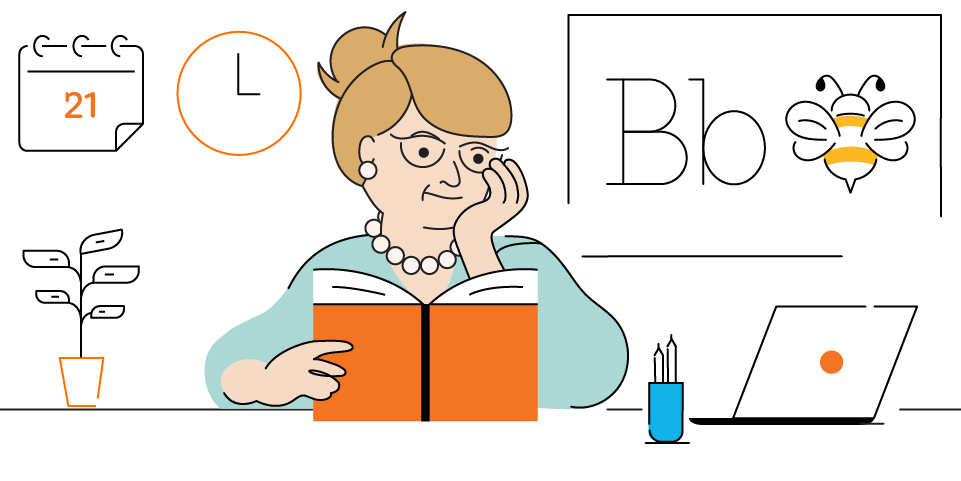
We’ll show you how to tell.
We know how children learn to read. We know how to teach children to read. That’s all thanks to the Science of Reading.
As you likely know, the Science of Reading refers to the pedagogy and practices proven by extensive research to effectively teach children how to read. Learning to read is not innate, but it can be taught—and science tells us how.
That’s why it’s so important to use literacy programs that are truly grounded in the Science of Reading.
But how can you tell which ones are and which ones are not? It can be confusing. Some programs may be partially aligned with the Science of Reading, or use bits and pieces of pedagogy based on it.
But true Science of Reading programs have it in their DNA. And we can show you how to find them.
Explicit and systematic structure
One of the research-based frameworks used in the Science of Reading is the Simple View of Reading.
According to the Simple View, two cognitive capacities are needed for proficient reading: (1) understanding the language (comprehension) and (2) recognizing words in print (decoding).
A true Science of Reading program is built from the start for students to develop these skills. And it’s built to do so in a developmentally appropriate way. That is, program structure matters, too.
Some programs may add supplemental Science of Reading activities to address these needs. Some have been modified to do the same. But that’s not the same as a comprehensive program designed to develop them, explicitly and systematically. That kind of program is truly rooted in the Science of Reading.
The importance of knowledge building
Again, reading depends on both decoding and comprehension. For many years, classroom observation and received wisdom suggested that comprehension should be taught as its own set of skills, while allowing decoding to develop more naturally.
But cognitive science research now shows that early literacy skills are best built deliberately—on a foundation of knowledge. In fact, knowledge-building is not a result of reading and comprehension, but a prerequisite for it. The more you know, the faster you learn.
Some programs rely on the strategy of activating students’ prior knowledge. But not all kids have the same prior knowledge. Diverse backgrounds and experiences mean that not all kids will come to school with the same information about, let’s say, baseball, or the beach.
So a true Science of Reading program will expose students to a diverse array of new topics spanning history, science, and literature. Those topics will be organized in an intentional sequence that builds knowledge coherently within and across grades. And they will make reading accessible to all students.
The foundational skills readers need
Some programs focus on phonemic awareness and phonics. Those are foundational skills, but they’re not all of the foundational skills. The Science of Reading shows that five components are fundamental to reading: phonics, phonemic awareness, vocabulary, fluency, and comprehension.
Students require instruction in all five in order to learn to recognize words and use that knowledge for reading and writing.
As students develop these foundational skills, they develop automaticity. With practice, they are able to recognize words more and more quickly and move from decoding to comprehension.
A true Science of Reading program will include all foundational skills and will deliver the regular practice students need to become automatic decoders.
How Amplify CKLA is built on the Science of Reading
The Science of Reading is in Amplify CKLA‘s DNA. The program was built from the ground up:
- On the Simple View of Reading.
- To deliver knowledge on an even playing field for all students.
- With texts that develop all five foundational literacy skills.
With CKLA, students build knowledge through diverse and enriching content domains. They refine foundational skills through explicit, systematic, phonics-focused instruction. And they do it all in one program, with a detailed road map that guides teachers on every step of the reading journey.
Additional resources
5 ways to shift from balanced literacy to the Science of Reading
MTSS vs. RTI in literacy instruction: What’s the difference?
Introducing our 2023 Science of Reading Star Award finalists!
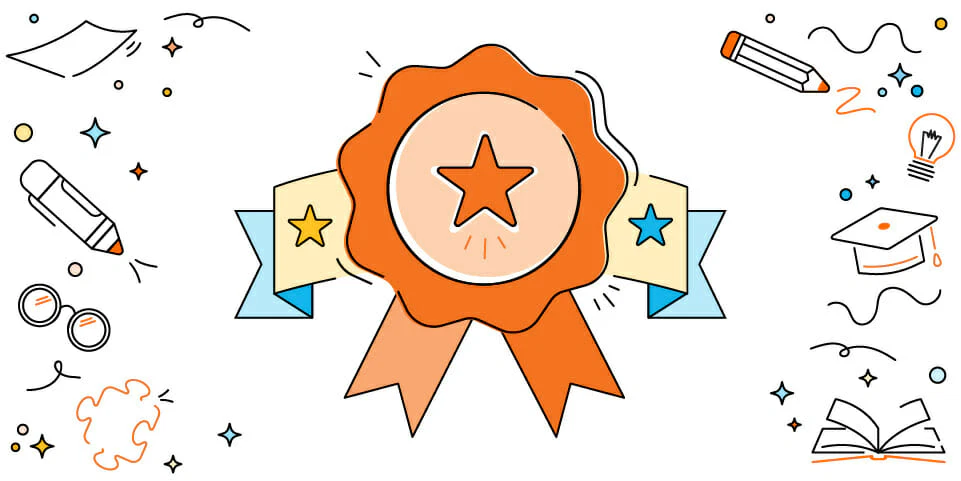
Roll out the red carpet and shine those spotlights—it’s time to meet the 25 finalists for our 2023 Science of Reading Star Awards!
These educators and leaders help light the way for the next generation. They’ve implemented Science of Reading principles and guided their students toward lifelong literacy. They’ve demonstrated expert change management and professional development. Get ready to meet some of the brightest minds in education as we celebrate their achievements and see what makes them truly stellar!
Join our virtual event and awards program on May 23.
But first…meet our 2023 finalists! Below, you’ll hear from the nominees themselves, as well as the colleagues who nominated them, about what makes them stars.
The Changemaker Award
For exemplary leadership in guiding a district through a shift to the Science of Reading.
And the finalists are…
Heather Campbell
Learning Coach, Sunset Elementary, Washington County District, UT
Why she’s a star: “Heather’s philosophy that all students can learn to read if given proper instruction has changed the data. Our school made the change and the data is showing our students are thriving.” —Shelli Campbell, Learning Coach
Javonna Mack
Lead Content Teacher, Caddo Parish School, LA
Why she’s a star: “Whether working with students or teachers, Mrs. Mack keeps best practices grounded in the Science of Reading at the forefront. She constantly strives to build teachers’ expertise in teaching students to read through content-rich professional learning communities, often on Saturdays or after the workday has ended.” —Shannon Southwell, Lead Content Teacher
Aaron Jura
Reading Interventionist, Bloomingdale, IL School District
Why he’s a star: “Aaron has been the catalyst for our entire district embracing this shift to the Science of Reading, and we are just at the beginning of this amazing journey.” —Nicole Gabany, Reading Interventionist
Nicole Peterson
Director of PreK–8 Education, Sampson County Schools, NC
Why she’s a star: “She has created, initiated, implemented, monitored, evaluated, and adjusted processes and systems to ensure that teachers have access to resources, training, materials, and professional development to ensure that all students gain equitable access to high-quality, evidence-based instruction.” —Matthew McLean, Director, PreK–8th Grade Education
Virginia Quinn-Mooney
Teacher, Northville Elementary School, CT
Why she’s a star: “Virginia has gone from one person with a personal commitment to advancing her literacy knowledge. She has now impacted countless educators, parents, etc., with her tenacity and learning journey.” —Nicole Gregory, Teacher
The Data Dynamo Award
For commendable use of data to align a literacy system and maximize student achievement
Shennoy Barnett
Kindergarten Teacher, South Smithfield Elementary, NC
Why she’s a star: “My objective is to help as many children as I can become fluent readers and critical thinkers. As a literacy specialist here for just four months, I made great strides with literacy with my students.” —Shennoy Barnett, Kindergarten Teacher
Anne Elizabeth Carter
Kindergarten Teacher, Wake County District, NC
Why she’s a star: “Through systematic and explicit phonics instruction as well as targeted language comprehension instruction—using texts that incorporate science and social studies content as well as build knowledge systematically—my kiddos were TRULY learning how to read accurately and fluently.” —David Gaudet, Principal
Bethani Ploegstra
Kindergarten Teacher, Union Colony Elementary, CO
Why she’s a star: “She takes data from mCLASS® DIBELS®, Lexia, and SchoolPace (part of our reading curriculum), as well as formative feedback from what she hears and sees students doing daily in the classroom, to immediately adjust what she presents next to students, whether individually, in small groups, or whole class.” —Mandy Bailey, Assistant Principal
The Knowledge Builder Award
For showing the world that the Science of Reading is more than just phonics, and empowers students with knowledge from elementary to middle school
Corey Beil
Instructional Interventionist, Quakertown Community School District, PA
Why he’s a star: “He incorporated literacy into his daily math instruction by providing our students with opportunities to understand and connect with the content more deeply. Our students were exposed to practicing literacy concepts while expanding their mathematical knowledge and foundational understanding.” —Julianne Pennabaker, Teacher
Kim Smaw
Principal, Rosalyn Yalow Charter School, NY
Why she’s a star: “She was able to persuade the learning community to adopt the Science of Reading, firmly convincing them that this curriculum could empower students to gain rich learning experiences.” —Deirdre Frost, Reading Intervention Specialist
Angie Dutton
Instructional Coach, Onslow County Schools, NC
Why she’s a star: “Her positive attitude about the Science of Reading is contagious and is most likely why other educators feel comfortable reaching out to her for questions and guidance.” —Stacey Horne, Instructional Coach
Nicole Brodie
ELA Grade 7 Teacher, Long Middle School, GA
Why she’s a star: “She encourages her students to use their [voices] for change and impact and supports them in their learning process academically, [socially, and emotionally].”
—Renee Dawson, Grade 7 English Language Arts Teacher
The Intervention Innovator Award
For admirable use of intervention strategies to get at-risk readers back on track
Suzanne Maddox
RTI Teacher, Robertson County Schools, TN
Why she’s a star: “Mrs. Maddox reviewed individual student data, worked with teachers, and began using CKLA Skills and the intervention materials provided with this curriculum to continue a sounds-first approach to meeting the individual needs of students.” —Brooke Callis, RTI Teacher
Sara Thornton
Reading Interventionist, Senior Team Lead, Schmitt Elementary, CO
Why she’s a star: “Sara’s enthusiasm for and dedication to her work has been an inspiration to all involved and has resulted in a successful transition to the Science of Reading—as evidenced by our students’ amazing academic growth!” —Hayley Gunter, Reading Interventionist, Senior Team Lead
Markaya Aga
Reading Interventionist, Merit Academy, CO
Why she’s a star: “Since she has come on board at our school, the mindset around literacy and the growth of our programming [has improved] ten-fold. We need more educators like Markaya!” —Allison Hanson, Reading Interventionist
The Language Luminary Award
For outstanding success in developing the skills and strengths of emergent bilingual students
Wanda Ramirez
Grade 2 Teacher, El Sol Science and Arts Academy, CA
Why she’s a star: “We used to emphasize to students that what they know in one language cannot be used in the other language. Now, as a dual-immersion educator, I have the opportunity to change that mindset, teach my students to embrace their native [language], and empower them to use their entire linguistic ability. It’s a very powerful thing to be able to do.” —Wanda Ramirez, Grade 2 Teacher
Esmeralda Martinez
Kindergarten Teacher, Compass Community Schools, TN
Why she’s a star: “She has consistently worked on improving her teaching methods, tried new ways to engage the class, and worked diligently to support all of our students.” —Rachel, Marinari, Teacher
Christine Black
ESL Teacher, North Dover Elementary School, NJ
Why she’s a star: “We have a rapidly expanding ESL population, and Mrs. Black works tirelessly to ensure that her students are expanding their ELA skills in accordance with the major tenets of the Science of Reading.” —Dawn Gawalis, ESL Teacher
Rookie of the Year Award
For showing the world that the Science of Reading is more than just phonics, and empowers students with knowledge from elementary to middle school
Caitlyn Cockram
Teacher, Patrick County Schools, VA
Why she’s a star: “We have offered professional development in vocabulary and implementing SOR strategies, and Caitlyn is always one of the first teachers to sign up. She is dedicated to improving student achievement through research and evidence-based practices.” —Callie Wheeler, Teacher
Andrea Mason
Academic Interventionist, County Line Elementary School, GA
Why she’s a star: “Making the shift from balanced literacy to the Science of Reading hasn’t always been easy. But I continue to research and implement these best practices with my students because I can see that they are now on a path to becoming strong readers.” —Jennifer Ezell, Academic Interventionist
Mallory Pendergast
Phonics Teacher, Literacy Interventionist, Circle City Prep, IN
Why she’s a star: “As a kindergarten teacher, she led 100% of her scholars to be reading on grade level in the first quarter and maintained that momentum through the first semester.” —Sami Hyde, Senior Instructional Coach
ESSER Ace Award
For notable and innovative use of stimulus funds to help kids rediscover the joy of reading
Stephanie Hurst
District Literacy Specialist, Maple Avenue Elementary, NH
Why she’s a star: “She is also a voice on the utilization of [the] ESSER Fund—using the distribution of funds per federal protocol to ensure that the district’s lowest-performing schools have access to quality instructional materials and professional development all grounded in the Science of Reading.” —Mark Blount, K–12 Literacy Specialist
Callie Wheeler and Sara Vernon
Instructional Coaches, Patrick County Schools, VA
Why Callie’s a star: “Mrs. Wheeler played a key role in creating a culture of literacy within our schools, where the Science of Reading is central to the education of our students.” —Sara Vernon, Instructional Coach
Why Sara’s a star: “Sara has worked tirelessly to make the shift from the vision that was grounded in balanced literacy to one that is now making waves in Southwest Virginia with its Know Better, Do Better, Be Better approach to reading instruction.” —Callie Wheeler, Instructional Coach
Edie Bostic
Literacy Coach, Gallia Local, OH
“As a teacher, district Title I coordinator, elementary principal, and now district literacy coach, she continually champions the students under her care and is passionate about those students receiving the highest levels of instruction.” —Leslie Henry, Principal
Inspired? We are! Register to join our May 23 Science of Reading Star Awards virtual ceremony!
More to explore
Learn with and from other top-notch educators like you through our family of podcasts.
Math strategies that build community in your classroom
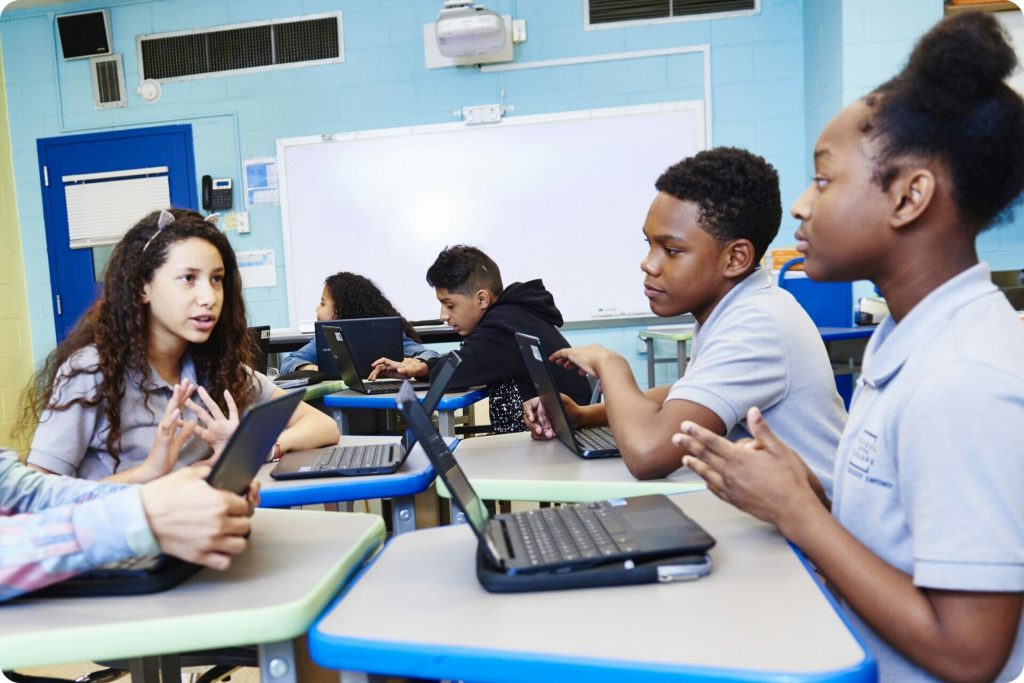
It’s tough to do math without sets, sums, and multipliers, so it stands to reason that it’d be tough to learn math solo, outside of a group.
Indeed, research shows that math is best learned in a community. In this post, we’ll explain why that is, what it looks like in a classroom, and how you can create a community for your math students.
What math community means: Creative classroom ideas
There are many types of math communities: online interest groups, professional organizations, the Mathletes.
In the context of a math classroom, a math community refers to the collaborative environment a teacher can create using both math strategies and social strategies (and by involving students’ parents and guardians). In a robust math community, all students feel comfortable sharing ideas, asking questions, and engaging in mathematical conversations.
In other words, math communities are student-centered. Rather than delivering information, teachers guide students. They encourage students to explore math concepts, make connections to the real world, and ask questions—of each other, and the teacher.
And in a math community, wrong answers aren’t dismissed—in fact, they’re an essential part of the learning process. In our webinar What Amazing K–12 Math Looks Like, educator and director of research at Desmos, Dan Meyer underlines the importance of students understanding “the value in their thinking—which means the value in their wrong answers.”
Benefits of math community: Equity in schools and more
A community-oriented math classroom can help each student learn, and all students learn. Here’s how.
- Increased engagement. When students feel a sense of belonging and connection in their math class, they’re more likely to be engaged and motivated. By promoting open discussions, group activities, and cooperative problem-solving, teachers can help students—even those who don’t think they’re “math people”—develop a genuine interest in math.
- Reduced math anxiety. Math anxiety affects at least 20% of students. It can hinder their growth in math and beyond. But in a supportive math community—where different styles and wrong answers are considered part of the process—those students can thrive. Embracing and working from incorrect answers encourages students to focus on the “how” of math, and to participate without fear of getting it wrong. They feel more comfortable asking questions, taking risks, and making mistakes as well as learning from them.
- Improved communication skills. In a math community, all students get the chance to communicate their mathematical thinking and reasoning. Explaining their ideas to others and listening to their classmates enhances their speaking and writing skills—in math, and across other subjects, too.
- Learning from diverse perspectives. A supportive math classroom community allows students from different backgrounds and with varying abilities to contribute to class and feel valued. Encouraging—and observing—the sharing of diverse perspectives fosters critical thinking, creativity, and problem-solving skills.
- Positive reinforcement. A strong math community creates an environment where students feel valued, respected, included, and supported. It’s fertile ground for a growth mindset, one in which students believe they actually can do math regardless of challenges or errors. A math community encourages risk-taking, resilience, and perseverance—in math, and beyond.
How to engage students in math lessons that build community
Want to know how to make math fun and build community? Here are some ways to get started.
- Encourage collaboration. Promote a culture of cooperation and teamwork by incorporating group activities, peer support, and class discussions into your lessons.
- Celebrate brilliance. Recognize a variety of efforts, insights, and accomplishments among students—including taking risks, and making mistakes. This will motivate all students to appreciate different ways of learning and the value of both process and product.
- Personalize support. Offering individualized help to students who need it shows commitment to their success and builds a supportive environment for everyone.
- Develop a growth mindset. Create a culture where mistakes are inevitable, even welcomed, as part of the learning process. Encourage perseverance and persistence.
- Choose meaningful tasks. Assign problems with real-world relevance. Working together to solve them helps students see the “why” of math—and connect with each other in the process.
- Play. Game-ifying problems and introducing friendly competition builds camaraderie and helps students find shared joy in math—a win-win!
More to explore
Centering students in math curriculum adaptations
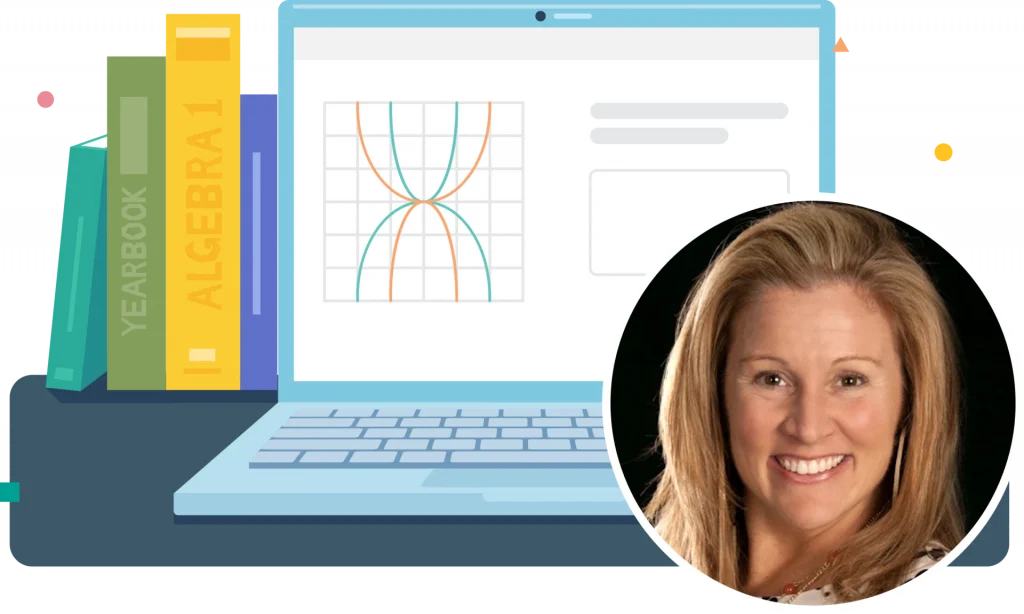
Starting with a high-quality math program
In her research article, “Examining Key Concepts in Research on Teachers’ Use of Mathematics Curricula”, Janine Remillard described curriculum use as a dynamic and ongoing relationship between teachers and resources—a relationship shaped by both the teacher and characteristics of the resource.
I have found that while certain characteristics can make a math curriculum high-quality, it is only through its relationship with teachers that it creates truly meaningful math experiences for students.
In my own teaching experiences and now back in classrooms with teachers, I am convinced that no matter how well-constructed a lesson, it only gets better as teachers plan collaboratively and center their students.
Shaping lessons for the students in your classroom can be challenging because there is not one right way or time to adapt a lesson, and the reasons we adapt vary.
Sometimes we make relatively small tweaks to the wording of a prompt, a question the teacher should pose, or the timing of an activity.
Other times we make more substantial changes to the task or task structure in order to more clearly move toward the learning goal based on what we are seeing and hearing from students.
And then there are the times we realize in the midst of an activity we should have made an adaption in our planning.
I recently taught a 5th grade fractions lesson that provided a perfect example of the dynamic nature of the work.
Engaging in a math curriculum activity
This particular lesson falls at the end of the fraction addition and subtraction unit.
The Warm-Up of this lesson is a Number Talk, which made sense to the 5th grade teachers and I, given the unit focus.
We reviewed the mathematical concepts and problems in our planning session, anticipated that students might find common denominators, and agreed that the synthesis discussion around denominator choice aligned with the problems.

While we anticipated that students would successfully add, the number choices in the string led students to solve each one the same exact way, with the only difference being whether they stated their sum in simplest form or not.
Halfway through, we could see the majority of the students were getting bored and it was hard to infuse curiosity and excitement around denominator choice because students had already generalized a way of finding a common denominator—which at this point in the unit was great!
In the midst of the Number Talk, we paused and debated pivoting our focus to the problems in relation to one another rather than denominator choice. But we knew that doing that would add extra time to the lesson, when we needed the majority of the time for the activities that followed.
So we wrapped it up and moved on, knowing we had time to discuss our choice in an upcoming planning session.
Adapting in ways that center student ideas
After class, I couldn’t stop thinking about revisions I would make if we had the opportunity to plan it all over again. Because although the problems in the string supported mental calculation and aligned with the lesson activities, the students needed something different at this point in their learning.
After reflecting with colleagues, we decided the timing of that particular Number Talk for these students was too late in the unit and wondered if a different routine would have made it more engaging.
Using that Number Talk as a rough draft (shout out to Mandy Jansen), I played around with different number choices and routines we might use in a second take on that lesson.
If we wanted to stick with the same task structure, we could adjust the numbers to create a new Number Talk or True or False? routine that more explicitly encouraged relational reasoning and use of the properties.
For example, the following problem strings still attend to denominators when adding fractions but also open up the space for more interesting and engaging student discourse.
Number Talk

True or False?

If we wanted to use a different structure altogether, we could try the Which One Doesn’t Belong? routine to provide opportunities for students to notice other interesting aspects.
In this activity, students share reasons why one of four items—in this case, equations—doesn’t belong. There is no single right answer because each object could both belong and not belong, depending on the student’s criteria. (If you’ve never tried this routine, it’s a must!)

Because I couldn’t wait until this lesson next year to see what students would do with one of these ideas, I asked them to write about the Which One Doesn’t Belong? The variation among their ideas was exciting.
While I could still see attention to the denominators as in the original Warm-Up, students were now describing their ideas in much more unique ways. If this had been the original Warm-Up, it’s not hard to imagine how much more engaged students would have been—and how much more teachers would have learned about their thinking.
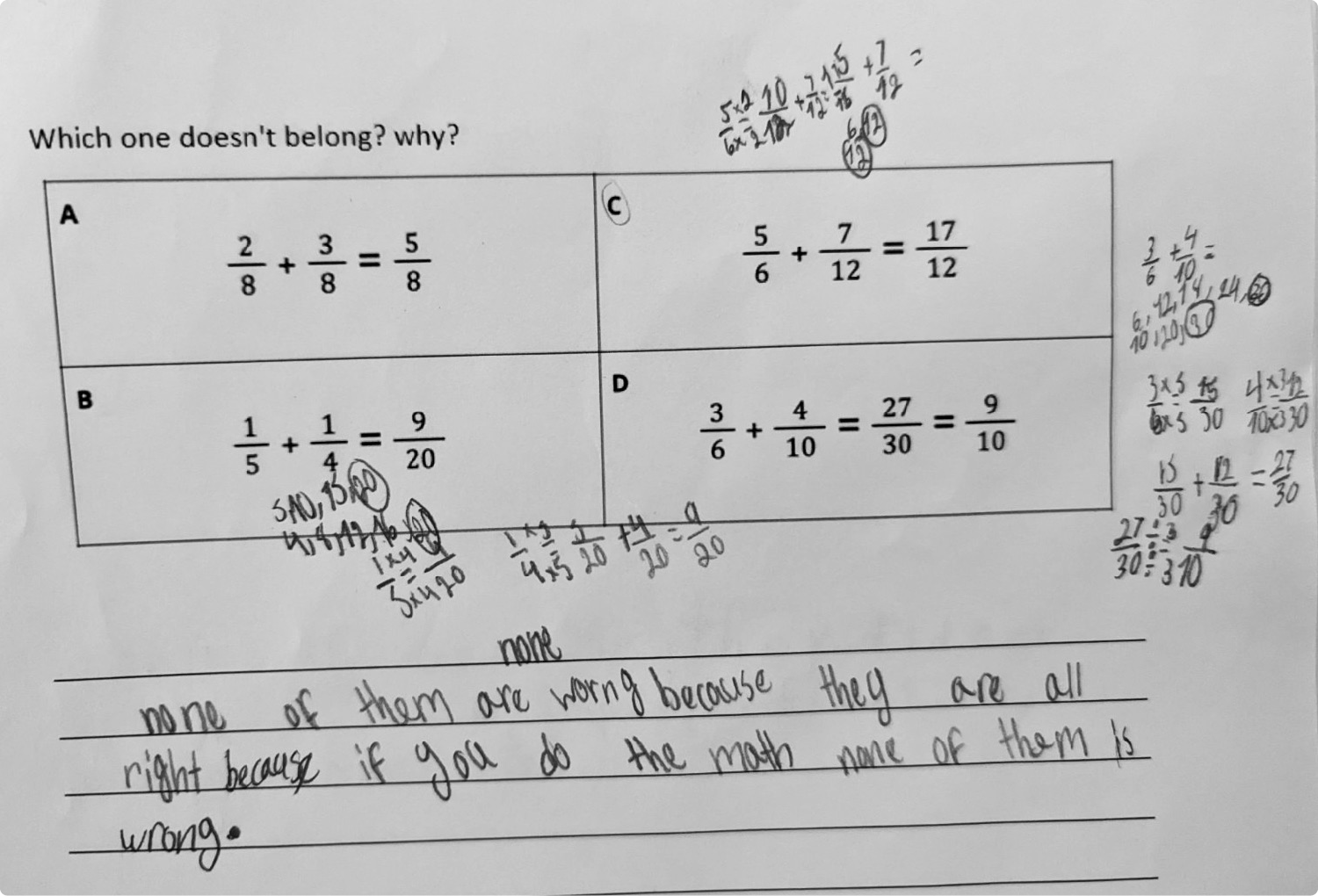
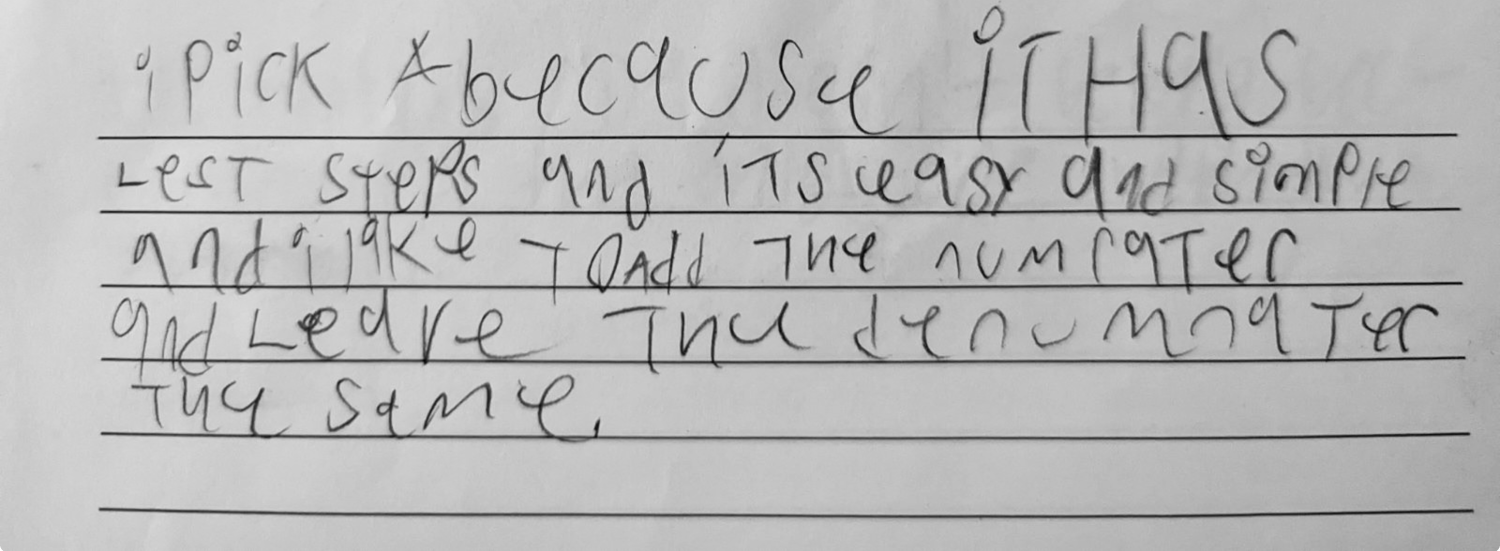
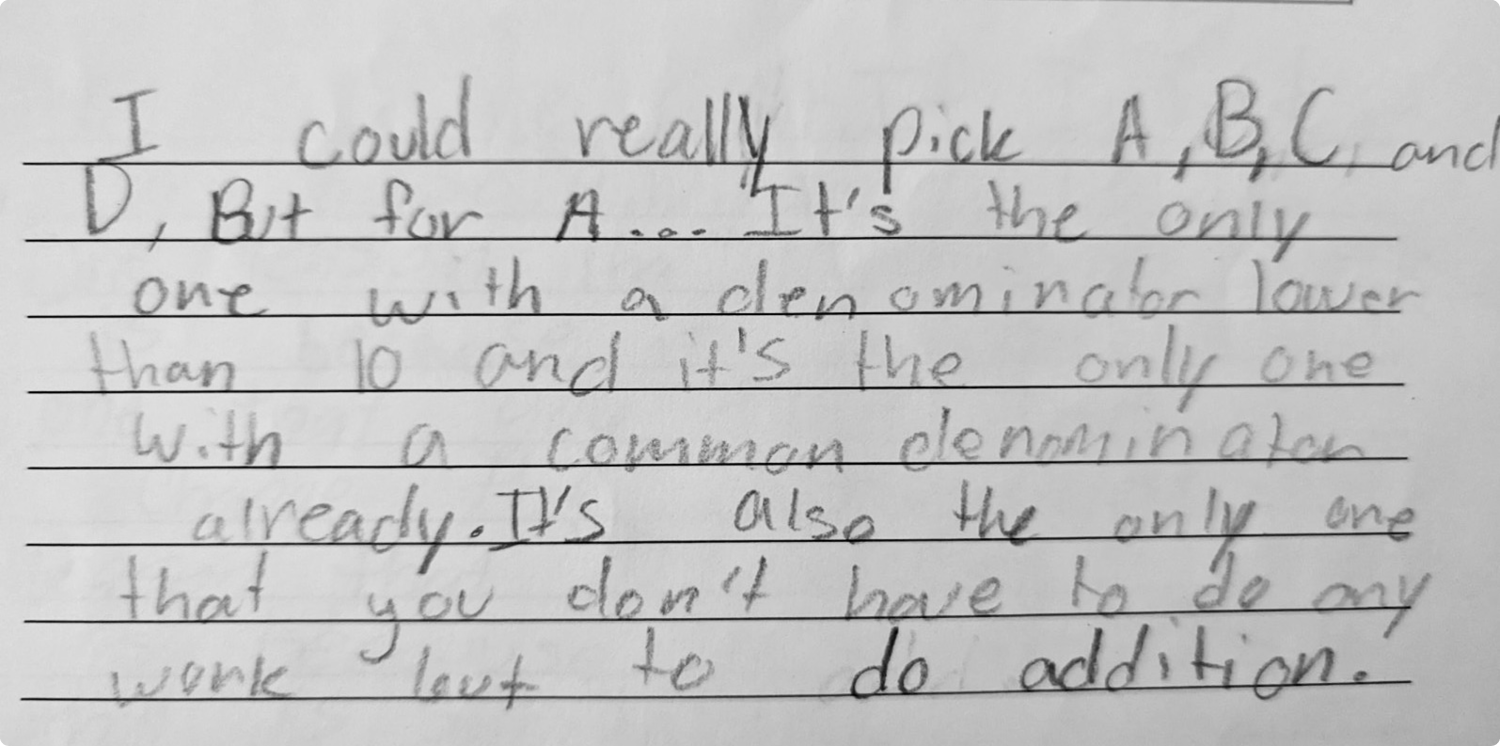





Learning from within the work of teaching
Curriculum materials have shaped my teaching and learning since the beginning of my time in the classroom. They then became the focus of my work at Illustrative Mathematics and now in my current work at Amplify.
I am a strong advocate for high-quality curriculum materials, and at the same time, I also believe that every curriculum can always be improved to better meet the needs of students and teachers.
I continually recognize and appreciate the time I get to spend planning, teaching, and reflecting with teachers about their dynamic and ongoing relationship with curriculum materials.
These opportunities to learn from within the work of teaching are invaluable inputs to our current work at Amplify, where we have the exciting opportunity to improve the characteristics of math resources currently in schools.
Want to learn more from Kristin Gray? Watch her webinar!
Top 5 back-to-school tips for science teachers
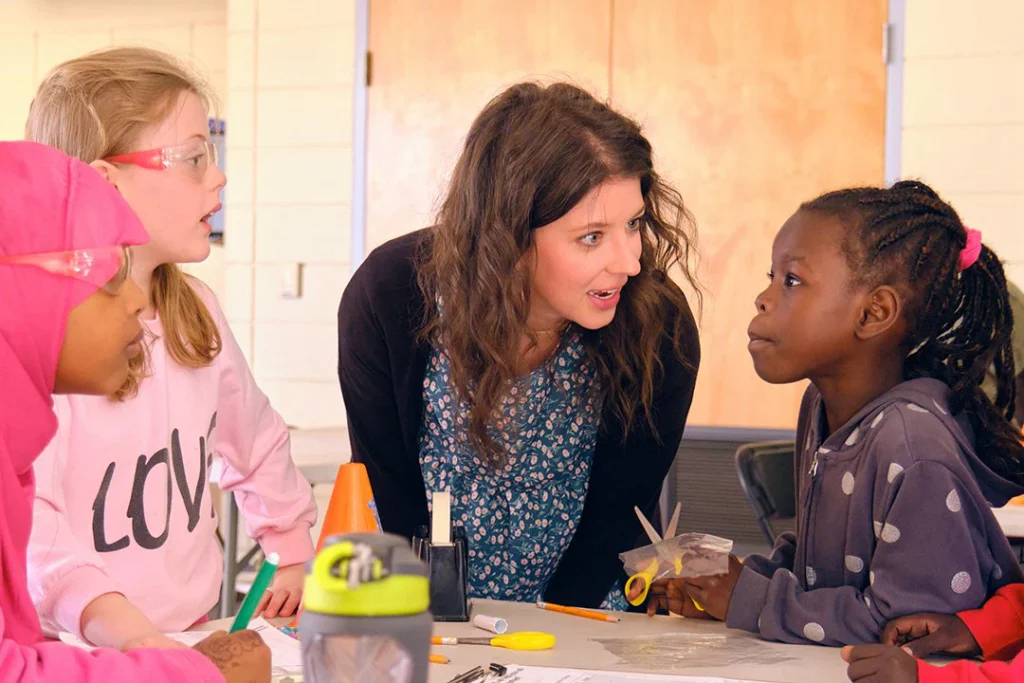
Science teachers: We got you.
“Teaching through a pandemic called for so much innovation, resilience, and sacrifice,” says Eric Cross, host of the podcast Science Connections and a K–8 science teacher who’s spent 10 years in the classroom.
As education continues to evolve with new technologies like artificial intelligence, [teachers] keep rising to meet each moment with wisdom and courage.
—Eric Cross
And with that innovation in mind, we’re here to get you ready to go back to school.
From fun classroom activities to professional learning opportunities, our strategies are designed to help you walk back into your science classrooms feeling energized, inspired, and supported by a science community.
As Cross says: “We’re all in this together.”
1. First-day fun: Plan interactive classroom activities. How about some Icebreaker Bingo? Create a Bingo card that invites students to find classmates who can answer “yes” to science-related descriptions (e.g., “Has a pet reptile,” “Enjoys stargazing”). Activities like these help students uncover common interests while also providing background knowledge. They can also remind students that science doesn’t just happen in the science classroom—it’s an integral part of their lives and worlds, too.
2. Student success: Work with school colleagues and leadership toward shared goals. Review what systems may already be in place and consider adding more. You might:
- Schedule regular team meetings to set and work toward common goals.
- Establish a professional learning community to share science resources for teachers.
- Amp up the use of data to inform decisions. Ask your team: What student performance data and assessment results can we use to see where improvements are needed?
Approaches like these will help build a network of support for science learning, and support every educator in taking steps to help students grow.
3. Set the tone for the year: We are scientists. You might have learned science by starting with a principle and then exploring it in the real world. Today, we know it’s more effective to start by observing a phenomenon, then trying to predict or explain it. In fact, that’s what scientists do. And when your students do that, they become scientists, too. Let students know from day one that that’s who they are to help them start the year motivated and engaged.
4. Cultivate community: Build a science ecosystem. Find ways to involve caregivers in student learning and create a continuum between the classroom and their everyday lives. You might:
- Collaborate with students on writing a weekly science newsletter or blog with classroom updates and suggested at-home activities.
- Organize family science days or nights (IRL or online) for students and caregivers to do some hands-on science together.
- Create simple but engaging science challenges for students and caregivers to do together. (Paper airplane distance contest, anyone?)
5. Use free professional learning opportunities for teachers from Amplify Science. Explore upcoming Amplify Science webinars, designed to support you—along with your schools and districts—in using collaborative, effective, and engaging science practices in the classroom. You’ll hear from thought leaders in science education, observe real science students in K–5 classrooms, and much more.
Ready to dive into professional learning right away? Check out our on-demand science webinar library. From quick tips to longer continuing education (CE) credit options, our on-demand webinar library is sure to have just what you need.
Free science resource toolkit
Our free toolkit of science resources will make it even easier for you to implement all of the tips above while setting science students up for success. These resources aren’t just for teachers—administrators and caregivers can use them, too! A robust science program means giving the right tools to not only those who teach, but everyone who supports students’ science learning. The resources in the toolkit will:
- Help you craft a dynamic science curriculum during the crucial first weeks of school.
- Support student engagement and spark new inspiration in your classroom practices and activities.
- Offer learning opportunities you can access now or on demand whenever you need them.
We hope these resources will serve you and your young scientists all year long!
More to explore
Embracing artificial intelligence in the math classroom
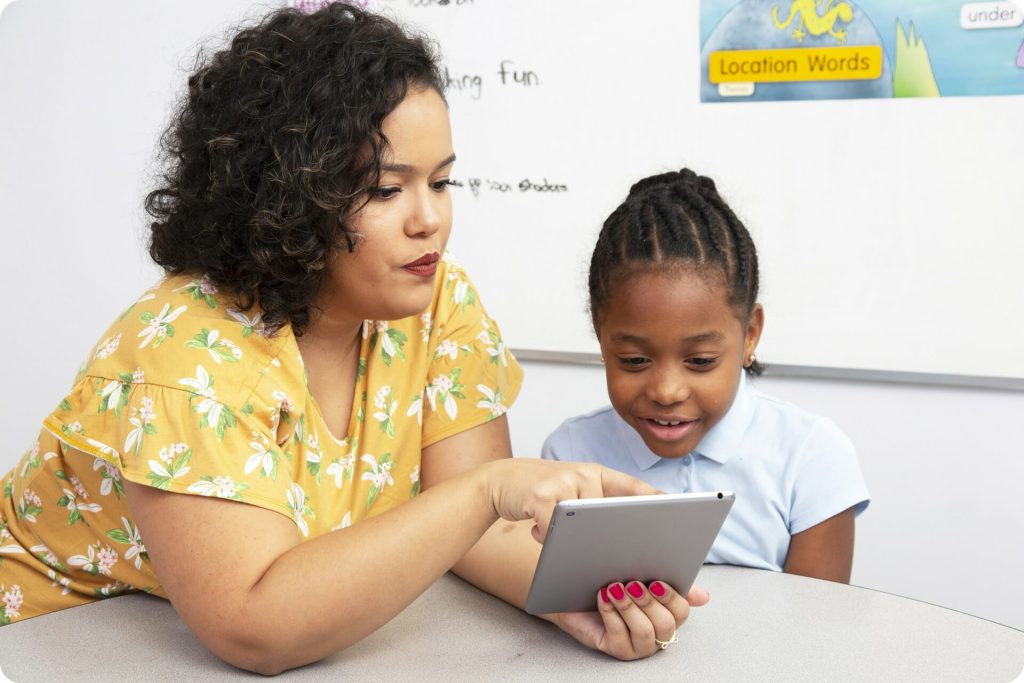
Artificial intelligence seems to be everywhere these days. We use it when we ask Alexa or Siri for the morning weather report. We use it when GPS tells us how to best avoid traffic. We use it when we chill at the end of the day with a recommendation from Netflix.
But what about during the day—and specifically, at school? Even more specifically, can AI be leveraged to enhance the math classroom?
“While AI is an amazing tool, you’ve really got to make sure that you are focusing in on your expertise as well,” says veteran math educator and STEM instructional coach Kristen Moore, “And saying, ‘How can I use this to make something better?’ and not just, ‘How can I use this to make something?’”
In this post, we’ll talk about the current state of AI in math education, and how it can support educators in making math better. (SPOILER: It’s not going to replace you!)
First, some STEM learning for us: What is artificial intelligence?
Artificial intelligence, or AI, refers to the development of computer systems able to perform tasks that typically require human intelligence.
It involves creating algorithms and systems that enable computers to learn from data, adapt to new situations, and make decisions or predictions.
AI aims to mimic human cognitive functions such as understanding language, recognizing patterns, solving problems, and making decisions. It encompasses a range of techniques and technologies, including machine learning, neural networks, natural language processing, and robotics.
The term “artificial intelligence” was introduced in 1956. The availability of vast amounts of data and advancements in computer power in the 2010s led to additional breakthroughs. And with the proliferation of smartphones, smart devices, and the internet, AI technologies began to work their way into our homes, cars, pockets, and everyday lives.
What’s the state of AI in education?
AI is already commonplace in schools and classrooms. Here are just a few examples:
- Adaptive learning: This software uses AI algorithms to adjust the difficulty and content of lessons based on a student’s performance, helping students remain engaged and challenged at their optimal level.
- Assistive technologies: AI helps students with disabilities by providing assistive technologies like text-to-speech and speech-to-text tools, making educational content more accessible.
- Plagiarism detection: These tools use AI algorithms to identify instances of copied or unoriginal content in students’ assignments, essays, and projects.
- Data analysis for teachers: AI analyzes data from student assessments to identify trends and insights, helping teachers make informed decisions about instructional strategies. It can also predict students’ performance trends, helping teachers identify at-risk students early and intervene to provide additional support.
- Grammar, spelling, and style checkers: AI can provide real-time feedback to students (and teachers!) on their writing work.
Embracing AI technology in your math classroom
While AI is not here to replace teachers, it is here to stay. And experts say it’s only going to become more commonplace. But despite how common AI is already—both outside and inside school—not all teachers are familiar with its numerous applications and potential. Now is a great time for educators to start exploring its uses and get ahead of the curve.
Here are a few easy entry points for math teachers.
ChatGPT: A common AI tool, ChatGPT is designed to understand and generate human-like text based on the input it receives. It’s trained on a wide range of internet text, which enables it to generate responses to a vast array of prompts and questions.
Most students have likely experimented with ChatGPT, while teachers—though aware of it—are less likely to use it. ChatGPT has highly practical applications for both groups, though—including in the math (and science) classroom.
It can, for example, help teachers plan interesting, relevant math lessons for their students. Kristen Moore, who discusses this topic on Math Teacher Lounge, suggests that math teachers use ChatGPT to:
- Connect topics to student interests and vice-versa. (Teachers can ask ChatGPT for real-life applications of polynomials and select those that might pique student interest, or ask about math applications derived from students’ hobbies and pursuits.)
- Generate word problems (including step-by-step solutions), lessons, projects and rubrics, and more.
Toward the (near) future
As AI advances, it will continue to revolutionize education. Here are a few time-saving ways that educators can look forward to using it in their classrooms.
- AI tutors: AI-powered virtual tutors will help math students with homework questions and provide explanations for various concepts. These tutors can be available at home 24/7, allowing students to seek an AI homework helper whenever they need it.
- Automatic graders: Some AI tools can automatically grade math work, including multiple-choice and short-answer assignments. These tutors can be available at home 24/7 in any household with internet access, allowing students to seek more personalized instruction.
- Personalized learning paths: These AI-powered platforms will work particularly well for math students by adapting to each student’s skill level and pace, offering tailored exercises and challenges that cater to their strengths and identify areas of improvement. They will analyze students’ performance and adjust the difficulty of content, ensuring that students get targeted support and opportunities to progress.
More to explore
To dive deeper into AI in math education—and get rolling with AI in your classroom—check out this two-episode mini-series on our Math Teacher Lounge podcast focused on just that:
- Season 5, Episode 7: Discerning the role of AI in education with former teacher, current education technology entrepreneur, and general partner at Reach Capital Jennifer Carolan, who has a lot to share about how AI can partner with educators to foster social learning opportunities.
- Season 5, Episode 8: Utilizing AI as a teaching tool with educator Kristen Moore, who discusses how she uses ChatGPT to revolutionize student learning and streamline lesson planning.
“I’m a believer that learning is inherently social,” says Carolan, who is quick to emphasize how technology can enhance that quality, not replace it. The same can be said for the role teachers play in the classroom—a role technology can support, but never take away. To learn more about this topic (and discuss it with your fellow educators!), head to our Math Teacher Lounge community!
Pseudoscience examples for critical thinking skills
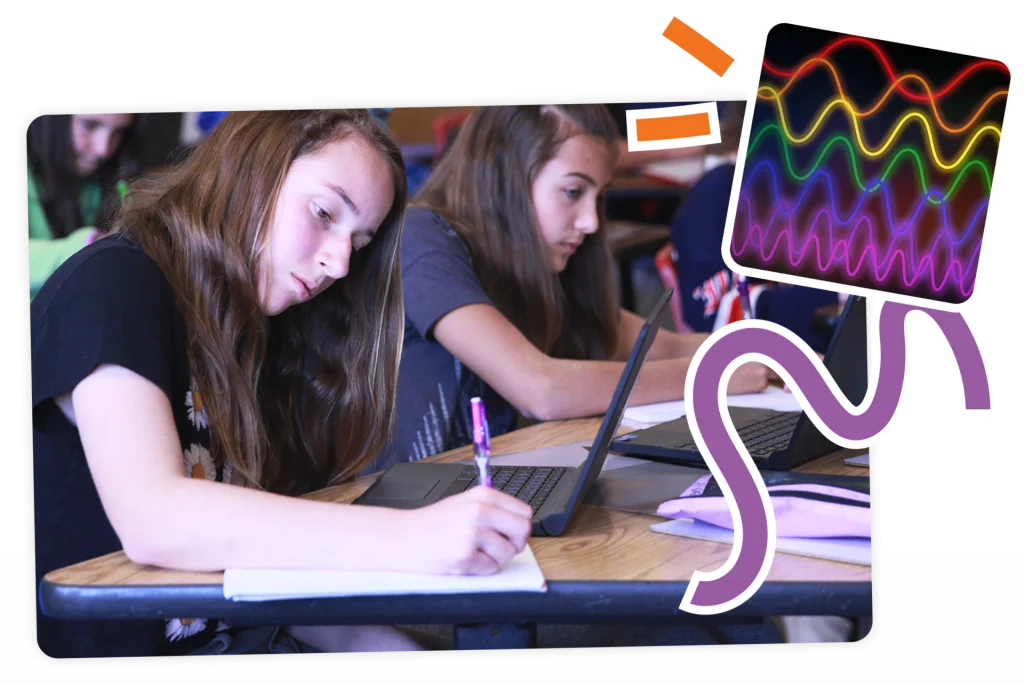
MIRACLE HAIR GROWTH!
Quantum hair activation technology: This groundbreaking innovation goes beyond conventional science, delving into the realm of quantum energy to stimulate hair growth at the subatomic level. Blended with rare botanicals from ancient civilizations for luster and shine. Limited-time offer: Act now and receive a vial of stardust-infused hair serum!
Effective product…or pseudoscience? We’ll bet you guessed it. (Sorry, no stardust serum for you!)
While this hair product itself sounds like junk, reading about it can be a valuable experience for science students.
Teaching your students to identify pseudoscience in the world around them helps them learn to protect themselves from false claims that can be money-wasting at best, dangerous at worst.
And as they learn to discern, they also develop lifelong critical thinking skills!
We say knowledge is power but it’s not enough to know things, and there’s too much to know. Being able to think and not fall for someone’s bunk is my goal for my students.
—Melanie Trecek-King, biology professor and guest in Science Connections podcast Season 3, Episode 5: Thinking is power
Let’s explore how educators can use examples of pseudoscience to develop critical thinking skills—and incorporate NGSS (Next Generation Science Standards) science and engineering practices into their approach.
What’s the difference between science and pseudoscience?
Science is grounded in empirical evidence, rigorous testing, and the scientific method. Pseudoscience presents itself as scientific but lacks the fundamental elements of genuine scientific inquiry: evidence, peer review, and the capacity to generate accurate predictions.
Though pseudoscience may make vague claims, it has clear characteristics. When something is pseudoscience, it:
- Can’t be proven wrong: Makes claims that are unobservable or too vague.
- Professes “proof” without presenting actual evidence: Presents only anecdotal evidence, if any.
- Uses technobabble: See: “Quantum hair activation technology.”
For more characteristics of pseudoscience, check out Melanie Trecek-King’s episode of Science Connections!
To be sure, not all pseudoscience is harmful—pursuits and activities such as aromatherapy and astrology can be positive experiences in people’s lives—it just should not be defined as or considered science.
How addressing pseudoscience encourages critical thinking
When you teach students to identify pseudoscience, you are teaching them to use an evidence- and research-based approach when analyzing claims. Which is…science!
You are also:
- Teaching them to engage in thoughtful and educational argument/debate.
- Encouraging them to use their knowledge of science in the real world.
- Creating real-world impact.
When students learn to identify pseudoscience—faulty products, myths, and disprovable “discoveries”—they’ll be prepared and informed when making real-world decisions.
Critical thinking exercises inspired by pseudoscience
We’ve talked about “miracle” hair growth treatments, which are more commonly targeted to adults. Students may have more commonly encountered claims about or ads for alkaline water or detox diets, conspiracy theories and instances of science denial, astrology, and more. These examples offer great opportunities to discuss how to determine the difference between science and pseudoscience.
Suggested activities:
- Pseudoscience Sherlock: Ask students to find examples of pseudoscience in real life via social media, products sold in stores, or on the internet. Tell them to pay close attention to “articles” that are really ads.
- Pseudoscience lab: Prompt students to back up their claim that a given example represents pseudoscience with evidence: e.g., lack of empirical evidence, controlled experiments, or unbiased sample; absence of peer-reviewed research; reliance on anecdotes; hyperbolic and unprovable claims.
- Snake oil! Ask students to practice identifying pseudoscience by creating their own advertisements, commercials, or news segments for fake products or scientific “advancements.”
- Spread the word: Ask students to create flyers, PSAs, or articles on how to identify the characteristics of pseudoscience.
Other activities that incorporate the NGSS while also sniffing out pseudoscience:
- Asking questions: Encourage students to ask probing questions about pseudoscientific claims. How does this claim defy our current understanding of the natural world? What empirical evidence is missing?
- Developing and using models: Have students create models that illustrate the differences between a pseudoscientific claim and a well-established scientific concept. This visual representation supports understanding and critical analysis.
- Engaging in argument from evidence: Arrange debates where students argue for or against a pseudoscientific claim using evidence-based reasoning. This practice sharpens their ability to critically evaluate information.
- Obtaining, evaluating, and communicating information: Ask students to research the history and impact of a specific pseudoscientific belief. Have them present their findings, highlighting how critical thinking could have prevented widespread acceptance of the claim.
Using examples of pseudoscience in your science classroom can help students learn to not only think like scientists, but navigate the real world, too.
Bertha Vasquez, former teacher and current director of education at the Center for Inquiry, has used these approaches with her students. As she shared on Season 3, Episode 6 of Science Connections: “I guarantee you that those students, when they walked into a store with their parents and they saw a product [with] a money-back guarantee [that] cures way too many things, and it’s based on ‘ancient plant wisdom’ and has ‘scientific’ language on the box, they may go, ‘Mom, I think these people are trying to sell you some pseudoscience.’”
More to explore
- Science Connections
- Season 3, Episode 5: Thinking is power
- Season 3, Episode 6: Identifying and addressing pseudoscience
How teachers can address math anxiety
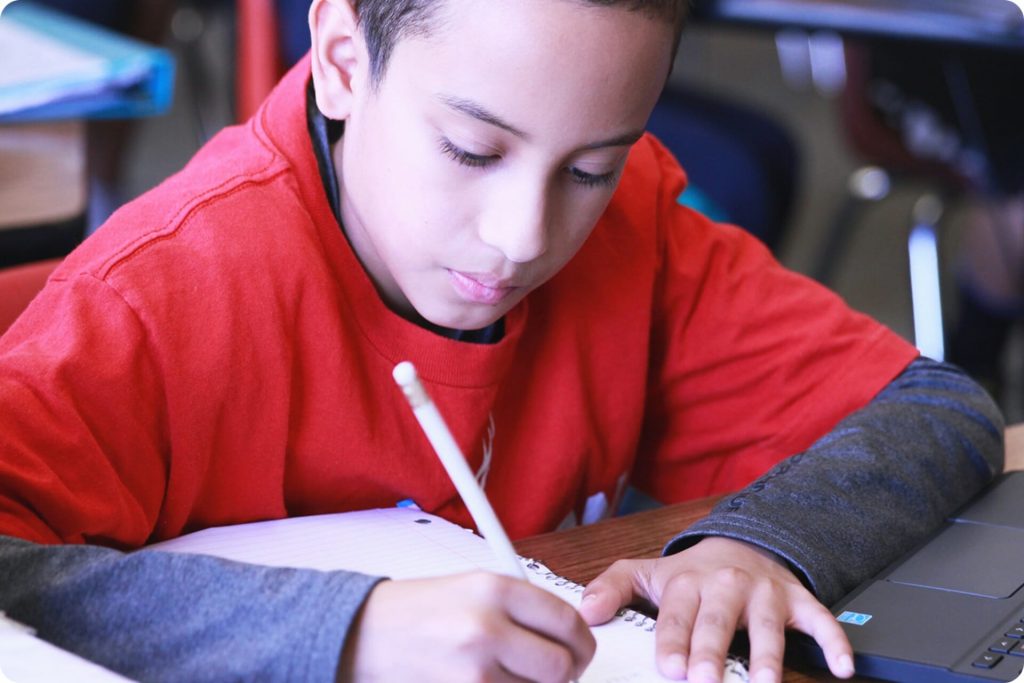
How teachers can address math anxiety
No one is born knowing the quadratic formula, or how to measure a triangle—math needs to be taught.
Likewise, no one is born a “math person”—or not a math person. And no one is born with math anxiety.
“Children don’t come with math anxiety,” says Dr. Rosemarie Truglio, senior vice president of curriculum and content for Sesame Workshop and a guest on Math Teacher Lounge. “Math anxiety is learned.” That’s actually good news because it means math anxiety can be unlearned, too. We can teach students (and even teachers) how to overcome it. In this post, we’ll cover some helpful learning strategies, teacher tips, and supports for caregivers.
Anxiety in—and beyond—the math classroom
First, let’s review what math anxiety is and is not.
Math anxiety is more than just finding math challenging, or feeling like you’re not a math person. Dr. Gerardo Ramirez, associate professor of educational psychology at Ball State University, defines it as “a fear or apprehension in situations that might involve math or situations that you perceive as involving math. Anything from tests to homework to paying a tip at a restaurant.” Here’s what else we know:
- Causes: Math anxiety is not correlated with high or low skill or performance. For students who’ve been pressured to excel, math anxiety comes with the fear of not meeting expectations. For students who historically haven’t done well in math, the anxiety comes with the assumption they’ll do poorly every time. Other triggers include a mismatch between learning and teaching styles that can lead to struggle, or false cultural messages like “girls aren’t good at math.”
- Consequences: People who suffer from math anxiety may deliberately avoid math, the consequences of which are obvious and far-reaching: not learning math at all, thus limiting academic success, career options, and even social experiences and connections. (This webinar mentions real-life—and relatable—examples of adults affected by math anxiety.)
- Prevalence: Math anxiety affects at least 20 percent of students, and parents and teachers can suffer from math anxiety, too. In fact, some research suggests that when teachers have math anxiety, it’s more likely that some of their students will as well. Luckily, those teachers and parents can also play a key role in helping students (and maybe even themselves) get more comfortable with math.
Addressing math anxiety in the classroom
Math anxiety can arise from the contexts and cultures in which students encounter math, so it makes sense that we can also create conditions that can help reduce it—and even prevent it from taking hold. Here are some key strategies for helping even the most math-anxious students thrive:
- Invite explicit conversation about math anxiety. In this webinar, Math Teacher Lounge podcast co-host Bethany Lockhart Jones recommends having open and direct conversations with all students about how doing math makes them feel. “The more you know about your students’ ‘math stories,’ the more you can help them,” she says.
- Build a positive, supportive, and collaborative math community where different learning styles and incorrect answers—often fuel for math anxiety—are considered part of the learning process. Embracing and working from wrong answers encourages students to focus on the “how” of math. Students feel more comfortable asking questions, taking risks, and making mistakes (as well as learning from them).
How do you build a supportive environment in your math classroom?
- Cultivate a growth mindset. Create a culture where mistakes are not just acceptable, but inevitable—even welcomed. Encourage perseverance and persistence. Emphasize that being challenged by a math concept doesn’t mean a student is inherently bad at math or just can’t do it. It means only that they can’t do it yet.
- Encourage collaboration. Promote a culture of cooperation and teamwork by incorporating group activities, peer support, and class discussions into your lessons.
- Play. Game-ifying problems and introducing friendly competition builds camaraderie and helps students find shared joy in math—a win-win!
- Give students plenty of time. Alleviating the pressure of time constraints allows students to think more deeply, take brain breaks, make fewer rushed errors, and develop a sense of control and confidence. Here are some ways to build time into your math lessons:
- Allow students ample time to think when you ask them questions.
- Allow students to work on assignments in class with support and take them home to finish if they need more time.
- Consider giving tests and quizzes in two parts and allowing students to complete them over multiple days.
- Create a culture of revisions. Allowing students to revise homework assignments and tests/quizzes for partial credit will remind them that learning math is a process, not a mandate to get everything right the first time. This will help them deepen their understanding by learning from and correcting their errors—and remind them that mistakes are part of growth.
- Use intentional language. The phrase “This is easy” might sound encouraging, but anxious students may hear it as “You should be able to do this.” Instead, use supportive, objective language such as “This problem is similar to when we…” or “Try using this strategy.”
Addressing math anxiety at home
Caregivers may be accustomed to reading to students at home, but sitting together and doing math? Probably less so. Some caregivers may even inadvertently perpetuate math anxiety—or the ideas that feed it—by repeating some of the associated stereotypes and misconceptions. (“Sorry, kiddo, grandpa’s not a math person.”)
Teachers can address this by sending materials home to support caregivers in engaging kids in math. Math games, for example, offer a fun, accessible opportunity for home practice—and they can even be played at bedtime, along with story time.
In general, teachers can also encourage caregivers to:
- Use and point out their use of math in the real world wherever possible.
- Help with math homework as much as possible.
- Use intentional, positive phrasing about math—including about their own use of it.
Teachers have the ability to reduce math anxiety and help students unlearn the stereotypes associated with it by building a positive math ecosystem. They can build a positive community in their math classroom, set caregivers up for success in supporting students at home, and even shine a light on their own relationship to math.
To learn more, tune in to Season 5 of Math Teacher Lounge, dive into our math webinars, and read the rest of our math blog.
Boost student engagement with Science Seminars

What do you get when you cross a Socratic seminar with Curie, Watson, and Crick?
A Science Seminar.
Though Socratic seminars typically take place in ELA or social studies/humanities classrooms, we also know how strongly scientific and literacy approaches can support each other.
So let’s see what magic can happen when we bring a little Socrates into science!
More than just seminars on science
As you likely know, a Socratic seminar is a method of facilitated discussion that uses open-ended questions, active listening, and collaboration to encourage deep exploration of a text or topic.
Sound perfect for science? That’s because it is!
When a Socratic seminar becomes a Science Seminar, students focus on scientific evidence and work together to answer a question and come to the most convincing explanation of a phenomenon. Ideally, the teacher takes a supporting role, putting students and their ideas at the center of the discussion. In this way, Science Seminars form a powerful part of an NGSS-informed curriculum that teaches students to think, talk, evaluate, and collaborate like scientists.
The benefits of Science Seminars
Like Socratic seminars, Science Seminars:
- Build critical thinking. They encourage participants to analyze and evaluate information critically, challenging assumptions and exploring multiple perspectives.
- Provide practice in productive argument. Through structured dialogue, Science Seminars teach students to challenge each other respectfully and engage in constructive disagreements, supporting their ideas with reasoning and evidence.
- Boost literacy skills. By actively participating in discussions, students practice active listening, oral communication, and analytical thinking—all serving to enrich their comprehension, vocabulary, and overall literacy skills.
And on top of all that, they also connect to key Next Generation Science Standards (NGSS) practices. Specifically:
- Asking questions and defining problems.
- Analyzing and interpreting data.
- Constructing explanations and designing solutions.
- Engaging in argument from evidence.
- Obtaining, evaluating, and communicating information.
Tips for strong Science Seminars
Science Seminars are designed to be student-focused and student-led, but the teacher still plays an important role in setting students and seminars up for success. Here are some ways you can help them run smoothly and effectively:
- Set clear expectations. What’s the goal of the seminar? Make sure students know precisely what question they’re working to answer, and how they will know when they’ve answered it.
- Set ground rules. Before you start, help the students agree on how they will interact. Who has the floor? What words, phrases, and types of communication are helpful or not? What happens when students disagree?
- Involve all students. Plan in advance how more quiet students can take part. You might consider supplying conversational prompts to encourage participation.
- Take on a supporting role. Once you’ve set it all up, step back. If the conversation stalls, you might ask an open-ended question. You might also take notes—a reminder that the students are in charge and what they’re saying is important.
Free Science Seminar resource collection
We’ve created a free set of materials to help you host a successful Science Seminar. In this collection, you’ll get:
- A helpful guide that dives deeper into how to get started.
- Our top 10 Science Seminar tips for teachers.
- Talk moves for grades K–1, 3–5, and 6–8.
Access your free Science Seminar resources here.
Even more to explore
Defining math fluency with Jason Zimba
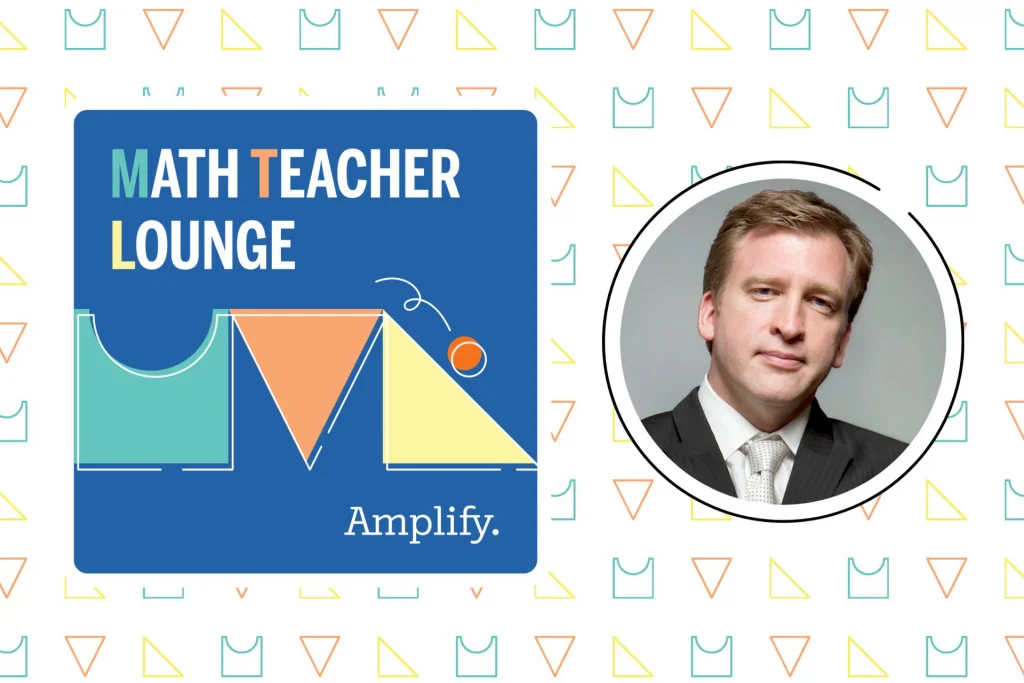
When we think of fluency, especially as a goal, we might think of speaking or reading a language. But fluency is also a goal in learning math! So what is math fluency? And what does it look like in the math classroom? In Season 6, Episode 1 of our Math Teacher Lounge podcast, Amplify’s own Jason Zimba helps us understand—using some analogies to baseball and chicken, of course.
Definitions of math fluency
We can develop fluency in many things, from coding to cooking. On the Math Teacher Lounge podcast, Amplify Chief Academic Officer of STEM Jason Zimba recounted becoming fluent in…roast chicken.
Jason describes practicing one particular recipe until it was perfect. For Jason, that meant not just that the outcome was flawless or delicious, but that he was eventually able to make it from memory, without thinking—and to naturally adjust and calculate for variables like a smaller or larger chicken, or an unfamiliar oven.
Math fluency works the same way. Practice brings effortlessness—freeing up time and mind space for new opportunities.
The word “fluency” comes from the Latin fluentia, which means “flowing.” When applied to math, it means ”skill in carrying out procedures flexibly, accurately, efficiently, and appropriately,” says podcast host and math teacher and advocate Dan Meyer. As with someone fluent in a language (or a recipe), someone fluent in math is able to think and calculate mathematically without struggle or effort—that is, with fluidity.
Podcast host and elementary educator Bethany Lockhart Johnson adds this informal description: “It’s that thing you don’t even think about anymore. ‘Cause it’s in there. You’re not still thinking about addition facts, because you’ve got it. And it fuels you. It’s the foundation that allows you to do all the other cool stuff.”
Fluency in the math classroom
What does fluency look like in practice? A young learner fluent in math will be able to smoothly recite the number word list in order (“one, two, three…”) and write the numerals from 0 to 9. As the student grows, so does their fluency with multi-digit calculation, rational-number arithmetic, and eventually even variable expressions.
“It’s a wordless but still somehow almost verbal sort of fluency, with properties of operations as the grammar of the language,” says Jason.
But “it’s not fact recall,” he says. “Recall is remembering or just knowing. Fluency refers to calculation.”
Why and how to improve math fluency
There are different paths to fluency, but all can lead to “conceptual richness and mathematical joy,” says Dan.
If fluency provides that crucial foundation, what happens to students who are not math-fluent?
“When kids don’t have access to [fluency], it keeps them from diving into the juicy parts of math,” says Bethany. “Math is so much bigger than addition facts, but when they don’t know those addition facts, that becomes all math is.”
Without fluency, students miss opportunities to progress in (and enjoy) math, and may even develop math anxiety.
So how can you support math students in developing fluency?
For one thing, it’s important not to underestimate the value of practice and repetition. These approaches—especially when used in combination with other, more organic modes—can be highly productive, says Jason. “I worry about whether discomfort with repetitive practice is short-changing students of the power and confidence that fluency can bring.”
Dan compares it to achieving excellence in a sport—”like shooting from the same spot on the court over and over again,” he says. That kind of rote repetition is valuable in sports, and should also have its place in math instruction.
It’s also important for students to understand why they’re learning and even drilling their numbers, arithmetic, or times tables, Jason notes. They need to be “invested in understanding and agreeing that this is going to do something for them.”
One thing that helps: providing students a sense that they’ve accomplished something. “We need to have moments for them to reflect on what has been learned and what is now easy that was previously hard,” Dan says. He calls this process “humanizing fluency”—and Math Teacher Lounge will be here all season to help math educators do just that.
Save the date
Join us at NCTM in October for a live Math Teacher Lounge podcast recording with Dan Meyer and special guest Jennifer Bay-Williams! We’ll be investigating math fluency and finding fun ways to get all students engaged in math instruction.
Math Teacher Lounge LIVE!
NCTM | Oct. 27 | 2:30 p.m. EST (doors at 2:15) | Room 158AB
More to explore
Integrating AI in the science classroom
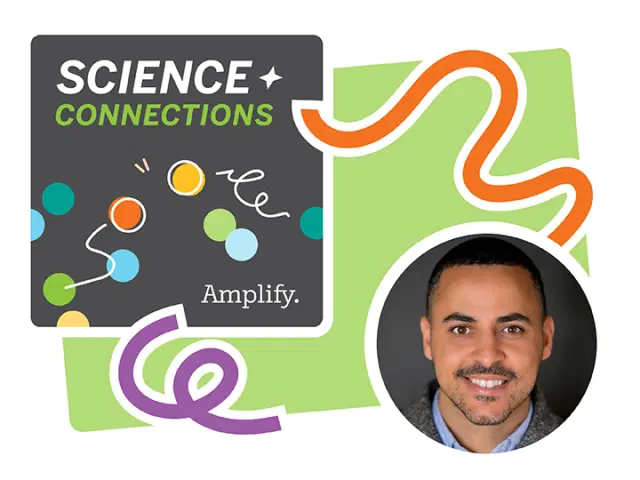
How can you create new science lesson plans, adjust assessments, and design labs using only objects kids have at home?
Just ask—ChatGPT, that is.
In this recent Science Connections webinar, Science Connections podcast host Eric Cross tackles the topic of ChatGPT for teachers, along with other specific AI tools that (when used with your existing standards-aligned curriculum) can help make teaching more efficient, targeted, and interactive.
AI for science can save teachers time, deepen student engagement, and inspire collaboration and creativity all around, says Science Connections podcast host Eric Cross.
Eric describes some of the many ways science teachers can use AI in the classroom—as both shortcut and partner. “We can use it for personalized learning,” he begins. “We can generate questions and give instant feedback. We can differentiate. We can support our students with special learning needs. And that’s just a start. The more you use it to collaborate with other educators, the more fun it becomes.”
Generative artificial intelligence 101
There are a lot of AI tools out there, but the new one is generative AI. As Eric explains, the difference is that generative AI—unlike, say, AI that gives you driving directions—creates something that didn’t exist before: text, images, music, and, yes, new science experiences for the classroom.
As with any technology, the practically infinite uses and applications of AI raise important questions about accuracy, equity, biases, and more. In this webinar, though, we focus only on AI’s practical uses for science teachers.
Generative AI relies on and responds to prompts.
You’re telling it to do something and it communicates back to you in human language. The way you craft your prompts determines your output, so the better your prompt is, the better your output.
– Eric Cross
Host, Science Connections; Adjunct Professor of Learning and Technology, University of San Diego
Let’s see what AI has produced for Eric as a science educator, and the kind of prompts he’s used to get there.
How science teachers can use AI to prepare and engage
Teachers can use generative AI to create personalized learning materials, generate more practice questions, and explain topics at any level and depth.
In this webinar, Eric focuses on the AI tools that have given him the most mileage as an educator and that he thinks can provide the most value for others.
These include:
- Modifying assessments when students have used all the ones that a curriculum provides. A sample prompt: “You are a science teacher creating an assessment for middle school students. I will upload an assessment. Please recreate it in a similar tone and voice as the original with a similar level of rigor.” Response: Brand-new multiple-choice and written questions on the same topics, all adhering to the same NGSS. With a little more back and forth, Eric will have the exact number, style, and focus of questions that he needs—along with an answer key.
- Creating relevant, accessible lab ideas. Eric prompts AI for lab and hands-on project ideas to fit exact specs: topic, grade level, desired outcome, and objects found in a typical classroom or home. Result: Hands-on activity ideas students can do at home, like exploring lung capacity with a balloon and a ruler (delivered by AI complete with full supply lists, instructions, and more).
- Helping students connect. To support a student who’s stuck, you might prompt the AI by saying: “I’m a fifth grader and my teacher is talking about claim evidence reasoning and I don’t really understand it. Can you explain it to me in a way that would help me? And then: “Now can you help me explain it to my mom, but in Spanish?”
Eric also uses AI to interpret graphs, collate student data, build graphic organizers, create science games, and more.
Is everything AI provides him flawless and 100% accurate? No, says Eric. “You have to vet, and it helps to have a high-quality curriculum already in place. But it gets me 80 to 90% there—and that’s pretty good.”
More to explore
- Hear more about AI from Eric and fellow educators Donnie Piercey and Jennifer Roberts in Science Connections, Season 3, Episode 4: Using AI and ChatGPT in the science classroom
- Science Connections podcast
- Amplify Science webinars
Collaborative learning strategies in math

Why is collaborative learning important?
Just ask this third grader: “It is important to work together, because when you work together you can get smarter by other people’s ideas.”
That just about sums it up!
Let’s take a closer look at what math looks like in a collaborative classroom, why collaboration matters, and how teachers can build a culture of collaboration for their K–8 math students.
What is collaborative learning in mathematics education?
Kristin Gray, executive director of Amplify’s math suite, is a veteran math teacher. (The answer above came from one of her very astute third graders.) And according to her, collaboration in math is so much more than just kids chatting. Gray paints a picture of collaborative math learning in elementary math and beyond as kids who are:
- Grouped around a table, not isolated at separate desks.
- Engaging in animated conversation.
- Explaining their thinking and justifying their answers.
- Comparing their various approaches.
- Connecting math to their own lived experiences.
- Connecting their ideas to the ideas of others.
Taken together, collaboration supports connections—among experiences, math concepts, and others’ ideas and experiences.
Collaboration means making the time and space to take these widely varied things that each student brings uniquely to our math classroom and bring them out in a really safe and collaborative culture.
– Kristin Gray, executive director of Amplify’s math suite
Why is collaborative learning important in math?
Substantial research shows that collaborative learning promotes active learning, critical thinking, communication skills, social development, a positive learning environment, deeper understanding of concepts, and preparation for real-life situations.
Gray cites a few findings in particular:
- A 2014 NCTM study found that mathematical conversations and discourse among students—at all grade and ability levels—helps build a shared understanding of mathematical ideas.
- Hope A. Walter’s article “Beyond Turn and Talk: Creating discourse” (Teaching Children Mathematics, 2018) asserted that meaningful math discourse supports metacognition and teaches students how to discuss, debate, and reevaluate mathematical situations in a respectful manner .
- A 2018 NCTM study found that when students have the chance to analyze and compare each other’s approaches, any sense of hierarchy in the classroom is reduced and replaced with a classroom culture that values input from all students.
Hands-on math activities and more: Components of a collaborative classroom
What conditions best set up a math class for collaboration?
Above all, students need hands-on activities that truly engage—or, in Gray’s words, “tasks worth talking about.” Teachers should emphasize the importance of the process of getting to the answer, encouraging the sharing of “rough draft ideas” that students can develop together. Gray also recommends stopping the groups’ conversations before they’re done, so that they can reflect on what they’re doing rather than just report what they did.
Other resources:
Problem-based learning offers a powerful approach to collaborative learning in math. Our guide around making the shift to problem-based learning through Learning Labs will walk teachers through what problem-based learning is, why it’s critical to math instruction, and how to support the shift to this approach through Learning Labs. A tried-and-true STEM strategy that Gray has often used with teachers, Learning Labs break the typical mold of siloed professional development days by encouraging collaborative professional learning within the classroom!
Desmos Classroom activities let students share their thinking with each other. The teacher dashboard provides educators a window into this thinking in real time, as well as a powerful toolkit to turn those ideas into still more productive conversations and effective learning. Check out all the Featured Collections Desmos Classroom has to offer.
More to explore
Implementing math fluency games
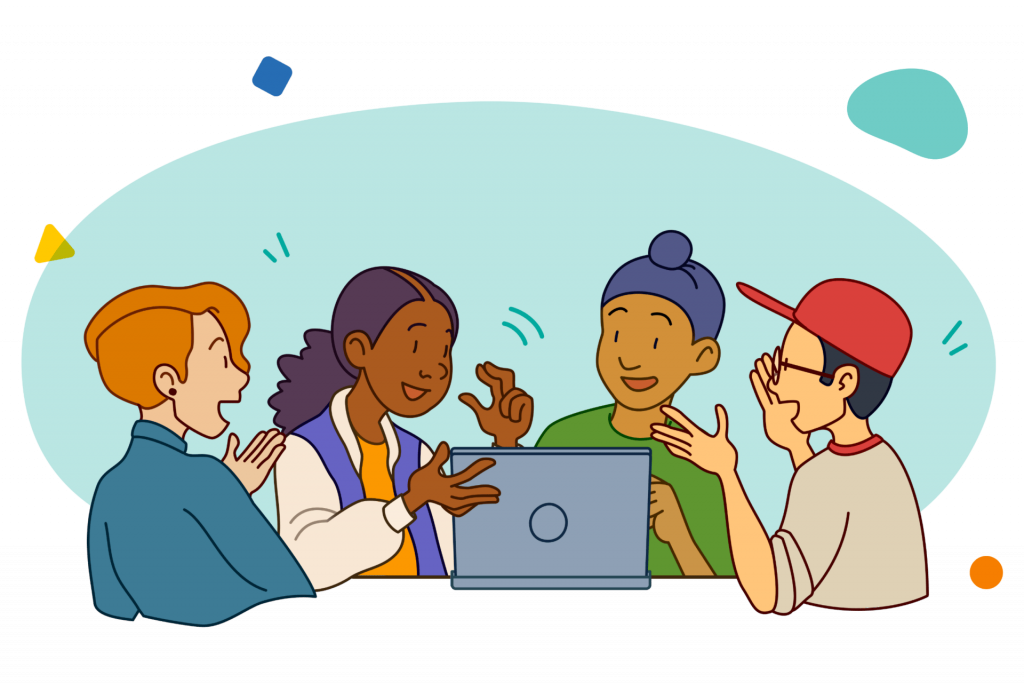
OK, shuffle the deck and draw four cards. Place them face up, in no particular order. Your job: pair them into two-digit numbers with the lowest possible difference between them.
If you draw a 3, a 9, and two 8s, you’re not going to want to make them into 98 and 38. 89 and 83 might be a better move.
Whatever pairs you create, you’re likely more engaged by this challenge than you might have been by the invitation: “Let’s practice subtracting two-digit numbers!”
That’s just one of the benefits of integrating math fact fluency games and other math-driven games into your classroom.
A special live recording of Math Teacher Lounge at NCTM 2023—in which host Dan Meyer plays the above card game—explores how games can not only help build math fluency, but also help bring joy into the classroom.
As Dan notes during the live show, playing a game creates an energy shift in the room: “There’s like a moment of activation for a game versus a worksheet, where people are kind of murmuring and chattering,” he says. “I just want to, like, catch the vibe.”
Let’s find out more.
Math facts fluency, defined
When we think of fluency, we might think of speaking or reading a language. But fluency is also a goal in learning math. (And it’s the theme of this entire season of Math Teacher Lounge!)
As discussed in this post, the word “fluency” comes from the Latin fluentia, which means “flowing.” When applied to math facts for kids, it means ”skill in carrying out procedures flexibly, accurately, efficiently, and appropriately,” says Dan. As with someone fluent in a language (or a recipe), someone fluent in math is able to think and calculate mathematically without struggle or effort—that is, with fluidity.
Podcast co-host and elementary educator Bethany Lockhart Johnson provides this informal definition: “It’s that thing you don’t even think about anymore. ‘Cause it’s in there. You’re not still thinking about addition facts, because you’ve got it. And it fuels you. It’s the foundation that allows you to do all the other cool stuff.”
Math facts for kids through games
How do games help with all of this?
They can help make math more fun, for sure—but that’s just a start.
Podcast guest Jennifer Bay-Williams, Ph.D., a math education professor at the University of Louisville, Kentucky, knows that the learning and practicing of basic math facts can be rote and dull—but it doesn’t have to be. She likes to ask teachers: “How can you bring more joy to the learning of math, in a serious way?”
As this Edutopia article notes, “effective games…link content with low-stakes competition and can provide a more collaborative, engaging classroom experience—especially for students who may struggle to focus or find their niche in learning.”
There’s plenty of research to show that games can boost student participation, comfort with taking risks, interpersonal skills and classroom community, and positive attitudes toward learning. For kids with ADHD and dyslexia, they can also help improve focus and certain types of attention that support improved reading. All of this can help students get the practice and comfort with math they need to build the fluency they require.
But that doesn’t mean math class should be all fun and games. It’s important to integrate games into instruction thoughtfully and with purpose. As Bay-Williams says, she makes sure to ask teachers, “Really, why are we doing the game?”
Fluency games in Desmos Classroom
Desmos Classroom offers numerous math fluency games for all grade levels.
- K–5 educators should check out the Desmos K–5 Math Routines collection, including Guess My Fraction in grades 3–5 (for instructions, see this Instagram explainer from Kristin Gray).
- 6–12 educators should check out the 6–12 activities collection for more examples of math fluency games such as Battle Boats.
Additional resources
Reading comprehension strategies grounded in science
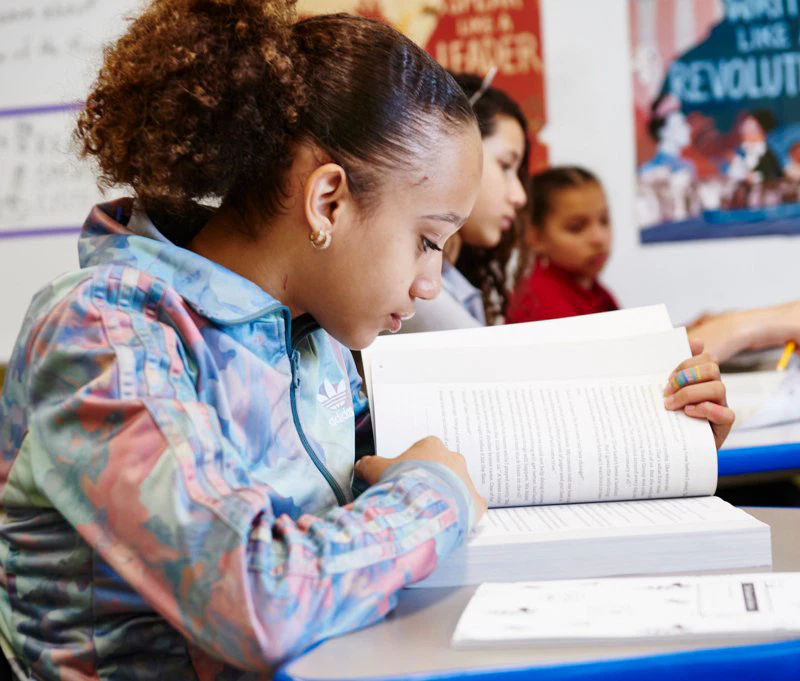
When we teach reading using what science (specifically the Science of Reading) tells us, we guide the brain to start recognizing and understanding those letters, syllables, and words. And the most effective reading comprehension strategies depend not only on explicit instruction, but on building background knowledge.
Comprehension instruction: Breaking it down
According to the Simple View of Reading, two cognitive capacities are required for proficient reading: (1) decoding, and (2) language comprehension.
“Reading comprehension is the product, not the sum, of those two components,” says Dr. Jane Oakhill, professor of experimental psychology at the University of Sussex. “If one of them is zero, then overall reading ability is going to be zero.”
As Oakhill explains further on Science of Reading: The Podcast, each component contains its own set of distinct skills and processes. It’s crucial to help students develop all of these capacities.
Building mental models for new information
Some readers are great at decoding but struggle with language comprehension. Why might that be—and how can you support them?
Here’s some context: After you read this paragraph, you aren’t likely to recall the precise wording—but you will probably remember the idea. Researchers use the term mental model to describe the cognitive strategies for the structure you create in your mind to perform this feat of comprehension.
Historically, educators have thought about the process of comprehension — everything that happens after each word is recognized — as a black box. But now we know that there are two levels of comprehension at work: comprehension processes and comprehension products.
Comprehension processes are the steps you take to build a mental model of a text during reading. Comprehension products refer to the work you are able to do with that model after reading.
Think of the process of building a mental model as a sort of micro-comprehension. Weaker comprehenders build weaker models, so they may struggle when asked to create a narrative text summary, identify a theme, put together predictions, or describe key details of a character’s evolving beliefs.
By actively engaging with text, connecting prior knowledge, utilizing graphic organizers, receiving explicit instruction, and exploring new information, students can learn to build robust mental models that enhance their comprehension of the text. These mental models serve as frameworks for understanding, organizing, and synthesizing information, which then leads to improved comprehension, retention, and critical thinking.
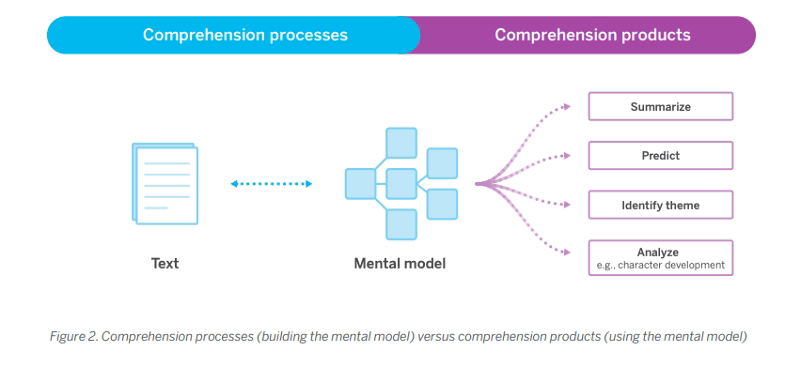
Researchers have identified as many as 17 comprehension processes that affect students’ ability to build and use their mental models. The following are a few of the comprehension processes that weak comprehenders most commonly struggle with, and that with practice, can be targeted for skill development and improved overall comprehension.
- Anaphora (using pronouns to refer to an earlier word or phrase): Some readers struggle to process pronoun relationships (Megherbi & Ehrlich, 2005), identify antecedents, and answer questions that require resolution of anaphora (Yuill & Oakhill, 1988).
- Gap-filling inference: When reading the sentence “Carla forgot her umbrella and got soaking wet,” more skilled readers will conclude that it rained. A lack of awareness of when and how to activate background knowledge to fill in gaps may hinder a student’s ability to make inferences and comprehend the text as a whole (Cain & Oakhill, 1999).
- Marker words: Writers use connective words (e.g., so, though, and yet), structure cues (e.g., meanwhile), and predictive cues (e.g., “There are three reasons why…”) to signal ways that text fits together. Students with limited knowledge of the meaning and function of these words may struggle with the meaning of the text (Oakhill, et al., 2015).
- Comprehension monitoring: When proficient readers encounter difficulty, they tend to stop, reread, and try to figure it out. Less proficient readers may just keep going or fail to recognize that what they’re reading doesn’t fit their mental model.
Two strategies that you can employ in your classroom to guide students in comprehension strategy instruction:
- Graphic organizers: Use graphic organizers such as concept maps, story maps, or Venn diagrams to help students learn to visually organize information and relationships within the text. Visualization enhances comprehension (Graesser, et al., 1994). As the text progresses, students can refer to and update their models.
- Comprehension monitoring: Teach readers to monitor their comprehension while reading by pausing to reflect on their understanding, clarify confusing points, and adjust their reading strategies as needed. Monitoring comprehension helps good readers stay engaged and actively construct meaning from the text.
How background knowledge powers comprehension
The Science of Reading demonstrates the importance of systematic and explicit phonics instruction. But students don’t have to learn phonics or decoding before knowledge comes into the equation. In fact, the opposite might even be true.
Let’s say you’re handed a passage of text describing part of a baseball game. You read the text, and then you’re asked to reenact that part of the game. Which is most likely to help you do so?
- Your ability to read
- Your knowledge of baseball
- Neither
If you answered “2,” you’re batting 1,000. This example summarizes an influential 1988 study that concluded that the strongest predictor of comprehension was knowledge. In the study, which showed readers (with varying degrees of background knowledge about baseball) a passage describing a game, struggling readers comprehended as well as strong readers—as long as they had prior knowledge of baseball.
“The background knowledge that children bring to a text is also a contributor to language comprehension,” says Sonia Cabell, Ph.D., an associate professor at Florida State University’s School of Teacher Education, on Science of Reading: The Podcast.
In fact, background knowledge is the scaffolding upon which readers build connections between prior knowledge and new words. Students with average reading ability and some background knowledge of a topic will generally comprehend a text on that topic as well as stronger readers who lack that knowledge.
But until recently, literacy instruction has typically focused on decontextualized skills—finding the main idea, making inferences—rather than on the content of texts and resources that students engage with. According to Cabell, what we know about knowledge and comprehension should inform instruction for the whole class. “I think most, if not every, theory of reading comprehension implicates knowledge,” she says. “But that hasn’t necessarily been translated into all of our instructional approaches.”
How can we help build background knowledge while teaching reading? Here are some strategies backed by science.
- Systematically build the knowledge that will become background knowledge. Use a curriculum grounded in topics that build on one another. “When related concepts and vocabulary show up in texts, students are more likely to retain information and acquire new knowledge,” say education and literacy experts Barbara Davidson and David Liben. According to them, this retention even continues into subsequent grades. “Knowledge sticks best when it has associated knowledge to attach to.”
- Provide instruction that engages deeply with content. Research shows that students—and teachers, too—actually find this content-priority approach more rewarding than, in Davidson and Liben’s words, “jumping around from topic to topic in order to practice some comprehension strategy or skill.”
- Support students in acquiring vocabulary related to content. Presenting keywords and concepts prior to reading helps students comprehend text more deeply. Spending more time on each topic helps students learn more topic-related words and more general academic vocabulary they’ll encounter in other texts.
- Use comprehension strategies in service of the content. While building knowledge systematically, teachers can use proven strategies—such as chunking and creating graphic organizers—to help students develop skills they can use to support their for understanding of important information.
- Use discussions and writing to help students learn content. Invite students to share their interpretations, supporting their thought processes in their own words and connecting with peers’ perspectives.
- Help students forge connections in small groups. Help students draw connections between reading lessons and units—and their own experiences—as they grow their knowledge base together.
Every day, the Science of Reading has more to tell us about comprehension as a multifaceted skill that requires a combination of various strategies, tools, and techniques to unlock meaning from text. Because of this body of research, we know that when educators bring intentional and evidence-based practices into the classroom, students can enhance their ability to comprehend grade level text, analyze information critically, and engage with diverse subject areas. By nurturing students’ reading comprehension skills grounded in the Science of Reading, educators can empower students to become good readers who can navigate complex texts with confidence and understanding.
Explore more
The Amplify blog:
Science of Reading: The Podcast
Don’t miss the finale of Math Teacher Lounge
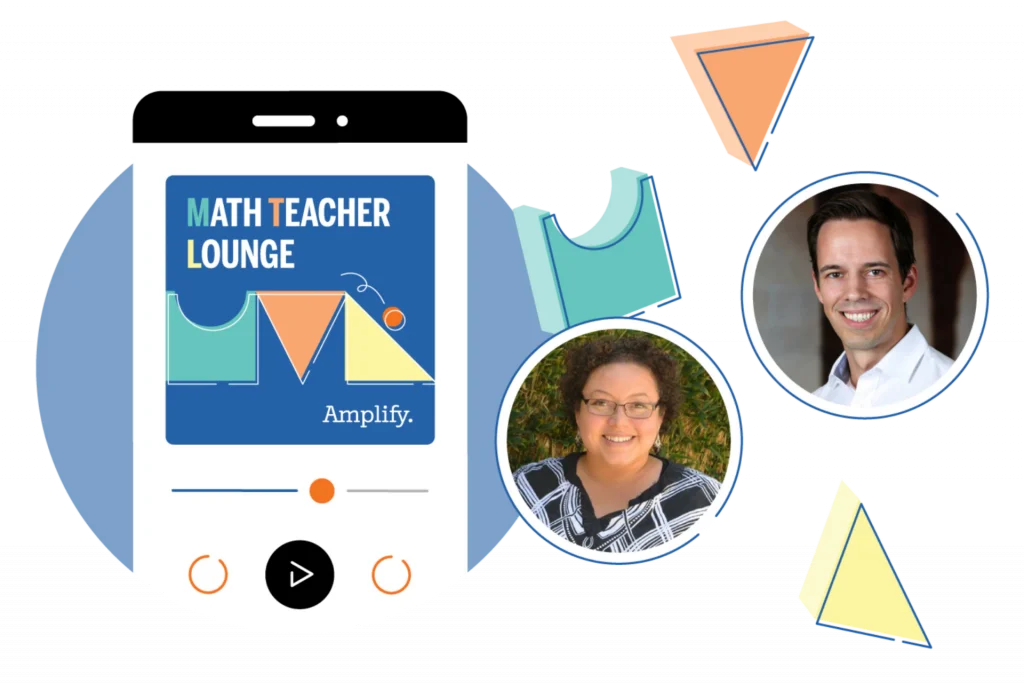
Just like certain functions and number sequences, even the most successful podcasts reach a natural end. And that’s true of Math Teacher Lounge. After six seasons and more than 40 episodes, co-hosts Bethany Lockhart Johnson and Dan Meyer are heading off to work on other exciting projects.
So let’s take a look at the podcast’s farewell episode, as well as some highlights from earlier seasons.
Highlights from this math podcast
On the final episode of Math Teacher Lounge, our hosts walk through the past ten episodes on math fluency. They highlight key conversations on defining and assessing fluency, fluency development in a bilingual math classroom setting, and the potential pitfalls of relying too heavily on so-called fake fluency.
“I think every guest has answered a question that we’ve had about fluency and then also opened up new areas of investigation for us,” says Dan. “Whether that’s thinking about community more deeply through fluency or assessment or classroom practices, all these different folks offered us a glimpse into their expertise and then pointed at paths towards more learning.”
Spanning six seasons, the podcast has reached thousands of educators while exploring a wide range of topics including the joy of math, math anxiety, and (of course) math fluency. Guests have included Amplify’s Jason Zimba, Reach Capital’s Jennifer Carolan, and Baltimore County Public Schools’s John W. Staley, Ph.D.
Some of the most popular episodes included:
Investigating math anxiety in the classroom (S5E1) with Gerardo Ramirez, Ph.D., associate professor of educational psychology at Ball State University. Ramirez helped our hosts and listeners understand what math anxiety is and is not, what impact it has on learning, and what we can do about it.
Building math fluency through games (S6E7) with University of Louisville professor Jennifer Bay-Williams, Ph.D., who—in a special live recording at NCTM 2023—showed how games can bring both fluency and joy into the math classroom.
Cultivating a joy of learning with Sesame Workshop (S5E3) with Dr. Rosemarie Truglio, senior vice president of curriculum and content for Sesame Workshop. Dr. Truglio shared how to cultivate a growth mindset in young children and point them toward academic achievement and long-term success.
Professional development—and more—to look forward to
Bethany and Dan will continue working on a host of other exciting projects, including webinars and conference appearances. On March 12, Dan will also participate in the Amplify 2024 Math Symposium: a free, virtual, five-hour event that will help educators strengthen math instruction, bolster student agency, and build math proficiency for life.
The following key Math Symposium sessions (featuring your favorite Math Teacher Lounge guests and host Dan Meyer) will help you learn even more about those popular topics in math:
Dan Meyer
How to Invite Students into More Effective Math Learning | 3:15 p.m. EDT
Gerardo Ramirez Ball State University
How Student’s Personal Narratives Shape Math Learning | 12:15 p.m. EDT
Jennifer Bay-Williams University of Louisville
Bringing Math to Life: How Games Build Fluency and Engagement | 1:00 p.m. EDT
Akimi Gibson Sesame Workshop
Developing Young Children’s Identities and Competencies as Mathematicians | 4:00 p.m. EDT
Check out the full agenda and sign up today. All sessions will be recorded and attendees will receive a certificate of attendance.
Key links
Connecting science and literacy: The power of language
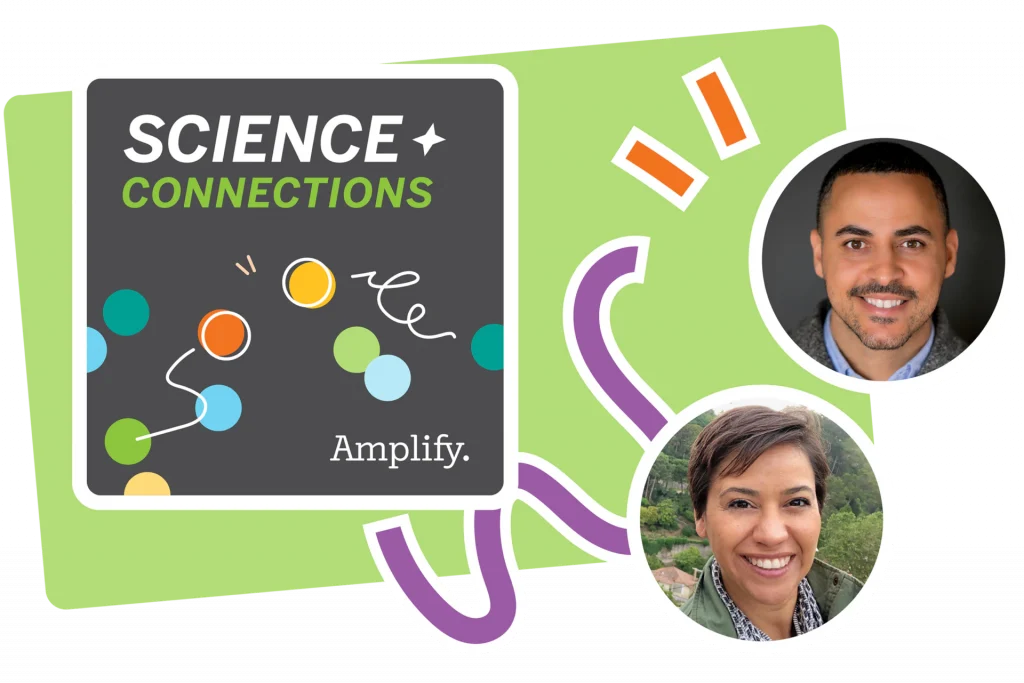
We’ve talked about how scientists need literacy skills in order to be scientists. They can’t do their jobs without reading, writing, listening, and communicating.
Our recent webinar Science Connections: Science and Literacy explored this intersection from a broader level: the power of language in the science classroom.
How can science teachers remove language barriers to make sure all students are able to access prior knowledge—and acquire more? And how can teachers leverage language to create optimal learning conditions for their science students? Why should they?
Let’s find out what webinar co-hosts Eric Cross and Susan Gomez Zwiep, Ph.D., had to say!
Language and science sense-making
Contrary to stereotype, scientists aren’t just loners in labs. Susan Gomez Zwiep, former middle school science teacher and senior science educator at BSCS Science Learning, credits a colleague with this pearl: “If I’m just doing science myself, and not talking to anybody, that’s not science. That’s just me in my head.”
So science teachers need to give students every possible opportunity to get out of their heads. And if language is a barrier—whether students are learning English, or challenged by science vocab—teachers can help remove it.
This principle is especially important in the context of phenomena-based learning, says Gomez Zwiep. “Rather than telling students ideas, and then proving those ideas correct by showing them a phenomenon, we show them the phenomena and engage them in science sense-making to develop that understanding,” she says. “Language is central to science sense-making and communicating that sense-making.”
Students also bring their prior knowledge to scientific sense-making. And, as Gomez Zwiep points out, prior knowledge is often embedded in the language a student uses at home, or just their own non-scientific vernacular. “I have to use that when I first engage with the phenomenon,” she says. “Otherwise, I’m limiting the resources that kids bring to the learning environment.”
Language in a “safe” science classroom
“If I had to learn science in my second language, I would be struggling with not only everyday vocabulary, but also content-specific vocabulary,” says Eric Cross, host of Amplify’s Science Connections podcast. “You would never actually know what I knew or what I was bringing to the table.”
The goal is to create an environment where students feel comfortable exploring, using whatever language is accessible to them, and then guiding them to conclusions—and precise scientific language. “A classroom requires trust. It requires relationship building,” says Gomez Zwiep. “If a student is worried about saying something a particular way, that’s where all their cognitive energy is going instead of actually talking about the science.”
The key? Put scientific ideas first, and the language will come. “We used to wait until kids had English in order to learn science. And now we’re starting to see that language emerges from learning experiences,” says Gomez Zwiep. “So it’s a product of learning, not a prerequisite.”
Literacy in your science classroom
You can integrate science and literacy right away, starting with free science and literacy lesson samples from Amplify Science.
Explore more:
Science blogs
- “Science or literacy instruction? You don’t have to choose!”
- “Instructional strategies for integrating literacy into your science classroom”
Science Connections podcast episodes
5 ways to boost biliteracy with the Science of Reading
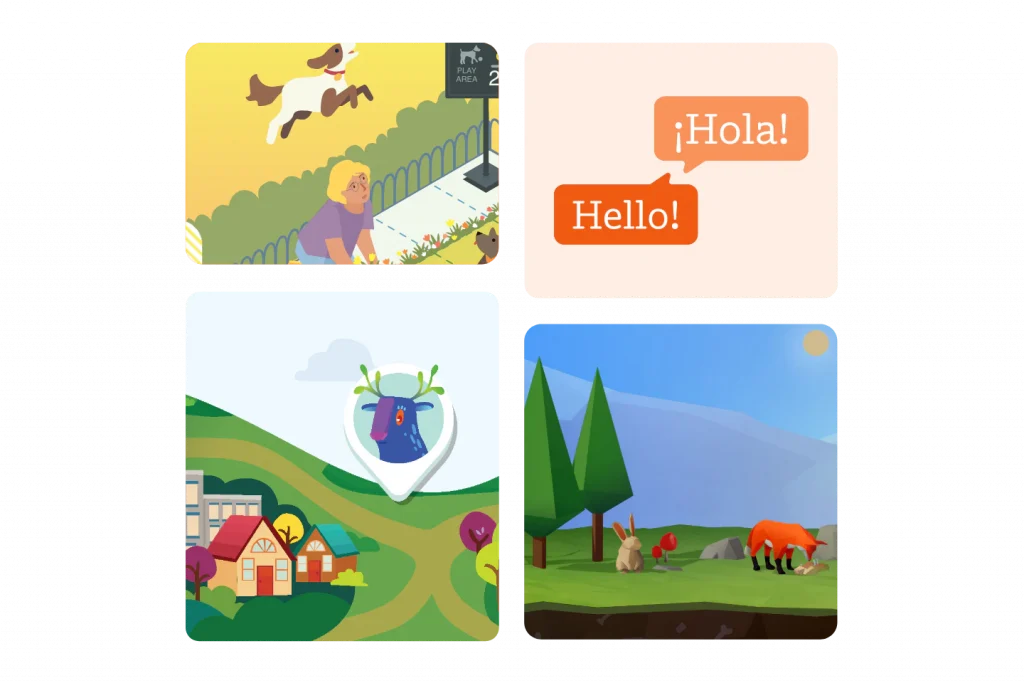
Research shows that bilingual instruction (including dual language instruction and dual language immersion) supports the long-term success of dual language learners—in both languages, and beyond.
How do we best support those students?
More precisely, how are we serving our emergent bilingual students so that they can develop their biliteracy? This is a question posed by biliteracy expert and Amplify product specialist Alestra Flores Menéndez. And in our recent webinar Leveraging the Science of Reading to Boost Biliteracy, she and other experts attempt to answer it.
The power of biliteracy
Knowing more than one language is a powerful tool for opening up new worlds, meeting different people—or even just asking directions in an unfamiliar place.
But that’s not all. Bilingualism itself is a cognitive strength. Research conducted in 2015 by Claude Goldenberg and Kirstin Wagner links bilingualism to increased control over attention, improved working memory, greater awareness of the structure and form of language, and better abstract and symbolic representation skills.
“Our multilingual learners really are using their brains differently,” says Flores Menéndez.
And as with all students, we need to start early to make sure they’ve got their best shot at literacy.
The number of emerging bilingual students in our classrooms is growing, with 15.5% of them in grades K–3. That group includes the key developmental year—third grade.
Third grade is seen as the last year students learn to read before they start reading to learn. Without proficiency by fourth grade, they’re at risk of struggle across subjects.
And for many students, literacy is biliteracy. So how to make sure they get there?
Helping all multilingual learners succeed
“Bilingual instruction has been proven to be the most effective,” says Amplify biliteracy specialist Ana Torres, M.Ed., citing research by Virginia Thomas and Wayne Collier.
Other models (English immersion, transitional bilingual) are a fit for students with certain language profiles. As Torres notes, “We have to be intentional and purposeful to make sure there are positive outcomes for all students.”
But the proven impact of the bilingual model shows this: Knowledge of, and in, a second language builds from the first.
Foundational skills, vocabulary, and knowledge are essential, and all transfer to the second language—through explicit, research-based instruction.
Key elements of that instruction:
- Assessing literacy in both languages. “Assessing what [students] know in their native language is crucial to their success in acquiring that second language,” says Torres. A 2019 study at the University of Oregon looked at phonological awareness among Spanish-speaking pre-K students. (Phonological awareness represents the understanding that words are made up of a series of discrete sounds.) When assessed in English, 63% of students needed Tier 2 or 3 intervention. But when assessed in Spanish, only 21% did. “We need to look at the overall picture of students’ literacy,” Torres says. “Otherwise they’re going to get the wrong instruction.”
- Deliberately bridging from the native language to the new one. Spanish and English share many elements, among them letter sounds. If students know the sounds of the letter m in Spanish, they’ll be able to map that sound onto the same letter in English.
- Grounding in the Science of Reading. The Simple View of Reading has been validated in more than 150 studies across multiple languages. Foundational skills, vocabulary, and knowledge can all transfer through explicit instruction.
- Honoring students’ home languages, cultures, and community experiences. “It’s well documented that when children feel a sense of belonging, they’re more motivated to learn and experience more success in school,” says Menéndez. “Students should see themselves reflected positively in any curricular material.”
- Emphasizing knowledge. Perhaps you’re familiar with the iconic baseball study. Students with prior knowledge of baseball greatly outperformed their peers on reading comprehension—even those peers who were stronger readers. “Building knowledge is absolutely essential for literacy development,” says Menéndez.
Learn more
Explore Amplify Caminos.
Watch the full webinar: Leveraging the Science of Reading to Boost Biliteracy.
Biliteracy and Science of Reading principles in English and Spanish.
Read about The Importance of Dual Language Assessment in Early Literacy.
Binge our biliteracy podcast playlist.
Small district, big change: Patrick County’s journey with the Science of Reading
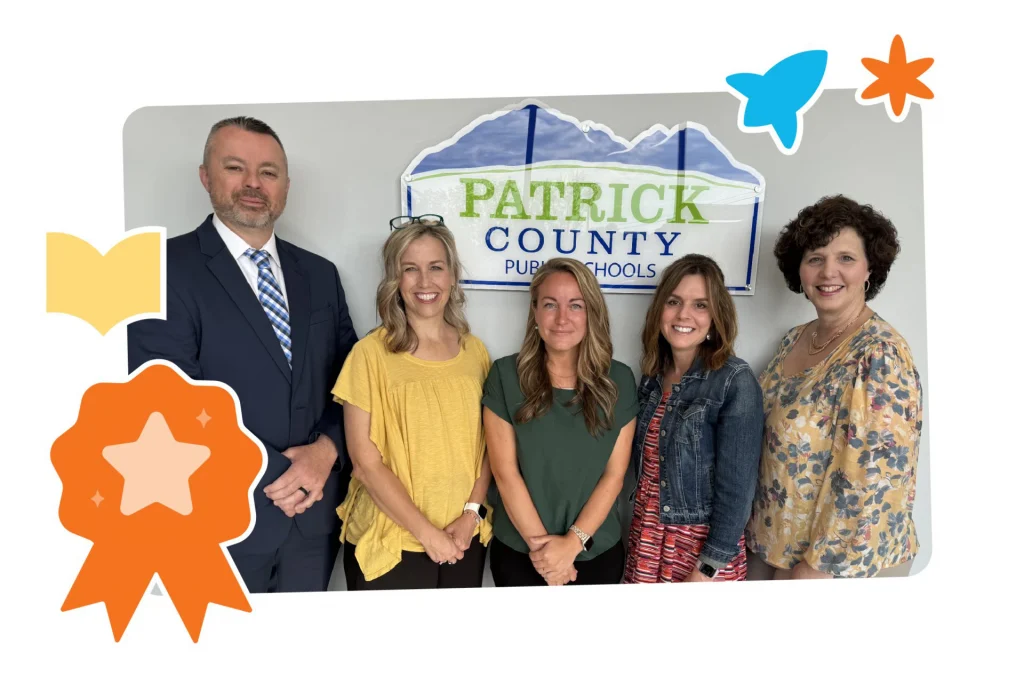
In rural southwest Virginia, Patrick County Public Schools—a small district with big ambitions—has redefined early literacy through a transformative approach to reading instruction.
Teachers and leaders are shifting long-held instructional practices and embracing a Science of Reading-based framework. With the dedication of instructional coaches like Sara Vernon and Callie Wheeler, this district is building classrooms full of proficient readers and shaping a new culture of reading.
This commitment to reimagining literacy instruction has earned Patrick County Public Schools the Science of Reading Star Awards District Captain award—a testament to the district’s vision for improved student reading outcomes.
Before: Reading instruction challenges
Before this shift, reading instruction in Patrick County matched familiar approaches across the country, grounded in programs like Jan Richardson, Lucy Calkins, and Fountas and Pinnell. Educators like Wheeler and Vernon initially relied on balanced literacy and whole language techniques, believing that increased exposure to texts alone could help children learn to read.
However, especially during the pandemic, they began to see students struggle—including, in Wheeler’s case, her own child—and begain to wonder if there might be a better way.
Vernon and Wheeler found their approaches lacking—until they found each other. When their paths crossed in Patrick County, they realized a shared need to re-evaluate their instructional approaches. Conversations with colleagues and research into the Science of Reading framework opened their eyes to new possibilities, sparking a commitment to overhaul literacy instruction in the district.
Building a coalition for change
Vernon and Wheeler were not alone in their vision. District leaders and teachers became eager collaborators. Together, they built a coalition for change, advocating for professional development and resources to support a district-wide implementation of evidence-based practices grounded in the Science of Reading.
Recognizing the need for expert training, they secured ESSER funds to attend the Plain Talk about Literacy and Learning Conference, which deepened their understanding of structured, evidence-based reading practices. This journey transformed not only Vernon and Wheeler’s methods but also those of their colleagues, building a strong foundation for the new approach.
Embracing Science of Reading-based best practices
With district support, Vernon and Wheeler led the selection and adoption of Amplify’s CKLA curriculum, which aligns with the Science of Reading. To extend teachers’ understanding, they offered podcast studies, professional development sessions on the research behind reading instruction, and LETRS (Language Essentials for Teachers of Reading and Spelling) training.
Teachers throughout the district quickly saw the benefits, with kindergarten students making tangible reading progress. The new curriculum emphasizes background knowledge, foundational skills, and a diagnostic approach that ensures each student’s needs are met.
Teachers previously grounded in balanced literacy practices began to embrace the change. Many began to see that teaching phonics and sound-first strategies brought faster and more meaningful progress in reading.
As Wheeler explained, they wanted teachers to fully understand the research behind CKLA and the Science of Reading—empowering them to support students more effectively.
Sustaining a culture of literacy and growth
Today, Patrick County is witnessing an inspiring literacy transformation. Continuous feedback sessions, classroom observations, and data-driven discussions are all part of an evolving system where educators feel encouraged to explore new ideas and take calculated risks.
The district’s openness to change and the collaborative spirit among teachers have been instrumental in creating a culture where educators feel empowered to enhance student learning outcomes.
Reflecting on their achievements, Vernon and Wheeler emphasize the profound impact of this district-wide change. As their assistant superintendent put it: “The worst thing we could ever do is to know that what we were doing wasn’t working and not change.”
Patrick County’s journey is a testament to what’s possible in even the smallest districts when leaders and teachers commit to bold, research-based reforms that truly put students first.
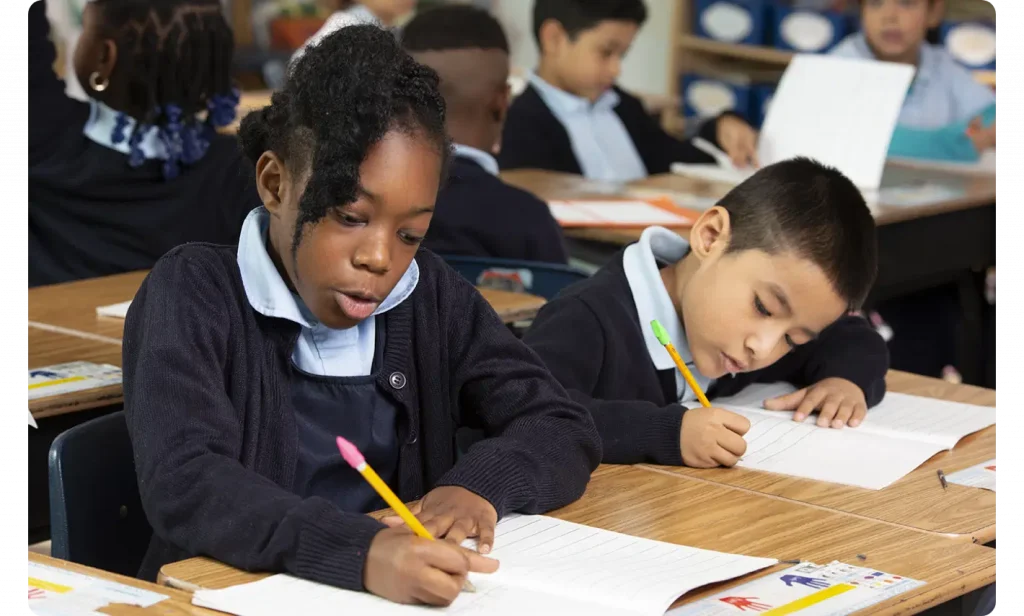
Read about our all-green programs on EdReports.
See what the evaluators at EdReports have to say about Amplify’s high-quality curriculum.
Explore our programs
Amplify CKLA
Using a fundamentally different approach to language arts, Amplify Core Knowledge Language Arts (CKLA) is a PreK–5 program that sequences deep content knowledge with research-based foundational skills. CKLA met expectations and received green ratings from EdReports. Learn more about the program.
Amplify CKLA Skills
Built on a systematic scope and sequence, Amplify CKLA Skills offers the explicit skills instruction needed in today’s classrooms. Amplify CKLA Skills earned a perfect score on foundational skills criteria from EdReports. Learn more about the program.
Amplify ELA
Built specifically for middle school, Amplify ELA is an interactive core curriculum that engages students by bringing complex texts to life. ELA received near-perfect scores from EdReports. Learn more about the program.
Amplify Science
Amplify Science empowers students to think, read, and write like real scientists and engineers. Amplify Science K–8 received all-green ratings in EdReports’ review of national science curricula. Learn more about the program.
Desmos Math 6–8
Designed for middle school, Desmos Math 6–8 received perfect scores and an all-green rating from EdReports. Learn more about the program.
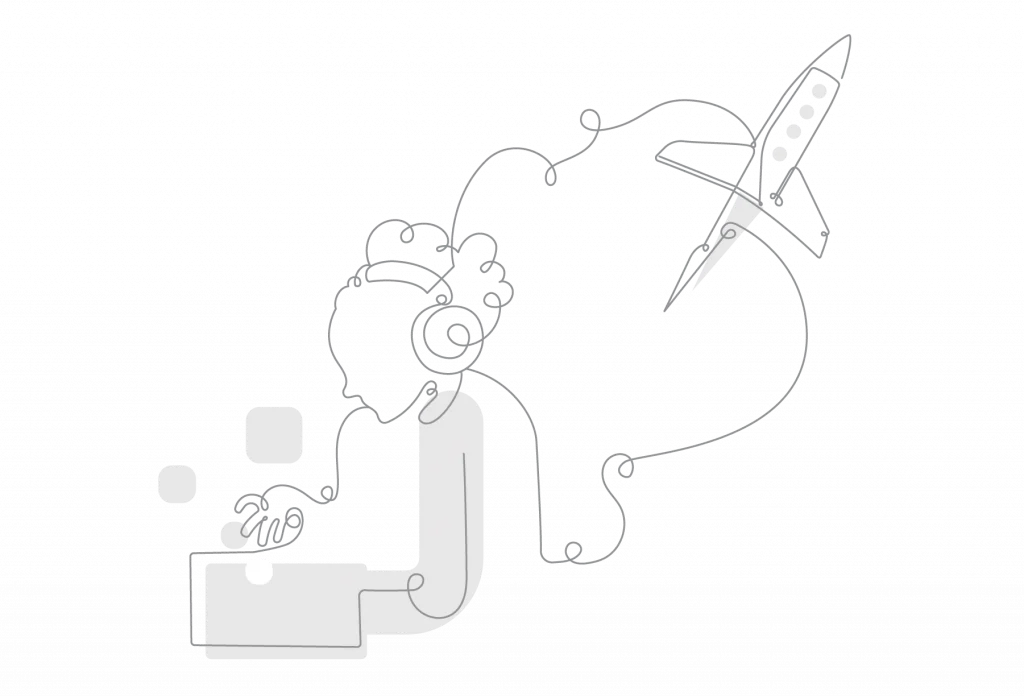
Our research
Boost Reading & Boost Lectura
Leveraging compelling storytelling and the latest research, Boost Reading supplemental instruction enables students to make better-than-expected progress, reduces students’ risk for reading difficulty, and helps close achievement gaps for multilingual learners. Boost Reading meets criteria for Tier II-Moderate Evidence as an education intervention under ESSA.
Efficacy
Research base
Boost Lectura

Explore more of our research.
Learn more about the research behind our programs.
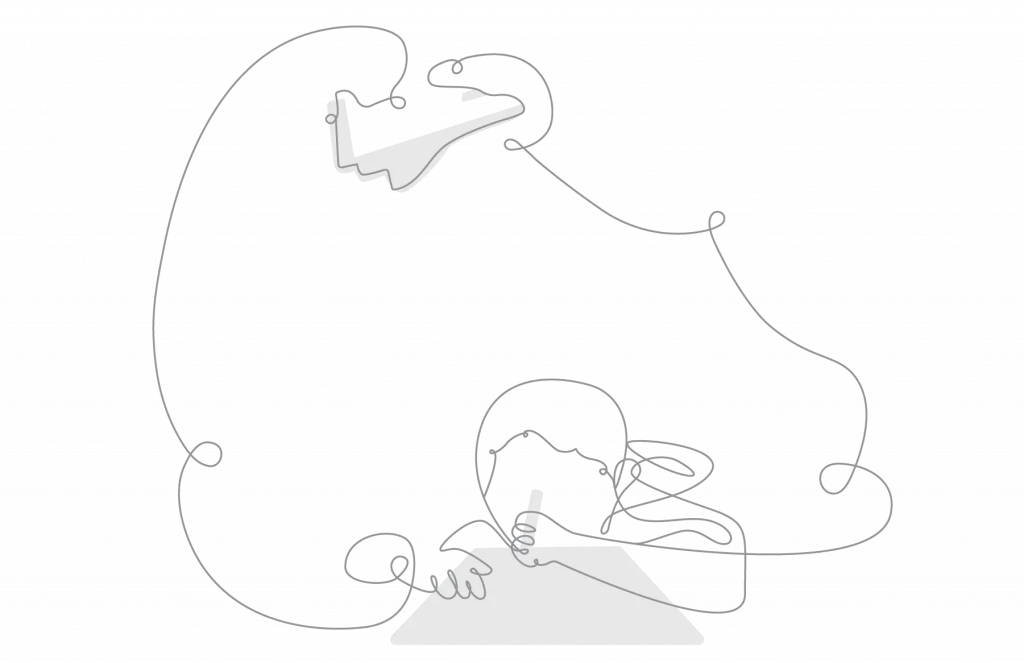
Our research
Amplify CKLA & Amplify Caminos
Using a fundamentally different approach to language arts, Amplify Core Knowledge Language Arts® (CKLA) is built on decades of early literacy research that demonstrates the importance of wide-ranging background knowledge and explicit and systematic instruction in foundational skills. Increasingly more districts are choosing Amplify CKLA because they know they’ll see results.
Amplify CKLA meets the criteria for Tier I-Strong Evidence as an education intervention under ESSA.
Efficacy
[TIER I ESSA EVIDENCE] Building knowledge boosts comprehension: Amplify CKLA outperformed a control group on proximal and standardized tests.
An evaluation of Core Knowledge curriculum in charter schools:
Reading scores significantly improved and income-based gaps were eliminated.
NYC CKLA early literacy pilot: CKLA students’ literacy gains more than doubled those of students at demographically similar schools.
AZ CKLA efficacy research report: CKLA significantly improved outcomes for students overall, as well as economically disadvantaged and Latino students.
Case studies
Aldine Independent School District, Texas: Amplify’s early literacy suite boosts reading proficiency from 30% to 50%.
Allen Parish School District, Louisiana: After just one year, student reading proficiency rose from 58% to 80%.
Oak Harbor School District, Washington: Kindergarten reading proficiency improved by 19% and Grade 1 by 31% in 3 years.
West Jefferson Hills School District, Pennsylvania: Students reach the 98th percentile among their peers nationwide after implementing Amplify.
Salemberg Elementary School, North Carolina: Students made 80–100 composite points of growth in one semester.
Euclid City School District, Ohio: Amplify CKLA, Boost Reading, and mCLASS boosted Euclid Kindergarten reading proficiency from 10% to 57% and Grade 1 from 20% to 37% in one school year.
Gallia County Local School District, Ohio: With Amplify CKLA, the number of Gallia County students needing a Reading Improvement Plan dropped from 46% to 27% in one year.
Research base
Amplify Caminos
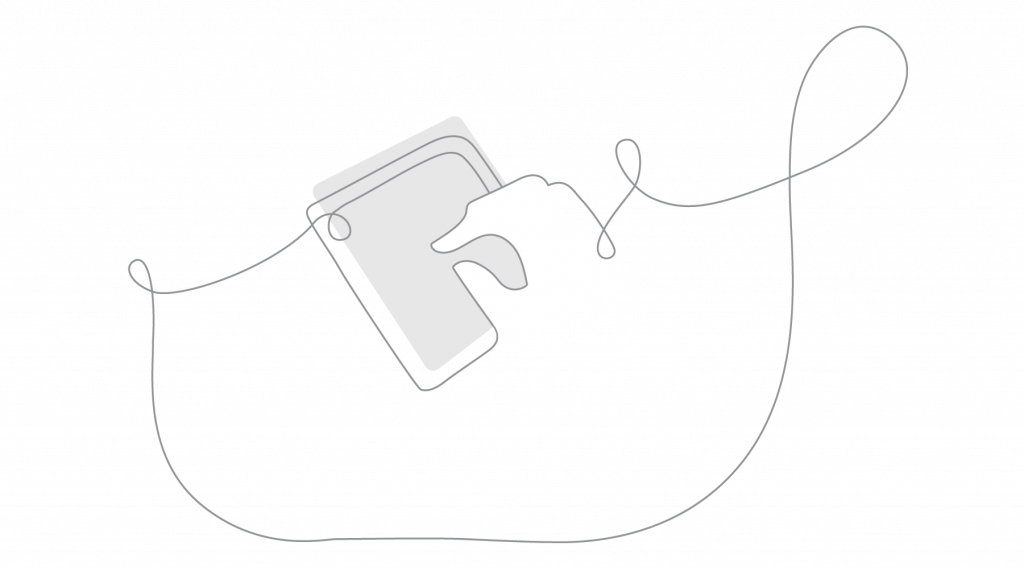
Explore more of our research.
Learn more about the research behind our programs.
Our purpose
Dear teachers,
You do a job that is nearly impossible and utterly essential.
We are in your corner—extending your reach, saving you time, and enhancing your understanding of each student.
Thank you for working with us to craft rigorous and riveting learning experiences for your classroom. We share your goal of inspiring all students to think deeply, creatively, and for themselves.
Sincerely,
Amplify
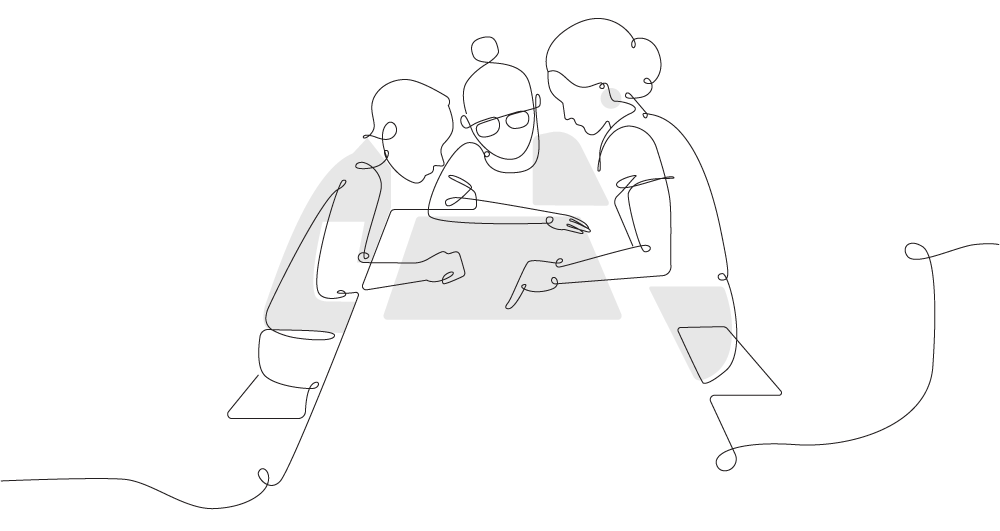

Our commitment
Our goal is to make education, and thereby the world, more equitable and accessible.
We create education products that celebrate difference in life and thought as well as ideals we hold in common.
We help teachers craft rigorous learning experiences that reflect the diverse histories, cultures, and identities their students bring to the classroom.
We also help teachers support their students in constructing, questioning, expanding, and strengthening knowledge of where they come from and who they are becoming.
To do this, we hire and develop people with the broadest range of talents, life stories, and experiences, and together we build a diverse and inclusive culture.
Leading the way in high-quality, next-generation curriculum and assessments
Amplify collaborates with educators to create learning experiences that are rigorous and riveting for all students. Amplify creates K–12 core and supplemental curriculum, assessment, and intervention programs for today’s students.
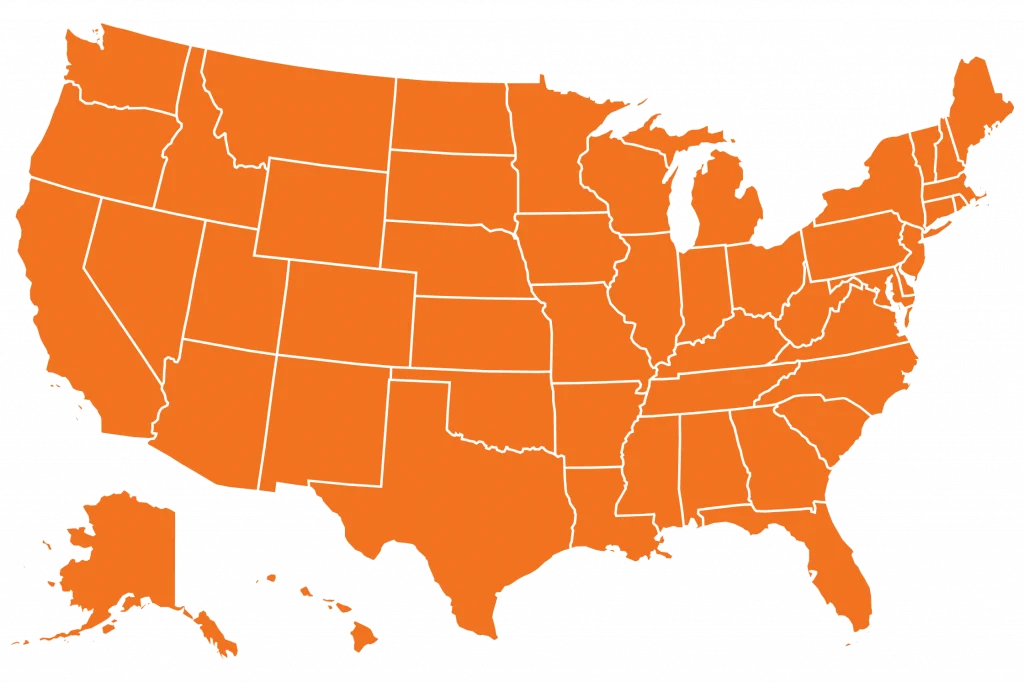
Our impact
A pioneer in K–12 education since 2000, Amplify is leading the way in next-generation curriculum and formative assessment. Today, Amplify serves 15 million students in all 50 states. Read about our purpose and commitment.
Leadership
Amplify’s executive team includes proven leaders from the fields of education, technology, business, and media.

Our team
We are passionate about the work we do at Amplify. If you want to help make schools great places to teach and exciting places to learn, please get in touch.
A purpose-driven culture
At Amplify, we enable all students and teachers to access the highest quality instructional materials. This purpose informs everything we do every day. To this end, we hire and develop talented people with the broadest range of skills, life stories, and experiences, and together we build a purpose-driven, diverse, and inclusive culture.

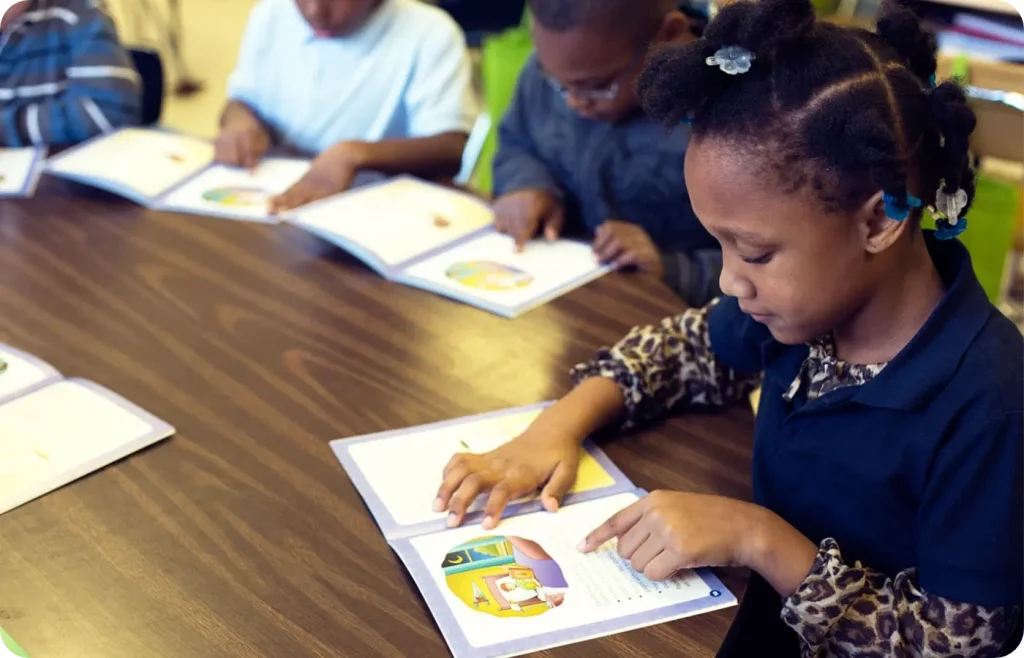
Our programs
Our captivating core and supplemental programs in ELA, math, and science support teachers in engaging all their students in rigorous learning and inspiring them to think deeply, creatively, and for themselves. Our formative assessment products help teachers provide the targeted instruction students need to build a strong foundation in early reading and math.
Careers
We’re looking for innovators and optimists to join us in developing next-generation curriculum and assessment programs for K–12 schools.
Who we are
Remote first. Brooklyn based. In person sometimes. Amplify is powered by a collaborative team of education, technology, and creative professionals who develop next-generation programs that inspire teachers and students to do their best work. Apply for one of our open positions.
People and culture
Amplify is a purpose-driven community where diverse, cross-functional teams work together to create high-quality programs.
Share our view.
With headquarters in Brooklyn’s DUMBO neighborhood, we’re at the center of New York’s thriving tech and creative community.


Get inspired.
We take an agile approach that enables us to adapt our programs to the needs of teachers and students. Collaboration helps us stay innovative.
Meet the team.
Our common purpose drives us to work across disciplines to develop next-generation solutions for the classroom. Meet some of our team members.


Leadership
Amplify’s leadership includes executives and board members from the fields of education, technology, design, business, and media.
Hiring practices
We hire and develop people with the broadest range of talents, life stories, and experiences, and together we build a cohesive team. We follow fair hiring practices and create an environment where team members feel valued, empowered, and heard.

Amplify workplace awards
What we offer
Amplify employees report feeling engaged and eager to come to work every day. They’re motivated by our mission of improving the lives of teachers and students. And learning isn’t just for the students we serve—we are dedicated to providing our employees opportunities for ongoing growth. Explore our benefits in detail.
Full benefits
Our robust suite of health insurance options includes health, dental, and vision coverage for spouses, domestic partners, and children—and becomes effective on your date of hire. We make a generous contribution to all employee HSA plans, which can be used to cover eligible health expenses. We also offer unlimited paid time off, a 401(k) plan with an employer match, long- and short-term disability, employer-sponsored employee life insurance, and a pre-tax commuter program. We also offer paid parental leave, backup childcare for those times when your regular care falls through, and backup eldercare to take care of those who supported you when you needed it most. On top of all that, we also provide our full-time employees with a robust voluntary benefits program that includes coverage options for everyone in the family, including pets.
Opportunities for inspiration
Amplify believes in the importance of supporting charitable nonprofit organizations in the communities where we live and work. We encourage our employees to support organizations that promote the advancement of equity, particularly through the welfare of children and families in the areas of education, health, and social services. One way for employees to give back is through our Volunteer Time Off program, which allows employees to take 16 hours each year to contribute to an eligible charitable or nonprofit organization. In addition, our Employee Resource Groups (ERGs) offer many opportunities to get involved in various charitable activities throughout the year.
Tuition reimbursement
Full-time employees who are enrolled in an accredited college or university course related to their areas of work are eligible to receive tuition reimbursement..
Our K–12 international education programs inspire students around the world.
At Amplify, we believe that every teacher and student deserves access to high-quality materials. That’s why we collaborate with international schools to meet their core curriculum, assessment, and intervention needs.
By providing solutions grounded in research and evidence-based practices, Amplify is making an impact on international K–12 education.
We are making an impact around the globe.
6
continents
80+
countries
900+
schools worldwide
700,000+
students globally
Amplify international education programs
The following programs are available internationally.
Amplify professional learning
From live, in-person training and coaching to online courses and virtual professional development, we offer a range of support to fit schools’ needs and educators’ busy schedules. Professional development offerings include the following:
- Launch sessions
- Strengthen sessions
- Coach sessions
- Custom packages
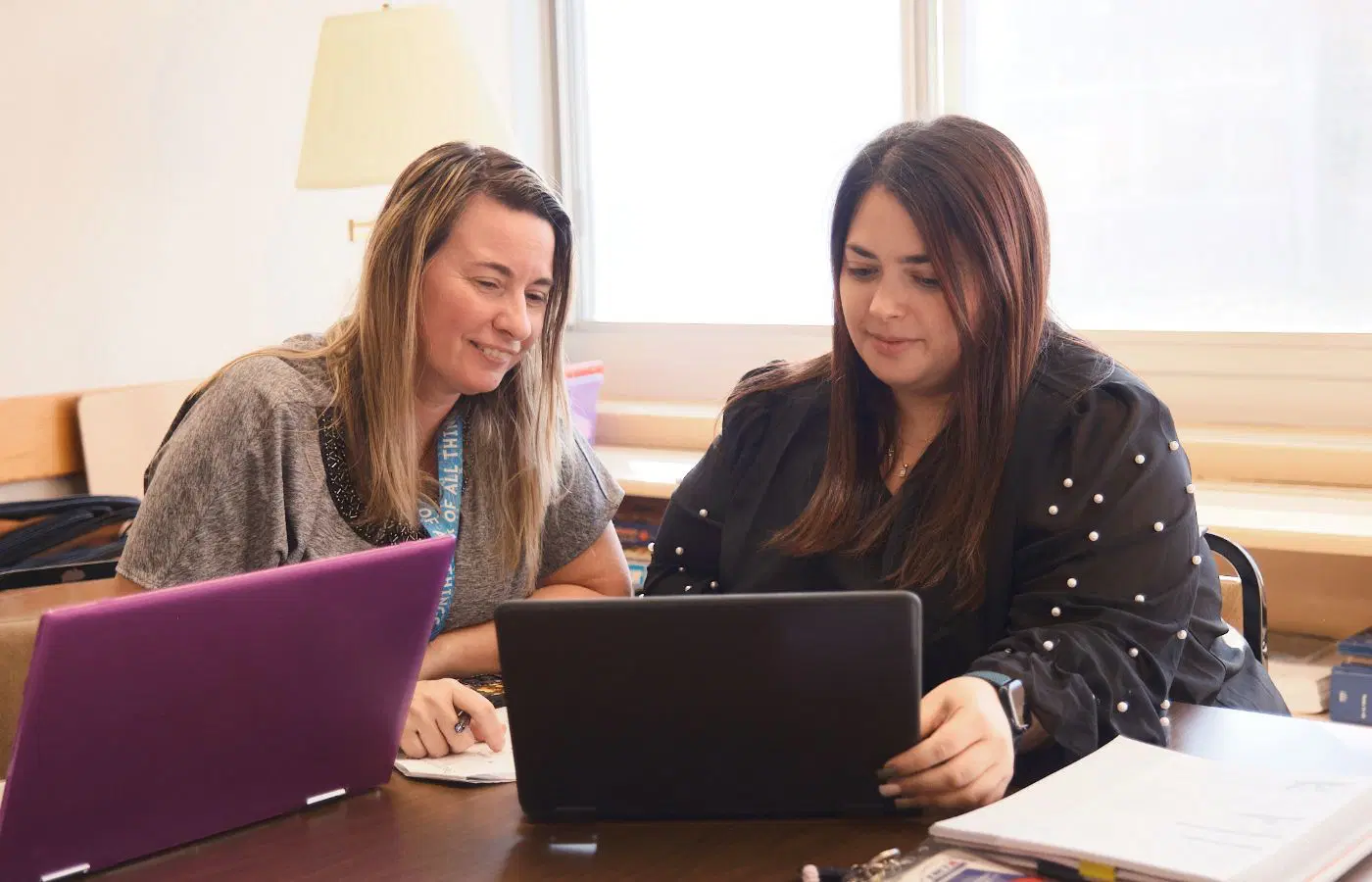
Custom development
We collaborate with governments and government agencies to localize and customize our high-quality instructional materials to ensure they align with specific education standards and frameworks.
Get in touch with our sales team to discuss how we can help your organization.
License our digital tools.
Explore Amplify’s digital tools and how they can make your programs more engaging and digital-forward.
Publishers can license the Amplify teaching and learning digital platform, which offers robust digital functionality—including digital manipulatives—that can transform print-based instructional programs into interactive, collaborative, and engaging digital experiences for teachers and students.
If you want to use our platform for commercial purposes, please contact our team.

Amplify international education support
Amplify aims to provide the best customer support throughout each stage of your journey, whether you are exploring our programs for the first time or are a long-term partner.
Below, you’ll find a quick guide on the international purchase process and expected timelines.
Simple steps to get your order processed quickly:
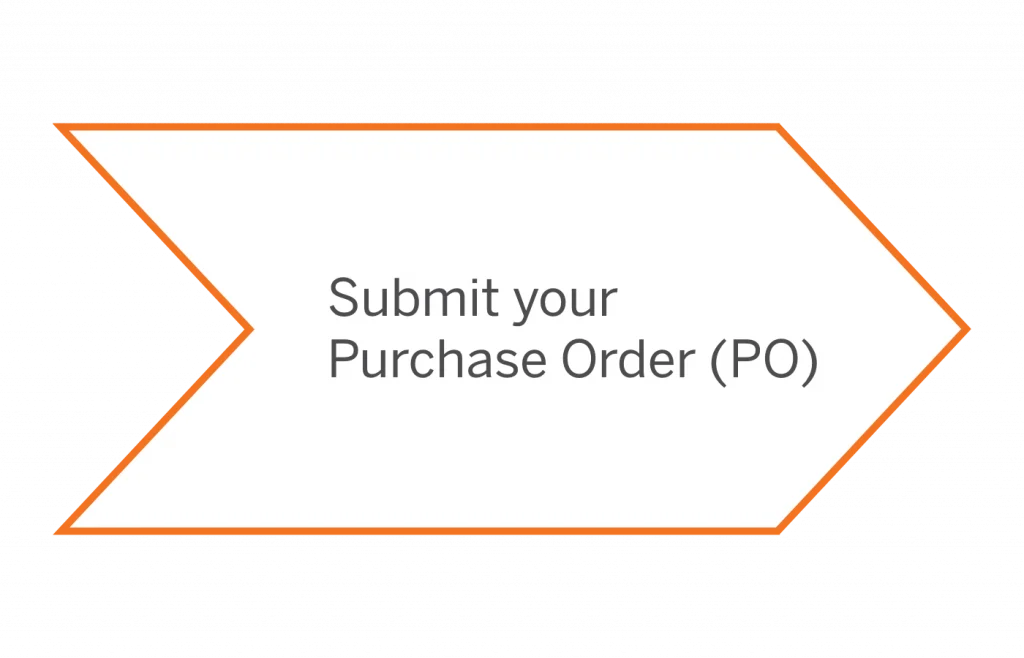

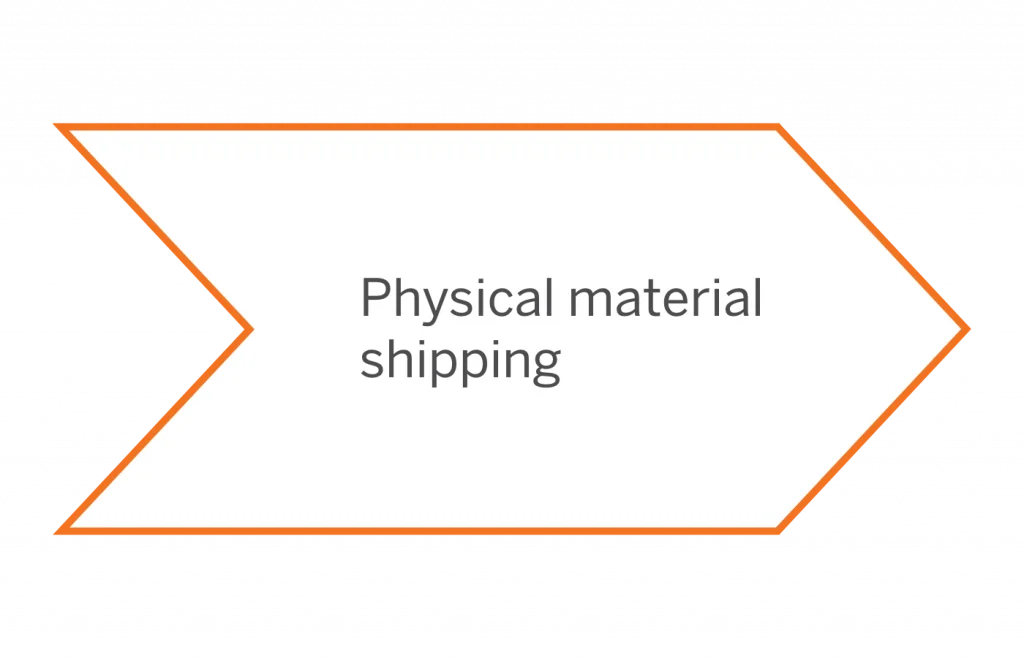
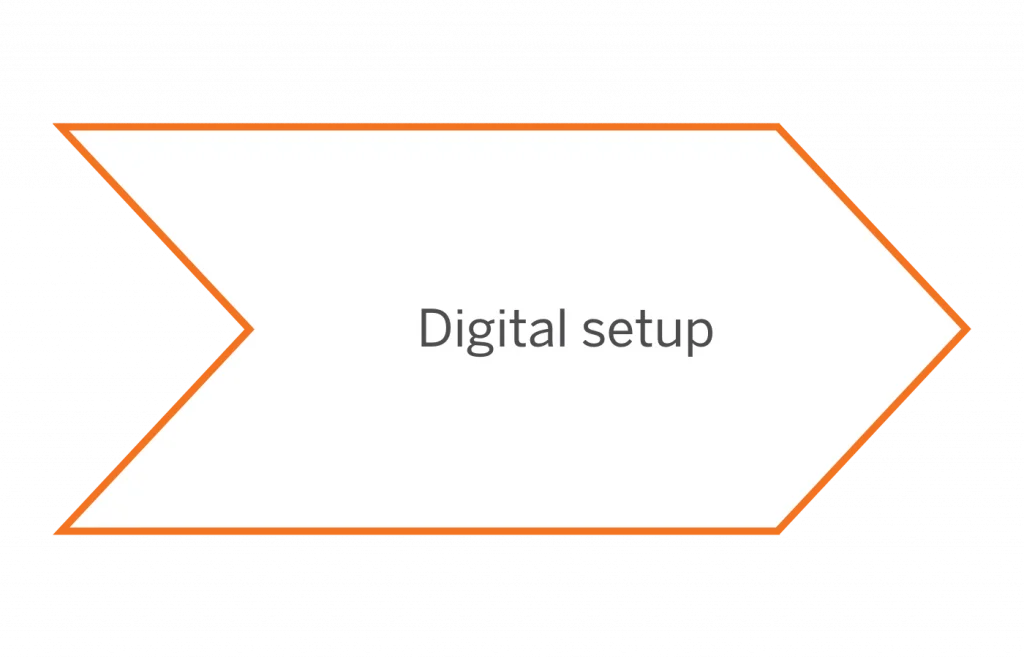
To ensure that there are no delays, we advise you to place your order 3–4 months prior to your first day of school. This should allow enough time for shipping and digital set up.

Purchasing
Our international sales team can answer your questions about our programs and services. Please fill out the form to speak with your account executive.
FILL OUT FORM

Ordering and payment
We want your purchasing experience to be as seamless as possible. Visit our customer portal to learn more about your payment options.
Please be sure to include:
- A signed PO. Don’t forget to add your PO number.
- A copy of your Price Quote.
- A copy of your Tax-Exemption Certificate.
You can also email your documents to IncomingPO@amplify.com.

Shipping physical materials
- Submit your logistics and product quantities on the Order Management Page (OMP).
- Track shipment(s) with the Shipment Status Page (SSP).

Enrollment and licensing
Please note that our team needs to review your school’s rosters for accuracy and completeness:
- This process can take up to 12 business days.
- You will be notified when the licensing process is complete!
Frequently asked questions
Payment processing time can vary, depending on chosen payment method, as well as banking institution. Please allow at least 10 business days for it to be processed. For additional support contact internationalsalessuport@amplify.com.
For digital licenses, you will need to submit your digital logistics information, which includes your school’s rosters data. Our technical onboarding team then needs to verify it for accuracy and completeness. (They might contact you, should they need any clarification.) The digital setup process can take up to four weeks to be completed. For help along the way, please use our Amplify Onboarding Hub.
To avoid delays, please submit your logistics information and product quantities on the Order Management Page as early as possible. Note that international shipping time varies from one country to another due to many factors, including different customs procedures. We are therefore unable to estimate and guarantee delivery time in each case. Amplify offers two international shipping options: 1. Your materials can be shipped from the U.S. directly to you, which will incur an international shipping and handling fee of 25% on the physical products ordered. 2. Alternatively, Amplify can ship your materials to a U.S. freight forwarder, and you can manage the shipping.
Note that setup communications will be sent to the contact person listed on the quote. This email is sometimes routed to the spam folder, so please check there as well. If you do not receive a link within five business days, please contact help@amplify.com with your quote number.
Get support
Our dedicated team members will assist you with purchasing, order fulfillment, enrollment and licensing, and more!
Our support hours are Monday through Friday,
11 a.m.–11 p.m. GMT.

New to our programs? Our international sales support team is here to help!
Email us: internationalsalessupport@amplify.com
International events
Join us for an upcoming event, webinar, or podcast. You can browse all of our events by month, or use the filter to find events close to you.
Achieve next-level literacy growth with a cohesive Science of Reading suite.
The Science of Reading programs in Amplify’s early literacy suite empower you to meet the dynamic needs of every student learning to read. Discover the programs that best fit your literacy priorities and how they work together for a seamless teaching and learning environment.
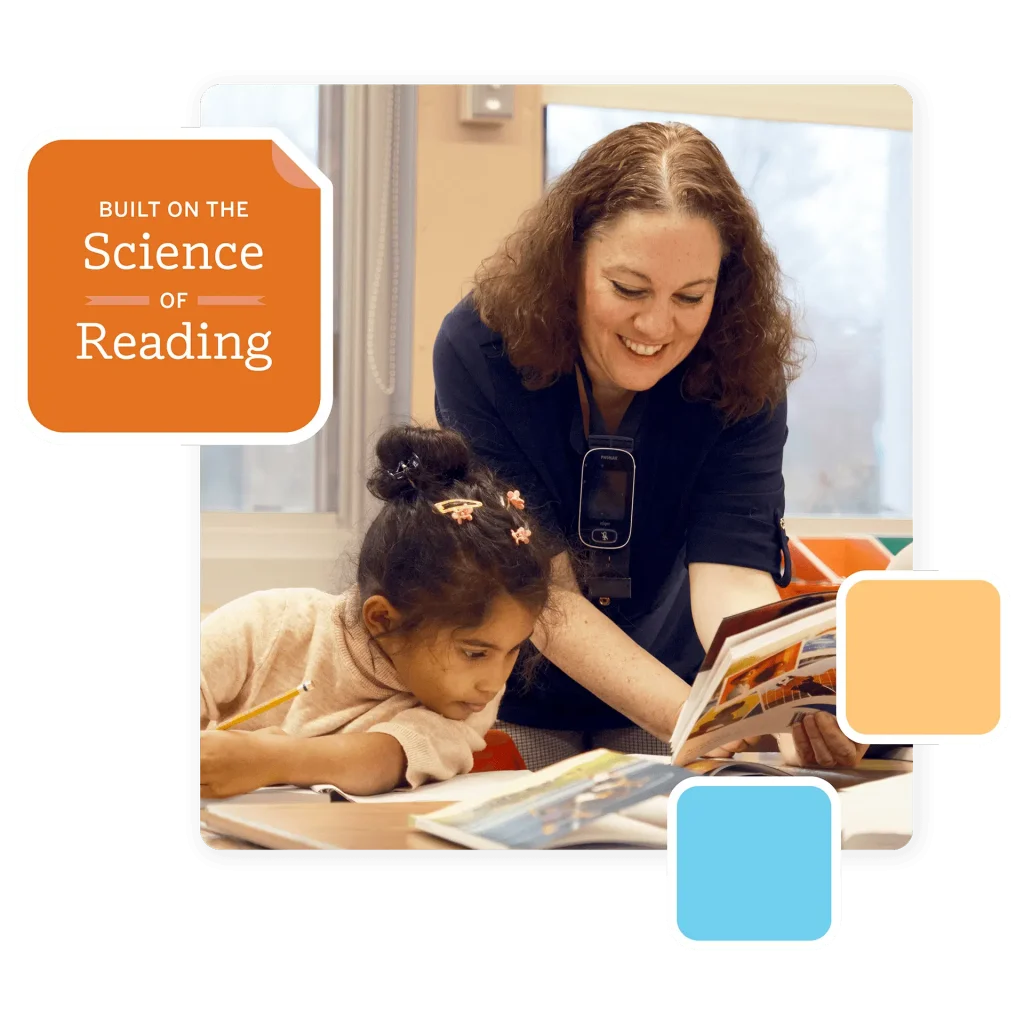

A true Science of Reading early literacy suite for grades K–5
Amplify has combined the critical elements of a Science of Reading system of assessment, core curriculum, personalized learning, and intervention. Based on 20 years of experience with the Science of Reading, this complete system saves you time and aligns your literacy practices.
- Assess with mCLASS®: A universal and dyslexia screener, powered by DIBELS® 8th Edition
- Instruct with Amplify Core Knowledge Language Arts (CKLA)®: Core curriculum to build foundational skills and knowledge
- Practice with Boost Reading: Personalized learning program to extend and reinforce core
- Intervene with mCLASS Intervention: Staff-led Tier 2 and 3 intervention for intensive support
mCLASS assessment
Powered by DIBELS 8th Edition, mCLASS is a gold-standard universal and dyslexia screener, plus a progress monitoring tool, all in one. With this comprehensive tool, you have precise one-minute measures delivered one-on-one that give you the data you can trust to make informed instructional decisions.
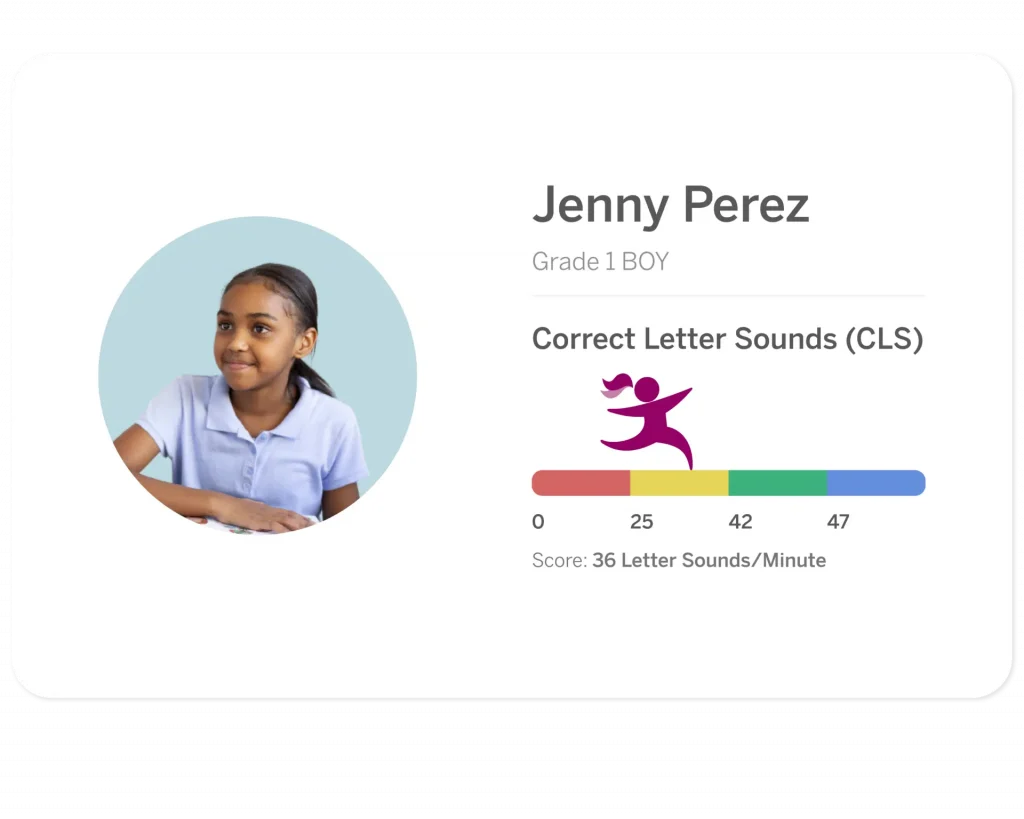
mCLASS data informs instructional needs and identifies whole-class and small-group areas of focus.
mCLASS can replace Amplify CKLA’s benchmark assessments in K–2 and can identify appropriate Amplify CKLA instruction for small groups.
Boost Reading personalized learning
Boost Reading and mCLASS integrate to personalize student practice in targeted skill areas.
mCLASS data automatically places students at the appropriate Boost Reading starting point.
You can view student progress with side-by-side mCLASS and Boost Reading data.
mCLASS assessment identifies risk early on and places students in and out of mCLASS Intervention groups.
mCLASS progress monitoring data creates intervention groups and daily lesson plans for 10-day cycles.

Amplify CKLA core curriculum
Amplify Core Knowledge Language Arts (CKLA) provides explicit, systematic foundational skills instruction combined with intentional knowledge building. Rich content spans topics in history, science, literature, and the arts to build deep background knowledge.
Amplify CKLA instructs in the same critical literacy skills measured by mCLASS, aligning your assessment and core curriculum.
mCLASS can replace Amplify CKLA’s benchmark assessments in K–2 and can identify appropriate Amplify CKLA instruction for small groups.
Boost Reading personalized learning
Boost Reading reinforces skills learned in Amplify CKLA for which students need extra practice.
The programs are aligned through a shared foundational skills scope and sequence, and Boost Reading’s comprehension practice complements Amplify CKLA’s knowledge-building approach.
mCLASS Intervention allows you to support Tier 1 instruction to get at-risk readers on track.
mCLASS Intervention lesson plans extend skills learned in Amplify CKLA curriculum.
Phonological awareness and phonics focus complements Amplify CKLA’s Skills Strand.
Boost Reading personalized learning
Boost Reading is a highly adaptive personalized reading program that reinforces the core curriculum and supports enrichment, remediation, and intervention for each student in your classroom. Robust growth and proficiency reporting provides you with actionable insights into student development.

Boost Reading and mCLASS integrate to personalize student practice in targeted skill areas.
mCLASS data automatically places students at the appropriate Boost Reading starting point.
You can view student progress with side-by-side mCLASS and Boost Reading data.
Boost Reading reinforces skills learned in Amplify CKLA for which students need extra practice.
The programs are aligned through a shared foundational skills scope and sequence.
Boost Reading’s comprehension practice complements Amplify CKLA’s knowledge-building approach.
Boost Reading and mCLASS Intervention together support intensive intervention for individuals and small groups.
The programs combine streamlined intervention lessons with an online practice component.
Small-group intervention can happen while other students practice independently in Boost Reading.
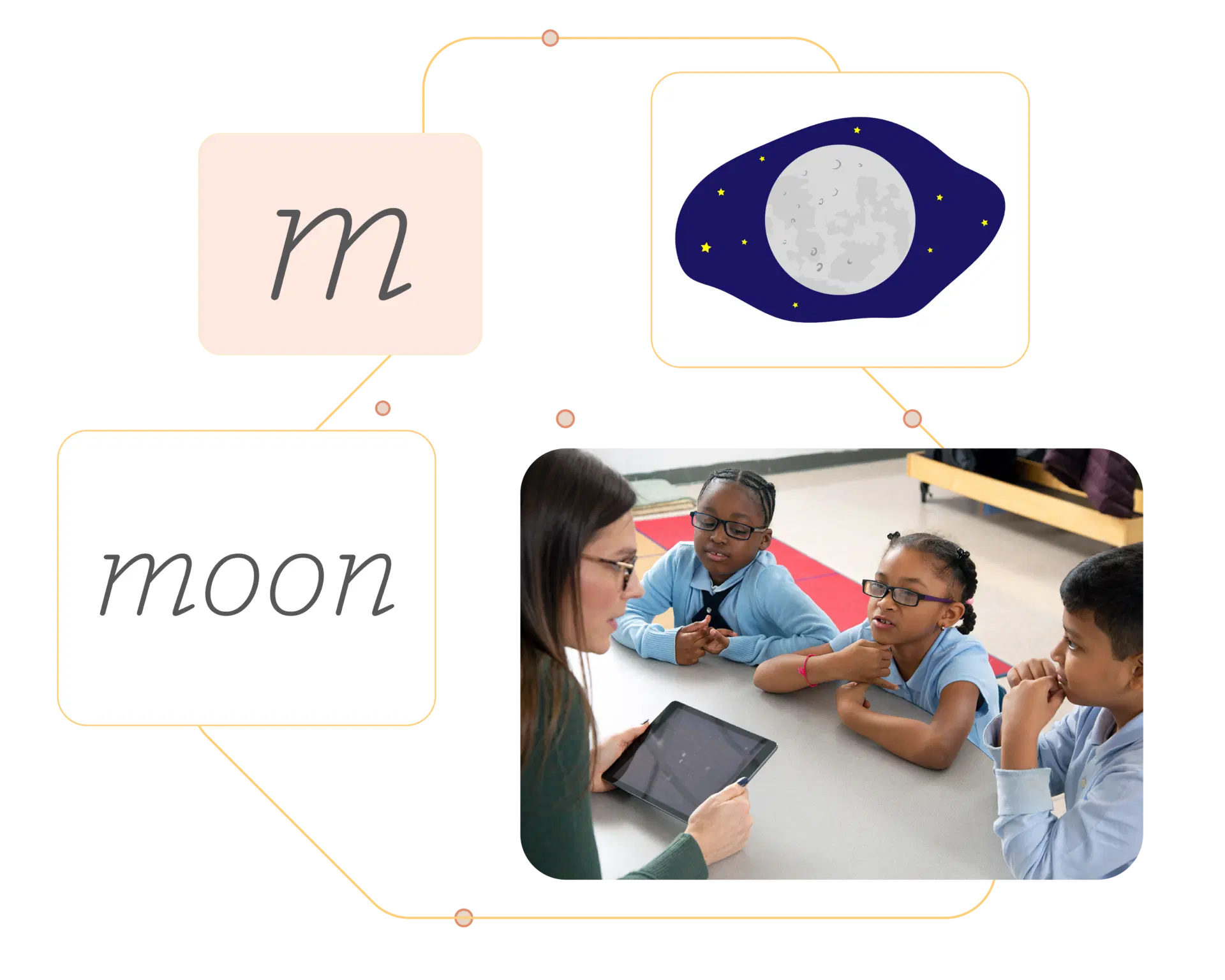
mCLASS Intervention
mCLASS Intervention is a Tier 2 and 3 targeted, staff-led intervention program made easy with automatic data-driven grouping and sequenced explicit, systematic skills lesson plans to support at-risk students.
mCLASS assessment identifies risk early on and places students in and out of mCLASS intervention groups.
mCLASS benchmark and progress monitoring data creates groups and daily lesson plans for 10-day cycles.
mCLASS Intervention allows you to support Tier 1 instruction to get at-risk readers on track.
mCLASS Intervention lesson plans extend skills learned in Amplify CKLA instruction.
Phonological awareness and phonics focus complements Amplify CKLA’s Skills Strand.
Boost Reading personalized learning
Boost Reading and mCLASS Intervention together support intensive intervention for individuals and small groups.
The programs combine streamlined intervention lessons with an online practice component.
Small-group intervention can happen while other students practice independently in Boost Reading.
The cohesive early literacy system teachers and students deserve
Support your MTSS and RTI models
A strong Multi-Tiered System of Supports (MTSS) enables you to make data-based decisions and confidently meet every student’s needs. Our integrated early literacy suite includes universal and dyslexia screening, core curriculum, personalized learning, intervention, and ongoing professional development.
Each program in the suite is directly aligned to the Response to Intervention (RTI) model of tiered instruction.


Aligned resources that do away with piecemealing
A literacy ecosystem built on the same Science of Reading principles and pedagogical foundation ensures that students experience a cohesive and reinforced literacy journey. Our programs allow you to support all students without cobbling together additional resources to fill in the gaps.
They follow an explicit and systematic structure, build knowledge, and assess and instruct on all of the foundational skills essential to literacy development.
The data you need to make informed decisions
Our universal and dyslexia screening data is predictive and reliable, and it’s aligned to the entire instructional system. It enables you to make informed decisions for whole-group, small-group, and individual instruction, as well as resource allocation at the school and district level.
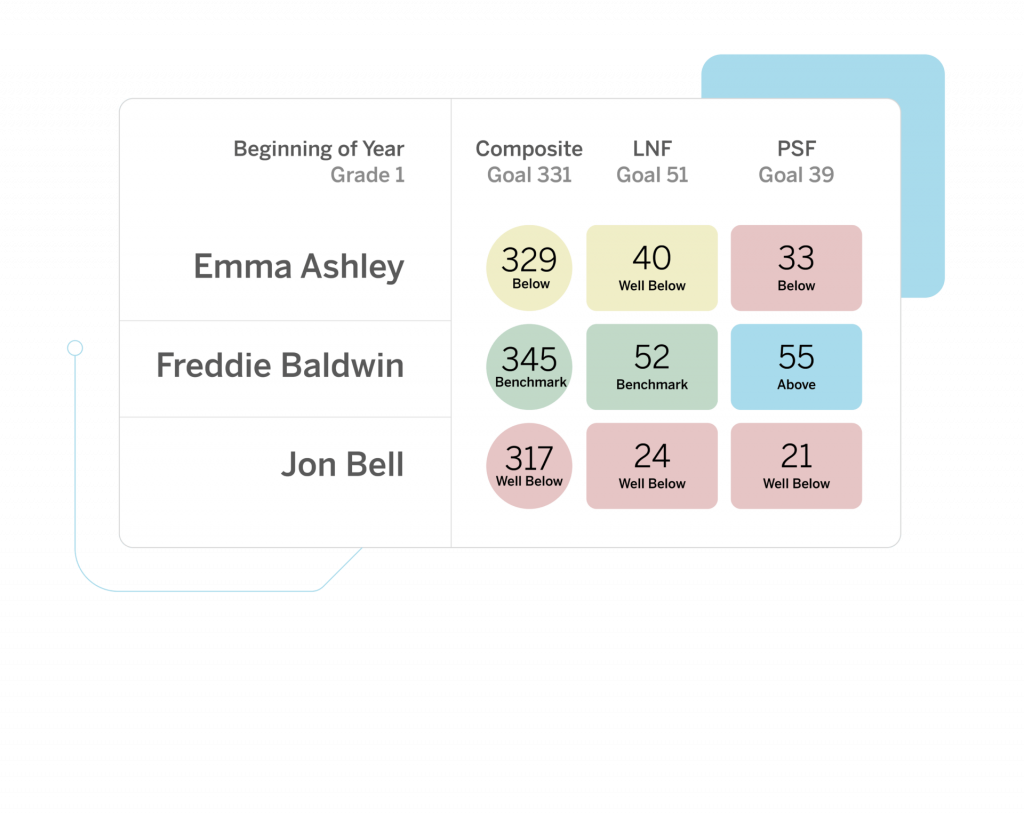
Our early literacy programs in action
Science of Reading resources
Successfully adopting new Science of Reading literacy programs will change lives. We provide extensive resources, professional learning, and complementary events and webinars so you can begin using your new programs with fidelity.
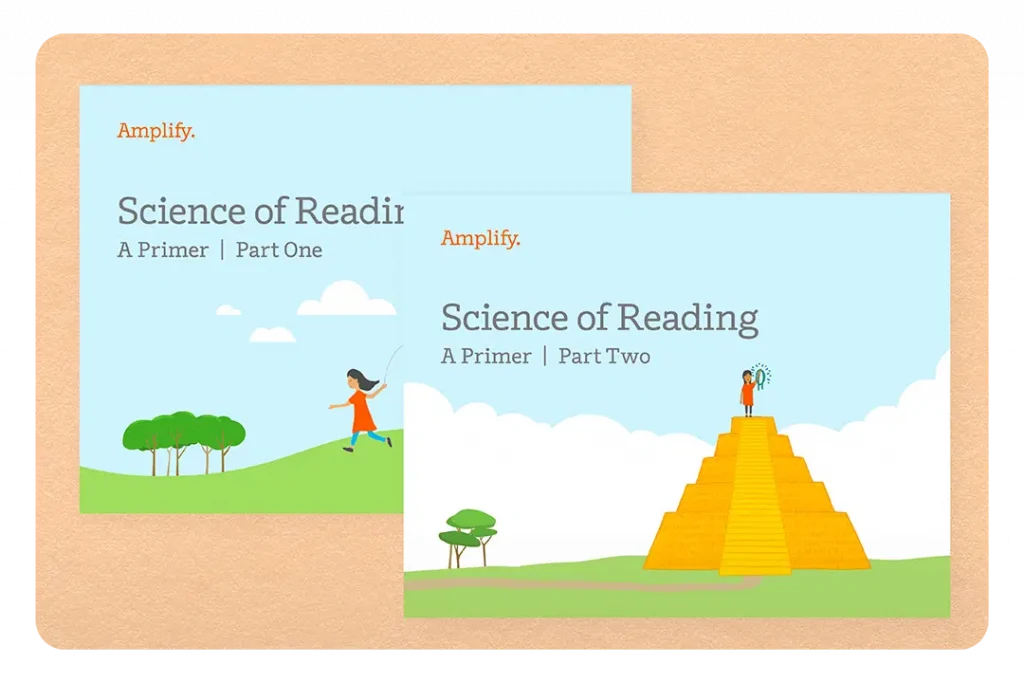
Science of Reading essentials
Champion research-based literacy programs in your classroom with our extensive Science of Reading resources.
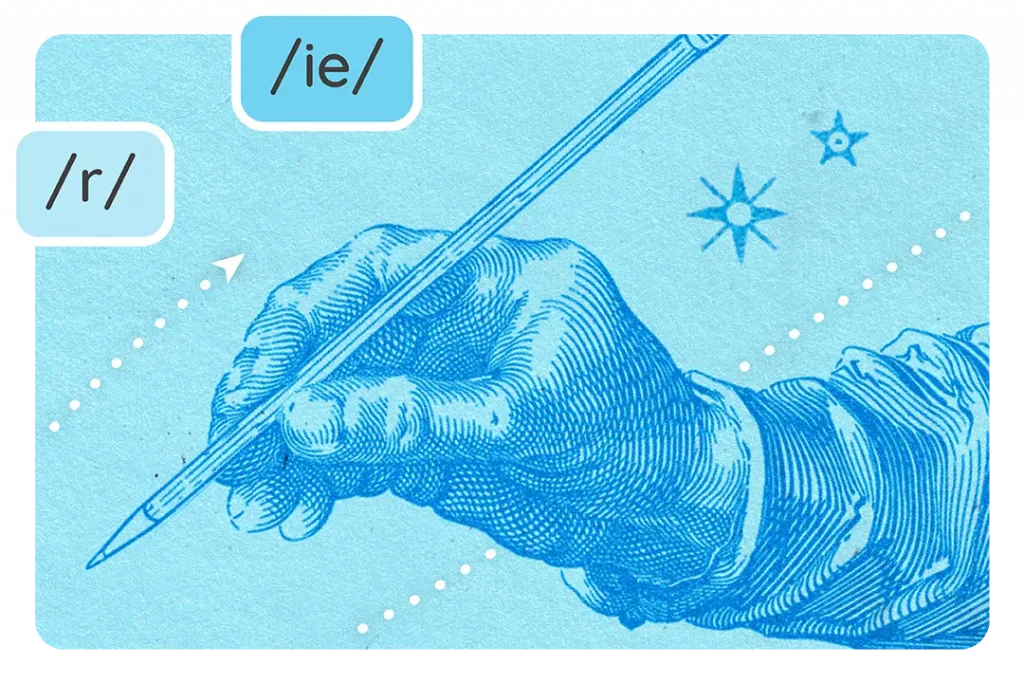
Science of Writing: A Primer
Unlock writing mastery! Explore our new primer on literacy research and the Science of Writing.
Passion for reading in Sampson County, NC
Mia and Grade 2 teacher Jenny Denning explored the power of the Amplify early literacy suite together.
Inspiring confidence in Tennessee
Kaleb and Assistant Principal Casey Price tackled reading from the ground up with Amplify’s early literacy programs.
Real results, rooted in the Science of Reading: Amplify success stories
The Science of Reading is all about the evidence we have of how our brains learn to read. We also have evidence that it works—not just from science, but from real Amplify educators using it to transform their classrooms every day.
Learn More
District spotlights
Program efficacy
More and more districts are choosing Amplify because they know they’ll see results. Amplify programs meet the criteria for Tier I (Strong) and Tier II (Moderate) evidence as education interventions under ESSA.
Amplify + North Carolina: The power of a Science of Reading curriculum
Discover how Sampson County, North Carolina, schools use Amplify’s early literacy suite based on the Science of Reading to unlock the magic of reading for their students—and ensure results.
Sparking literacy success in Tennessee
Learn how Tennessee uses Amplify programs to change lives and create new futures for kids every single day.
Explore More
Customer voices
On-demand roundtable discussions
Learn how you can start making the shift to improved literacy instruction with the Science of Reading right now by hearing from educators across the country who used Amplify programs and saw incredible results.
Amplify CKLA in Action
Rich, engaging content is at the center of Amplify Core Knowledge Language Arts® (CKLA) curriculum and instruction. Students build subject area knowledge in history, science, literature, and the arts by learning to read and write. High-quality instructional materials built on the Science of Reading simplify your planning and provide the support and resources you need.

Inside the Classroom
Kindergarten
Follow along as a kindergarten class goes through an Amplify CKLA Skills Strand lesson on tricky words. Students review sounds and spellings using Large Letter Cards, engage with Student Readers, and receive explicit instruction from their teacher in both whole- and small-group settings.
Grade 1
In this Amplify CKLA Knowledge Strand lesson, students achieve reading proficiency with complex read-alouds, exposure to background knowledge, vocabulary practice, text-based discussions, and writing activities.
Grade 4
Watch students journey through a Quest for the Core™ in the Amplify CKLA lesson, Eureka! Student Inventor. These fourth-graders work in teams, combining research, writing, and presenting skills to become master inventors.
Spotlights
Knowledge at the center
When you put knowledge at the center of learning, an amazing thing happens: students get motivated and curious for more. They learn to read, and they learn to love reading.
Foundational skills to accelerate fluency
Watch students receive targeted, explicit instruction on sounds, spellings, and word automaticity in lessons designed to teach phonological awareness, decoding, and more.
Making teachers’ lives easier with high-quality instructional materials
Hear a teacher’s account of how Amplify CKLA gives teachers all the tools and support they need no matter how much experience they have.
Student engagement
Watch how much students enjoy learning about the latest topic and how eager they are to join classroom discussions. Teachers can see the increased engagement and the program’s results.
Request a sample
Ready to take a closer look at Amplify CKLA? Complete our form to request a sample!

The next chapter in the Science of Reading
Introducing Amplify CKLA 3rd Edition, a K–5 core literacy program within Amplify’s literacy suite. For more than a decade, Amplify CKLA has transformed classrooms nationwide with its intentional knowledge building and systematic skills instruction. Available for the 2025–2026 school year, the 3rd Edition builds on this successful foundation to better support all students in becoming confident readers, writers, and thinkers. Together, let’s write the next chapter in the Science of Reading.

Amplify CKLA serves
150,000+
Classrooms
4,000,000+
Students
50
U.S. States and D.C.
Our approach
Improve outcomes with a program built on a decade of research, and that meets the strongest ESSA Tier I criteria.
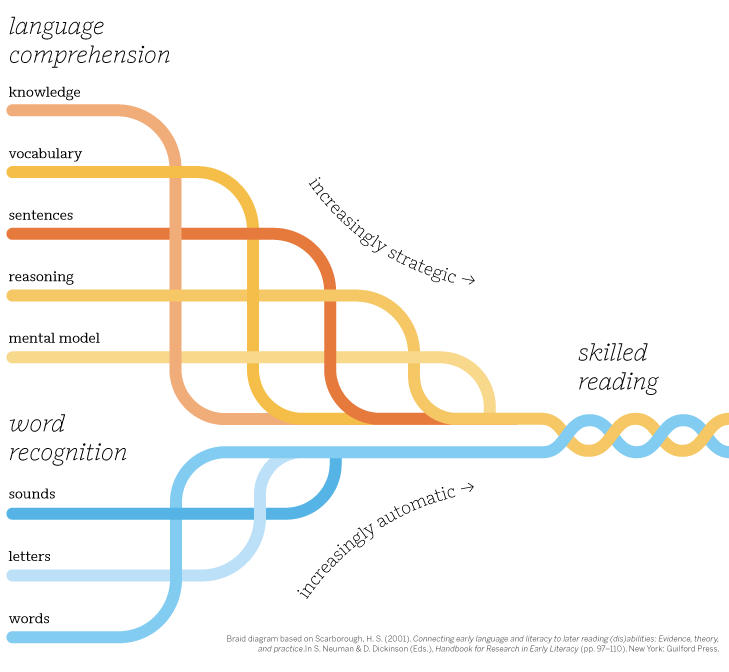
Grounded in the Science of Reading
As the original Science of Reading program, Amplify CKLA puts research into action with explicit, systematic foundational skills instruction and a proven knowledge-building sequence. In collaboration with education experts and practitioners, we provide powerful resources that deliver real results.
Background knowledge drives results
Amplify CKLA follows the Core Knowledge Sequence, a content-specific, cumulative, and coherent approach to knowledge building. This approach improves reading scores and closes achievement gaps by establishing a robust knowledge base that strengthens comprehension.
In Amplify CKLA 3rd Edition, we’ve enriched our Knowledge Sequence with a wider range of perspectives and high-quality texts in new and enhanced units.
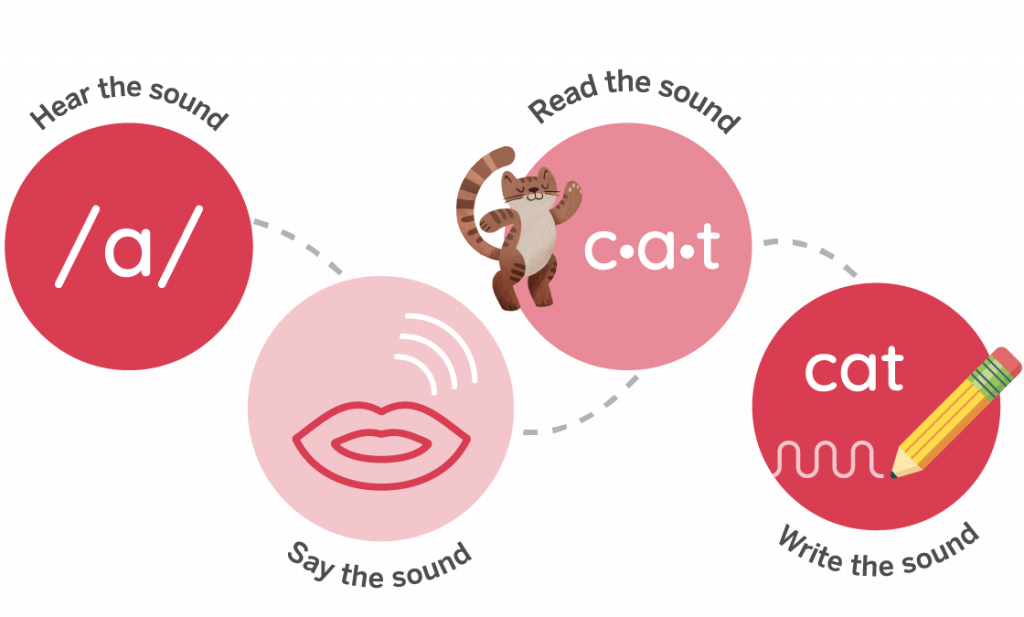
Build foundational skills for long-term success.
Students progress from simple to complex skill development starting with phonological and phonemic awareness. Instruction in Grades K–2 explicitly teaches the 150 spellings for the 44 sounds of English, following an intentional progression to ensure student success.
In our 3rd Edition, we’ve added dedicated Grade 3 foundational skills instruction that can either support core lessons or function as an intervention, based on student needs.
Daily writing deepens learning.
Grounded in the Science of Writing—the research on how kids learn to write—instruction is explicit, daily, and woven into the curriculum’s rich content. It covers both transcription (handwriting and spelling) and composition (organizing ideas into narratives) with high-impact activities like sentence-level combining and expanding, and pre-writing exercises. Writing and reading instruction are integrated so students simultaneously strengthen their communication skills, comprehension, and confidence.
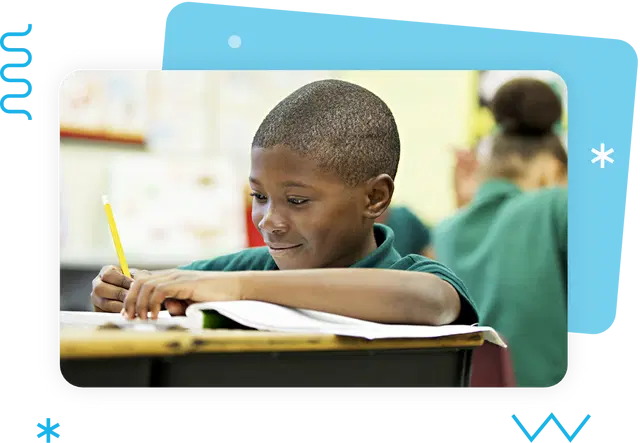
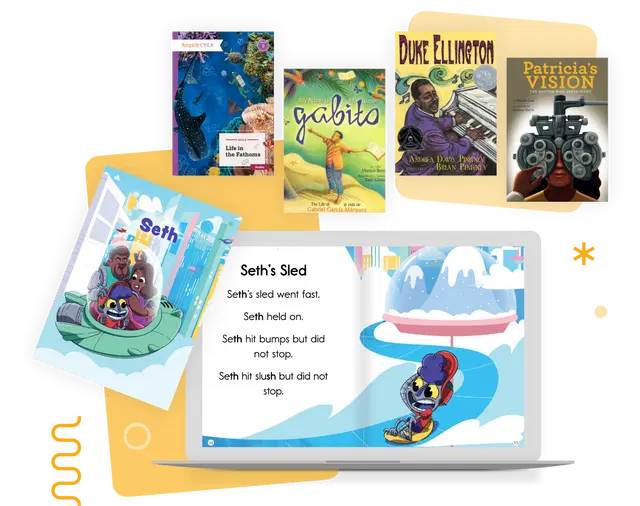
High-quality, diverse texts
Amplify CKLA students are immersed in a variety of texts—complex read-alouds, decodable chapter books, trade books, and content-rich readers—that reflect varied experiences and connect to learning goals.
Readers are 100% decodable for Grades K–2, empowering students to directly apply what they’ve learned. Novel Study units for Grades 3–5 offer a mix of contemporary and classic literature, and Culminating Research Units in every grade include a set of authentic texts and trade books.
Reach all learners with differentiated support.
Scaffolds and challenges, developed in collaboration with education experts, make content available to every student—including multilingual and English learners. With strategies embedded right in the curriculum, teachers can deliver in-the-moment, individualized instruction to meet all student needs.
For a dedicated English language development program aligned to Amplify CKLA, explore Language Studio.
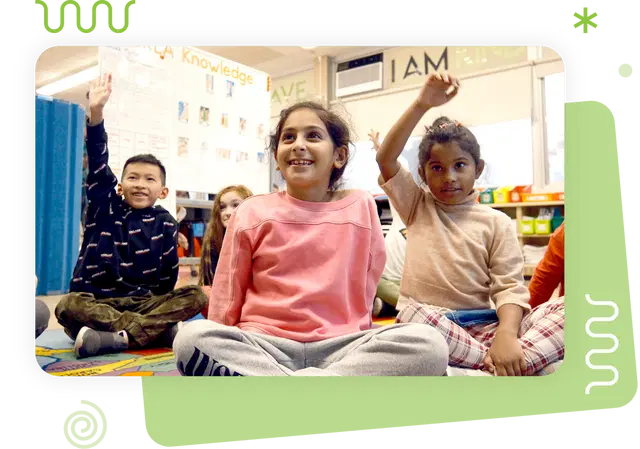
What’s included
The comprehensive resources in Amplify CKLA 3rd Edition support effective literacy instruction in every classroom.
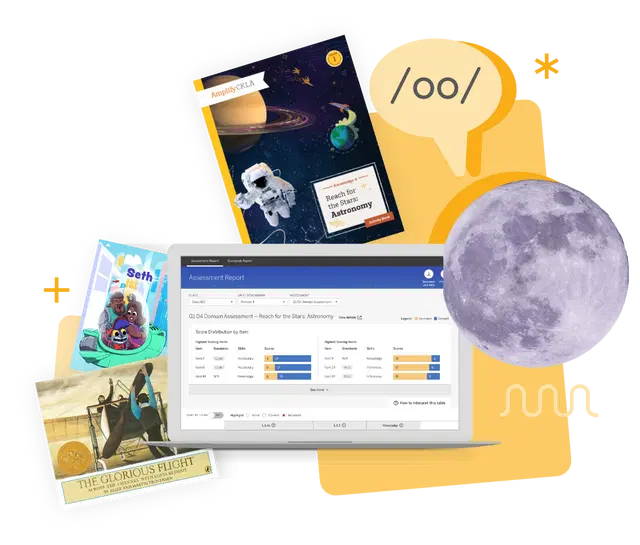
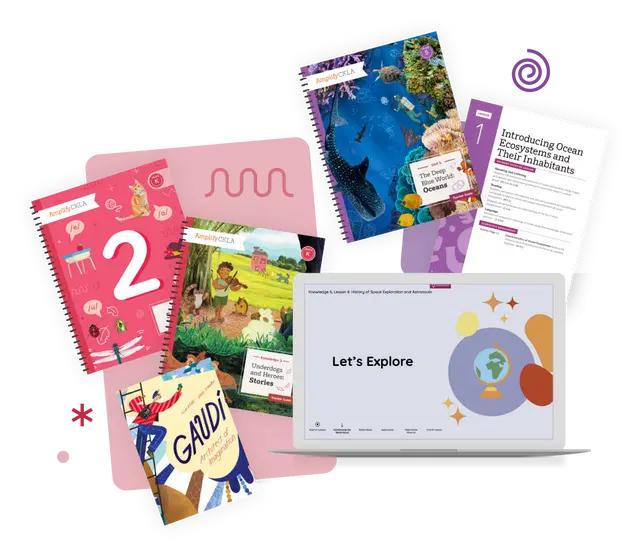
Easy-to-use teacher materials
Amplify CKLA teachers are empowered to deliver effective instruction with the following print and digital resources:
- Teacher Guides (K–5)
- Assessment Guides (K–5)
- Authentic texts and trade books (K–5)
- Knowledge Image Cards (K–2)
- Knowledge Flip Books (K–2, digital)
- Ready-made and customizable Presentation Screens (K–5, digital)
- Remediation and intervention resources (K–5)
- On-demand professional development (K–5, digital)
Immersive Amplify CKLA student resources
Amplify CKLA students stay engaged with the following print and digital resources:
- Decodable readers (K–2)
- Student Readers and novels (3–5)
- Student Activity Books (K–5)
- Poet’s Journal and Writer’s Journal (3–5)
- eReaders (K–5, digital)
- Sound Library featuring articulation videos and songs (K–2, digital)
- Skill-building practice games (K–5)
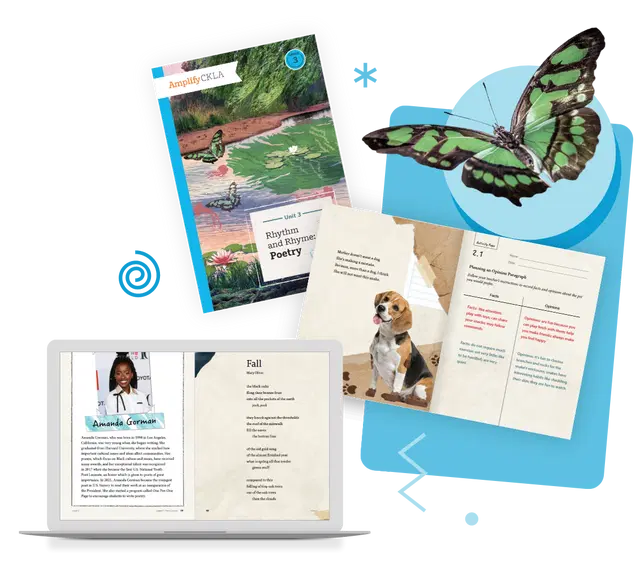
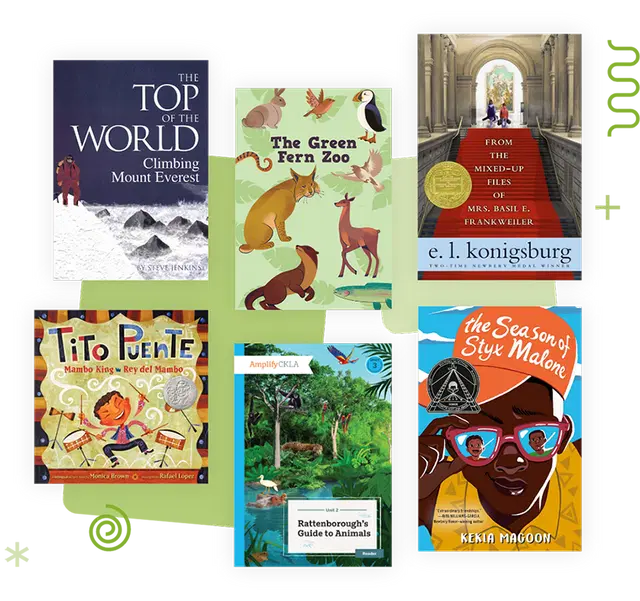
Rich literary experiences
All of the high-quality, diverse texts in Amplify CKLA connect to the curriculum, fostering your students’ curiosity and helping them learn to read with confidence.
- Trade Book Collections (K–5) inspire student research in each grade’s Culminating Research Unit.
- Classic and contemporary literature (3–5) delight students in Novel Study Units.
- Increasingly complex Student Readers (K–5) develop students’ literacy across grades.
Hands-on phonics materials
Multisensory phonics and foundational skills resources engage students with fun, varied approaches that promote mastery and build independence.
- Chaining Folders and Small Letter Cards (K)
- Read-Aloud Big Books (K–1)
- Large Letter Cards (K–2)
- Sound Cards (K–2)
- Image Cards (K–3)
- Blending Picture Cards (K)
- Consonant and Vowel Code Posters and Spelling Cards (1–2)
- Sound Library (K–2, digital)
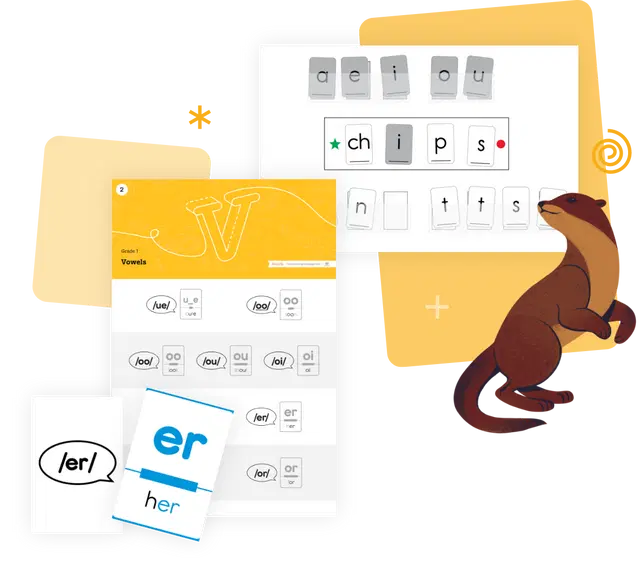
All-in-one digital platform
Our comprehensive platform simplifies your day-to-day tasks and makes it easier to plan and deliver lessons.
- Ready-made and customizable Presentation Screens
- Auto-scored digital assessments
- Standards-based reporting
- Assignable skill-building games
- Sound Library
- eReaders
Professional Development
Move beyond traditional program training with Amplify’s digital PD Library, designed to fully support your shift to the Science of Reading and Amplify CKLA. Deepen your understanding with:
- Program and planning resources
- Model lesson videos from real classrooms
- Guidance on using Amplify’s literacy suite to provide multi-tiered support
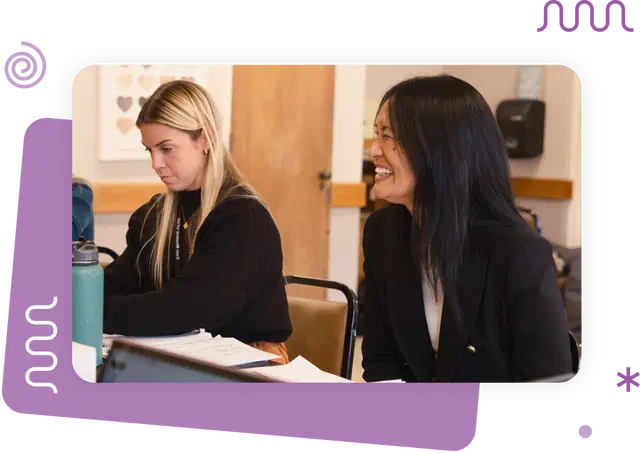
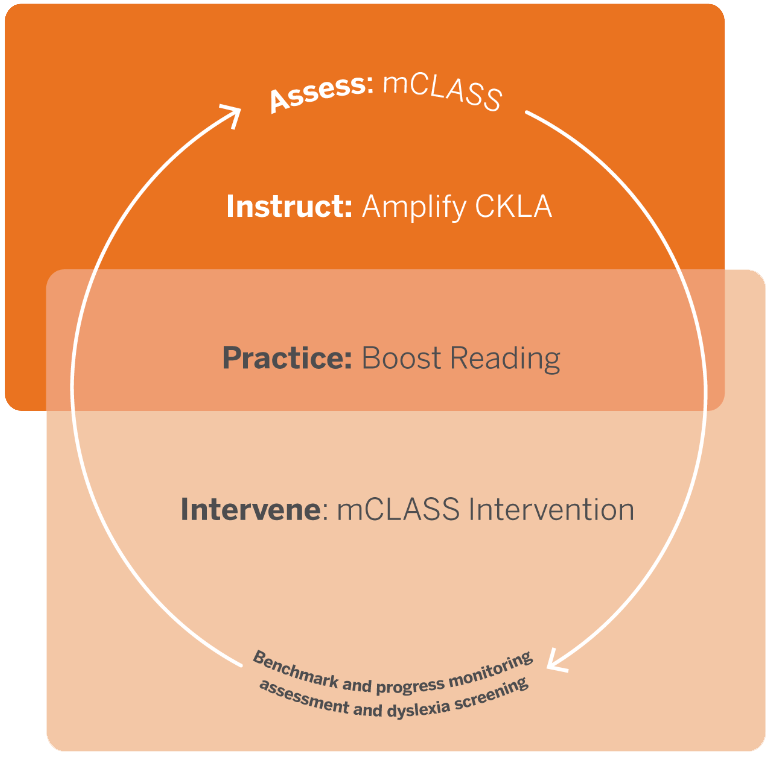
A true Science of Reading early literacy suite for Grades K–5
Amplify has combined the critical elements of a Science of Reading system: assessment, core curriculum, personalized learning, and intervention. Based on 20 years of experience with the Science of Reading, this complete system saves you time and aligns your literacy practices.
- Assess with mCLASS®: A universal and dyslexia screener, powered by DIBELS 8th Edition
- Instruct with Amplify CKLA: Core curriculum to build foundational skills and knowledge
- Practice with Boost Reading™: Personalized learning program to extend and reinforce core
- Intervene with mCLASS Intervention: Staff-led Tier 2 and 3 intervention for intensive support
Language Studio: Multilingual and English language learner support
Language Studio is Amplify CKLA’s dedicated K–5 program for multilingual and English language learners. Through daily 30-minute lessons, it strengthens reading, writing, speaking, and listening skills while reinforcing core instruction. This tailored support empowers students to confidently access grade-level content as they develop academic English.
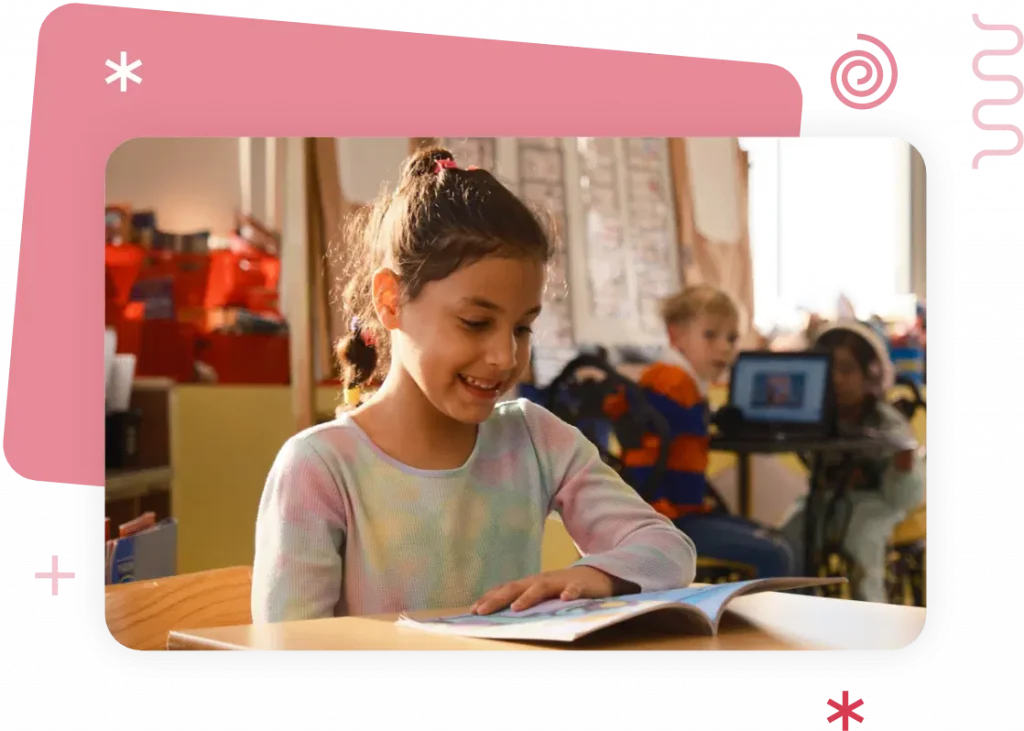
Explore more programs in Amplify’s literacy and biliteracy suite.
All of the programs in our literacy suite and our biliteracy suite are designed to support and complement each other. Learn more about our related programs:
